Frequent persons on Netherlands's street signs
countries
1193 names / 25441 streets
Juliana of the Netherlands
 587
Juliana was Queen of the Netherlands from 1948 until her abdication in 1980.
587
Juliana was Queen of the Netherlands from 1948 until her abdication in 1980.
Wilhelmina of the Netherlands
 530
Wilhelmina was Queen of the Netherlands from 1890 until her abdication in 1948. She reigned for nearly 58 years, making her the longest-reigning monarch in Dutch history, as well as the...
530
Wilhelmina was Queen of the Netherlands from 1890 until her abdication in 1948. She reigned for nearly 58 years, making her the longest-reigning monarch in Dutch history, as well as the...
Beatrix of the Netherlands
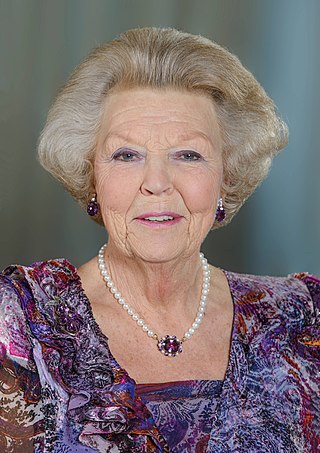 509
Beatrix is a member of the Dutch royal house who reigned as Queen of the Netherlands from 1980 until her abdication in 2013.
509
Beatrix is a member of the Dutch royal house who reigned as Queen of the Netherlands from 1980 until her abdication in 2013.
Prince Bernhard of Lippe-Biesterfeld
 437
Prince Bernhard of Lippe-Biesterfeld was Prince of the Netherlands from 6 September 1948 to 30 April 1980 as the husband of Queen Juliana. They had four daughters together, including Beatrix, who was...
437
Prince Bernhard of Lippe-Biesterfeld was Prince of the Netherlands from 6 September 1948 to 30 April 1980 as the husband of Queen Juliana. They had four daughters together, including Beatrix, who was...
Princess Irene of the Netherlands
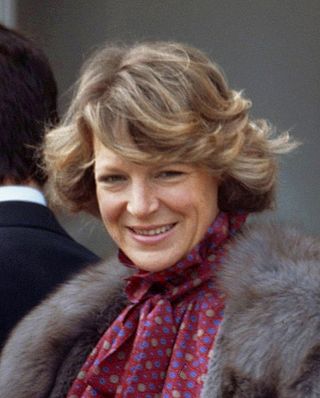 381
Princess Irene of the Netherlands is the second child of Queen Juliana of the Netherlands and Prince Bernhard.
381
Princess Irene of the Netherlands is the second child of Queen Juliana of the Netherlands and Prince Bernhard.
Emma of Waldeck and Pyrmont
 344
Emma of Waldeck and Pyrmont was Queen of the Netherlands and Grand Duchess of Luxembourg as the wife of King-Grand Duke William III. An immensely popular member of the Dutch Royal Family, Queen Emma...
344
Emma of Waldeck and Pyrmont was Queen of the Netherlands and Grand Duchess of Luxembourg as the wife of King-Grand Duke William III. An immensely popular member of the Dutch Royal Family, Queen Emma...
Princess Christina of the Netherlands
 326
Princess Christina of the Netherlands was the youngest of four daughters of Queen Juliana of the Netherlands and Prince Bernhard of Lippe-Biesterfeld. She taught singing in New York and was a...
326
Princess Christina of the Netherlands was the youngest of four daughters of Queen Juliana of the Netherlands and Prince Bernhard of Lippe-Biesterfeld. She taught singing in New York and was a...
Willem-Alexander of the Netherlands
 284
Willem-Alexander is King of the Netherlands.
284
Willem-Alexander is King of the Netherlands.
Prince Henry of the Netherlands (1820–1879)
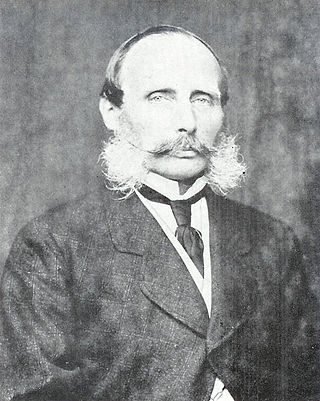 257
Prince William Frederick Henry of the Netherlands was the third son of King William II of the Netherlands and his wife, Grand Duchess Anna Pavlovna of Russia. He was born at Soestdijk Palace.
257
Prince William Frederick Henry of the Netherlands was the third son of King William II of the Netherlands and his wife, Grand Duchess Anna Pavlovna of Russia. He was born at Soestdijk Palace.
Maurice, Prince of Orange
 204
Maurice of Orange was stadtholder of all the provinces of the Dutch Republic except for Friesland from 1585 at the earliest until his death in 1625. Before he became Prince of Orange upon the death...
204
Maurice of Orange was stadtholder of all the provinces of the Dutch Republic except for Friesland from 1585 at the earliest until his death in 1625. Before he became Prince of Orange upon the death...
Rembrandt
 199
Rembrandt Harmenszoon van Rijn, usually simply known as Rembrandt, was a Dutch Golden Age painter, printmaker, and draughtsman. He is generally considered one of the greatest visual artists in the...
199
Rembrandt Harmenszoon van Rijn, usually simply known as Rembrandt, was a Dutch Golden Age painter, printmaker, and draughtsman. He is generally considered one of the greatest visual artists in the...
House of Nassau
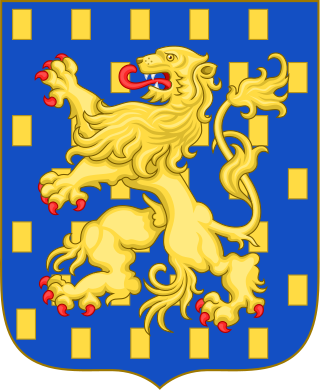 175
The House of Nassau is a diversified aristocratic dynasty in Europe. It is named after the lordship associated with Nassau Castle, located in present-day Nassau, Rhineland-Palatinate, Germany. With...
175
The House of Nassau is a diversified aristocratic dynasty in Europe. It is named after the lordship associated with Nassau Castle, located in present-day Nassau, Rhineland-Palatinate, Germany. With...
Frans Hals
 160
Frans Hals the Elder was a Dutch Golden Age painter, chiefly of individual and group portraits and of tronies, who lived and worked in Haarlem.
160
Frans Hals the Elder was a Dutch Golden Age painter, chiefly of individual and group portraits and of tronies, who lived and worked in Haarlem.
Princess Margriet of the Netherlands
 156
Princess Margriet of the Netherlands is the third daughter of Queen Juliana and Prince Bernhard. As an aunt of the reigning monarch, King Willem-Alexander, she is a member of the Dutch Royal House...
156
Princess Margriet of the Netherlands is the third daughter of Queen Juliana and Prince Bernhard. As an aunt of the reigning monarch, King Willem-Alexander, she is a member of the Dutch Royal House...
Johannes Vermeer
 147
Johannes Vermeer was a Dutch Baroque Period painter who specialized in domestic interior scenes of middle-class life. He is considered one of the greatest painters of the Dutch Golden Age. During his...
147
Johannes Vermeer was a Dutch Baroque Period painter who specialized in domestic interior scenes of middle-class life. He is considered one of the greatest painters of the Dutch Golden Age. During his...
Vincent van Gogh
 146
Vincent Willem van Gogh was a Dutch Post-Impressionist painter who is among the most famous and influential figures in the history of Western art. In just over a decade, he created approximately 2100...
146
Vincent Willem van Gogh was a Dutch Post-Impressionist painter who is among the most famous and influential figures in the history of Western art. In just over a decade, he created approximately 2100...
Herman Schaepman
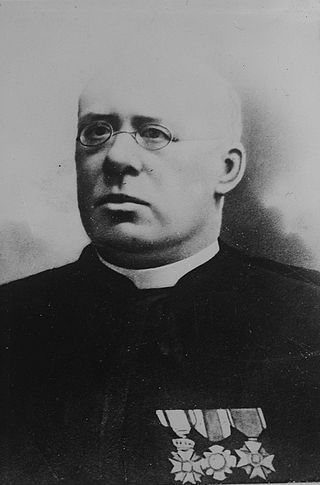 146
Herman Johannes Aloysius Maria Schaepman was a Dutch priest, politician and poet.
146
Herman Johannes Aloysius Maria Schaepman was a Dutch priest, politician and poet.
Johan Rudolph Thorbecke
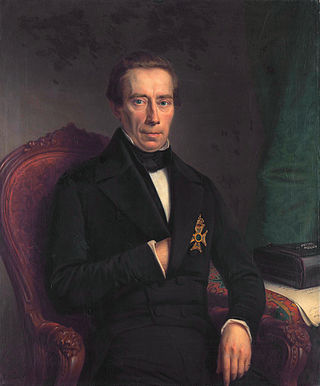 144
Johan Rudolph Thorbecke was a Dutch liberal statesman, one of the most important Dutch politicians of the 19th century. Thorbecke is best known for heading the commission that drafted the revision of...
144
Johan Rudolph Thorbecke was a Dutch liberal statesman, one of the most important Dutch politicians of the 19th century. Thorbecke is best known for heading the commission that drafted the revision of...
Michiel de Ruyter
 138
Michiel Adriaenszoon de Ruyter was a Dutch admiral. His achievements with the Dutch Navy during the Anglo-Dutch Wars earned him the reputation as one of the most skilled naval commanders in history.
138
Michiel Adriaenszoon de Ruyter was a Dutch admiral. His achievements with the Dutch Navy during the Anglo-Dutch Wars earned him the reputation as one of the most skilled naval commanders in history.
Prince Claus of the Netherlands
 135
Prince Claus of the Netherlands, Jonkheer van Amsberg was Prince of the Netherlands from 30 April 1980 until his death in 2002 as the husband of Queen Beatrix.
135
Prince Claus of the Netherlands, Jonkheer van Amsberg was Prince of the Netherlands from 30 April 1980 until his death in 2002 as the husband of Queen Beatrix.
Ludwig van Beethoven
 132
Ludwig van Beethoven was a German composer and pianist. He is one of the most revered figures in the history of Western music; his works rank among the most performed of the classical music...
132
Ludwig van Beethoven was a German composer and pianist. He is one of the most revered figures in the history of Western music; his works rank among the most performed of the classical music...
William the Silent
 132
William the Silent or William the Taciturn, more commonly known in the Netherlands as William of Orange, was the leader of the Dutch revolt against the Spanish Habsburgs that set off the Eighty...
132
William the Silent or William the Taciturn, more commonly known in the Netherlands as William of Orange, was the leader of the Dutch revolt against the Spanish Habsburgs that set off the Eighty...
Wolfgang Amadeus Mozart
 132
Wolfgang Amadeus Mozart was a prolific and influential composer of the Classical period. Despite his short life, his rapid pace of composition resulted in more than 800 works representing virtually...
132
Wolfgang Amadeus Mozart was a prolific and influential composer of the Classical period. Despite his short life, his rapid pace of composition resulted in more than 800 works representing virtually...
Joost van den Vondel
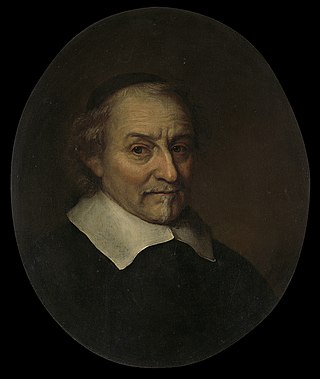 130
Joost van den Vondel was a Dutch playwright, poet, literary translator and writer. He is generally regarded as the greatest writer in the Dutch language as well as an important figure in the history...
130
Joost van den Vondel was a Dutch playwright, poet, literary translator and writer. He is generally regarded as the greatest writer in the Dutch language as well as an important figure in the history...
Jan Steen
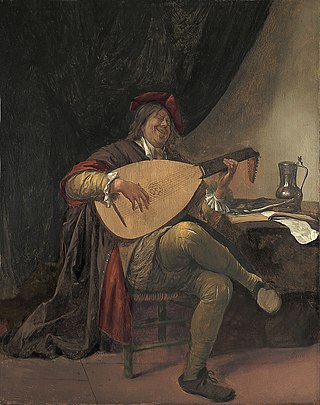 127
Jan Havickszoon Steen was a Dutch Golden Age painter, one of the leading genre painters of the 17th century. His works are known for their psychological insight, sense of humour and abundance of...
127
Jan Havickszoon Steen was a Dutch Golden Age painter, one of the leading genre painters of the 17th century. His works are known for their psychological insight, sense of humour and abundance of...
John William Friso
 126
John William Friso became the (titular) Prince of Orange in 1702. He was the Stadtholder of Friesland and Groningen in the Dutch Republic until his death by accidental drowning in the Hollands Diep...
126
John William Friso became the (titular) Prince of Orange in 1702. He was the Stadtholder of Friesland and Groningen in the Dutch Republic until his death by accidental drowning in the Hollands Diep...
Paulus Potter
 125
Paulus Potter was a Dutch painter who specialized in animals within landscapes, usually with a low vantage point.
125
Paulus Potter was a Dutch painter who specialized in animals within landscapes, usually with a low vantage point.
Karel Doorman
 125
Karel Willem Frederik Marie Doorman was a Dutch naval officer who during World War II commanded remnants of the short-lived American-British-Dutch-Australian Command naval strike forces in the Battle...
125
Karel Willem Frederik Marie Doorman was a Dutch naval officer who during World War II commanded remnants of the short-lived American-British-Dutch-Australian Command naval strike forces in the Battle...
Johann Sebastian Bach
 122
Johann Sebastian Bach was a German composer and musician of the late Baroque period. He is known for his prolific authorship of music across a variety of instruments and forms, including; orchestral...
122
Johann Sebastian Bach was a German composer and musician of the late Baroque period. He is known for his prolific authorship of music across a variety of instruments and forms, including; orchestral...
Abraham Kuyper
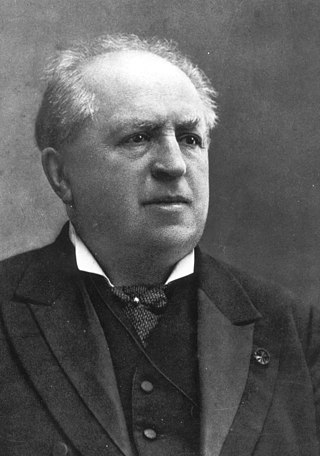 117
Abraham Kuyper was the Prime Minister of the Netherlands between 1901 and 1905, an influential neo-Calvinist pastor and a journalist. He established the Reformed Churches in the Netherlands, which...
117
Abraham Kuyper was the Prime Minister of the Netherlands between 1901 and 1905, an influential neo-Calvinist pastor and a journalist. He established the Reformed Churches in the Netherlands, which...
Piet Pieterszoon Hein
 116
Piet Pieterszoon Hein was a Dutch admiral and privateer for the Dutch Republic during the Eighty Years' War. Hein was the first and the last to capture a large part of a Spanish treasure fleet which...
116
Piet Pieterszoon Hein was a Dutch admiral and privateer for the Dutch Republic during the Eighty Years' War. Hein was the first and the last to capture a large part of a Spanish treasure fleet which...
John F. Kennedy
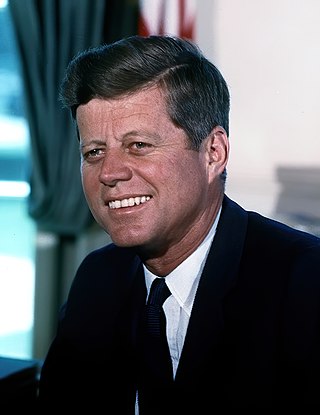 114
John Fitzgerald Kennedy, often referred to as JFK, was an American politician who served as the 35th president of the United States from 1961 until his assassination in 1963. He was the youngest...
114
John Fitzgerald Kennedy, often referred to as JFK, was an American politician who served as the 35th president of the United States from 1961 until his assassination in 1963. He was the youngest...
Pieter Jelles Troelstra
 109
Pieter Jelles Troelstra was a Dutch lawyer, journalist and politician active in the socialist workers' movement. He is most remembered for his fight for universal suffrage and his failed call for...
109
Pieter Jelles Troelstra was a Dutch lawyer, journalist and politician active in the socialist workers' movement. He is most remembered for his fight for universal suffrage and his failed call for...
Frédéric Chopin
 109
Frédéric François Chopin was a Polish composer and virtuoso pianist of the Romantic period, who wrote primarily for solo piano. He has maintained worldwide renown as a leading musician of his era,...
109
Frédéric François Chopin was a Polish composer and virtuoso pianist of the Romantic period, who wrote primarily for solo piano. He has maintained worldwide renown as a leading musician of his era,...
Henry Dunant
 108
Henry Dunant, also known as Henri Dunant, was a Swiss humanitarian, businessman, social activist, and co-founder of the Red Cross. His humanitarian efforts won him the first Nobel Peace Prize in 1901.
108
Henry Dunant, also known as Henri Dunant, was a Swiss humanitarian, businessman, social activist, and co-founder of the Red Cross. His humanitarian efforts won him the first Nobel Peace Prize in 1901.
Thomas Edison
 103
Thomas Alva Edison was an American inventor and businessman. He developed many devices in fields such as electric power generation, mass communication, sound recording, and motion pictures. These...
103
Thomas Alva Edison was an American inventor and businessman. He developed many devices in fields such as electric power generation, mass communication, sound recording, and motion pictures. These...
Franz Schubert
 103
Franz Peter Schubert was an Austrian composer of the late Classical and early Romantic eras. Despite his short life, Schubert left behind a vast oeuvre, including more than 600 secular vocal works,...
103
Franz Peter Schubert was an Austrian composer of the late Classical and early Romantic eras. Despite his short life, Schubert left behind a vast oeuvre, including more than 600 secular vocal works,...
Jan Pieterszoon Sweelinck
 99
Jan Pieterszoon Sweelinck was a Dutch composer, organist, and pedagogue whose work straddled the end of the Renaissance and beginning of the Baroque eras. He was among the first major keyboard...
99
Jan Pieterszoon Sweelinck was a Dutch composer, organist, and pedagogue whose work straddled the end of the Renaissance and beginning of the Baroque eras. He was among the first major keyboard...
Willem Bilderdijk
 98
Willem Bilderdijk was a Dutch poet, historian, lawyer, and linguist.
98
Willem Bilderdijk was a Dutch poet, historian, lawyer, and linguist.
Jacob Cats
 97
Jacob Cats was a Dutch poet, humorist, jurist and politician. He is most famous for his emblem books.
97
Jacob Cats was a Dutch poet, humorist, jurist and politician. He is most famous for his emblem books.
Giuseppe Verdi
 93
Giuseppe Fortunino Francesco Verdi was an Italian composer best known for his operas. He was born near Busseto to a provincial family of moderate means, receiving a musical education with the help of...
93
Giuseppe Fortunino Francesco Verdi was an Italian composer best known for his operas. He was born near Busseto to a provincial family of moderate means, receiving a musical education with the help of...
Maarten Tromp
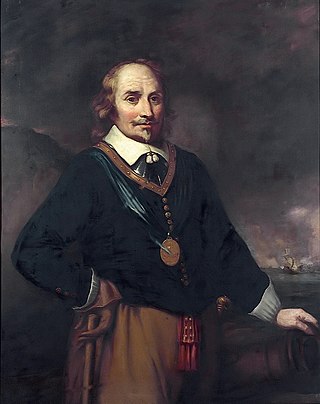 92
Maarten Harpertszoon Tromp or Maarten van Tromp was an army general and admiral in the Dutch navy during much of the Eighty Years' War and throughout the First Anglo-Dutch War. Son of a ship's...
92
Maarten Harpertszoon Tromp or Maarten van Tromp was an army general and admiral in the Dutch navy during much of the Eighty Years' War and throughout the First Anglo-Dutch War. Son of a ship's...
Johan van Galen
 92
Johan "Jan" van Galen was a Commodore of the Republic of the Seven United Provinces of the Netherlands. he participated in the First Anglo-Dutch War.
92
Johan "Jan" van Galen was a Commodore of the Republic of the Seven United Provinces of the Netherlands. he participated in the First Anglo-Dutch War.
Meindert Hobbema
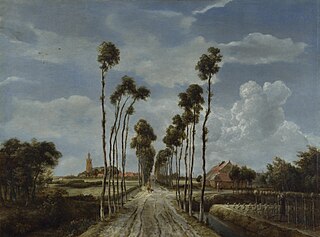 91
Meindert Lubbertszoon Hobbema was a Dutch Golden Age painter of landscapes, specializing in views of woodland, although his most famous painting, The Avenue at Middelharnis, shows a different type of...
91
Meindert Lubbertszoon Hobbema was a Dutch Golden Age painter of landscapes, specializing in views of woodland, although his most famous painting, The Avenue at Middelharnis, shows a different type of...
Hendrik Lorentz
 90
Hendrik Antoon Lorentz was a Dutch physicist who shared the 1902 Nobel Prize in Physics with Pieter Zeeman for the discovery and theoretical explanation of the Zeeman effect. He derived the Lorentz...
90
Hendrik Antoon Lorentz was a Dutch physicist who shared the 1902 Nobel Prize in Physics with Pieter Zeeman for the discovery and theoretical explanation of the Zeeman effect. He derived the Lorentz...
Adriaen van Ostade
 87
Adriaen van Ostade was a Dutch Golden Age painter of genre works, showing everyday life of ordinary men and women.
87
Adriaen van Ostade was a Dutch Golden Age painter of genre works, showing everyday life of ordinary men and women.
Jacob van Ruisdael
 85
Jacob Isaackszoon van Ruisdael was a Dutch painter, draughtsman, and etcher. He is generally considered the pre-eminent landscape painter of the Dutch Golden Age, a period of great wealth and...
85
Jacob Isaackszoon van Ruisdael was a Dutch painter, draughtsman, and etcher. He is generally considered the pre-eminent landscape painter of the Dutch Golden Age, a period of great wealth and...
Guglielmo Marconi
 84
Guglielmo Giovanni Maria Marconi, 1st Marquis of Marconi was an Italian inventor and electrical engineer, known for his creation of a practical radio wave–based wireless telegraph system. This led to...
84
Guglielmo Giovanni Maria Marconi, 1st Marquis of Marconi was an Italian inventor and electrical engineer, known for his creation of a practical radio wave–based wireless telegraph system. This led to...
Saint Joseph
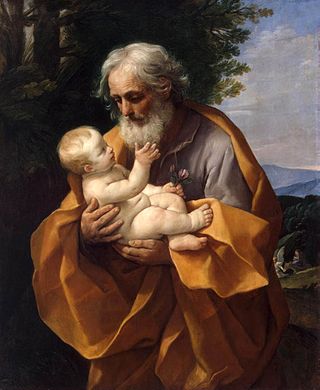 83
Joseph was a 1st-century Jewish man of Nazareth who, according to the canonical Gospels, was married to Mary, the mother of Jesus, and was the legal father of Jesus.
83
Joseph was a 1st-century Jewish man of Nazareth who, according to the canonical Gospels, was married to Mary, the mother of Jesus, and was the legal father of Jesus.
Anthony of Padua
 81
Anthony of Padua, OFM or Anthony of Lisbon was a Portuguese Catholic priest and friar of the Franciscan Order.
81
Anthony of Padua, OFM or Anthony of Lisbon was a Portuguese Catholic priest and friar of the Franciscan Order.
Hieronymus Bosch
 81
Hieronymus Bosch was a Dutch painter from Brabant. He is one of the most notable representatives of the Early Netherlandish painting school. His work, generally oil on oak wood, mainly contains...
81
Hieronymus Bosch was a Dutch painter from Brabant. He is one of the most notable representatives of the Early Netherlandish painting school. His work, generally oil on oak wood, mainly contains...
Winston Churchill
 81
Sir Winston Leonard Spencer Churchill was a British statesman, soldier, and writer who twice served as Prime Minister of the United Kingdom, from 1940 to 1945 during the Second World War, and again...
81
Sir Winston Leonard Spencer Churchill was a British statesman, soldier, and writer who twice served as Prime Minister of the United Kingdom, from 1940 to 1945 during the Second World War, and again...
George Frideric Handel
 80
George Frideric Handel was a German-British Baroque composer well known for his operas, oratorios, anthems, concerti grossi, and organ concertos. Handel received his training in Halle and worked as a...
80
George Frideric Handel was a German-British Baroque composer well known for his operas, oratorios, anthems, concerti grossi, and organ concertos. Handel received his training in Halle and worked as a...
Peter Paul Rubens
 80
Sir Peter Paul Rubens was a Flemish artist and diplomat. He is considered the most influential artist of the Flemish Baroque tradition. Rubens's highly charged compositions reference erudite aspects...
80
Sir Peter Paul Rubens was a Flemish artist and diplomat. He is considered the most influential artist of the Flemish Baroque tradition. Rubens's highly charged compositions reference erudite aspects...
Pieter Corneliszoon Hooft
 79
Pieter Corneliszoon Hooft - Knight in the Order of Saint Michael - was a Dutch historian, poet and playwright who lived during the Dutch Golden Age in literature.
79
Pieter Corneliszoon Hooft - Knight in the Order of Saint Michael - was a Dutch historian, poet and playwright who lived during the Dutch Golden Age in literature.
Guillaume Groen van Prinsterer
 79
Guillaume Groen van Prinsterer, was a Dutch politician and historian.
79
Guillaume Groen van Prinsterer, was a Dutch politician and historian.
Willem Drees
 78
Willem Drees Sr. was a Dutch politician of the Social Democratic Workers' Party (SDAP) and later co-founder of the Labour Party (PvdA) and historian who served as Prime Minister of the Netherlands...
78
Willem Drees Sr. was a Dutch politician of the Social Democratic Workers' Party (SDAP) and later co-founder of the Labour Party (PvdA) and historian who served as Prime Minister of the Netherlands...
Alphons Diepenbrock
 76
Alphonsus Johannes Maria Diepenbrock was a Dutch composer, essayist and classicist.
76
Alphonsus Johannes Maria Diepenbrock was a Dutch composer, essayist and classicist.
Gerrit Dou
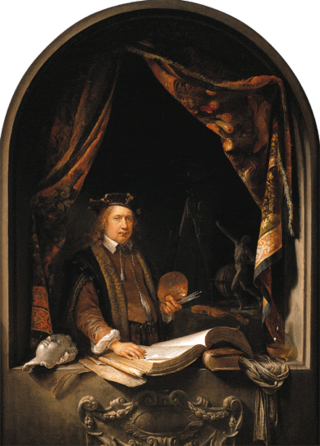 75
Gerrit Dou, also known as Gerard Douw or Dow, was a Dutch Golden Age painter, whose small, highly polished paintings are typical of the Leiden fijnschilders. He specialised in genre scenes and is...
75
Gerrit Dou, also known as Gerard Douw or Dow, was a Dutch Golden Age painter, whose small, highly polished paintings are typical of the Leiden fijnschilders. He specialised in genre scenes and is...
Willem Hubert Nolens
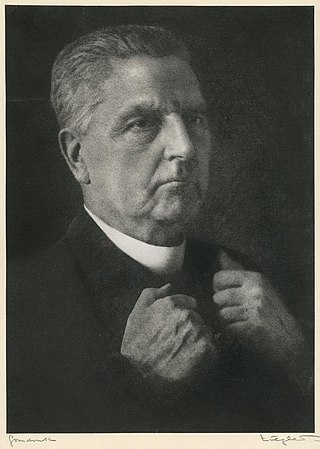 75
Mgr. mr. dr. Wilhelmus Hubertus (Wiel) Nolens was a Dutch politician and a Roman Catholic priest.
75
Mgr. mr. dr. Wilhelmus Hubertus (Wiel) Nolens was a Dutch politician and a Roman Catholic priest.
Isaac da Costa
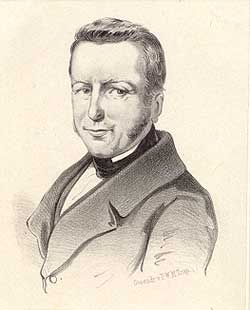 75
Isaäc da Costa was a Jewish Dutch poet.
75
Isaäc da Costa was a Jewish Dutch poet.
Hendrik Willem Mesdag
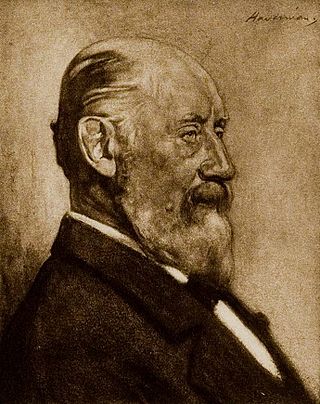 74
Hendrik Willem Mesdag was a Dutch marine painter.
74
Hendrik Willem Mesdag was a Dutch marine painter.
Dirk van Hogendorp
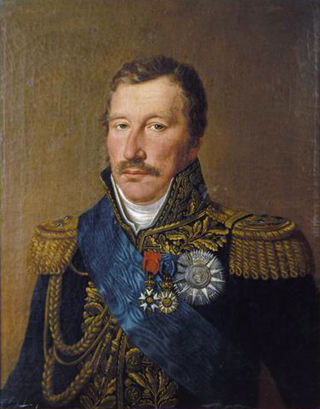 74
Dirk van Hogendorp was a Dutch military officer, politician, colonial administrator and diplomat. In 1812 he was governor of Vilnius, in 1813 he was appointed as the governor of Hamburg. He was an...
74
Dirk van Hogendorp was a Dutch military officer, politician, colonial administrator and diplomat. In 1812 he was governor of Vilnius, in 1813 he was appointed as the governor of Hamburg. He was an...
Christiaan Huygens
 73
Christiaan Huygens, Lord of Zeelhem, was a Dutch mathematician, physicist, engineer, astronomer, and inventor who is regarded as a key figure in the Scientific Revolution. In physics, Huygens made...
73
Christiaan Huygens, Lord of Zeelhem, was a Dutch mathematician, physicist, engineer, astronomer, and inventor who is regarded as a key figure in the Scientific Revolution. In physics, Huygens made...
Jozef Israëls
 72
Jozef Israëls was a Dutch painter. He was a leading member of the group of landscape painters referred to as the Hague School and was, during his lifetime, "the most respected Dutch artist of the...
72
Jozef Israëls was a Dutch painter. He was a leading member of the group of landscape painters referred to as the Hague School and was, during his lifetime, "the most respected Dutch artist of the...
Catharina-Amalia, Princess of Orange
 72
Catharina-Amalia, Princess of Orange is the heir apparent to the throne of the Kingdom of the Netherlands, which consists of the constituent countries of Aruba, Curaçao, the Netherlands, and Sint...
72
Catharina-Amalia, Princess of Orange is the heir apparent to the throne of the Kingdom of the Netherlands, which consists of the constituent countries of Aruba, Curaçao, the Netherlands, and Sint...
Albert Schweitzer
 71
Ludwig Philipp Albert Schweitzer was an Alsatian polymath. He was a theologian, organist, musicologist, writer, humanitarian, philosopher, and physician. A Lutheran minister, Schweitzer challenged...
71
Ludwig Philipp Albert Schweitzer was an Alsatian polymath. He was a theologian, organist, musicologist, writer, humanitarian, philosopher, and physician. A Lutheran minister, Schweitzer challenged...
Alexander de Savornin Lohman
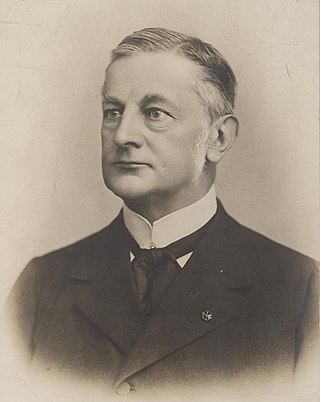 70
Jhr. Alexander Frederik de Savornin Lohman was a Dutch politician and leader of the Christian Historical Union during the first quarter of the 20th century.
70
Jhr. Alexander Frederik de Savornin Lohman was a Dutch politician and leader of the Christian Historical Union during the first quarter of the 20th century.
Anthony Christiaan Winand Staring
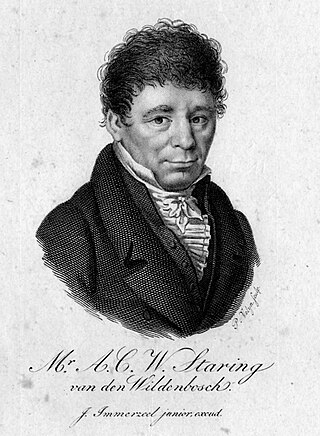 70
Anthony Christiaan Winand Staring, heer van de Wildenborch was een Nederlandse landheer, landbouwkundige en dichter.
70
Anthony Christiaan Winand Staring, heer van de Wildenborch was een Nederlandse landheer, landbouwkundige en dichter.
Nicolaas Beets
 70
Nicolaas Beets was a Dutch theologian, writer and poet. He published also under the pseudonym Hildebrand.
70
Nicolaas Beets was a Dutch theologian, writer and poet. He published also under the pseudonym Hildebrand.
Antonio Vivaldi
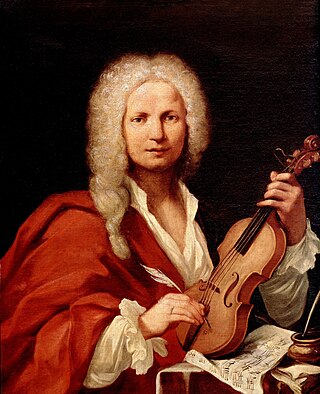 70
Antonio Lucio Vivaldi was an Italian composer, virtuoso violinist and impresario of Baroque music. Along with Johann Sebastian Bach and George Frideric Handel, Vivaldi ranks amongst the greatest...
70
Antonio Lucio Vivaldi was an Italian composer, virtuoso violinist and impresario of Baroque music. Along with Johann Sebastian Bach and George Frideric Handel, Vivaldi ranks amongst the greatest...
Alessandro Volta
 69
Alessandro Giuseppe Antonio Anastasio Volta was an Italian physicist and chemist who was a pioneer of electricity and power and is credited as the inventor of the electric battery and the discoverer...
69
Alessandro Giuseppe Antonio Anastasio Volta was an Italian physicist and chemist who was a pioneer of electricity and power and is credited as the inventor of the electric battery and the discoverer...
Hendrick van Brederode
 69
Henry (Hendrik), Lord of Bréderode, also styled Count of Brederode, was a member of the Dutch noble family Van Brederode. He was the leader of the allied Dutch nobles, the so-called Compromise of...
69
Henry (Hendrik), Lord of Bréderode, also styled Count of Brederode, was a member of the Dutch noble family Van Brederode. He was the leader of the allied Dutch nobles, the so-called Compromise of...
Jan Toorop
 68
Johannes Theodorus "Jan" Toorop was a Dutch painter who worked in various styles, including Symbolism, Art Nouveau, and Pointillism. His early work was influenced by the Amsterdam Impressionism...
68
Johannes Theodorus "Jan" Toorop was a Dutch painter who worked in various styles, including Symbolism, Art Nouveau, and Pointillism. His early work was influenced by the Amsterdam Impressionism...
Abel Tasman
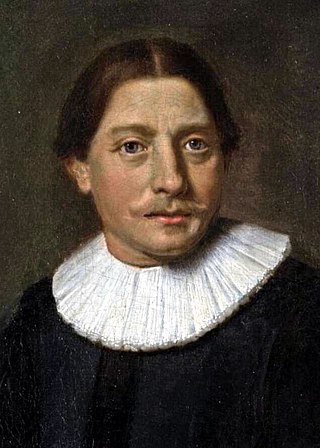 67
Abel Janszoon Tasman was a Dutch seafarer and explorer, best known for his voyages of 1642 and 1644 in the service of the Dutch East India Company (VOC).
67
Abel Janszoon Tasman was a Dutch seafarer and explorer, best known for his voyages of 1642 and 1644 in the service of the Dutch East India Company (VOC).
Cornelis Evertsen the Youngest
 66
Cornelis Evertsen the Youngest was a Dutch naval officer from Vlissingen who served as Lieutenant Admiral of Zeeland and Supreme Commander of the Confederated Dutch Navy. Of a family that included...
66
Cornelis Evertsen the Youngest was a Dutch naval officer from Vlissingen who served as Lieutenant Admiral of Zeeland and Supreme Commander of the Confederated Dutch Navy. Of a family that included...
André-Marie Ampère
 66
André-Marie Ampère was a French physicist and mathematician who was one of the founders of the science of classical electromagnetism, which he referred to as "electrodynamics". He is also the...
66
André-Marie Ampère was a French physicist and mathematician who was one of the founders of the science of classical electromagnetism, which he referred to as "electrodynamics". He is also the...
Johannes Brahms
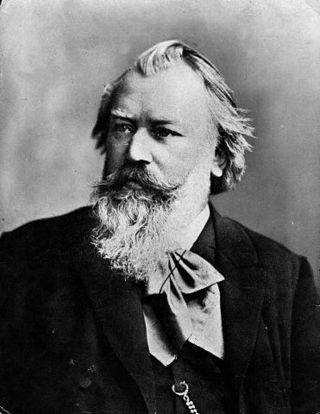 66
Johannes Brahms was a German composer, pianist, and conductor of the mid-Romantic period. Born in Hamburg into a Lutheran family, he spent much of his professional life in Vienna. He is sometimes...
66
Johannes Brahms was a German composer, pianist, and conductor of the mid-Romantic period. Born in Hamburg into a Lutheran family, he spent much of his professional life in Vienna. He is sometimes...
Jacob Maris
 66
Jacob Henricus Maris was a Dutch painter, who with his brothers Willem and Matthijs belonged to what has come to be known as the Hague School of painters. He was considered to be the most important...
66
Jacob Henricus Maris was a Dutch painter, who with his brothers Willem and Matthijs belonged to what has come to be known as the Hague School of painters. He was considered to be the most important...
Albert Einstein
 65
Albert Einstein was a German-born theoretical physicist who is widely held to be one of the greatest and most influential scientists of all time. Best known for developing the theory of relativity,...
65
Albert Einstein was a German-born theoretical physicist who is widely held to be one of the greatest and most influential scientists of all time. Best known for developing the theory of relativity,...
Witte de With
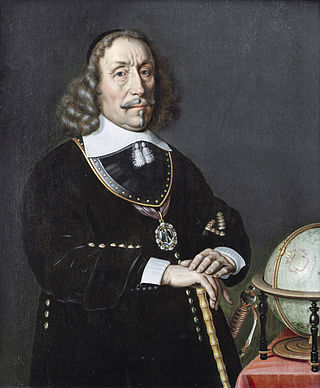 65
Witte Corneliszoon de With was a Dutch naval officer who served during the Eighty Years' War and the First Anglo-Dutch War.
65
Witte Corneliszoon de With was a Dutch naval officer who served during the Eighty Years' War and the First Anglo-Dutch War.
James Watt
 65
James Watt was a Scottish inventor, mechanical engineer, and chemist who improved on Thomas Newcomen's 1712 Newcomen steam engine with his Watt steam engine in 1776, which was fundamental to the...
65
James Watt was a Scottish inventor, mechanical engineer, and chemist who improved on Thomas Newcomen's 1712 Newcomen steam engine with his Watt steam engine in 1776, which was fundamental to the...
Henri Poels
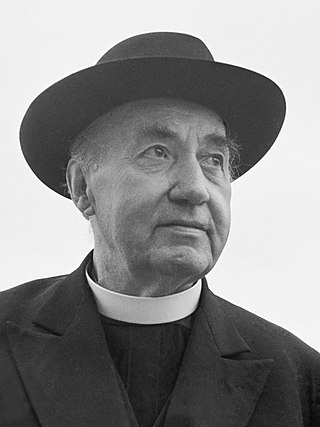 65
Hendrikus Andreas (Henri) Poels, ook bekend als dr. Poels, was een Nederlands rooms-katholiek priester, theoloog en filantroop.
65
Hendrikus Andreas (Henri) Poels, ook bekend als dr. Poels, was een Nederlands rooms-katholiek priester, theoloog en filantroop.
Pieter de Hooch
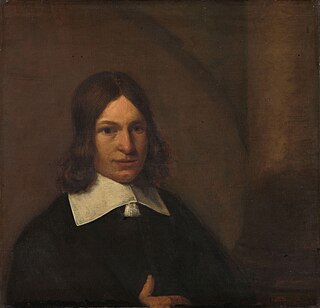 64
Pieter de Hooch (Dutch: [ˈpitər də ɦoːx], also spelled "Hoogh" or "Hooghe"; 20 December 1629 – after 1683, was a Dutch Golden Age painter famous for his genre works of quiet domestic scenes with an...
64
Pieter de Hooch (Dutch: [ˈpitər də ɦoːx], also spelled "Hoogh" or "Hooghe"; 20 December 1629 – after 1683, was a Dutch Golden Age painter famous for his genre works of quiet domestic scenes with an...
Joseph Haydn
 63
Franz Joseph Haydn was an Austrian composer of the Classical period. He was instrumental in the development of chamber music such as the string quartet and piano trio. His contributions to musical...
63
Franz Joseph Haydn was an Austrian composer of the Classical period. He was instrumental in the development of chamber music such as the string quartet and piano trio. His contributions to musical...
Piet Mondrian
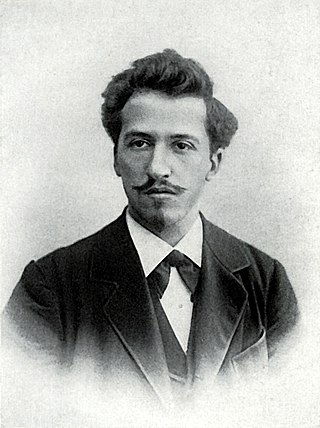 63
Pieter Cornelis Mondriaan, after 1906 known as Piet Mondrian, was a Dutch painter and art theoretician who is regarded as one of the greatest artists of the 20th century. He is known for being one of...
63
Pieter Cornelis Mondriaan, after 1906 known as Piet Mondrian, was a Dutch painter and art theoretician who is regarded as one of the greatest artists of the 20th century. He is known for being one of...
Jacob van Lennep
 63
Jacob van Lennep was a Dutch poet and novelist.
63
Jacob van Lennep was a Dutch poet and novelist.
Richard Wagner
 62
Wilhelm Richard Wagner was a German composer, theatre director, polemicist, and conductor who is chiefly known for his operas. Unlike most opera composers, Wagner wrote both the libretto and the...
62
Wilhelm Richard Wagner was a German composer, theatre director, polemicist, and conductor who is chiefly known for his operas. Unlike most opera composers, Wagner wrote both the libretto and the...
Heike Kamerlingh Onnes
 62
Heike Kamerlingh Onnes was a Dutch physicist and Nobel laureate. He exploited the Hampson–Linde cycle to investigate how materials behave when cooled to nearly absolute zero and later to liquefy...
62
Heike Kamerlingh Onnes was a Dutch physicist and Nobel laureate. He exploited the Hampson–Linde cycle to investigate how materials behave when cooled to nearly absolute zero and later to liquefy...
Hugo Grotius
 62
Hugo Grotius, also known as Hugo de Groot or Huig de Groot, was a Dutch humanist, diplomat, lawyer, theologian, jurist, statesman, poet and playwright. A teenage prodigy, he was born in Delft and...
62
Hugo Grotius, also known as Hugo de Groot or Huig de Groot, was a Dutch humanist, diplomat, lawyer, theologian, jurist, statesman, poet and playwright. A teenage prodigy, he was born in Delft and...
House of Limburg-Stirum
 62
The House of Limburg-Stirum, which adopted its name in the 12th century from the immediate county of Limburg an der Lenne in what is now Germany, is one of the oldest families in Europe. It is the...
62
The House of Limburg-Stirum, which adopted its name in the 12th century from the immediate county of Limburg an der Lenne in what is now Germany, is one of the oldest families in Europe. It is the...
Herman Boerhaave
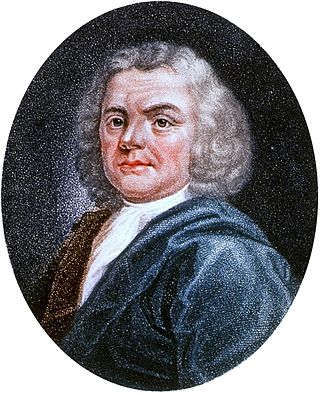 62
Herman Boerhaave was a Dutch botanist, chemist, Christian humanist, and physician of European fame. He is regarded as the founder of clinical teaching and of the modern academic hospital and is...
62
Herman Boerhaave was a Dutch botanist, chemist, Christian humanist, and physician of European fame. He is regarded as the founder of clinical teaching and of the modern academic hospital and is...
John the Apostle
 62
John the Apostle, also known as Saint John the Beloved and, in Eastern Orthodox Christianity, Saint John the Theologian, was one of the Twelve Apostles of Jesus according to the New Testament....
62
John the Apostle, also known as Saint John the Beloved and, in Eastern Orthodox Christianity, Saint John the Theologian, was one of the Twelve Apostles of Jesus according to the New Testament....
Simon Stevin
 61
Simon Stevin, sometimes called Stevinus, was a Flemish mathematician, scientist and music theorist. He made various contributions in many areas of science and engineering, both theoretical and...
61
Simon Stevin, sometimes called Stevinus, was a Flemish mathematician, scientist and music theorist. He made various contributions in many areas of science and engineering, both theoretical and...
Aletta Jacobs
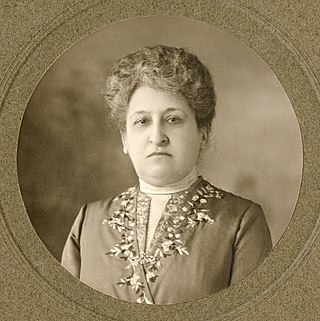 61
Aletta Henriëtte Jacobs was a Dutch physician and women's suffrage activist. As the first woman officially to attend a Dutch university, she became one of the first female physicians in the...
61
Aletta Henriëtte Jacobs was a Dutch physician and women's suffrage activist. As the first woman officially to attend a Dutch university, she became one of the first female physicians in the...
Marie Curie
 61
Maria Salomea Skłodowska-Curie, known simply as Marie Curie, was a Polish and naturalised-French physicist and chemist who conducted pioneering research on radioactivity. She was the first woman to...
61
Maria Salomea Skłodowska-Curie, known simply as Marie Curie, was a Polish and naturalised-French physicist and chemist who conducted pioneering research on radioactivity. She was the first woman to...
Antonie van Leeuwenhoek
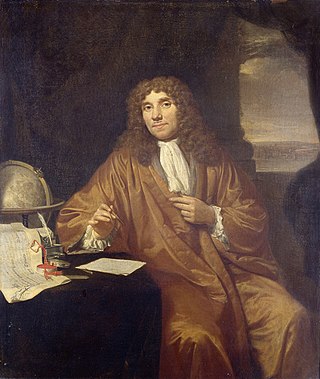 60
Antonie Philips van Leeuwenhoek was a Dutch microbiologist and microscopist in the Golden Age of Dutch science and technology. A largely self-taught man in science, he is commonly known as "the...
60
Antonie Philips van Leeuwenhoek was a Dutch microbiologist and microscopist in the Golden Age of Dutch science and technology. A largely self-taught man in science, he is commonly known as "the...
Alfred Nobel
 59
Alfred Bernhard Nobel was a Swedish chemist, inventor, engineer and businessman. He is known for inventing dynamite as well as having bequeathed his fortune to establish the Nobel Prize. He also made...
59
Alfred Bernhard Nobel was a Swedish chemist, inventor, engineer and businessman. He is known for inventing dynamite as well as having bequeathed his fortune to establish the Nobel Prize. He also made...
Princess Sophie of the Netherlands
 59
Princess Sophie of the Netherlands was the only daughter and last surviving child of King William II of the Netherlands and of his wife Grand Duchess Anna Pavlovna of Russia. She was heiress...
59
Princess Sophie of the Netherlands was the only daughter and last surviving child of King William II of the Netherlands and of his wife Grand Duchess Anna Pavlovna of Russia. She was heiress...
Willem Barentsz
 59
Willem Barentsz, anglicized as William Barents or Barentz, was a Dutch navigator, cartographer, and Arctic explorer.
59
Willem Barentsz, anglicized as William Barents or Barentz, was a Dutch navigator, cartographer, and Arctic explorer.
Martin of Tours
 59
Martin of Tours, also known as Martin the Merciful, was the third bishop of Tours. He has become one of the most familiar and recognizable Christian saints in France, heralded as the patron saint of...
59
Martin of Tours, also known as Martin the Merciful, was the third bishop of Tours. He has become one of the most familiar and recognizable Christian saints in France, heralded as the patron saint of...
Willibrord
 58
Willibrord was an Anglo-Saxon missionary and saint, known as the "Apostle to the Frisians" in the modern Netherlands. He became the first Bishop of Utrecht and died at Echternach, Luxembourg.
58
Willibrord was an Anglo-Saxon missionary and saint, known as the "Apostle to the Frisians" in the modern Netherlands. He became the first Bishop of Utrecht and died at Echternach, Luxembourg.
Louis Pasteur
 58
Louis Pasteur was a French chemist, pharmacist, and microbiologist renowned for his discoveries of the principles of vaccination, microbial fermentation, and pasteurization, the last of which was...
58
Louis Pasteur was a French chemist, pharmacist, and microbiologist renowned for his discoveries of the principles of vaccination, microbial fermentation, and pasteurization, the last of which was...
George Hendrik Breitner
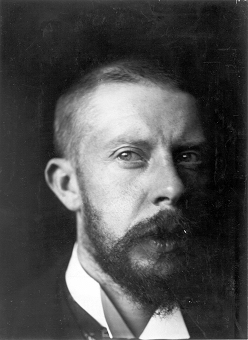 58
George Hendrik Breitner was a Dutch painter and photographer. An important figure in Amsterdam Impressionism, he is noted especially for his paintings of street scenes and harbours in a realistic...
58
George Hendrik Breitner was a Dutch painter and photographer. An important figure in Amsterdam Impressionism, he is noted especially for his paintings of street scenes and harbours in a realistic...
Egbert Bartholomeusz Kortenaer
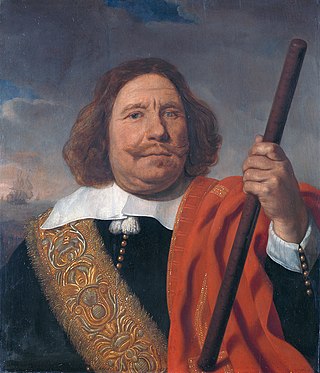 58
Egbert Bartholomeuszoon Kortenaer or Egbert Meussen Cortenaer was an admiral of the United Provinces of the Netherlands who was killed in the Battle of Lowestoft.
58
Egbert Bartholomeuszoon Kortenaer or Egbert Meussen Cortenaer was an admiral of the United Provinces of the Netherlands who was killed in the Battle of Lowestoft.
Gerbrand Bredero
 57
Gerbrand Adriaenszoon Bredero was a Dutch poet and playwright in the period known as the Dutch Golden Age.
57
Gerbrand Adriaenszoon Bredero was a Dutch poet and playwright in the period known as the Dutch Golden Age.
Jan van Goyen
 57
Jan Josephszoon van Goyen was a Dutch landscape painter. The scope of his landscape subjects was very broad as he painted forest landscapes, marine paintings, river landscapes, beach scenes, winter...
57
Jan Josephszoon van Goyen was a Dutch landscape painter. The scope of his landscape subjects was very broad as he painted forest landscapes, marine paintings, river landscapes, beach scenes, winter...
Ferdinand Bol
 56
Ferdinand Bol was a Dutch painter, etcher and draftsman. Although his surviving work is rare, it displays Rembrandt's influence; like his master, Bol favored historical subjects, portraits, numerous...
56
Ferdinand Bol was a Dutch painter, etcher and draftsman. Although his surviving work is rare, it displays Rembrandt's influence; like his master, Bol favored historical subjects, portraits, numerous...
Prince Constantijn of the Netherlands
 56
Prince Constantijn of the Netherlands is the third and youngest son of the former Dutch queen, Beatrix, and her husband, Claus von Amsberg, and is the younger brother of the reigning Dutch king,...
56
Prince Constantijn of the Netherlands is the third and youngest son of the former Dutch queen, Beatrix, and her husband, Claus von Amsberg, and is the younger brother of the reigning Dutch king,...
Johan van Oldenbarnevelt
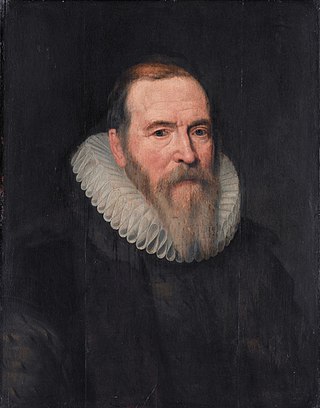 55
Johan van Oldenbarnevelt, Heer van Berkel en Rodenrijs (1600), Gunterstein (1611) and Bakkum (1613) was a Dutch statesman and revolutionary who played an important role in the Dutch struggle for...
55
Johan van Oldenbarnevelt, Heer van Berkel en Rodenrijs (1600), Gunterstein (1611) and Bakkum (1613) was a Dutch statesman and revolutionary who played an important role in the Dutch struggle for...
Erasmus
 54
Desiderius Erasmus Roterodamus was a Dutch Christian humanist, Catholic theologian, educationalist, satirist, and philosopher. Through his vast number of translations, books, essays, prayers and...
54
Desiderius Erasmus Roterodamus was a Dutch Christian humanist, Catholic theologian, educationalist, satirist, and philosopher. Through his vast number of translations, books, essays, prayers and...
Guido Gezelle
 54
Guido Pieter Theodorus Josephus Gezelle was an influential writer and poet and a Roman Catholic priest from Belgium. He is famous for the use of the West Flemish dialect, but he also wrote in other...
54
Guido Pieter Theodorus Josephus Gezelle was an influential writer and poet and a Roman Catholic priest from Belgium. He is famous for the use of the West Flemish dialect, but he also wrote in other...
Gioachino Rossini
 54
Gioachino Antonio Rossini was an Italian composer who gained fame for his 39 operas, although he also wrote many songs, some chamber music and piano pieces and some sacred music. He set new standards...
54
Gioachino Antonio Rossini was an Italian composer who gained fame for his 39 operas, although he also wrote many songs, some chamber music and piano pieces and some sacred music. He set new standards...
Aelbert Cuyp
 54
Aelbert Jacobszoon Cuyp or Cuijp was one of the leading Dutch Golden Age painters, producing mainly landscapes. The most famous of a family of painters, the pupil of his father, Jacob Gerritszoon...
54
Aelbert Jacobszoon Cuyp or Cuijp was one of the leading Dutch Golden Age painters, producing mainly landscapes. The most famous of a family of painters, the pupil of his father, Jacob Gerritszoon...
Stadtholder
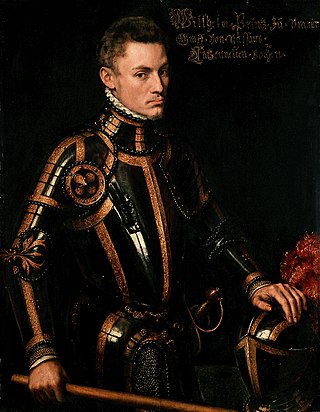 53
In the Low Countries, a stadtholder was a steward, first appointed as a medieval official and ultimately functioning as a national leader. The stadtholder was the replacement of the duke or count of...
53
In the Low Countries, a stadtholder was a steward, first appointed as a medieval official and ultimately functioning as a national leader. The stadtholder was the replacement of the duke or count of...
Juliana of Stolberg
 53
Juliana, Countess of Stolberg-Wernigerode was the mother of William the Silent, the leader of the successful Dutch Revolt against the Spanish in the 16th century.
53
Juliana, Countess of Stolberg-Wernigerode was the mother of William the Silent, the leader of the successful Dutch Revolt against the Spanish in the 16th century.
Hendrikus Colijn
 51
Hendrikus "Hendrik" Colijn was a Dutch politician of the Anti-Revolutionary Party. He served as Prime Minister of the Netherlands from 4 August 1925 until 8 March 1926, and from 26 May 1933 until 10...
51
Hendrikus "Hendrik" Colijn was a Dutch politician of the Anti-Revolutionary Party. He served as Prime Minister of the Netherlands from 4 August 1925 until 8 March 1926, and from 26 May 1933 until 10...
Franklin D. Roosevelt
 51
Franklin Delano Roosevelt, commonly known by his initials FDR, was an American statesman and politician who served as the 32nd president of the United States from 1933 until his death in 1945. He was...
51
Franklin Delano Roosevelt, commonly known by his initials FDR, was an American statesman and politician who served as the 32nd president of the United States from 1933 until his death in 1945. He was...
Hendrik Tollens
 51
Henricus Franciscus Caroluszoon (Hendrik) Tollens was a Dutch poet best known for Wien Neêrlands Bloed, the national anthem of the Netherlands between 1815 and 1932.
51
Henricus Franciscus Caroluszoon (Hendrik) Tollens was a Dutch poet best known for Wien Neêrlands Bloed, the national anthem of the Netherlands between 1815 and 1932.
Henriette Roland Holst
 51
Henriette Goverdine Anna "Jet" Roland Holst-van der Schalk was a Dutch poet and communist. She was nominated for the Nobel Prize in Literature.
51
Henriette Goverdine Anna "Jet" Roland Holst-van der Schalk was a Dutch poet and communist. She was nominated for the Nobel Prize in Literature.
Constantijn Huygens
 51
Sir Constantijn Huygens, Lord of Zuilichem, was a Dutch Golden Age poet and composer. He was also secretary to two Princes of Orange: Frederick Henry and William II, and the father of the scientist...
51
Sir Constantijn Huygens, Lord of Zuilichem, was a Dutch Golden Age poet and composer. He was also secretary to two Princes of Orange: Frederick Henry and William II, and the father of the scientist...
House of Orange-Nassau
 50
The House of Orange-Nassau is the current reigning house of the Netherlands. A branch of the European House of Nassau, the house has played a central role in the politics and government of the...
50
The House of Orange-Nassau is the current reigning house of the Netherlands. A branch of the European House of Nassau, the house has played a central role in the politics and government of the...
Isaac Newton
 50
Sir Isaac Newton was an English polymath active as a mathematician, physicist, astronomer, alchemist, theologian, and author who was described in his time as a natural philosopher. He was a key...
50
Sir Isaac Newton was an English polymath active as a mathematician, physicist, astronomer, alchemist, theologian, and author who was described in his time as a natural philosopher. He was a key...
Paul Kruger
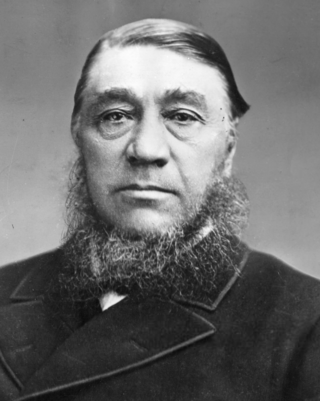 49
Stephanus Johannes Paulus Kruger, better known as Paul Kruger, was a South African politician. He was one of the dominant political and military figures in 19th-century South Africa, and State...
49
Stephanus Johannes Paulus Kruger, better known as Paul Kruger, was a South African politician. He was one of the dominant political and military figures in 19th-century South Africa, and State...
Marga Klompé
 49
Margaretha Albertina Maria "Marga" Klompé was a Dutch politician of the defunct Catholic People's Party (KVP) now merged into the Christian Democratic Appeal (CDA) party and chemist. She was granted...
49
Margaretha Albertina Maria "Marga" Klompé was a Dutch politician of the defunct Catholic People's Party (KVP) now merged into the Christian Democratic Appeal (CDA) party and chemist. She was granted...
Jan Leeghwater
 49
Jan Adriaenszoon Leeghwater was a Dutch millwright and hydraulic engineer.
49
Jan Adriaenszoon Leeghwater was a Dutch millwright and hydraulic engineer.
Maurice Ravel
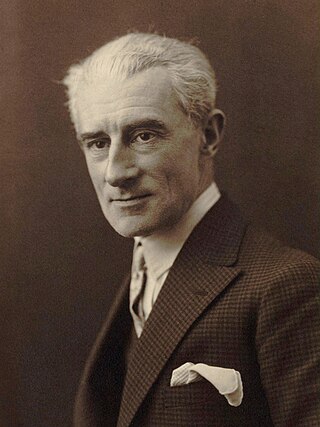 49
Joseph Maurice Ravel was a French composer, pianist and conductor. He is often associated with Impressionism along with his elder contemporary Claude Debussy, although both composers rejected the...
49
Joseph Maurice Ravel was a French composer, pianist and conductor. He is often associated with Impressionism along with his elder contemporary Claude Debussy, although both composers rejected the...
Alfons Ariëns
 48
Alphonse Marie Auguste Joseph Ariëns was een Nederlandse priester die een grote rol speelde in de rooms-katholieke arbeidersbeweging in Nederland en voor de ontwikkeling van een katholieke sociale...
48
Alphonse Marie Auguste Joseph Ariëns was een Nederlandse priester die een grote rol speelde in de rooms-katholieke arbeidersbeweging in Nederland en voor de ontwikkeling van een katholieke sociale...
Herman Gorter
 48
Herman Gorter was a Dutch poet and Council Communist theorist. He was a leading member of the Tachtigers, a highly influential group of Dutch writers who worked together in Amsterdam in the 1880s,...
48
Herman Gorter was a Dutch poet and Council Communist theorist. He was a leading member of the Tachtigers, a highly influential group of Dutch writers who worked together in Amsterdam in the 1880s,...
Govert Flinck
 48
Govert Teuniszoon Flinck was a Dutch painter of the Dutch Golden Age.
48
Govert Teuniszoon Flinck was a Dutch painter of the Dutch Golden Age.
Salomon van Ruysdael
 47
Salomon van Ruysdael was a Dutch Golden Age landscape painter. He was the uncle of Jacob van Ruisdael.
47
Salomon van Ruysdael was a Dutch Golden Age landscape painter. He was the uncle of Jacob van Ruisdael.
William Louis, Count of Nassau-Dillenburg
 47
William Louis of Nassau-Dillenburg was Count of Nassau-Dillenburg from 1606 to 1620, and stadtholder of Friesland, Groningen, and Drenthe.
47
William Louis of Nassau-Dillenburg was Count of Nassau-Dillenburg from 1606 to 1620, and stadtholder of Friesland, Groningen, and Drenthe.
Rutger Jan Schimmelpenninck (1761-1825)
 46
Rutger Jan graaf Schimmelpenninck, heer van Nijenhuis, Peckedam en Gellicum, was een Nederlands jurist, ambassadeur en politicus, onder andere raadpensionaris van het Bataafs Gemenebest.
46
Rutger Jan graaf Schimmelpenninck, heer van Nijenhuis, Peckedam en Gellicum, was een Nederlands jurist, ambassadeur en politicus, onder andere raadpensionaris van het Bataafs Gemenebest.
Piet Aalberse Sr.
 46
Petrus Josephus Mattheus "Piet" Aalberse Sr. was a Dutch politician of the General League of Roman Catholic Caucuses, later the Roman Catholic State Party (RKSP) and later co-founder of the Catholic...
46
Petrus Josephus Mattheus "Piet" Aalberse Sr. was a Dutch politician of the General League of Roman Catholic Caucuses, later the Roman Catholic State Party (RKSP) and later co-founder of the Catholic...
Johan Wagenaar
 46
Johan Wagenaar was a Dutch composer and organist.
46
Johan Wagenaar was a Dutch composer and organist.
Saint Anne
 46
According to apocrypha, as well as Christian and Islamic tradition, Saint Anne was the mother of Mary, the wife of Joachim and the maternal grandmother of Jesus. Mary's mother is not named in the...
46
According to apocrypha, as well as Christian and Islamic tradition, Saint Anne was the mother of Mary, the wife of Joachim and the maternal grandmother of Jesus. Mary's mother is not named in the...
Julius Röntgen
 46
Julius Engelbert Röntgen was a German-Dutch composer of classical music. He was a friend of Liszt, Brahms and Grieg.
46
Julius Engelbert Röntgen was a German-Dutch composer of classical music. He was a friend of Liszt, Brahms and Grieg.
Georges Bizet
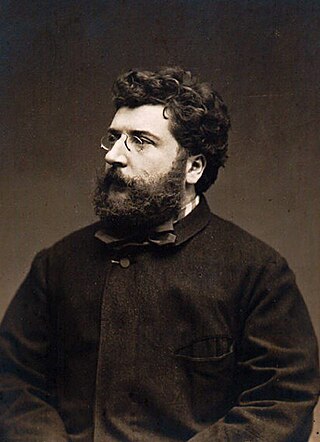 46
Georges Bizet was a French composer of the Romantic era. Best known for his operas in a career cut short by his early death, Bizet achieved few successes before his final work, Carmen, which has...
46
Georges Bizet was a French composer of the Romantic era. Best known for his operas in a career cut short by his early death, Bizet achieved few successes before his final work, Carmen, which has...
Louise de Coligny
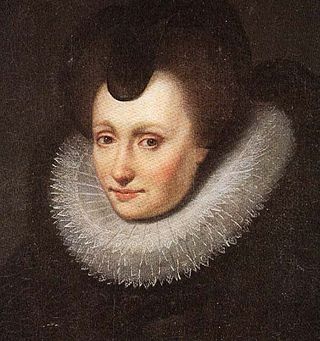 45
Louise de Coligny was a Princess consort of Orange as the fourth and last spouse of William the Silent. She was the daughter of Gaspard II de Coligny and Charlotte de Laval.
45
Louise de Coligny was a Princess consort of Orange as the fourth and last spouse of William the Silent. She was the daughter of Gaspard II de Coligny and Charlotte de Laval.
Willem Pijper
 45
Willem Frederik Johannes Pijper was a Dutch composer, music critic and music teacher. Pijper is considered to be among the most important Dutch composers of the first half of the 20th century.
45
Willem Frederik Johannes Pijper was a Dutch composer, music critic and music teacher. Pijper is considered to be among the most important Dutch composers of the first half of the 20th century.
Louis Couperus
 44
Louis Marie-Anne Couperus was a Dutch novelist and poet. His oeuvre contains a wide variety of genres: lyric poetry, psychological and historical novels, novellas, short stories, fairy tales,...
44
Louis Marie-Anne Couperus was a Dutch novelist and poet. His oeuvre contains a wide variety of genres: lyric poetry, psychological and historical novels, novellas, short stories, fairy tales,...
Hendrik Goeman Borgesius
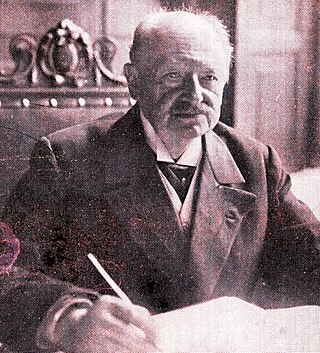 44
Hendrik Goeman Borgesius was a Dutch politician. He was a member of the House of Representatives of the Netherlands from 1877 until 1917, representing respectively Winschoten, Veendam, Zutphen,...
44
Hendrik Goeman Borgesius was a Dutch politician. He was a member of the House of Representatives of the Netherlands from 1877 until 1917, representing respectively Winschoten, Veendam, Zutphen,...
Tobias Asser
 44
Tobias Michael Carel Asser was a Dutch lawyer and legal scholar.
In 1911, he won the Nobel Peace Prize for his work in the field of private international law, and in particular for his achievements...
44
Tobias Michael Carel Asser was a Dutch lawyer and legal scholar.
In 1911, he won the Nobel Peace Prize for his work in the field of private international law, and in particular for his achievements...
Johan de Witt
 44
Johan de Witt, Lord of Zuid- en Noord-Linschoten, Snelrewaard, Hekendorp en IJsselvere, was a Dutch statesman and a major political figure in the Dutch Republic in the mid-17th century, the First...
44
Johan de Witt, Lord of Zuid- en Noord-Linschoten, Snelrewaard, Hekendorp en IJsselvere, was a Dutch statesman and a major political figure in the Dutch Republic in the mid-17th century, the First...
Cornelis de Houtman
 44
Cornelis de Houtman was a Dutch merchant seaman who commanded the first Dutch expedition to the East Indies. Although the voyage was difficult and yielded only a modest profit, Houtman showed that...
44
Cornelis de Houtman was a Dutch merchant seaman who commanded the first Dutch expedition to the East Indies. Although the voyage was difficult and yielded only a modest profit, Houtman showed that...
Pieter Cort van der Linden
 44
Pieter Wilhelm Adrianus Cort van der Linden was a Dutch politician who served as Prime Minister of the Netherlands from August 1913 to September 1918.
44
Pieter Wilhelm Adrianus Cort van der Linden was a Dutch politician who served as Prime Minister of the Netherlands from August 1913 to September 1918.
Willem Kloos
 43
Willem Johannes Theodorus Kloos was a nineteenth-century Dutch poet and literary critic. He was one of the prominent figures of the Movement of Eighty and became editor in chief of De Nieuwe Gids...
43
Willem Johannes Theodorus Kloos was a nineteenth-century Dutch poet and literary critic. He was one of the prominent figures of the Movement of Eighty and became editor in chief of De Nieuwe Gids...
Maarten van Heemskerck
 43
Maarten van Heemskerck or Marten Jacobsz Heemskerk van Veen was a Dutch portrait and religious painter, who spent most of his career in Haarlem. He was a pupil of Jan van Scorel, and adopted his...
43
Maarten van Heemskerck or Marten Jacobsz Heemskerk van Veen was a Dutch portrait and religious painter, who spent most of his career in Haarlem. He was a pupil of Jan van Scorel, and adopted his...
Pieter Sjoerds Gerbrandy
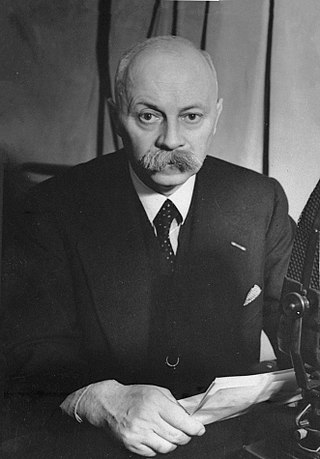 43
Pieter Sjoerds Gerbrandy was a Dutch politician and jurist who served as Prime Minister of the Netherlands from 3 September 1940 until 25 June 1945. He oversaw the government-in-exile based in London...
43
Pieter Sjoerds Gerbrandy was a Dutch politician and jurist who served as Prime Minister of the Netherlands from 3 September 1940 until 25 June 1945. He oversaw the government-in-exile based in London...
Anthony Fokker
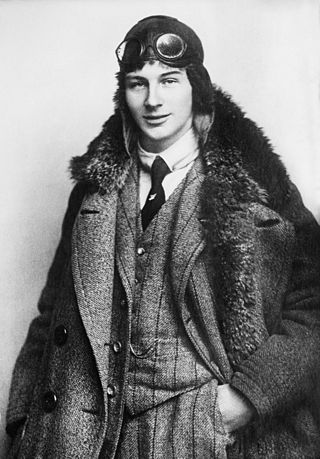 42
Anton Herman Gerard "Anthony" Fokker was a Dutch aviation pioneer, aviation entrepreneur, aircraft designer, and aircraft manufacturer. He produced fighter aircraft in Germany during the First World...
42
Anton Herman Gerard "Anthony" Fokker was a Dutch aviation pioneer, aviation entrepreneur, aircraft designer, and aircraft manufacturer. He produced fighter aircraft in Germany during the First World...
Saint George
 42
Saint George, also George of Lydda, was an early Christian martyr who is venerated as a saint in Christianity. According to tradition, he was a soldier in the Roman army. Of Cappadocian Greek origin,...
42
Saint George, also George of Lydda, was an early Christian martyr who is venerated as a saint in Christianity. According to tradition, he was a soldier in the Roman army. Of Cappadocian Greek origin,...
Lambert of Maastricht
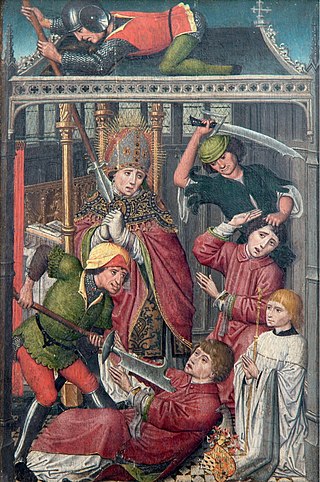 42
Lambert of Maastricht, commonly referred to as Saint Lambert, was the bishop of Maastricht-Liège (Tongeren) from about 670 until his death. Lambert denounced Pepin's liaison with his mistress or...
42
Lambert of Maastricht, commonly referred to as Saint Lambert, was the bishop of Maastricht-Liège (Tongeren) from about 670 until his death. Lambert denounced Pepin's liaison with his mistress or...
Jan van Speyk
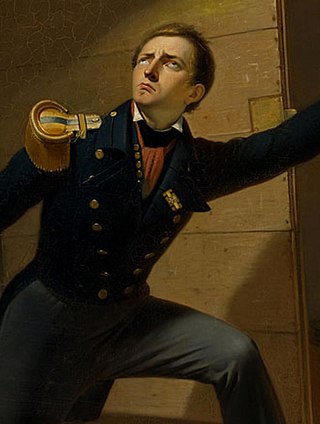 42
Jan Carel Josephus van Speyk was a Dutch naval lieutenant commander with the United Netherlands Navy who became a hero in the Netherlands for his opposition to the Belgian Revolution.
42
Jan Carel Josephus van Speyk was a Dutch naval lieutenant commander with the United Netherlands Navy who became a hero in the Netherlands for his opposition to the Belgian Revolution.
Felix Mendelssohn
 42
Jakob Ludwig Felix Mendelssohn Bartholdy, widely known as Felix Mendelssohn, was a German composer, pianist, organist and conductor of the early Romantic period. Mendelssohn's compositions include...
42
Jakob Ludwig Felix Mendelssohn Bartholdy, widely known as Felix Mendelssohn, was a German composer, pianist, organist and conductor of the early Romantic period. Mendelssohn's compositions include...
C. H. D. Buys Ballot
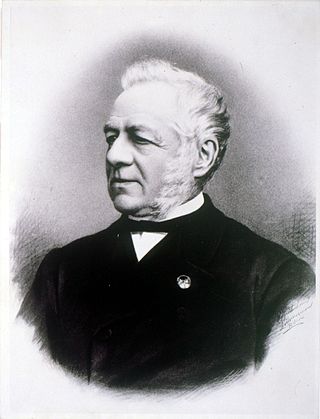 41
Christophorus Henricus Diedericus Buys Ballot was a Dutch chemist and meteorologist after whom Buys Ballot's law and the Buys Ballot table are named. He was first chairman of the International...
41
Christophorus Henricus Diedericus Buys Ballot was a Dutch chemist and meteorologist after whom Buys Ballot's law and the Buys Ballot table are named. He was first chairman of the International...
Franz Liszt
 41
Franz Liszt was a Hungarian composer, virtuoso pianist, conductor and teacher of the Romantic period. With a diverse body of work spanning more than six decades, he is considered to be one of the...
41
Franz Liszt was a Hungarian composer, virtuoso pianist, conductor and teacher of the Romantic period. With a diverse body of work spanning more than six decades, he is considered to be one of the...
Pieter Zeeman
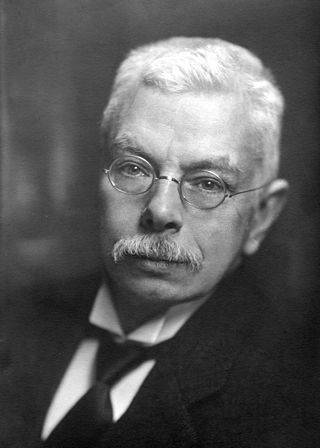 40
Pieter Zeeman was a Dutch physicist who shared the 1902 Nobel Prize in Physics with Hendrik Lorentz for his discovery of the Zeeman effect.
40
Pieter Zeeman was a Dutch physicist who shared the 1902 Nobel Prize in Physics with Hendrik Lorentz for his discovery of the Zeeman effect.
Gerrit Rietveld
 40
Gerrit Rietveld was a Dutch furniture designer and architect.
40
Gerrit Rietveld was a Dutch furniture designer and architect.
Anna van Egmont
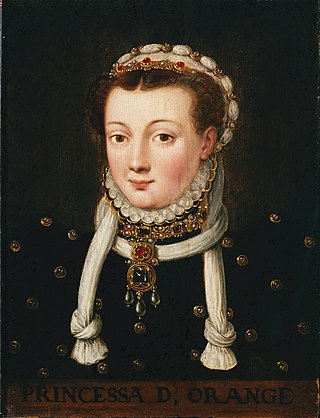 40
Anna van Egmont, mainly known as Anna van Buren, was a Dutch heiress who became the first wife of William the Silent, Prince of Orange.
40
Anna van Egmont, mainly known as Anna van Buren, was a Dutch heiress who became the first wife of William the Silent, Prince of Orange.
Anna Blaman
 40
Anna Blaman, pseudonym of Johanna Petronella Vrugt, was a Dutch writer and poet. She was a recipient of the P. C. Hooft Award. The literary award Anna Blaman Prijs is named after her.
40
Anna Blaman, pseudonym of Johanna Petronella Vrugt, was a Dutch writer and poet. She was a recipient of the P. C. Hooft Award. The literary award Anna Blaman Prijs is named after her.
Jacob Obrecht
 39
Jacob Obrecht was a Flemish composer of masses, motets and songs. He was the most famous composer of masses in Europe of the late 15th century and was only eclipsed after his death by Josquin des...
39
Jacob Obrecht was a Flemish composer of masses, motets and songs. He was the most famous composer of masses in Europe of the late 15th century and was only eclipsed after his death by Josquin des...
Herman Heijermans
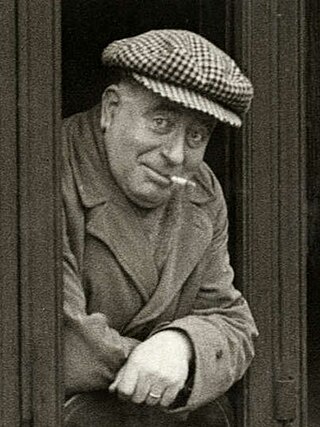 39
Herman Heijermans, was a Dutch playwright, novelist and sketch story writer, who is considered to be the greatest Dutch dramatist of the modern era. He is the most notable playwright from the...
39
Herman Heijermans, was a Dutch playwright, novelist and sketch story writer, who is considered to be the greatest Dutch dramatist of the modern era. He is the most notable playwright from the...
Johann Strauss II
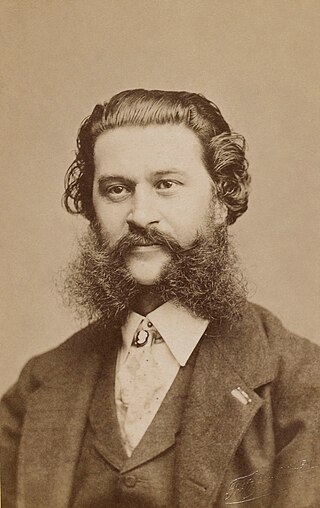 39
Johann Baptist Strauss II, also known as Johann Strauss Jr., the Younger or the Son, was an Austrian composer of light music, particularly dance music and operettas as well as a violinist. He...
39
Johann Baptist Strauss II, also known as Johann Strauss Jr., the Younger or the Son, was an Austrian composer of light music, particularly dance music and operettas as well as a violinist. He...
Hubertus
 39
Hubertus or Hubert was a Christian saint who became the first bishop of Liège in 708 A.D. He is the patron saint of hunters, mathematicians, opticians and metalworkers. Known as the "Apostle of the...
39
Hubertus or Hubert was a Christian saint who became the first bishop of Liège in 708 A.D. He is the patron saint of hunters, mathematicians, opticians and metalworkers. Known as the "Apostle of the...
Albert Plesman
 38
Albert Plesman was a Dutch pioneer in aviation and the first administrator and later director of the KLM, the oldest airline in the world still operating under its original name.
Until his death, he...
38
Albert Plesman was a Dutch pioneer in aviation and the first administrator and later director of the KLM, the oldest airline in the world still operating under its original name.
Until his death, he...
Maria Tesselschade Visscher
 38
Maria Tesselschade Roemers Visscher, also called Maria Tesselschade Roemersdochter Visscher or Tesselschade was a Dutch poet and glass engraver.
38
Maria Tesselschade Roemers Visscher, also called Maria Tesselschade Roemersdochter Visscher or Tesselschade was a Dutch poet and glass engraver.
Claude Debussy
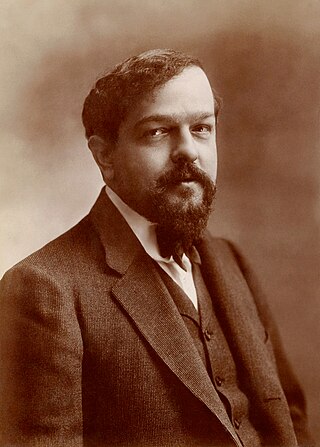 38
(Achille) Claude Debussy was a French composer. He is sometimes seen as the first Impressionist composer, although he vigorously rejected the term. He was among the most influential composers of the...
38
(Achille) Claude Debussy was a French composer. He is sometimes seen as the first Impressionist composer, although he vigorously rejected the term. He was among the most influential composers of the...
Johannes Diderik van der Waals
 38
Johannes Diderik van der Waals was a Dutch theoretical physicist and thermodynamicist famous for his pioneering work on the equation of state for gases and liquids. Van der Waals started his career...
38
Johannes Diderik van der Waals was a Dutch theoretical physicist and thermodynamicist famous for his pioneering work on the equation of state for gases and liquids. Van der Waals started his career...
Anna Pavlovna of Russia
 38
Anna Pavlovna of Russia was Queen of the Netherlands by marriage to King William II of the Netherlands. She was a Russian patriot who upheld a strict royal etiquette in the Netherlands, where she...
38
Anna Pavlovna of Russia was Queen of the Netherlands by marriage to King William II of the Netherlands. She was a Russian patriot who upheld a strict royal etiquette in the Netherlands, where she...
Jan Luyken
 37
Johannes or Jan Luyken was a Dutch poet, illustrator, and engraver.
37
Johannes or Jan Luyken was a Dutch poet, illustrator, and engraver.
Blaise Pascal
 37
Blaise Pascal was a French mathematician, physicist, inventor, philosopher, and Catholic writer.
37
Blaise Pascal was a French mathematician, physicist, inventor, philosopher, and Catholic writer.
Martin Luther King Jr.
 37
Martin Luther King Jr. was an American Christian minister, activist, and political philosopher who was one of the most prominent leaders in the civil rights movement from 1955 until his assassination...
37
Martin Luther King Jr. was an American Christian minister, activist, and political philosopher who was one of the most prominent leaders in the civil rights movement from 1955 until his assassination...
Béla Bartók
 37
Béla Viktor János Bartók was a Hungarian composer, pianist and ethnomusicologist. He is considered one of the most important composers of the 20th century; he and Franz Liszt are regarded as...
37
Béla Viktor János Bartók was a Hungarian composer, pianist and ethnomusicologist. He is considered one of the most important composers of the 20th century; he and Franz Liszt are regarded as...
Roemer Visscher
 37
Roemer Pieterszoon Visscher was a successful Dutch merchant, the first Dutch underwriter and writer of the Dutch Golden Age.
37
Roemer Pieterszoon Visscher was a successful Dutch merchant, the first Dutch underwriter and writer of the Dutch Golden Age.
Dwight D. Eisenhower
 36
Dwight David Eisenhower, nicknamed Ike, was an American military officer and statesman who served as the 34th president of the United States from 1953 to 1961. During World War II, he was Supreme...
36
Dwight David Eisenhower, nicknamed Ike, was an American military officer and statesman who served as the 34th president of the United States from 1953 to 1961. During World War II, he was Supreme...
Aagje Deken
 36
Agatha ("Aagje") Deken was a Dutch writer.
36
Agatha ("Aagje") Deken was a Dutch writer.
Anders Celsius
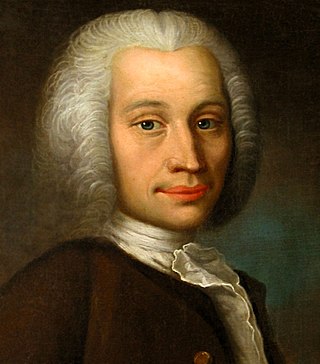 36
Anders Celsius was a Swedish astronomer, physicist and mathematician. He was professor of astronomy at Uppsala University from 1730 to 1744, but traveled from 1732 to 1735 visiting notable...
36
Anders Celsius was a Swedish astronomer, physicist and mathematician. He was professor of astronomy at Uppsala University from 1730 to 1744, but traveled from 1732 to 1735 visiting notable...
Willem Schouten
 36
Willem Cornelisz Schouten was a Dutch navigator for the Dutch East India Company. He was the first to sail the Cape Horn route to the Pacific Ocean.
36
Willem Cornelisz Schouten was a Dutch navigator for the Dutch East India Company. He was the first to sail the Cape Horn route to the Pacific Ocean.
Anne Frank
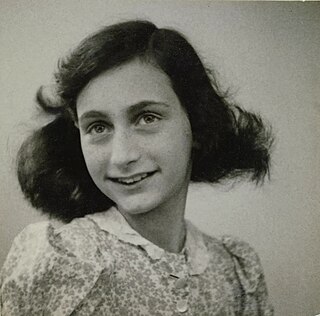 36
Annelies Marie Frank was a German-born Jewish girl who kept a diary in which she documented life in hiding under Nazi persecution during the German occupation of the Netherlands. She is a celebrated...
36
Annelies Marie Frank was a German-born Jewish girl who kept a diary in which she documented life in hiding under Nazi persecution during the German occupation of the Netherlands. She is a celebrated...
Allard Pierson
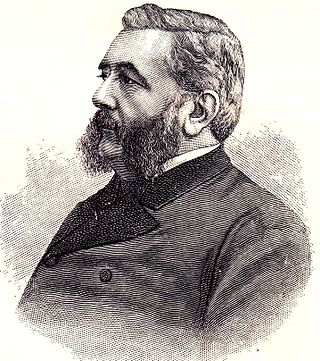 36
Allard Pierson was a Dutch theologian, historian, and art historian. He was a leading proponent of radical criticism in the Netherlands.
36
Allard Pierson was a Dutch theologian, historian, and art historian. He was a leading proponent of radical criticism in the Netherlands.
Jan van Riebeeck
 35
Johan Anthoniszoon "Jan" van Riebeeck was a Dutch navigator and colonial administrator of the Dutch East India Company.
35
Johan Anthoniszoon "Jan" van Riebeeck was a Dutch navigator and colonial administrator of the Dutch East India Company.
Valerius Maximus
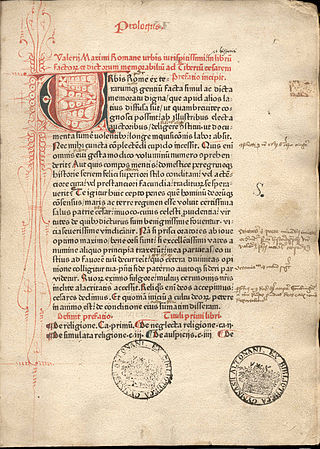 35
Valerius Maximus was a 1st-century Latin writer and author of a collection of historical anecdotes: Factorum et dictorum memorabilium libri IX. He worked during the reign of Tiberius.
35
Valerius Maximus was a 1st-century Latin writer and author of a collection of historical anecdotes: Factorum et dictorum memorabilium libri IX. He worked during the reign of Tiberius.
Gustav Mahler
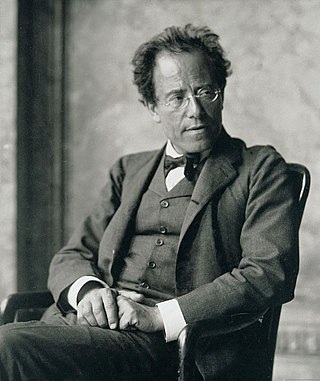 35
Gustav Mahler was an Austro-Bohemian Romantic composer, and one of the leading conductors of his generation. As a composer he acted as a bridge between the 19th-century Austro-German tradition and...
35
Gustav Mahler was an Austro-Bohemian Romantic composer, and one of the leading conductors of his generation. As a composer he acted as a bridge between the 19th-century Austro-German tradition and...
Willebrord Snellius
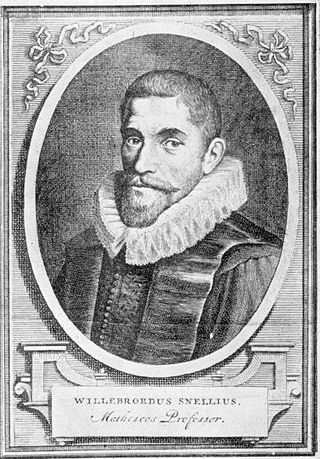 35
Willebrord Snellius was a Dutch astronomer and mathematician, commonly known as Snell. His name is usually associated with the law of refraction of light known as Snell's law.
35
Willebrord Snellius was a Dutch astronomer and mathematician, commonly known as Snell. His name is usually associated with the law of refraction of light known as Snell's law.
Luigi Galvani
 34
Luigi Galvani was an Italian physician, physicist, biologist and philosopher, who studied animal electricity. In 1780, he discovered that the muscles of dead frogs' legs twitched when struck by an...
34
Luigi Galvani was an Italian physician, physicist, biologist and philosopher, who studied animal electricity. In 1780, he discovered that the muscles of dead frogs' legs twitched when struck by an...
Simon Vestdijk
 34
Simon Vestdijk was a Dutch writer.
34
Simon Vestdijk was a Dutch writer.
Hector Treub
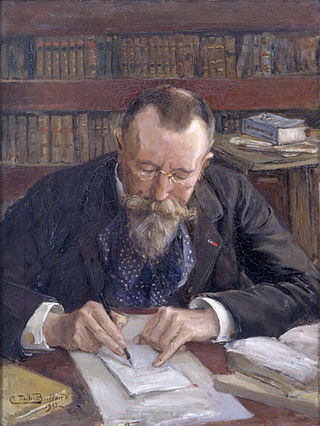 34
Hector Treub was, na de Leidse HBS en een studie in Leiden, vanaf 1886 hoogleraar verloskunde in Leiden en vanaf 1896 in Amsterdam. Hij volgde er zijn vroeg-overleden collega en vriend Van der Meij...
34
Hector Treub was, na de Leidse HBS en een studie in Leiden, vanaf 1886 hoogleraar verloskunde in Leiden en vanaf 1896 in Amsterdam. Hij volgde er zijn vroeg-overleden collega en vriend Van der Meij...
Pieter Bruegel the Elder
 34
Pieter Bruegel the Elder was among the most significant artists of Dutch and Flemish Renaissance painting, a painter and printmaker, known for his landscapes and peasant scenes ; he was a pioneer in...
34
Pieter Bruegel the Elder was among the most significant artists of Dutch and Flemish Renaissance painting, a painter and printmaker, known for his landscapes and peasant scenes ; he was a pioneer in...
Conrad Helfrich
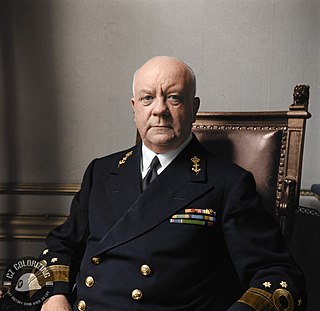 33
Lieutenant Admiral Conrad Emil Lambert Helfrich of the Royal Netherlands Navy was a leading Dutch naval figure of World War II. He was born in Semarang.
33
Lieutenant Admiral Conrad Emil Lambert Helfrich of the Royal Netherlands Navy was a leading Dutch naval figure of World War II. He was born in Semarang.
Frederik van Eeden
 33
Frederik Willem van Eeden was a late 19th-century and early 20th-century Dutch writer and psychiatrist. He was a leading member of the Tachtigers and the Significs Group, and had top billing among...
33
Frederik Willem van Eeden was a late 19th-century and early 20th-century Dutch writer and psychiatrist. He was a leading member of the Tachtigers and the Significs Group, and had top billing among...
Frans Adam van der Duyn van Maasdam
 33
Adam Frans Jules Armand, Count van der Duyn, lord of Maasdam and 's-Gravenmoer was Dutch officer and politician. He was part of the Triumvirate of 1813 that invited Prince William Frederick of...
33
Adam Frans Jules Armand, Count van der Duyn, lord of Maasdam and 's-Gravenmoer was Dutch officer and politician. He was part of the Triumvirate of 1813 that invited Prince William Frederick of...
Joke Smit
 33
Johanna Elisabeth "Joke" Smit was a well-known Dutch feminist and politician in the 1970s.
33
Johanna Elisabeth "Joke" Smit was a well-known Dutch feminist and politician in the 1970s.
Titus Brandsma
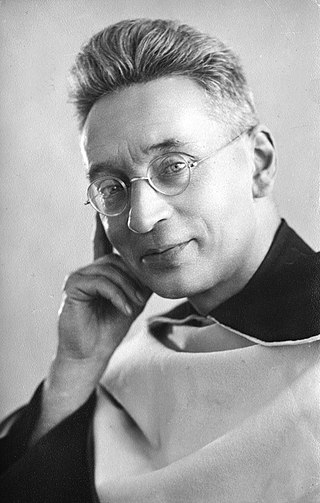 33
Titus Brandsma, OCarm was a Dutch Carmelite friar, Catholic priest and professor of philosophy. Brandsma was vehemently opposed to Nazi ideology and spoke out against it many times before the Second...
33
Titus Brandsma, OCarm was a Dutch Carmelite friar, Catholic priest and professor of philosophy. Brandsma was vehemently opposed to Nazi ideology and spoke out against it many times before the Second...
Queen Máxima of the Netherlands
 33
Máxima is Queen of the Netherlands as the wife of King Willem-Alexander.
33
Máxima is Queen of the Netherlands as the wife of King Willem-Alexander.
Robert Koch
 32
Heinrich Hermann Robert Koch was a German physician and microbiologist. As the discoverer of the specific causative agents of deadly infectious diseases including tuberculosis, cholera and anthrax,...
32
Heinrich Hermann Robert Koch was a German physician and microbiologist. As the discoverer of the specific causative agents of deadly infectious diseases including tuberculosis, cholera and anthrax,...
Betje Wolff
 32
Elizabeth ("Betje") Wolff-Bekker was a Dutch novelist who, with Agatha "Aagje" Deken, wrote several popular epistolary novels such as Sara Burgerhart (1782) and Willem Levend (1784).
32
Elizabeth ("Betje") Wolff-Bekker was a Dutch novelist who, with Agatha "Aagje" Deken, wrote several popular epistolary novels such as Sara Burgerhart (1782) and Willem Levend (1784).
Floris V, Count of Holland
 32
Floris V reigned as Count of Holland and Zeeland from 1256 until 1296. His life was documented in detail in the Rijmkroniek by Melis Stoke, his chronicler. He is credited with a mostly peaceful...
32
Floris V reigned as Count of Holland and Zeeland from 1256 until 1296. His life was documented in detail in the Rijmkroniek by Melis Stoke, his chronicler. He is credited with a mostly peaceful...
Amalia of Solms-Braunfels
 32
Amalia of Solms-Braunfels was Princess of Orange by marriage to Frederick Henry, Prince of Orange. She acted as the political adviser of her spouse during his reign, and acted as his de facto deputy...
32
Amalia of Solms-Braunfels was Princess of Orange by marriage to Frederick Henry, Prince of Orange. She acted as the political adviser of her spouse during his reign, and acted as his de facto deputy...
Jacobus Henricus van 't Hoff
 32
Jacobus Henricus van 't Hoff Jr. was a Dutch physical chemist. A highly influential theoretical chemist of his time, van 't Hoff was the first winner of the Nobel Prize in Chemistry. His pioneering...
32
Jacobus Henricus van 't Hoff Jr. was a Dutch physical chemist. A highly influential theoretical chemist of his time, van 't Hoff was the first winner of the Nobel Prize in Chemistry. His pioneering...
Daniel Gabriel Fahrenheit
 32
Daniel Gabriel Fahrenheit FRS was a physicist, inventor, and scientific instrument maker, born in Poland to a family of German extraction. Fahrenheit invented thermometers accurate and consistent...
32
Daniel Gabriel Fahrenheit FRS was a physicist, inventor, and scientific instrument maker, born in Poland to a family of German extraction. Fahrenheit invented thermometers accurate and consistent...
Hector Berlioz
 32
Louis-Hector Berlioz was a French Romantic composer and conductor. His output includes orchestral works such as the Symphonie fantastique and Harold in Italy, choral pieces including the Requiem and...
32
Louis-Hector Berlioz was a French Romantic composer and conductor. His output includes orchestral works such as the Symphonie fantastique and Harold in Italy, choral pieces including the Requiem and...
Charlotte of Bourbon
 32
Charlotte of Bourbon was a Princess consort of Orange as the third spouse of William the Silent, Prince of Orange, the main leader of the Dutch revolt against the Spanish. She was the fourth daughter...
32
Charlotte of Bourbon was a Princess consort of Orange as the third spouse of William the Silent, Prince of Orange, the main leader of the Dutch revolt against the Spanish. She was the fourth daughter...
Jan van Brakel
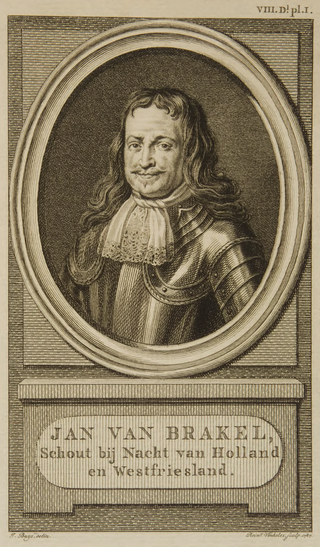 32
Jan van Brakel was a Dutch rear admiral who distinguished himself on many occasions during the Second and Third Anglo-Dutch wars and the Nine Years War.
32
Jan van Brakel was a Dutch rear admiral who distinguished himself on many occasions during the Second and Third Anglo-Dutch wars and the Nine Years War.
Anton Mauve
 32
Anthonij "Anton" Rudolf Mauve was a Dutch realist painter who was a leading member of the Hague School. He signed his paintings 'A. Mauve' or with a monogrammed 'A.M.'. A master colorist, he was a...
32
Anthonij "Anton" Rudolf Mauve was a Dutch realist painter who was a leading member of the Hague School. He signed his paintings 'A. Mauve' or with a monogrammed 'A.M.'. A master colorist, he was a...
Jacob van Maerlant
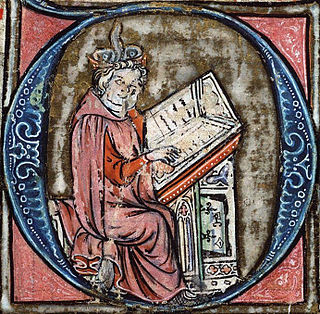 32
Jacob van Maerlant was a Flemish poet of the 13th century and one of the most important Middle Dutch authors during the Middle Ages.
32
Jacob van Maerlant was a Flemish poet of the 13th century and one of the most important Middle Dutch authors during the Middle Ages.
Hannie Schaft
 31
Jannetje Johanna (Jo) Schaft was a Dutch resistance fighter during World War II. She became known as "the girl with the red hair". Her secret name in the resistance movement was "Hannie".
31
Jannetje Johanna (Jo) Schaft was a Dutch resistance fighter during World War II. She became known as "the girl with the red hair". Her secret name in the resistance movement was "Hannie".
Menno van Coehoorn
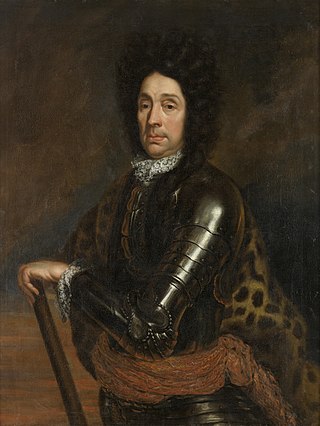 31
Menno, Baron van Coehoorn was a Dutch soldier and engineer, regarded as one of the most significant figures in Dutch military history. In an era when siege warfare dominated military campaigns, he...
31
Menno, Baron van Coehoorn was a Dutch soldier and engineer, regarded as one of the most significant figures in Dutch military history. In an era when siege warfare dominated military campaigns, he...
Christiaan de Wet
 31
Christiaan Rudolf de Wet was a Boer general, rebel leader and politician.
31
Christiaan Rudolf de Wet was a Boer general, rebel leader and politician.
Archimedes
 31
Archimedes of Syracuse was an Ancient Greek mathematician, physicist, engineer, astronomer, and inventor from the ancient city of Syracuse in Sicily. Although few details of his life are known, he is...
31
Archimedes of Syracuse was an Ancient Greek mathematician, physicist, engineer, astronomer, and inventor from the ancient city of Syracuse in Sicily. Although few details of his life are known, he is...
Martinus Nijhoff
 31
Martinus Nijhoff was a Dutch poet and essayist. He studied literature in Amsterdam and law in Utrecht. His debut was in 1916 with his volume De wandelaar. He then gradually expanded his reputation by...
31
Martinus Nijhoff was a Dutch poet and essayist. He studied literature in Amsterdam and law in Utrecht. His debut was in 1916 with his volume De wandelaar. He then gradually expanded his reputation by...
Jan Hendrik van Kinsbergen
 31
Jan Hendrik van Kinsbergen, Count of Doggerbank, was a Dutch naval officer. Having had a good scientific education, Van Kinsbergen was a proponent of fleet modernization and wrote many books about...
31
Jan Hendrik van Kinsbergen, Count of Doggerbank, was a Dutch naval officer. Having had a good scientific education, Van Kinsbergen was a proponent of fleet modernization and wrote many books about...
Carl Linnaeus
 30
Carl Linnaeus, also known after ennoblement in 1761 as Carl von Linné, was a Swedish biologist and physician who formalised binomial nomenclature, the modern system of naming organisms. He is known...
30
Carl Linnaeus, also known after ennoblement in 1761 as Carl von Linné, was a Swedish biologist and physician who formalised binomial nomenclature, the modern system of naming organisms. He is known...
Jacobus Schroeder van der Kolk
 30
Jacobus Ludovicus Conradus Schroeder van der Kolk was a Dutch anatomist and physiologist and an influential researcher into the causes of epilepsy and mental illness.
30
Jacobus Ludovicus Conradus Schroeder van der Kolk was a Dutch anatomist and physiologist and an influential researcher into the causes of epilepsy and mental illness.
Gerard ter Borch
 30
Gerard ter Borch, also known as Gerard Terburg, was a Dutch genre painter who lived in the Dutch Golden Age. He influenced fellow Dutch painters Gabriel Metsu, Gerrit Dou, Eglon van der Neer and...
30
Gerard ter Borch, also known as Gerard Terburg, was a Dutch genre painter who lived in the Dutch Golden Age. He influenced fellow Dutch painters Gabriel Metsu, Gerrit Dou, Eglon van der Neer and...
Godfried Bomans
 30
Godfried Jan Arnold Bomans was a Dutch author and television personality. Much of his work remains untranslated into English.
30
Godfried Jan Arnold Bomans was a Dutch author and television personality. Much of his work remains untranslated into English.
Jacob van Wassenaer Obdam
 30
Jacob, Banner Lord of Wassenaer, Lord Obdam, Hensbroek, Spanbroek, Opmeer, Zuidwijk and Kernhem was a Dutch nobleman who became lieutenant admiral, and supreme commander of the navy of the Dutch...
30
Jacob, Banner Lord of Wassenaer, Lord Obdam, Hensbroek, Spanbroek, Opmeer, Zuidwijk and Kernhem was a Dutch nobleman who became lieutenant admiral, and supreme commander of the navy of the Dutch...
Charles Ruijs de Beerenbrouck
 29
Jonkheer Charles Joseph Marie Ruijs de Beerenbrouck was a Dutch politician of the Roman Catholic State Party (RKSP). He served as Prime Minister of the Netherlands from 9 September 1918 until 4...
29
Jonkheer Charles Joseph Marie Ruijs de Beerenbrouck was a Dutch politician of the Roman Catholic State Party (RKSP). He served as Prime Minister of the Netherlands from 9 September 1918 until 4...
Jacques Perk
 29
Jacques Fabrice Herman Perk was an important Dutch poet of the late 19th century. His crown of sonnets Mathilde, published by Willem Kloos, was the first important announcement of a renewal in Dutch...
29
Jacques Fabrice Herman Perk was an important Dutch poet of the late 19th century. His crown of sonnets Mathilde, published by Willem Kloos, was the first important announcement of a renewal in Dutch...
Piet Cronjé
 29
Pieter Arnoldus "Piet" Cronjé was a South African Boer general during the Anglo-Boer Wars of 1880–1881 and 1899–1902.
29
Pieter Arnoldus "Piet" Cronjé was a South African Boer general during the Anglo-Boer Wars of 1880–1881 and 1899–1902.
Walraven van Hall
 29
Walraven "Wally" van Hall was a Dutch banker and resistance leader during the occupation of the Netherlands in World War II. He founded the bank of the Resistance, which was used to distribute funds...
29
Walraven "Wally" van Hall was a Dutch banker and resistance leader during the occupation of the Netherlands in World War II. He founded the bank of the Resistance, which was used to distribute funds...
Jacobus Revius
 29
Jacobus Revius was a Dutch poet, Calvinist theologian and church historian. His most renowned collection of poems, the Over-ysselsche Sangen en Dichten (1630), forms a high point of Dutch baroque....
29
Jacobus Revius was a Dutch poet, Calvinist theologian and church historian. His most renowned collection of poems, the Over-ysselsche Sangen en Dichten (1630), forms a high point of Dutch baroque....
J. Slauerhoff
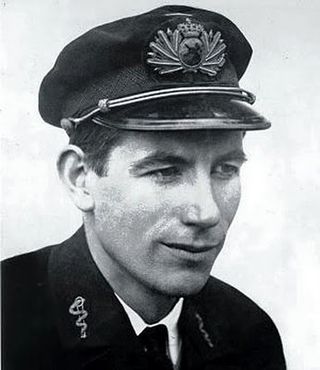 29
Jan Jacob Slauerhoff, who published as J. Slauerhoff, was a Dutch poet and novelist. He is considered one of the most important Dutch language writers.
29
Jan Jacob Slauerhoff, who published as J. Slauerhoff, was a Dutch poet and novelist. He is considered one of the most important Dutch language writers.
Anthonie Heinsius
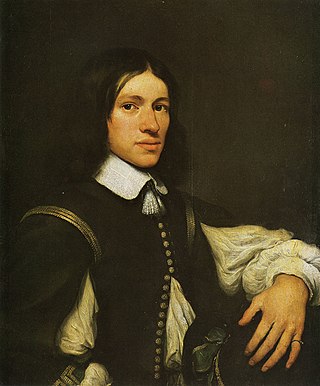 29
Anthonie Heinsius was a Dutch statesman who served as Grand Pensionary of Holland from 1689 to his death in 1720. Heinsius was a tough negotiator and one of the greatest and most obstinate opponents...
29
Anthonie Heinsius was a Dutch statesman who served as Grand Pensionary of Holland from 1689 to his death in 1720. Heinsius was a tough negotiator and one of the greatest and most obstinate opponents...
Jan Duiker
 29
Jan Duiker was a Dutch architect. Partnership with Bernard Bijvoet from 1917 until 1935. For the commission of the Zonnestraal project the architects were recommended by Hendrik Berlage. Bijvoet's...
29
Jan Duiker was a Dutch architect. Partnership with Bernard Bijvoet from 1917 until 1935. For the commission of the Zonnestraal project the architects were recommended by Hendrik Berlage. Bijvoet's...
Arthur van Schendel
 29
Arthur van Schendel was a Dutch writer of novels and short stories. One of his best known works is Het fregatschip Johanna Maria. His son Arthur F.E. van Schendel (1910–1979) was General Director of...
29
Arthur van Schendel was a Dutch writer of novels and short stories. One of his best known works is Het fregatschip Johanna Maria. His son Arthur F.E. van Schendel (1910–1979) was General Director of...
Johannes Bosboom
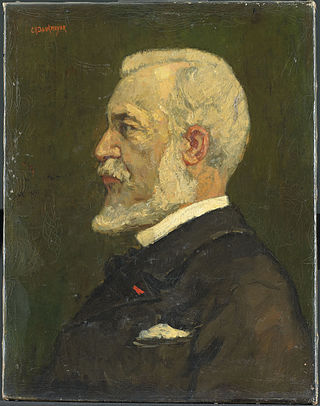 29
Johannes Bosboom was a Dutch painter and watercolorist of the Hague School, known especially for his paintings of church interiors.
29
Johannes Bosboom was a Dutch painter and watercolorist of the Hague School, known especially for his paintings of church interiors.
Olivier van Noort
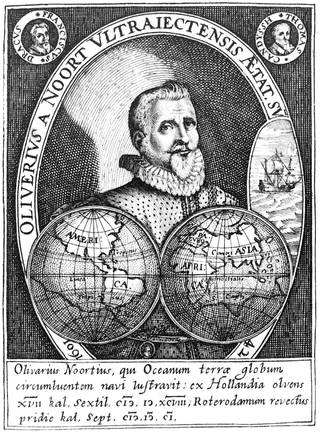 29
Olivier van Noort was a Dutch merchant captain and pirate and the first Dutchman to circumnavigate the world.
29
Olivier van Noort was a Dutch merchant captain and pirate and the first Dutchman to circumnavigate the world.
Hercules
 28
Hercules is the Roman equivalent of the Greek divine hero Heracles, son of Jupiter and the mortal Alcmena. In classical mythology, Hercules is famous for his strength and for his numerous far-ranging...
28
Hercules is the Roman equivalent of the Greek divine hero Heracles, son of Jupiter and the mortal Alcmena. In classical mythology, Hercules is famous for his strength and for his numerous far-ranging...
Saint Nicholas
 28
Saint Nicholas of Myra, also known as Nicholas of Bari, was an early Christian bishop of Greek descent from the maritime city of Patara in Anatolia during the time of the Roman Empire. Because of the...
28
Saint Nicholas of Myra, also known as Nicholas of Bari, was an early Christian bishop of Greek descent from the maritime city of Patara in Anatolia during the time of the Roman Empire. Because of the...
Nicolaus Copernicus
 28
Nicolaus Copernicus was a Renaissance polymath, active as a mathematician, astronomer, and Catholic canon, who formulated a model of the universe that placed the Sun rather than Earth at its center....
28
Nicolaus Copernicus was a Renaissance polymath, active as a mathematician, astronomer, and Catholic canon, who formulated a model of the universe that placed the Sun rather than Earth at its center....
Annie M.G. Schmidt
 28
Anna Maria Geertruida "Annie" Schmidt was a Dutch writer. She is called the mother of the Dutch theatrical song, and the queen of Dutch children's literature, praised for her "delicious Dutch idiom,"...
28
Anna Maria Geertruida "Annie" Schmidt was a Dutch writer. She is called the mother of the Dutch theatrical song, and the queen of Dutch children's literature, praised for her "delicious Dutch idiom,"...
Anne Zernike
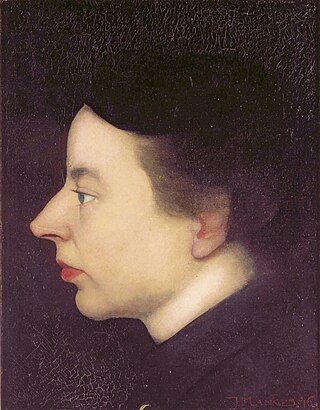 28
Anne Zernike (1887–1972) was a Dutch, liberal theologian, who was the first ordained woman minister of the Netherlands. Though she began her career with the Mennonites, which was the only...
28
Anne Zernike (1887–1972) was a Dutch, liberal theologian, who was the first ordained woman minister of the Netherlands. Though she began her career with the Mennonites, which was the only...
Saint Barbara
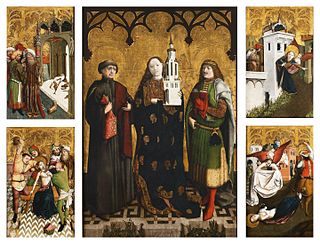 28
Saint Barbara, known in the Eastern Orthodox Church as the Great Martyr Barbara, was an early Christian Greek saint and martyr.
28
Saint Barbara, known in the Eastern Orthodox Church as the Great Martyr Barbara, was an early Christian Greek saint and martyr.
César Franck
 28
César-Auguste-Jean-Guillaume-Hubert Franck was a French Romantic composer, pianist, organist, and music teacher born in present-day Belgium.
28
César-Auguste-Jean-Guillaume-Hubert Franck was a French Romantic composer, pianist, organist, and music teacher born in present-day Belgium.
Maria Theresa
 27
Maria Theresa was ruler of the Habsburg dominions from 1740 until her death in 1780, and the only woman to hold the position suo jure. She was the sovereign of Austria, Hungary, Croatia, Bohemia,...
27
Maria Theresa was ruler of the Habsburg dominions from 1740 until her death in 1780, and the only woman to hold the position suo jure. She was the sovereign of Austria, Hungary, Croatia, Bohemia,...
Aarnoud van Heemstra
 27
Aarnoud Jan Anne Aleid, Baron van Heemstra was a Dutch nobleman, jurist and politician. He served as mayor of Arnhem between 1910 and 1920, and Governor-General of Suriname from 1921 until 1928. Van...
27
Aarnoud Jan Anne Aleid, Baron van Heemstra was a Dutch nobleman, jurist and politician. He served as mayor of Arnhem between 1910 and 1920, and Governor-General of Suriname from 1921 until 1928. Van...
Jan van der Heyden
 27
Jan van der Heyden was a Dutch Baroque-era painter, glass painter, draughtsman and printmaker. Van der Heyden was one of the first Dutch painters to specialize in townscapes and became one of the...
27
Jan van der Heyden was a Dutch Baroque-era painter, glass painter, draughtsman and printmaker. Van der Heyden was one of the first Dutch painters to specialize in townscapes and became one of the...
Adolf of Nassau (1540–1568)
 27
Adolf of Nassau was a count of Nassau, also known as Adolphus of Nassau. He was the fourth son and sixth child of William I, Count of Nassau-Siegen and Juliana of Stolberg. He was the second youngest...
27
Adolf of Nassau was a count of Nassau, also known as Adolphus of Nassau. He was the fourth son and sixth child of William I, Count of Nassau-Siegen and Juliana of Stolberg. He was the second youngest...
Van Polanen family
 27
Van Polanen was a noble family that played an important role in the Netherlands during the Middle Ages. The impact of the family transcended it's dissolution in the 15th century as the House of...
27
Van Polanen was a noble family that played an important role in the Netherlands during the Middle Ages. The impact of the family transcended it's dissolution in the 15th century as the House of...
Pieter Cornelis Boutens
 27
Pieter Cornelis Boutens was a Dutch poet, classicist, and mystic.
27
Pieter Cornelis Boutens was a Dutch poet, classicist, and mystic.
Lord Kelvin
 27
William Thomson, 1st Baron Kelvin, was a British mathematician, mathematical physicist and engineer born in Belfast. He was the professor of Natural Philosophy at the University of Glasgow for 53...
27
William Thomson, 1st Baron Kelvin, was a British mathematician, mathematical physicist and engineer born in Belfast. He was the professor of Natural Philosophy at the University of Glasgow for 53...
Anna Bijns
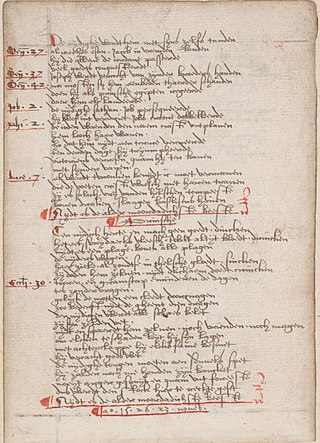 27
Anna Bijns or Anna Byns was a Flemish poet who wrote in the Dutch language. She was an educator and the administrator of a primary school in Antwerp until the age of 80. Even while as a woman she was...
27
Anna Bijns or Anna Byns was a Flemish poet who wrote in the Dutch language. She was an educator and the administrator of a primary school in Antwerp until the age of 80. Even while as a woman she was...
Jacob Roggeveen
 26
Jacob Roggeveen was a Dutch explorer who was sent to find Terra Australis and Davis Land, but instead found Easter Island. Jacob Roggeveen also found Bora Bora and Maupiti of the Society Islands, as...
26
Jacob Roggeveen was a Dutch explorer who was sent to find Terra Australis and Davis Land, but instead found Easter Island. Jacob Roggeveen also found Bora Bora and Maupiti of the Society Islands, as...
Henry Hudson
 26
Henry Hudson was an English sea explorer and navigator during the early 17th century, best known for his explorations of present-day Canada and parts of the Northeastern United States.
26
Henry Hudson was an English sea explorer and navigator during the early 17th century, best known for his explorations of present-day Canada and parts of the Northeastern United States.
Willem Einthoven
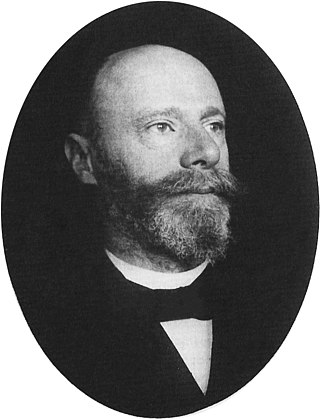 26
Willem Einthoven was a Dutch medical doctor and physiologist. He invented the first practical electrocardiograph in 1895 and received the Nobel Prize in Physiology or Medicine in 1924 for it.
26
Willem Einthoven was a Dutch medical doctor and physiologist. He invented the first practical electrocardiograph in 1895 and received the Nobel Prize in Physiology or Medicine in 1924 for it.
Peter van Anrooy
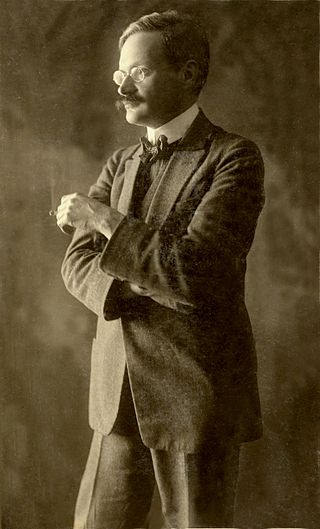 26
Peter Gijsbert van Anrooij was a Dutch composer and conductor of classical music.
26
Peter Gijsbert van Anrooij was a Dutch composer and conductor of classical music.
Albert Verwey
 26
Albert Verwey was a Dutch poet belonging to the "Movement of Eighty". As a translator, staffer, and literary historian he played an important role in the literary life of The Netherlands in the late...
26
Albert Verwey was a Dutch poet belonging to the "Movement of Eighty". As a translator, staffer, and literary historian he played an important role in the literary life of The Netherlands in the late...
Ernest Casimir I, Count of Nassau-Dietz
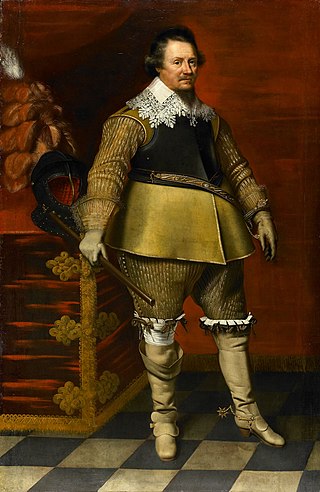 26
Ernest Casimir I was a Count of Nassau-Dietz and Stadtholder of Friesland, Groningen and Drenthe.
26
Ernest Casimir I was a Count of Nassau-Dietz and Stadtholder of Friesland, Groningen and Drenthe.
Alexander Fleming
 26
Sir Alexander Fleming was a Scottish physician and microbiologist, best known for discovering the world's first broadly effective antibiotic substance, which he named penicillin. His discovery in...
26
Sir Alexander Fleming was a Scottish physician and microbiologist, best known for discovering the world's first broadly effective antibiotic substance, which he named penicillin. His discovery in...
Carel Fabritius
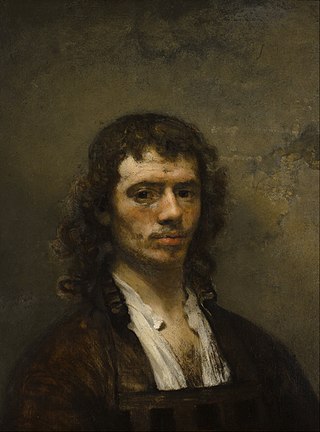 26
Carel Pietersz. Fabritius was a Dutch painter. He was a pupil of Rembrandt and worked in his studio in Amsterdam. Fabritius, who was a member of the Delft School, developed his own artistic style and...
26
Carel Pietersz. Fabritius was a Dutch painter. He was a pupil of Rembrandt and worked in his studio in Amsterdam. Fabritius, who was a member of the Delft School, developed his own artistic style and...
Suze Groeneweg
 26
Suzanna "Suze" Groeneweg was a Dutch politician. She was the first woman to be elected into the Dutch parliament.
26
Suzanna "Suze" Groeneweg was a Dutch politician. She was the first woman to be elected into the Dutch parliament.
Bernard Zweers
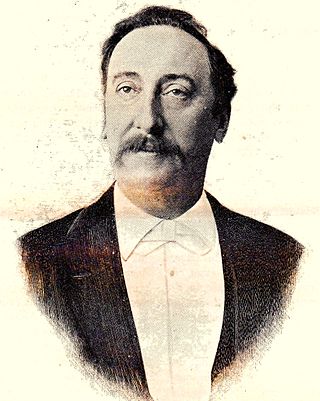 26
Bernard Zweers was a Dutch composer and music teacher.
26
Bernard Zweers was a Dutch composer and music teacher.
Joop den Uyl
 26
Johannes Marten den Uijl, better known as Joop den Uyl was a Dutch politician and economist who served as Prime Minister of the Netherlands from 1973 to 1977. He was a member of the Labour Party...
26
Johannes Marten den Uijl, better known as Joop den Uyl was a Dutch politician and economist who served as Prime Minister of the Netherlands from 1973 to 1977. He was a member of the Labour Party...
Servatius of Tongeren
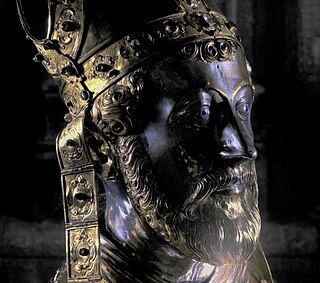 25
Saint Servatius was bishop of Tongeren. Servatius is patron saint of the city of Maastricht and the towns of Schijndel and Grimbergen. He is one of the Ice Saints. His feast day is May 13.
25
Saint Servatius was bishop of Tongeren. Servatius is patron saint of the city of Maastricht and the towns of Schijndel and Grimbergen. He is one of the Ice Saints. His feast day is May 13.
Jean Sibelius
 25
Jean Sibelius was a Finnish composer of the late Romantic and early-modern periods. He is widely regarded as his country's greatest composer, and his music is often credited with having helped...
25
Jean Sibelius was a Finnish composer of the late Romantic and early-modern periods. He is widely regarded as his country's greatest composer, and his music is often credited with having helped...
John of Arkel
 25
John of Arkel or Jan van Arkel served as Prince and Bishop of Liège from 1364 until his death in 1378. He had previously served as Bishop of Utrecht from 1342 to 1364.
25
John of Arkel or Jan van Arkel served as Prince and Bishop of Liège from 1364 until his death in 1378. He had previously served as Bishop of Utrecht from 1342 to 1364.
Johannes Post
 25
Johannes Post was a Dutch resistance leader during the Nazi occupation of the Netherlands. He helped lead part of the Landelijke Knokploegen and hid Jews in his village, Nieuwlande. Post was...
25
Johannes Post was a Dutch resistance leader during the Nazi occupation of the Netherlands. He helped lead part of the Landelijke Knokploegen and hid Jews in his village, Nieuwlande. Post was...
Anna Louisa Geertruida Bosboom-Toussaint
 25
Anna Louisa Geertruida Bosboom-Toussaint was a Dutch novelist.
25
Anna Louisa Geertruida Bosboom-Toussaint was a Dutch novelist.
H. P. Berlage
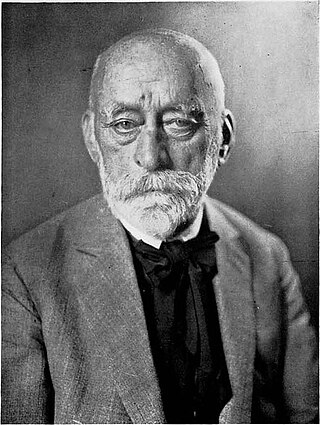 25
Hendrik Petrus Berlage was a Dutch architect and designer. He is considered one of the fathers of the architecture of the Amsterdam School.
25
Hendrik Petrus Berlage was a Dutch architect and designer. He is considered one of the fathers of the architecture of the Amsterdam School.
Nelson Mandela
 25
Nelson Rolihlahla Mandela was a South African anti-apartheid activist, politician, and statesman who served as the first president of South Africa from 1994 to 1999. He was the country's first black...
25
Nelson Rolihlahla Mandela was a South African anti-apartheid activist, politician, and statesman who served as the first president of South Africa from 1994 to 1999. He was the country's first black...
Mina Kruseman
 25
Wilhelmina Jacoba Pauline Rudolphine "Mina" Kruseman was a 19th-century Dutch feminist, actrice and author who used to call herself Oristorio di Frama.
25
Wilhelmina Jacoba Pauline Rudolphine "Mina" Kruseman was a 19th-century Dutch feminist, actrice and author who used to call herself Oristorio di Frama.
André Henri Constant van Hasselt
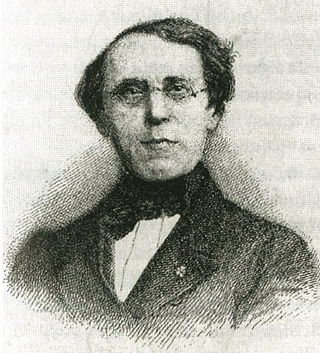 25
André Henri Constant van Hasselt was a Dutch-Belgian writer and poet who wrote mainly in French.
25
André Henri Constant van Hasselt was a Dutch-Belgian writer and poet who wrote mainly in French.
Galileo Galilei
 25
Galileo di Vincenzo Bonaiuti de' Galilei, commonly referred to as Galileo Galilei or simply Galileo, was an Italian astronomer, physicist and engineer, sometimes described as a polymath. He was born...
25
Galileo di Vincenzo Bonaiuti de' Galilei, commonly referred to as Galileo Galilei or simply Galileo, was an Italian astronomer, physicist and engineer, sometimes described as a polymath. He was born...
Gerlacus van den Elsen
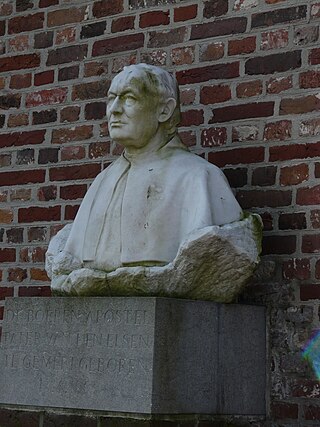 24
Gerlacus van den Elsen, O. Praem. was een Nederlandse pater van de Abdij van Berne te Heeswijk en is de geschiedenis ingegaan als de 'Boerenapostel'.
24
Gerlacus van den Elsen, O. Praem. was een Nederlandse pater van de Abdij van Berne te Heeswijk en is de geschiedenis ingegaan als de 'Boerenapostel'.
Bartholomeus van der Helst
 24
Bartholomeus van der Helst was a Dutch painter. Considered to be one of the leading portrait painters of the Dutch Golden Age, his elegant portraits gained him the patronage of Amsterdam's elite as...
24
Bartholomeus van der Helst was a Dutch painter. Considered to be one of the leading portrait painters of the Dutch Golden Age, his elegant portraits gained him the patronage of Amsterdam's elite as...
Alberdingk
 24
Alberdingk is the name of a Dutch patrician family.
24
Alberdingk is the name of a Dutch patrician family.
Aert Jansse van Nes
 24
Aert Jansse van Nes was a 17th-century Dutch naval commander, notable for commanding the second squadron in the raid on the Medway in 1667.
24
Aert Jansse van Nes was a 17th-century Dutch naval commander, notable for commanding the second squadron in the raid on the Medway in 1667.
Benjamin Franklin
 24
Benjamin Franklin was an American polymath, a leading writer, scientist, inventor, statesman, diplomat, printer, publisher, and political philosopher. Among the most influential intellectuals of his...
24
Benjamin Franklin was an American polymath, a leading writer, scientist, inventor, statesman, diplomat, printer, publisher, and political philosopher. Among the most influential intellectuals of his...
Bernard Montgomery
 24
Field Marshal Bernard Law Montgomery, 1st Viscount Montgomery of Alamein,, nicknamed "Monty", was a senior British Army officer who served in the First World War, the Irish War of Independence and...
24
Field Marshal Bernard Law Montgomery, 1st Viscount Montgomery of Alamein,, nicknamed "Monty", was a senior British Army officer who served in the First World War, the Irish War of Independence and...
Willem Marinus Dudok
 24
Willem Marinus Dudok was a Dutch modernist architect. He was born in Amsterdam. He became City Architect for the town of Hilversum in 1928 where he was best known for the brick Hilversum Town Hall,...
24
Willem Marinus Dudok was a Dutch modernist architect. He was born in Amsterdam. He became City Architect for the town of Hilversum in 1928 where he was best known for the brick Hilversum Town Hall,...
Robert Schumann
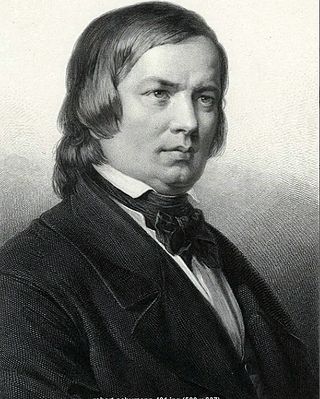 24
Robert Schumann was a German composer, pianist, and influential music critic. He is widely regarded as one of the greatest composers of the Romantic era. Schumann left the study of law, intending to...
24
Robert Schumann was a German composer, pianist, and influential music critic. He is widely regarded as one of the greatest composers of the Romantic era. Schumann left the study of law, intending to...
Princess Ariane of the Netherlands
 24
Princess Ariane of the Netherlands, Princess of Orange-Nassau is the third and youngest daughter of King Willem-Alexander and Queen Máxima. Princess Ariane is a member of the Dutch Royal House and...
24
Princess Ariane of the Netherlands, Princess of Orange-Nassau is the third and youngest daughter of King Willem-Alexander and Queen Máxima. Princess Ariane is a member of the Dutch Royal House and...
Ernest Douwes Dekker
 24
Ernest François Eugène Douwes Dekker also known as Setyabudi or Setiabudi was an Indonesian-Dutch nationalist and politician of Indo descent. He was related to the famous Dutch anti-colonialism...
24
Ernest François Eugène Douwes Dekker also known as Setyabudi or Setiabudi was an Indonesian-Dutch nationalist and politician of Indo descent. He was related to the famous Dutch anti-colonialism...
Hendrik Marsman
 24
Hendrik Marsman was a Dutch poet and writer. He died while escaping to Great Britain, when the ship he was sailing on, the S.S. Berenice, either suffered a fatal engine-room explosion, or was...
24
Hendrik Marsman was a Dutch poet and writer. He died while escaping to Great Britain, when the ship he was sailing on, the S.S. Berenice, either suffered a fatal engine-room explosion, or was...
Joost Banckert
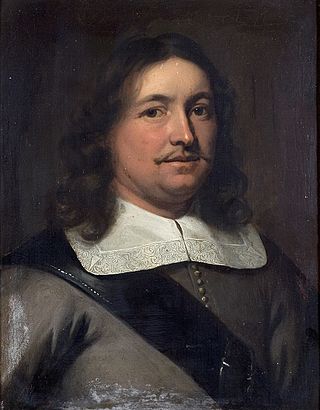 24
Joost van Trappen Banckert was a Dutch vice admiral who spent most of his career in the service of the admiralty of Zeeland.
24
Joost van Trappen Banckert was a Dutch vice admiral who spent most of his career in the service of the admiralty of Zeeland.
Anna of Saxony
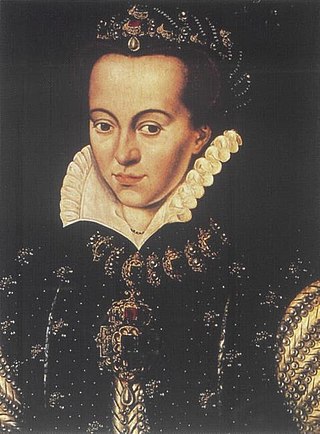 24
Anna of Saxony was the heiress of Maurice, Elector of Saxony, and Agnes, eldest daughter of Philip I, Landgrave of Hesse. Maurice's only son, Albert, died in infancy. Anna was the second wife of...
24
Anna of Saxony was the heiress of Maurice, Elector of Saxony, and Agnes, eldest daughter of Philip I, Landgrave of Hesse. Maurice's only son, Albert, died in infancy. Anna was the second wife of...
Wilhelmina Drucker
 24
Wilhelmina Drucker was a Dutch politician and writer. One of the first Dutch feminists, she was also known under her pseudonyms Gipsy, Gitano, and E. Prezcier.
24
Wilhelmina Drucker was a Dutch politician and writer. One of the first Dutch feminists, she was also known under her pseudonyms Gipsy, Gitano, and E. Prezcier.
Saint Peter
 24
Saint Peter, also known as Peter the Apostle, Simon Peter, Simeon, Simon, or Cephas, was one of the Twelve Apostles of Jesus Christ and one of the first leaders of the early Christian Church. He...
24
Saint Peter, also known as Peter the Apostle, Simon Peter, Simeon, Simon, or Cephas, was one of the Twelve Apostles of Jesus Christ and one of the first leaders of the early Christian Church. He...
Christopher Columbus
 23
Christopher Columbus was an Italian explorer and navigator from the Republic of Genoa who completed four Spanish-based voyages across the Atlantic Ocean sponsored by the Catholic Monarchs, opening...
23
Christopher Columbus was an Italian explorer and navigator from the Republic of Genoa who completed four Spanish-based voyages across the Atlantic Ocean sponsored by the Catholic Monarchs, opening...
Mahatma Gandhi
 23
Mohandas Karamchand Gandhi was an Indian lawyer, anti-colonial nationalist and political ethicist who employed nonviolent resistance to lead the successful campaign for India's independence from...
23
Mohandas Karamchand Gandhi was an Indian lawyer, anti-colonial nationalist and political ethicist who employed nonviolent resistance to lead the successful campaign for India's independence from...
Anthony van Dyck
 23
Sir Anthony van Dyck was a Flemish Baroque artist who became the leading court painter in England after success in the Spanish Netherlands and Italy.
23
Sir Anthony van Dyck was a Flemish Baroque artist who became the leading court painter in England after success in the Spanish Netherlands and Italy.
Jacqueline, Countess of Hainaut
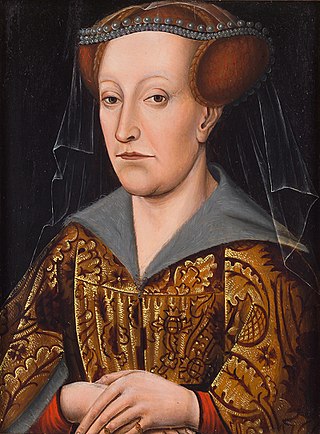 23
Jacqueline, of the House of Wittelsbach, was a noblewoman who ruled the counties of Holland, Zeeland and Hainaut in the Low Countries from 1417 to 1433. She was also Dauphine of France for a short...
23
Jacqueline, of the House of Wittelsbach, was a noblewoman who ruled the counties of Holland, Zeeland and Hainaut in the Low Countries from 1417 to 1433. She was also Dauphine of France for a short...
Jan Ligthart
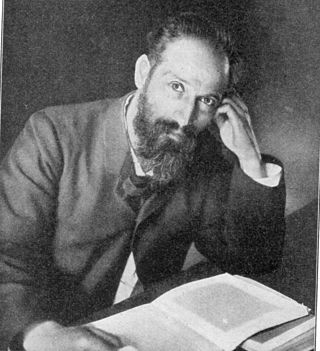 23
Jan Ligthart was a Dutch teacher and philosopher. He became known for his innovative educational methods and the modernisation of the Dutch education system. He wrote many articles and books about...
23
Jan Ligthart was a Dutch teacher and philosopher. He became known for his innovative educational methods and the modernisation of the Dutch education system. He wrote many articles and books about...
Isabelle de Charrière
 23
Isabelle de Charrière, known as Belle van Zuylen in the Netherlands, née Isabella Agneta Elisabeth van Tuyll van Serooskerken, and [Madame] Isabelle de Charrière elsewhere, was a Dutch and Swiss...
23
Isabelle de Charrière, known as Belle van Zuylen in the Netherlands, née Isabella Agneta Elisabeth van Tuyll van Serooskerken, and [Madame] Isabelle de Charrière elsewhere, was a Dutch and Swiss...
Francis of Assisi
 23
Giovanni di Pietro di Bernardone, known as Francis of Assisi, was an Italian mystic, poet and Catholic friar who founded the religious order of the Franciscans. He was inspired to lead a Christian...
23
Giovanni di Pietro di Bernardone, known as Francis of Assisi, was an Italian mystic, poet and Catholic friar who founded the religious order of the Franciscans. He was inspired to lead a Christian...
James the Great
 22
James the Great was one of the Twelve Apostles of Jesus. According to the New Testament, he was the second of the apostles to die, and the first to be martyred. Saint James is the patron saint of...
22
James the Great was one of the Twelve Apostles of Jesus. According to the New Testament, he was the second of the apostles to die, and the first to be martyred. Saint James is the patron saint of...
Saint Sebastian
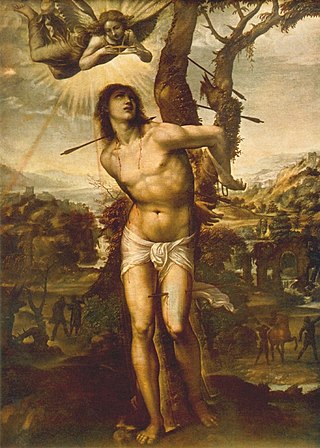 22
Sebastian was an early Christian saint and martyr. According to traditional belief, he was killed during the Diocletianic Persecution of Christians. He was initially tied to a post or tree and shot...
22
Sebastian was an early Christian saint and martyr. According to traditional belief, he was killed during the Diocletianic Persecution of Christians. He was initially tied to a post or tree and shot...
Nicolaes Maes
 22
Nicolaes Maes was a Dutch painter known for his genre scenes, portraits, religious compositions and the occasional still life. A pupil of Rembrandt in Amsterdam, he returned to work in his native...
22
Nicolaes Maes was a Dutch painter known for his genre scenes, portraits, religious compositions and the occasional still life. A pupil of Rembrandt in Amsterdam, he returned to work in his native...
Aeneas Mackay Jr.
 22
Æneas, Baron Mackay was a Dutch Anti-Revolutionary politician who served as Prime Minister of the Netherlands from 1888 to 1891. Born into a noble family from Gelderland, he studied law in Utrecht...
22
Æneas, Baron Mackay was a Dutch Anti-Revolutionary politician who served as Prime Minister of the Netherlands from 1888 to 1891. Born into a noble family from Gelderland, he studied law in Utrecht...
Rhijnvis Feith
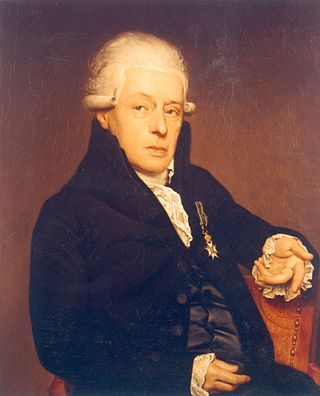 22
Jhr. Rhijnvis Feith was a Dutch poet.
22
Jhr. Rhijnvis Feith was a Dutch poet.
Annie Romein-Verschoor
 22
Anna Helena Margaretha (Annie) Romein-Verschoor was a Dutch writer and historian. She received the Constantijn Huygens Prize in 1970.
22
Anna Helena Margaretha (Annie) Romein-Verschoor was a Dutch writer and historian. She received the Constantijn Huygens Prize in 1970.
John Dalton
 22
John Dalton was an English chemist, physicist and meteorologist. He introduced the atomic theory into chemistry. He also researched colour blindness; as a result, the umbrella term for red-green...
22
John Dalton was an English chemist, physicist and meteorologist. He introduced the atomic theory into chemistry. He also researched colour blindness; as a result, the umbrella term for red-green...
Antoon Coolen
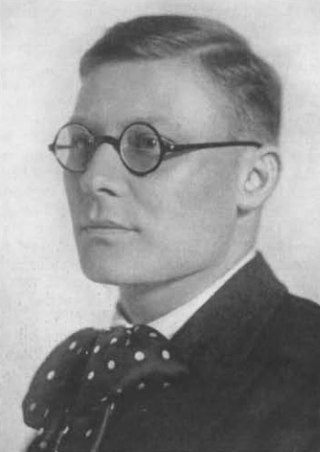 22
Antoon Coolen was a well-known Dutch writer of novels. He wrote the Boekenweekgeschenk for the Boekenweek of 1947 and a novel that was part of the Boekenweekgeschenk in 1939.
22
Antoon Coolen was a well-known Dutch writer of novels. He wrote the Boekenweekgeschenk for the Boekenweek of 1947 and a novel that was part of the Boekenweekgeschenk in 1939.
Gaspar Fagel
 22
Gaspar Fagel was a Dutch politician, jurist, and diplomat who authored correspondence from and on behalf of William III, Prince of Orange, during the English Revolution of 1688.
22
Gaspar Fagel was a Dutch politician, jurist, and diplomat who authored correspondence from and on behalf of William III, Prince of Orange, during the English Revolution of 1688.
Louis Botha
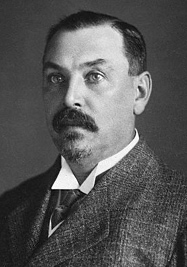 22
Louis Botha was a South African politician who was the first prime minister of the Union of South Africa – the forerunner of the modern South African state. A Boer war veteran during the Second Boer...
22
Louis Botha was a South African politician who was the first prime minister of the Union of South Africa – the forerunner of the modern South African state. A Boer war veteran during the Second Boer...
Gerrit van der Veen
 21
Gerrit van der Veen was a Dutch sculptor. He was a member of the Dutch underground, which resisted the German occupation of Amsterdam during World War II. The historian Robert-Jan van Pelt wrote:
In...
21
Gerrit van der Veen was a Dutch sculptor. He was a member of the Dutch underground, which resisted the German occupation of Amsterdam during World War II. The historian Robert-Jan van Pelt wrote:
In...
Pieter Caland
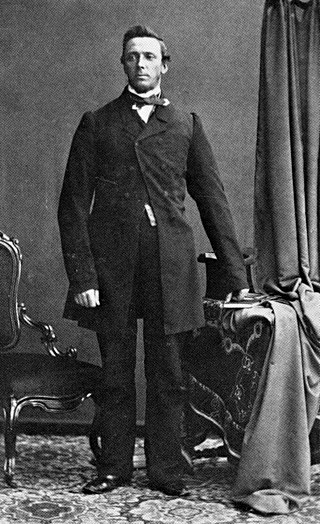 21
Pieter Caland was a Dutch civil engineer in the service of the Rijkswaterstaat. He devised the plan for the Nieuwe Waterweg and implemented it from 1864 to 1872.
21
Pieter Caland was a Dutch civil engineer in the service of the Rijkswaterstaat. He devised the plan for the Nieuwe Waterweg and implemented it from 1864 to 1872.
Willem Albert Scholten
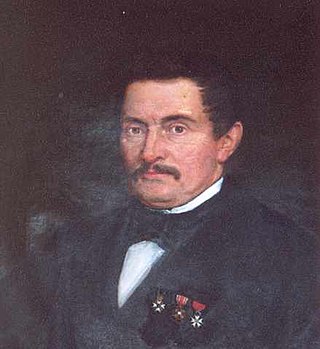 21
Willem Albert Scholten was a Dutch industrialist and landowner. He established the potato starch factory Eureka in Foxhol which laid the foundation of an industrial empire. Scholten would own 24...
21
Willem Albert Scholten was a Dutch industrialist and landowner. He established the potato starch factory Eureka in Foxhol which laid the foundation of an industrial empire. Scholten would own 24...
Gerard van Swieten
 21
Gerard van Swieten was a Dutch physician who from 1745 was the personal physician of the Holy Roman Empress Maria Theresa and transformed the Austrian health service and medical university education....
21
Gerard van Swieten was a Dutch physician who from 1745 was the personal physician of the Holy Roman Empress Maria Theresa and transformed the Austrian health service and medical university education....
Niccolò Paganini
 21
Niccolò Paganini was an Italian violinist and composer. He was the most celebrated violin virtuoso of his time, and left his mark as one of the pillars of modern violin technique. His 24 Caprices for...
21
Niccolò Paganini was an Italian violinist and composer. He was the most celebrated violin virtuoso of his time, and left his mark as one of the pillars of modern violin technique. His 24 Caprices for...
William Bentinck, 1st Earl of Portland
 20
William Bentinck, 1st Earl of Portland, was a Dutch-born English nobleman who became in an early stage the favourite of William, Prince of Orange, Stadtholder in the Netherlands, and future King of...
20
William Bentinck, 1st Earl of Portland, was a Dutch-born English nobleman who became in an early stage the favourite of William, Prince of Orange, Stadtholder in the Netherlands, and future King of...
Jan van Scorel
 20
Jan van Scorel was a Dutch painter, who played a leading role in introducing aspects of Italian Renaissance painting into Dutch and Flemish Renaissance painting. He was one of the early painters of...
20
Jan van Scorel was a Dutch painter, who played a leading role in introducing aspects of Italian Renaissance painting into Dutch and Flemish Renaissance painting. He was one of the early painters of...
Albert I, Duke of Bavaria
 20
Albert I, Duke of Lower Bavaria, was a feudal ruler of the counties of Holland, Hainaut, and Zeeland in the Low Countries. Additionally, he held a portion of the Bavarian province of Straubing, his...
20
Albert I, Duke of Lower Bavaria, was a feudal ruler of the counties of Holland, Hainaut, and Zeeland in the Low Countries. Additionally, he held a portion of the Bavarian province of Straubing, his...
Felix Timmermans
 20
Leopold Maximiliaan Felix Timmermans is a much translated author from Flanders.
He was nominated for the Nobel Prize in Literature three times.
20
Leopold Maximiliaan Felix Timmermans is a much translated author from Flanders.
He was nominated for the Nobel Prize in Literature three times.
Louis Braille
 20
Louis Braille was a French educator and the inventor of a reading and writing system named after him, braille, intended for use by visually impaired people. His system is used worldwide and remains...
20
Louis Braille was a French educator and the inventor of a reading and writing system named after him, braille, intended for use by visually impaired people. His system is used worldwide and remains...
Rudolf Diesel
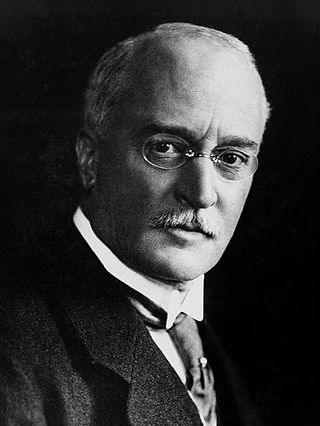 20
Rudolf Christian Karl Diesel was a German inventor and mechanical engineer who is famous for having invented the Diesel engine, which burns Diesel fuel; both are named after him.
20
Rudolf Christian Karl Diesel was a German inventor and mechanical engineer who is famous for having invented the Diesel engine, which burns Diesel fuel; both are named after him.
Menno ter Braak
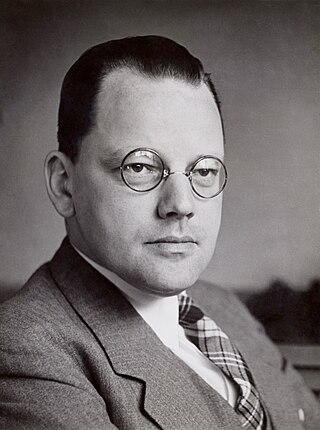 20
Menno ter Braak was a Dutch modernist writer, critic, essayist, and journalist.
20
Menno ter Braak was a Dutch modernist writer, critic, essayist, and journalist.
Haya van Someren
 20
Haya Victoria van Someren-Downer was a Dutch politician of the People's Party for Freedom and Democracy (VVD) and journalist.
20
Haya Victoria van Someren-Downer was a Dutch politician of the People's Party for Freedom and Democracy (VVD) and journalist.
Maria Montessori
 20
Maria Tecla Artemisia Montessori was an Italian physician and educator best known for her philosophy of education and her writing on scientific pedagogy. At an early age, Montessori enrolled in...
20
Maria Tecla Artemisia Montessori was an Italian physician and educator best known for her philosophy of education and her writing on scientific pedagogy. At an early age, Montessori enrolled in...
Ferdinand Domela Nieuwenhuis
 20
Ferdinand Jacobus Domela Nieuwenhuis was a Dutch socialist politician and later a social anarchist and anti-militarist. He was a Lutheran preacher who, after he lost his faith, started a political...
20
Ferdinand Jacobus Domela Nieuwenhuis was a Dutch socialist politician and later a social anarchist and anti-militarist. He was a Lutheran preacher who, after he lost his faith, started a political...
Richard Hol
 20
Richard Hol was a Dutch composer and conductor, based for most of his career at Utrecht. His conservative music showed the influence of Ludwig van Beethoven, Felix Mendelssohn, and Robert Schumann...
20
Richard Hol was a Dutch composer and conductor, based for most of his career at Utrecht. His conservative music showed the influence of Ludwig van Beethoven, Felix Mendelssohn, and Robert Schumann...
William III of the Netherlands
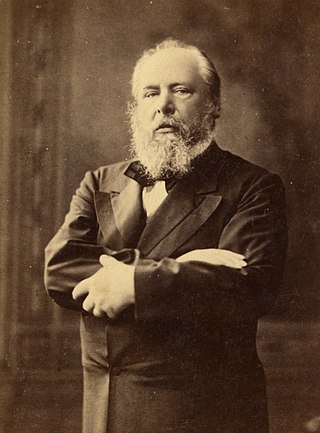 20
William III was King of the Netherlands and Grand Duke of Luxembourg from 1849 until his death in 1890. He was also the Duke of Limburg from 1849 until the abolition of the duchy in 1866.
20
William III was King of the Netherlands and Grand Duke of Luxembourg from 1849 until his death in 1890. He was also the Duke of Limburg from 1849 until the abolition of the duchy in 1866.
Heinrich von Veldeke
 20
Heinrich von Veldeke is the first writer in the Low Countries known by name who wrote in a European language other than Latin. He was born in Veldeke, which was a hamlet of Spalbeek, part of the...
20
Heinrich von Veldeke is the first writer in the Low Countries known by name who wrote in a European language other than Latin. He was born in Veldeke, which was a hamlet of Spalbeek, part of the...
Johanna Naber
 19
Johanna Wilhelmina Antoinette Naber was a Dutch feminist, historian and author during the first feminist wave. She was one of the three founders of the International Archives for the Women's Movement...
19
Johanna Wilhelmina Antoinette Naber was a Dutch feminist, historian and author during the first feminist wave. She was one of the three founders of the International Archives for the Women's Movement...
Wilhelmus Marinus Bekkers
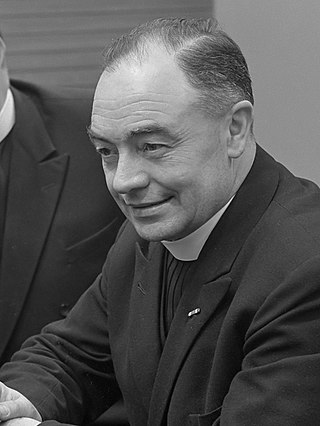 19
Wilhelmus Marinus Bekkers was een Nederlands rooms-katholiek bisschop. Bekkers werd in 1957 coadjutor en titulair-bisschop van Thasos. Hij was bisschop van het bisdom 's-Hertogenbosch van 27 juni...
19
Wilhelmus Marinus Bekkers was een Nederlands rooms-katholiek bisschop. Bekkers werd in 1957 coadjutor en titulair-bisschop van Thasos. Hij was bisschop van het bisdom 's-Hertogenbosch van 27 juni...
Anton van Duinkerken
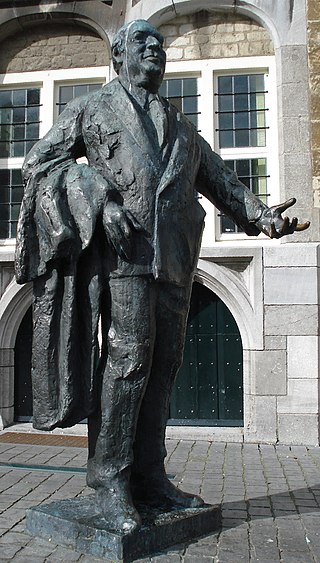 19
Wilhelmus Johannes Maria Antonius Asselbergs, better known under his pseudonym Anton van Duinkerken, was a Dutch poet, essayist, and academic.
19
Wilhelmus Johannes Maria Antonius Asselbergs, better known under his pseudonym Anton van Duinkerken, was a Dutch poet, essayist, and academic.
Johannes Zwijsen
 19
Johannes Zwijsen was a Dutch Catholic prelate who served as the first Archbishop of Utrecht after the reestablishment of the episcopal hierarchy in the Netherlands in 1853.
19
Johannes Zwijsen was a Dutch Catholic prelate who served as the first Archbishop of Utrecht after the reestablishment of the episcopal hierarchy in the Netherlands in 1853.
Pieter Langendijk
 19
Pieter Langendijk was a damask weaver, city artist, dramatist, and poet.
19
Pieter Langendijk was a damask weaver, city artist, dramatist, and poet.
Willem Bontekoe
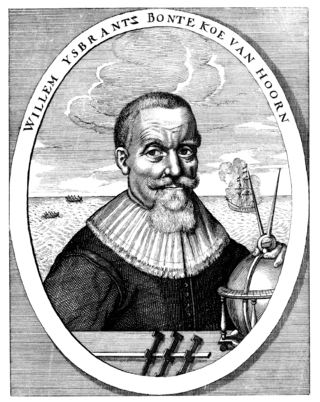 19
Willem Ysbrandtszoon Bontekoe was a skipper in the Dutch East India Company (VOC), who made only one voyage for the company (1618–1625). He became widely known because of the journal of his...
19
Willem Ysbrandtszoon Bontekoe was a skipper in the Dutch East India Company (VOC), who made only one voyage for the company (1618–1625). He became widely known because of the journal of his...
Louis Bouwmeester
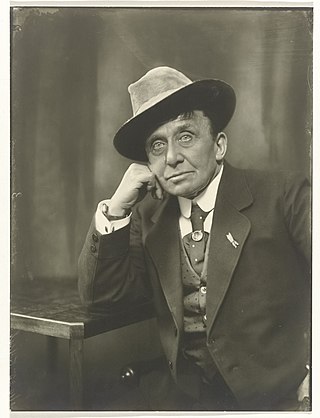 19
Louis Frederik Johannes Bouwmeester was a Dutch actor best known for his Shakespeare interpretations. He is also known as Louis Bouwmeester Sr. for distinction from his son.
19
Louis Frederik Johannes Bouwmeester was a Dutch actor best known for his Shakespeare interpretations. He is also known as Louis Bouwmeester Sr. for distinction from his son.
Duke Ellington
 19
Edward Kennedy "Duke" Ellington was an American jazz pianist, composer, and leader of his eponymous jazz orchestra from 1923 through the rest of his life.
19
Edward Kennedy "Duke" Ellington was an American jazz pianist, composer, and leader of his eponymous jazz orchestra from 1923 through the rest of his life.
Herman Bernard Wiardi Beckman
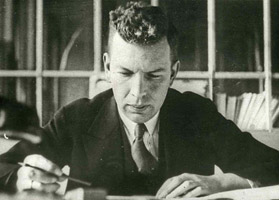 19
Herman Bernard Wiardi Beckman, bijgenaamd Stuuf, was een Nederlands politicus en een Nederlandse verzetsstrijder tijdens de Tweede Wereldoorlog. Wiardi Beckman was namens de Sociaal-Democratische...
19
Herman Bernard Wiardi Beckman, bijgenaamd Stuuf, was een Nederlands politicus en een Nederlandse verzetsstrijder tijdens de Tweede Wereldoorlog. Wiardi Beckman was namens de Sociaal-Democratische...
Catharina van Rennes
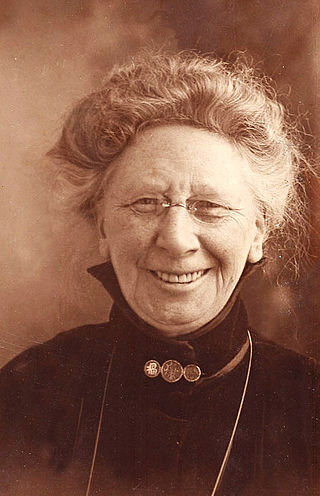 19
Catharina van Rennes was a Dutch music educator, soprano singer and composer.
19
Catharina van Rennes was a Dutch music educator, soprano singer and composer.
Jacob van Heemskerck
 19
Jacob van Heemskerck was a Dutch explorer and naval admiral. He is generally known for his victory over the Spanish at the Battle of Gibraltar, where he ultimately lost his life.
19
Jacob van Heemskerck was a Dutch explorer and naval admiral. He is generally known for his victory over the Spanish at the Battle of Gibraltar, where he ultimately lost his life.
Jan Pieterszoon Coen
 18
Jan Pieterszoon Coen was an officer of the Dutch East India Company (VOC) in the early 17th century, holding two terms as governor-general of the Dutch East Indies. He was the founder of Batavia,...
18
Jan Pieterszoon Coen was an officer of the Dutch East India Company (VOC) in the early 17th century, holding two terms as governor-general of the Dutch East Indies. He was the founder of Batavia,...
Saint Lawrence
 18
Saint Lawrence or Laurence was one of the seven deacons of the city of Rome under Pope Sixtus II who were martyred in the persecution of the Christians that the Roman Emperor Valerian ordered in 258.
18
Saint Lawrence or Laurence was one of the seven deacons of the city of Rome under Pope Sixtus II who were martyred in the persecution of the Christians that the Roman Emperor Valerian ordered in 258.
Johannes Verhulst
 18
Johannes Josephus Hermanus Verhulst was a Dutch composer and conductor. As a composer mainly of songs and as administrator of Dutch musical life, his influence during his lifetime was considerable.
18
Johannes Josephus Hermanus Verhulst was a Dutch composer and conductor. As a composer mainly of songs and as administrator of Dutch musical life, his influence during his lifetime was considerable.
Gerardus Mercator
 18
Gerardus Mercator was a Flemish geographer, cosmographer and cartographer. He is most renowned for creating the 1569 world map based on a new projection which represented sailing courses of constant...
18
Gerardus Mercator was a Flemish geographer, cosmographer and cartographer. He is most renowned for creating the 1569 world map based on a new projection which represented sailing courses of constant...
Jan Campert
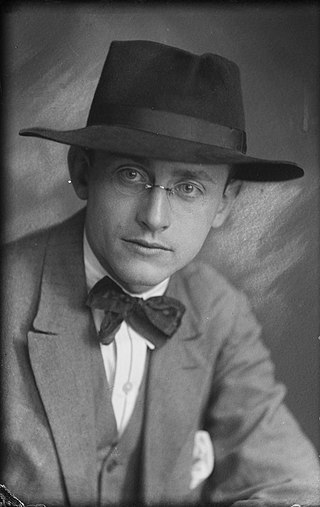 18
Jan Remco Theodoor Campert was a Dutch journalist, theater critic and writer who lived in Amsterdam. During the German occupation of the Netherlands in World War II Campert was arrested for aiding...
18
Jan Remco Theodoor Campert was a Dutch journalist, theater critic and writer who lived in Amsterdam. During the German occupation of the Netherlands in World War II Campert was arrested for aiding...
Peter Stuyvesant
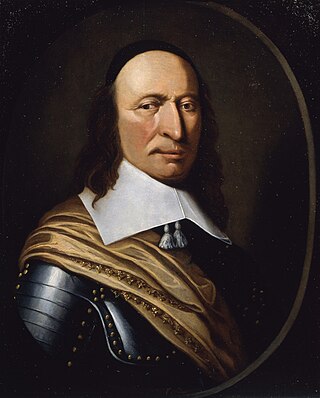 18
Peter Stuyvesant was a Dutch colonial officer who served as the last Dutch director-general of the colony of New Netherland from 1647 until it was ceded provisionally to the English in 1664, after...
18
Peter Stuyvesant was a Dutch colonial officer who served as the last Dutch director-general of the colony of New Netherland from 1647 until it was ceded provisionally to the English in 1664, after...
Florence Nightingale
 18
Florence Nightingale was an English social reformer, statistician and the founder of modern nursing. Nightingale came to prominence while serving as a manager and trainer of nurses during the Crimean...
18
Florence Nightingale was an English social reformer, statistician and the founder of modern nursing. Nightingale came to prominence while serving as a manager and trainer of nurses during the Crimean...
Jan Tinbergen
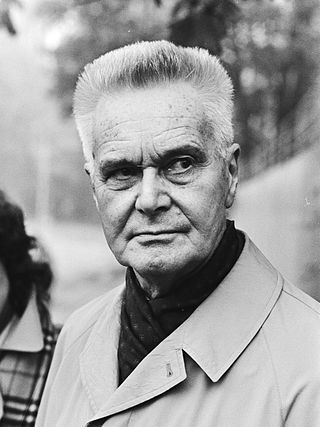 18
Jan Tinbergen was a Dutch economist who was awarded the first Nobel Memorial Prize in Economic Sciences in 1969, which he shared with Ragnar Frisch for having developed and applied dynamic models for...
18
Jan Tinbergen was a Dutch economist who was awarded the first Nobel Memorial Prize in Economic Sciences in 1969, which he shared with Ragnar Frisch for having developed and applied dynamic models for...
Judith Leyster
 18
Judith Jans Leyster was a Dutch Golden Age painter of genre works, portraits, and still lifes. Her work was highly regarded by her contemporaries, but largely forgotten after her death. Her entire...
18
Judith Jans Leyster was a Dutch Golden Age painter of genre works, portraits, and still lifes. Her work was highly regarded by her contemporaries, but largely forgotten after her death. Her entire...
Theo Dobbe
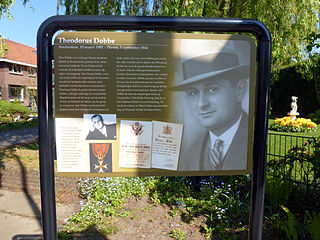 18
Theodorus (Theo) Dobbe was een leidende Nederlandse verzetsstrijder tijdens de Tweede Wereldoorlog. In 1943 werd hij hoofd van de zogenaamde 'opruimingsdienst' van de Landelijke Knokploegen, KPO.
18
Theodorus (Theo) Dobbe was een leidende Nederlandse verzetsstrijder tijdens de Tweede Wereldoorlog. In 1943 werd hij hoofd van de zogenaamde 'opruimingsdienst' van de Landelijke Knokploegen, KPO.
Karel de Bazel
 18
Karel Petrus Cornelis de Bazel was a modern Dutch architect, engraver, draftsman, furniture designer, carpet designer, glass artist and bookbinding designer. He was the teacher of Adriaan Frederik...
18
Karel Petrus Cornelis de Bazel was a modern Dutch architect, engraver, draftsman, furniture designer, carpet designer, glass artist and bookbinding designer. He was the teacher of Adriaan Frederik...
Gerrit Achterberg
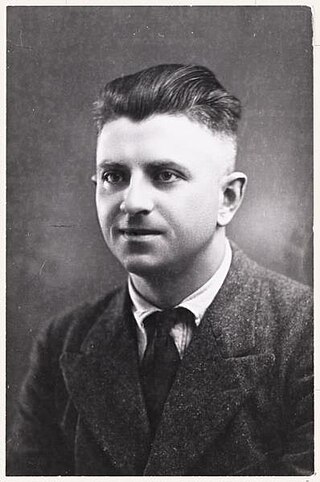 18
Gerrit Achterberg was a Dutch poet. His early poetry concerned a desire to be united with a beloved in death.
18
Gerrit Achterberg was a Dutch poet. His early poetry concerned a desire to be united with a beloved in death.
Melis Stoke
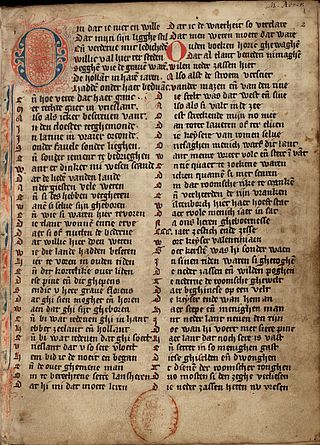 18
Melis Stoke was a Dutch writer who lived in the 13th century.
18
Melis Stoke was a Dutch writer who lived in the 13th century.
Marie Koenen
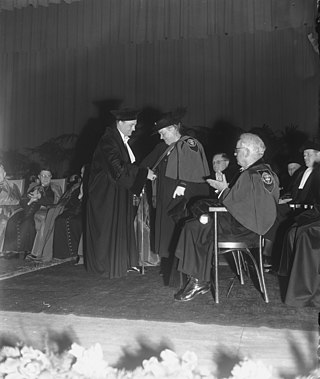 17
Maria Hubertina Jacoba Isabella Koenen was een Nederlands romanschrijfster.
17
Maria Hubertina Jacoba Isabella Koenen was een Nederlands romanschrijfster.
Willem Hendrik Keesom
 17
Willem Hendrik Keesom was a Dutch physicist who, in 1926, invented a method to freeze liquid helium.
He also developed the first mathematical description of dipole–dipole interactions in 1921. Thus,...
17
Willem Hendrik Keesom was a Dutch physicist who, in 1926, invented a method to freeze liquid helium.
He also developed the first mathematical description of dipole–dipole interactions in 1921. Thus,...
Louis Bonaparte
 17
Louis Napoléon Bonaparte was a younger brother of Napoleon I, Emperor of the French. He was a monarch in his own right from 1806 to 1810, ruling over the Kingdom of Holland. In that capacity, he was...
17
Louis Napoléon Bonaparte was a younger brother of Napoleon I, Emperor of the French. He was a monarch in his own right from 1806 to 1810, ruling over the Kingdom of Holland. In that capacity, he was...
Baruch Spinoza
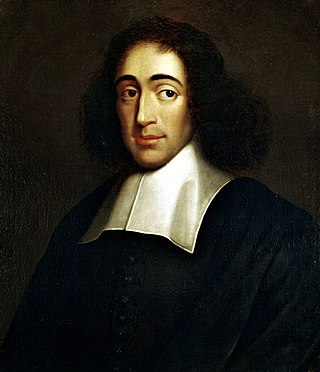 17
Baruch (de) Spinoza, also known under his Latinized pen name Benedictus de Spinoza, was a philosopher of Portuguese-Jewish origin. As a forerunner of the Age of Reason, Spinoza significantly...
17
Baruch (de) Spinoza, also known under his Latinized pen name Benedictus de Spinoza, was a philosopher of Portuguese-Jewish origin. As a forerunner of the Age of Reason, Spinoza significantly...
Charles V, Holy Roman Emperor
 17
Charles V was Holy Roman Emperor and Archduke of Austria from 1519 to 1556, King of Spain from 1516 to 1556, and Lord of the Netherlands as titular Duke of Burgundy from 1506 to 1555. He was heir to...
17
Charles V was Holy Roman Emperor and Archduke of Austria from 1519 to 1556, King of Spain from 1516 to 1556, and Lord of the Netherlands as titular Duke of Burgundy from 1506 to 1555. He was heir to...
Carry van Bruggen
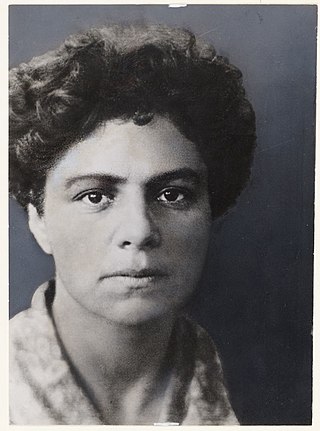 17
Carry van Bruggen was a Dutch writer. She also wrote under the name Justine Abbing.
17
Carry van Bruggen was a Dutch writer. She also wrote under the name Justine Abbing.
Aart van der Leeuw
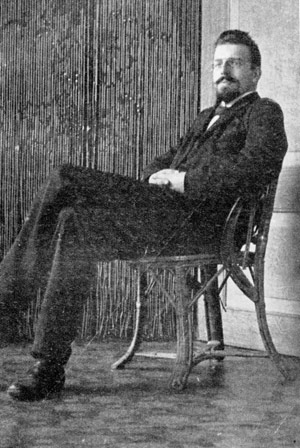 17
Aart van der Leeuw was a Dutch writer of prose fiction and poetry. His reputation rests mostly on two novels, Ik en mijn speelman (1927) and De kleine Rudolf (1930).
17
Aart van der Leeuw was a Dutch writer of prose fiction and poetry. His reputation rests mostly on two novels, Ik en mijn speelman (1927) and De kleine Rudolf (1930).
Cornelis Drebbel
 17
Cornelis Jacobszoon Drebbel was a Dutch engineer and inventor. He was the builder of the first operational submarine in 1620 and an innovator who contributed to the development of measurement and...
17
Cornelis Jacobszoon Drebbel was a Dutch engineer and inventor. He was the builder of the first operational submarine in 1620 and an innovator who contributed to the development of measurement and...
Charles Darwin
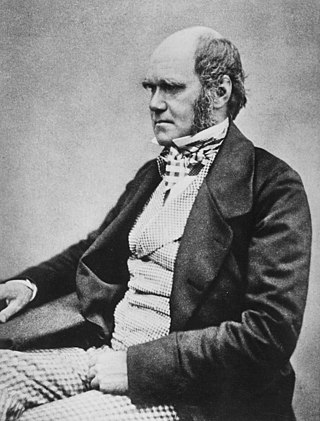 17
Charles Robert Darwin was an English naturalist, geologist and biologist, widely known for his contributions to evolutionary biology. His proposition that all species of life have descended from a...
17
Charles Robert Darwin was an English naturalist, geologist and biologist, widely known for his contributions to evolutionary biology. His proposition that all species of life have descended from a...
Carel Willink
 17
Albert Carel Willink was a Dutch painter who called his style of Magic realism "imaginary realism".
17
Albert Carel Willink was a Dutch painter who called his style of Magic realism "imaginary realism".
Gabriël Metsu
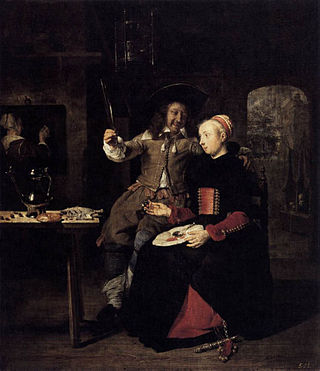 17
Gabriël Metsu (1629–1667) was a Dutch painter of history paintings, still lifes, portraits, and genre works. He was "a highly eclectic artist, who did not adhere to a consistent style, technique, or...
17
Gabriël Metsu (1629–1667) was a Dutch painter of history paintings, still lifes, portraits, and genre works. He was "a highly eclectic artist, who did not adhere to a consistent style, technique, or...
Willem Elsschot
 17
Alphonsus Josephus de Ridder was a Belgian writer and poet who wrote under the pseudonym Willem Elsschot. One of the most prominent Flemish authors, his most famous work, Cheese (1933) is the most...
17
Alphonsus Josephus de Ridder was a Belgian writer and poet who wrote under the pseudonym Willem Elsschot. One of the most prominent Flemish authors, his most famous work, Cheese (1933) is the most...
Herman de Man
 17
Salomon Herman "Sal" Hamburger, known under his pseudonym Herman de Man, was a Dutch novelist.
17
Salomon Herman "Sal" Hamburger, known under his pseudonym Herman de Man, was a Dutch novelist.
Adriaen Brouwer
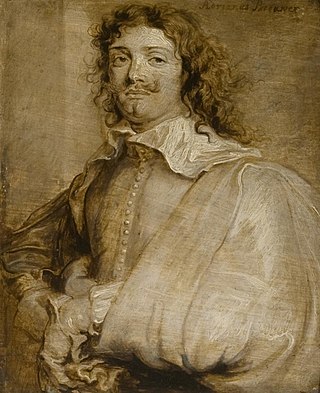 17
Adriaen Brouwer was a Flemish painter active in Flanders and the Dutch Republic in the first half of the 17th century. Brouwer was an important innovator of genre painting through his vivid...
17
Adriaen Brouwer was a Flemish painter active in Flanders and the Dutch Republic in the first half of the 17th century. Brouwer was an important innovator of genre painting through his vivid...
Marco Polo
 16
Marco Polo was a Venetian merchant, explorer and writer who travelled through Asia along the Silk Road between 1271 and 1295. His travels are recorded in The Travels of Marco Polo, a book that...
16
Marco Polo was a Venetian merchant, explorer and writer who travelled through Asia along the Silk Road between 1271 and 1295. His travels are recorded in The Travels of Marco Polo, a book that...
Robert Baden-Powell, 1st Baron Baden-Powell
 16
Lieutenant-General Robert Stephenson Smyth Baden-Powell, 1st Baron Baden-Powell, was a British Army officer, writer, founder and first Chief Scout of the world-wide Scout Movement, and founder, with...
16
Lieutenant-General Robert Stephenson Smyth Baden-Powell, 1st Baron Baden-Powell, was a British Army officer, writer, founder and first Chief Scout of the world-wide Scout Movement, and founder, with...
Jacob van Deventer (general)
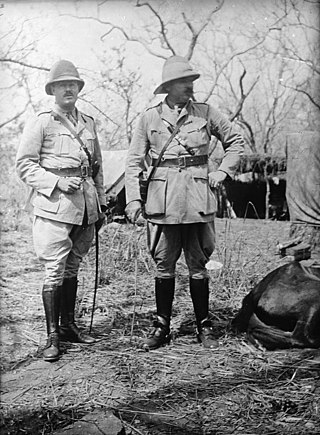 16
Lieutenant-General Sir Jacob Louis van Deventer KCB CMG DTD was a South African military commander.
16
Lieutenant-General Sir Jacob Louis van Deventer KCB CMG DTD was a South African military commander.
Jeltje de Bosch Kemper
 16
Jkvr. Jeltje de Bosch Kemper was a Dutch feminist.
16
Jkvr. Jeltje de Bosch Kemper was a Dutch feminist.
John Bosco
 16
John Melchior Bosco, SDB, popularly known as Don Bosco, was an Italian Catholic priest, educator and writer of the 19th century. While working in Turin, where the population suffered many of the ill...
16
John Melchior Bosco, SDB, popularly known as Don Bosco, was an Italian Catholic priest, educator and writer of the 19th century. While working in Turin, where the population suffered many of the ill...
Steve Biko
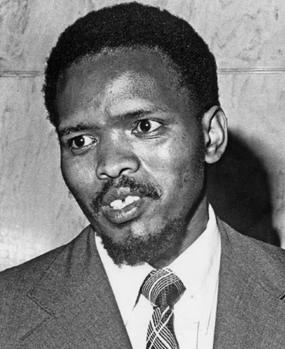 16
Bantu Stephen Biko OMSG was a South African anti-apartheid activist. Ideologically an African nationalist and African socialist, he was at the forefront of a grassroots anti-apartheid campaign known...
16
Bantu Stephen Biko OMSG was a South African anti-apartheid activist. Ideologically an African nationalist and African socialist, he was at the forefront of a grassroots anti-apartheid campaign known...
Simon Carmiggelt
 16
Simon Carmiggelt was a Dutch writer, journalist, and poet who became a well known public figure in the Netherlands because of his daily newspaper columns and his television appearances.
16
Simon Carmiggelt was a Dutch writer, journalist, and poet who became a well known public figure in the Netherlands because of his daily newspaper columns and his television appearances.
Carel Steven Adama van Scheltema
 16
Carel Steven Adama van Scheltema was a Dutch socialist poet.
16
Carel Steven Adama van Scheltema was a Dutch socialist poet.
Conrad Busken Huet
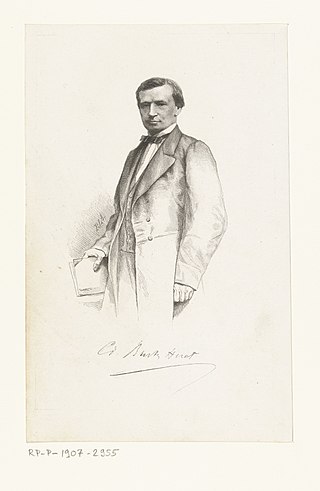 16
Conrad Busken Huet was a Dutch pastor, journalist and literary critic.
16
Conrad Busken Huet was a Dutch pastor, journalist and literary critic.
Johann VI, Count of Nassau-Dillenburg
 16
Count John VI of Nassau-Dillenburg was the second son of William the Rich and the younger brother of William the Silent. He has a special place in the history of the Netherlands because he is the...
16
Count John VI of Nassau-Dillenburg was the second son of William the Rich and the younger brother of William the Silent. He has a special place in the history of the Netherlands because he is the...
Plato
 16
Plato, born Aristocles, was an ancient Greek philosopher of the Classical period who is considered a foundational thinker in Western philosophy and an innovator of the written dialogue and dialectic...
16
Plato, born Aristocles, was an ancient Greek philosopher of the Classical period who is considered a foundational thinker in Western philosophy and an innovator of the written dialogue and dialectic...
Charley Toorop
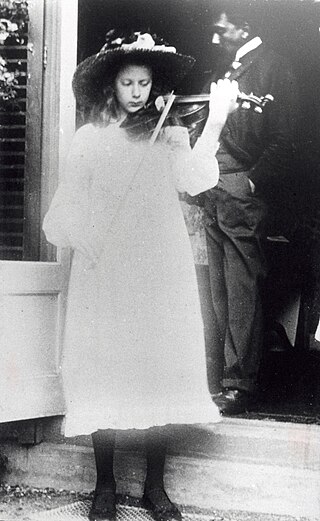 16
Charley Toorop was a Dutch painter and lithographer. Her full name was Annie Caroline Pontifex Fernhout-Toorop.
16
Charley Toorop was a Dutch painter and lithographer. Her full name was Annie Caroline Pontifex Fernhout-Toorop.
Rosa Manus
 16
Rosette Susanna "Rosa" Manus (Dutch pronunciation: [roːˈsɛtə syˈsɑnaː ˈroːsaː ˈmaːnʏs] was born 20 August 1881 and died either at Auschwitz or Ravensbruck in 1942. She was a Jewish Dutch pacifist and...
16
Rosette Susanna "Rosa" Manus (Dutch pronunciation: [roːˈsɛtə syˈsɑnaː ˈroːsaː ˈmaːnʏs] was born 20 August 1881 and died either at Auschwitz or Ravensbruck in 1942. She was a Jewish Dutch pacifist and...
Fridtjof Nansen
 16
Fridtjof Wedel-Jarlsberg Nansen was a Norwegian polymath and Nobel Peace Prize laureate. He gained prominence at various points in his life as an explorer, scientist, diplomat, humanitarian and...
16
Fridtjof Wedel-Jarlsberg Nansen was a Norwegian polymath and Nobel Peace Prize laureate. He gained prominence at various points in his life as an explorer, scientist, diplomat, humanitarian and...
Paul Gabriël
 16
Paul Joseph Constantin Gabriël or Paul Gabriël was a painter, draftsman, watercolorist, and etcher who belonged to the Hague School.
16
Paul Joseph Constantin Gabriël or Paul Gabriël was a painter, draftsman, watercolorist, and etcher who belonged to the Hague School.
Betsy Perk
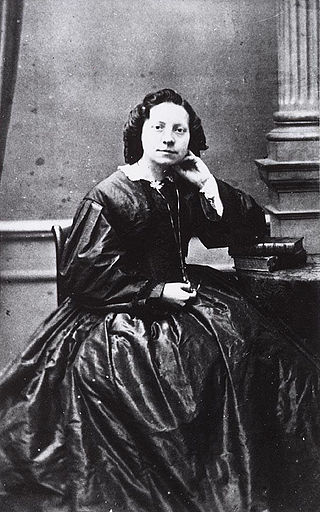 16
Christina Elizabeth (Betsy) Perk, was a Dutch author of novels and plays, and a pioneer of the Dutch women's movement, who wrote under the pen names Philemon, Liesbeth van Altena, and Spirito. She is...
16
Christina Elizabeth (Betsy) Perk, was a Dutch author of novels and plays, and a pioneer of the Dutch women's movement, who wrote under the pen names Philemon, Liesbeth van Altena, and Spirito. She is...
Johannes de Jong
 16
Johannes de Jong was a Dutch Cardinal of the Roman Catholic Church. He served as Archbishop of Utrecht from 1936 until his death, and was elevated to the cardinalate in 1946 by Pope Pius XII.
16
Johannes de Jong was a Dutch Cardinal of the Roman Catholic Church. He served as Archbishop of Utrecht from 1936 until his death, and was elevated to the cardinalate in 1946 by Pope Pius XII.
Jan Lievens
 16
Jan Lievens was a Dutch Golden Age painter who was associated with his close contemporary Rembrandt, a year older, in the early parts of their careers. They shared a birthplace in Leiden, training...
16
Jan Lievens was a Dutch Golden Age painter who was associated with his close contemporary Rembrandt, a year older, in the early parts of their careers. They shared a birthplace in Leiden, training...
Henriëtte Bosmans
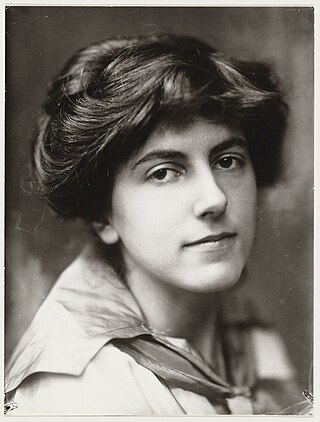 16
Henriëtte Hilda Bosmans was a Dutch composer and pianist.
16
Henriëtte Hilda Bosmans was a Dutch composer and pianist.
Jan Sluyters
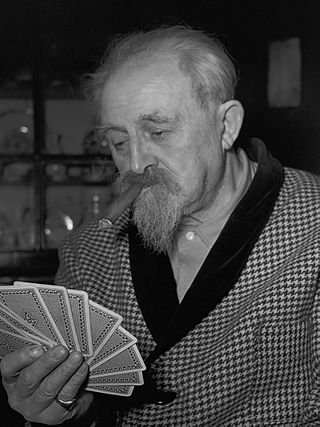 16
Johannes Carolus Bernardus (Jan) Sluijters, or Sluyters was a Dutch painter and co-founder of the Moderne Kunstkring.
16
Johannes Carolus Bernardus (Jan) Sluijters, or Sluyters was a Dutch painter and co-founder of the Moderne Kunstkring.
Pope Cornelius
 16
Pope Cornelius was the bishop of Rome from 6th or 13th March 251 until his martyrdom in June 253. He was pope during and following a period of persecution of the church, while a schism occurred over...
16
Pope Cornelius was the bishop of Rome from 6th or 13th March 251 until his martyrdom in June 253. He was pope during and following a period of persecution of the church, while a schism occurred over...
Lou van den Dries
 16
Laurentius Petrus Dignus "Lou" van den Dries is a Dutch mathematician working in model theory. He is a professor emeritus of mathematics at the University of Illinois Urbana-Champaign.
16
Laurentius Petrus Dignus "Lou" van den Dries is a Dutch mathematician working in model theory. He is a professor emeritus of mathematics at the University of Illinois Urbana-Champaign.
Hugo de Vries
 15
Hugo Marie de Vries was a Dutch botanist and one of the first geneticists. He is known chiefly for suggesting the concept of genes, rediscovering the laws of heredity in the 1890s while apparently...
15
Hugo Marie de Vries was a Dutch botanist and one of the first geneticists. He is known chiefly for suggesting the concept of genes, rediscovering the laws of heredity in the 1890s while apparently...
Pieter van Vollenhoven
 15
Pieter van Vollenhoven Jr. is the husband of Princess Margriet of the Netherlands and a member, by marriage, of the Dutch royal house.
15
Pieter van Vollenhoven Jr. is the husband of Princess Margriet of the Netherlands and a member, by marriage, of the Dutch royal house.
Charlemagne
 15
Charlemagne was King of the Franks from 768, King of the Lombards from 774, and Emperor of the Carolingian Empire from 800, holding all these titles until his death in 814. Charlemagne succeeded in...
15
Charlemagne was King of the Franks from 768, King of the Lombards from 774, and Emperor of the Carolingian Empire from 800, holding all these titles until his death in 814. Charlemagne succeeded in...
Johan Jongkind
 15
Johan Barthold Jongkind was a Dutch painter and printmaker. He painted marine landscapes in a free manner and is regarded as a forerunner of Impressionism.
15
Johan Barthold Jongkind was a Dutch painter and printmaker. He painted marine landscapes in a free manner and is regarded as a forerunner of Impressionism.
Thomas à Kempis
 15
Thomas à Kempis, CRV was a German-Dutch Catholic canon regular of the late medieval period and the author of The Imitation of Christ, published anonymously in Latin in the Netherlands c. 1418–1427,...
15
Thomas à Kempis, CRV was a German-Dutch Catholic canon regular of the late medieval period and the author of The Imitation of Christ, published anonymously in Latin in the Netherlands c. 1418–1427,...
Frans van Mieris the Elder
 15
Frans van Mieris the Elder, was a Dutch Golden Age genre and portrait painter. The leading member of a Leiden family of painters, his sons Jan (1660–1690) and Willem (1662–1747) and his grandson...
15
Frans van Mieris the Elder, was a Dutch Golden Age genre and portrait painter. The leading member of a Leiden family of painters, his sons Jan (1660–1690) and Willem (1662–1747) and his grandson...
Andrew the Apostle
 15
Andrew the Apostle, also called Saint Andrew, was an apostle of Jesus. According to the New Testament, he was a fisherman and one of the Twelve Apostles chosen by Jesus. The title First-Called stems...
15
Andrew the Apostle, also called Saint Andrew, was an apostle of Jesus. According to the New Testament, he was a fisherman and one of the Twelve Apostles chosen by Jesus. The title First-Called stems...
John van Ruysbroeck
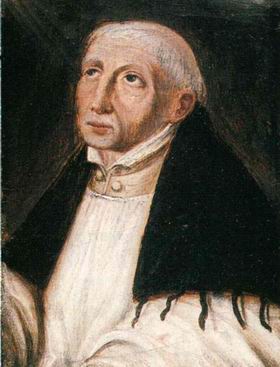 15
John van Ruysbroeck, original Middle Dutch name Jan van Ruusbroec, was an Augustinian canon and one of the most important of the medieval mystics of the Low Countries. Some of his main literary works...
15
John van Ruysbroeck, original Middle Dutch name Jan van Ruusbroec, was an Augustinian canon and one of the most important of the medieval mystics of the Low Countries. Some of his main literary works...
Hugo van der Goes
 15
Hugo van der Goes was one of the most significant and original Flemish painters of the late 15th century. Van der Goes was an important painter of altarpieces as well as portraits. He introduced...
15
Hugo van der Goes was one of the most significant and original Flemish painters of the late 15th century. Van der Goes was an important painter of altarpieces as well as portraits. He introduced...
Socrates
 15
Socrates was a Greek philosopher from Athens who is credited as the founder of Western philosophy and among the first moral philosophers of the ethical tradition of thought. An enigmatic figure,...
15
Socrates was a Greek philosopher from Athens who is credited as the founder of Western philosophy and among the first moral philosophers of the ethical tradition of thought. An enigmatic figure,...
Harriët Freezer
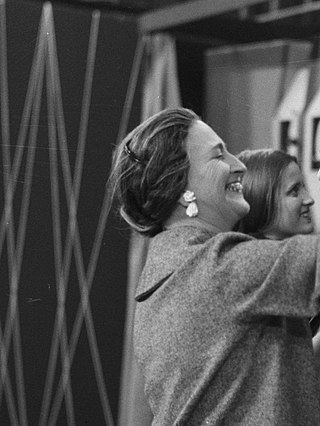 15
Harriët Freezer, pseudoniem van Wilhelmina (Miep) Eybergen was een Nederlandse prozaschrijfster, journaliste en feministe.
15
Harriët Freezer, pseudoniem van Wilhelmina (Miep) Eybergen was een Nederlandse prozaschrijfster, journaliste en feministe.
Jan van Eyck
 15
Jan van Eyck was a Flemish painter active in Bruges who was one of the early innovators of what became known as Early Netherlandish painting, and one of the most significant representatives of Early...
15
Jan van Eyck was a Flemish painter active in Bruges who was one of the early innovators of what became known as Early Netherlandish painting, and one of the most significant representatives of Early...
Dorus Rijkers
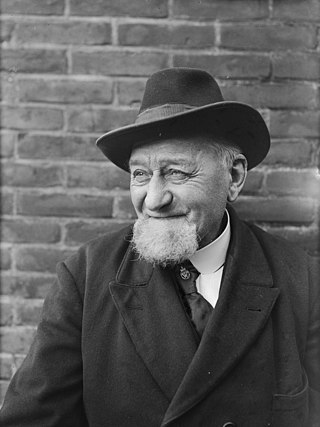 15
Theodorus "Dorus" Rijkers was a famous Dutch lifeboat captain and folk hero, most famous for his sea rescues of 487 shipwrecked victims over a total of 38 rescue operations, and at least 25 before...
15
Theodorus "Dorus" Rijkers was a famous Dutch lifeboat captain and folk hero, most famous for his sea rescues of 487 shipwrecked victims over a total of 38 rescue operations, and at least 25 before...
Pieter van Musschenbroek
 15
Pieter van Musschenbroek was a Dutch scientist. He was a professor in Duisburg, Utrecht, and Leiden, where he held positions in mathematics, philosophy, medicine, and astronomy. He is credited with...
15
Pieter van Musschenbroek was a Dutch scientist. He was a professor in Duisburg, Utrecht, and Leiden, where he held positions in mathematics, philosophy, medicine, and astronomy. He is credited with...
Robert Schuman
 15
Jean-Baptiste Nicolas Robert Schuman was a Luxembourg-born French statesman. Schuman was a Christian democratic political thinker and activist. Twice Prime Minister of France, a reformist Minister of...
15
Jean-Baptiste Nicolas Robert Schuman was a Luxembourg-born French statesman. Schuman was a Christian democratic political thinker and activist. Twice Prime Minister of France, a reformist Minister of...
Aurelia (mother of Caesar)
 15
Aurelia was the mother of the Roman general and statesman Julius Caesar.
15
Aurelia was the mother of the Roman general and statesman Julius Caesar.
Dag Hammarskjöld
 14
Dag Hjalmar Agne Carl Hammarskjöld was a Swedish economist and diplomat who served as the second Secretary-General of the United Nations from April 1953 until his death in a plane crash in September...
14
Dag Hjalmar Agne Carl Hammarskjöld was a Swedish economist and diplomat who served as the second Secretary-General of the United Nations from April 1953 until his death in a plane crash in September...
Saint Roch
 14
Roch, also called Rock in English, was a Majorcan Catholic confessor whose death is commemorated on 16 August and 9 September in Italy; he was especially invoked against the plague. He has the...
14
Roch, also called Rock in English, was a Majorcan Catholic confessor whose death is commemorated on 16 August and 9 September in Italy; he was especially invoked against the plague. He has the...
Franciscus Donders
 14
Franciscus (Franz) Cornelius Donders FRS FRSE was a Dutch ophthalmologist. During his career, he was a professor of physiology in Utrecht, and was internationally regarded as an authority on eye...
14
Franciscus (Franz) Cornelius Donders FRS FRSE was a Dutch ophthalmologist. During his career, he was a professor of physiology in Utrecht, and was internationally regarded as an authority on eye...
George Gershwin
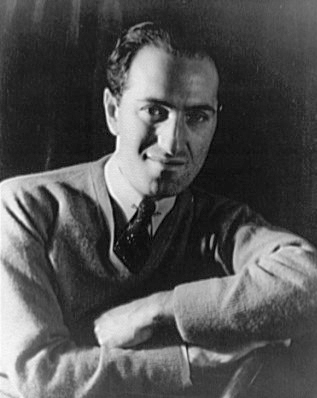 14
George Gershwin was an American composer and pianist whose compositions spanned popular, jazz and classical genres. Among his best-known works are the orchestral compositions Rhapsody in Blue (1924)...
14
George Gershwin was an American composer and pianist whose compositions spanned popular, jazz and classical genres. Among his best-known works are the orchestral compositions Rhapsody in Blue (1924)...
Aristotle
 14
Aristotle was an Ancient Greek philosopher and polymath. His writings cover a broad range of subjects spanning the natural sciences, philosophy, linguistics, economics, politics, psychology, and the...
14
Aristotle was an Ancient Greek philosopher and polymath. His writings cover a broad range of subjects spanning the natural sciences, philosophy, linguistics, economics, politics, psychology, and the...
Michael (archangel)
 14
Michael, also called Saint Michael the Archangel, Archangel Michael and Saint Michael the Taxiarch is an archangel in Judaism, Christianity, Islam, and the Baha'i faith. The earliest surviving...
14
Michael, also called Saint Michael the Archangel, Archangel Michael and Saint Michael the Taxiarch is an archangel in Judaism, Christianity, Islam, and the Baha'i faith. The earliest surviving...
Charles Richter
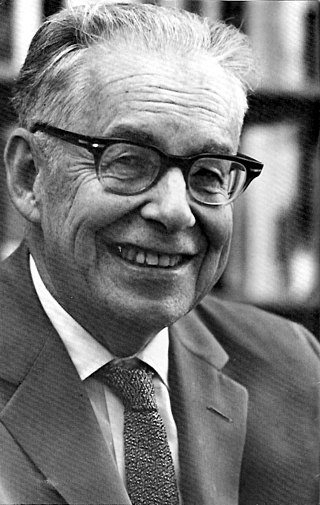 14
Charles Francis Richter was an American seismologist and physicist. He is the namesake and one of the creators of the Richter magnitude scale, which, until the development of the moment magnitude...
14
Charles Francis Richter was an American seismologist and physicist. He is the namesake and one of the creators of the Richter magnitude scale, which, until the development of the moment magnitude...
Van Rechteren
 14
The House of Rechteren is the name of an old noble family belonging to the Dutch and German nobility. The German branch of Counts von Rechteren-Limpurg-Speckfeld has been mediatised.
14
The House of Rechteren is the name of an old noble family belonging to the Dutch and German nobility. The German branch of Counts von Rechteren-Limpurg-Speckfeld has been mediatised.
Willem Oltmans
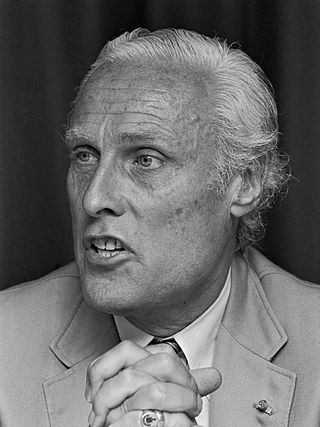 14
Willem Leonard Oltmans was a Dutch investigative journalist and author active in international politics.
14
Willem Leonard Oltmans was a Dutch investigative journalist and author active in international politics.
Michael Faraday
 14
Michael Faraday was a British scientist who contributed to the study of electromagnetism and electrochemistry. His main discoveries include the principles underlying electromagnetic induction,...
14
Michael Faraday was a British scientist who contributed to the study of electromagnetism and electrochemistry. His main discoveries include the principles underlying electromagnetic induction,...
Janus Henricus Donker Curtius
 14
Jan Hendrik Donker Curtius was the last Opperhoofd of the Dutch trading post in Japan (1852-1855), located at Dejima an artificial island in the harbor of Nagasaki. To negotiate with the Japanese...
14
Jan Hendrik Donker Curtius was the last Opperhoofd of the Dutch trading post in Japan (1852-1855), located at Dejima an artificial island in the harbor of Nagasaki. To negotiate with the Japanese...
Frank van Borssele
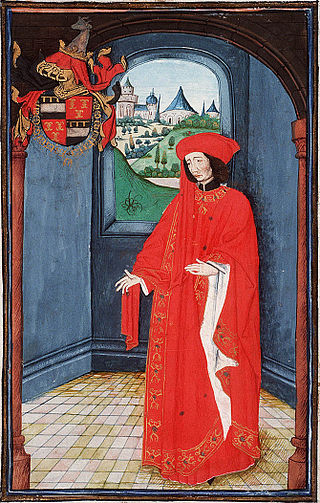 14
Frank II of Borssele was a 15th-century Zeelandic nobleman.
14
Frank II of Borssele was a 15th-century Zeelandic nobleman.
Friedrich Wilhelm Joseph Schelling
 14
Friedrich Wilhelm Joseph Schelling, later von Schelling, was a German philosopher. Standard histories of philosophy make him the midpoint in the development of German idealism, situating him between...
14
Friedrich Wilhelm Joseph Schelling, later von Schelling, was a German philosopher. Standard histories of philosophy make him the midpoint in the development of German idealism, situating him between...
Fien de la Mar
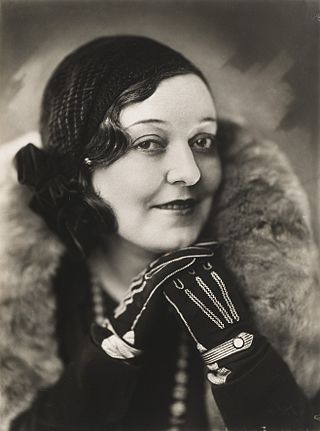 14
Josephina Johanna (Fien) de la Mar was een Nederlands actrice en cabaretière. Ze werd voor de oorlog meestal aangeduid als Fientje de la Mar.
14
Josephina Johanna (Fien) de la Mar was een Nederlands actrice en cabaretière. Ze werd voor de oorlog meestal aangeduid als Fientje de la Mar.
John III, Lord of Renesse
 14
Jan van Renesse was a member of the Zeeland nobility. Together with Wolfert van Borselen he co-led a party favoring Flanders and against Holland, with considerable influence in Zeeland. With the...
14
Jan van Renesse was a member of the Zeeland nobility. Together with Wolfert van Borselen he co-led a party favoring Flanders and against Holland, with considerable influence in Zeeland. With the...
Saint Boniface
 14
Boniface, OSB was an English Benedictine monk and leading figure in the Anglo-Saxon mission to the Germanic parts of Francia during the eighth century. He organised significant foundations of the...
14
Boniface, OSB was an English Benedictine monk and leading figure in the Anglo-Saxon mission to the Germanic parts of Francia during the eighth century. He organised significant foundations of the...
Saint Lucy
 14
Lucia of Syracuse (283–304), also called Saint Lucia was a Roman Christian martyr who died during the Diocletianic Persecution. She is venerated as a saint in Catholic, Anglican, Lutheran, and...
14
Lucia of Syracuse (283–304), also called Saint Lucia was a Roman Christian martyr who died during the Diocletianic Persecution. She is venerated as a saint in Catholic, Anglican, Lutheran, and...
William I, Count of Holland
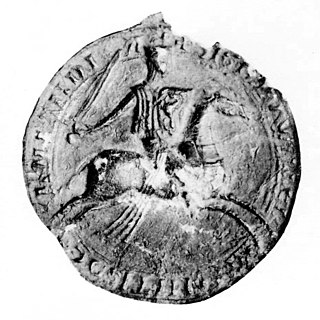 14
William I was count of Holland from 1203 to 1222. He was the younger son of Floris III and Ada of Huntingdon.
14
William I was count of Holland from 1203 to 1222. He was the younger son of Floris III and Ada of Huntingdon.
Mary Magdalene
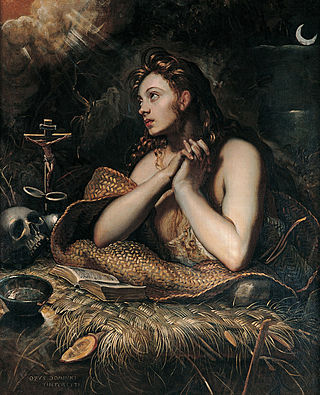 14
Mary Magdalene was a woman who, according to the four canonical gospels, traveled with Jesus as one of his followers and was a witness to his crucifixion and resurrection. She is mentioned by name...
14
Mary Magdalene was a woman who, according to the four canonical gospels, traveled with Jesus as one of his followers and was a witness to his crucifixion and resurrection. She is mentioned by name...
Johannes Kepler
 14
Johannes Kepler was a German astronomer, mathematician, astrologer, natural philosopher and writer on music. He is a key figure in the 17th-century Scientific Revolution, best known for his laws of...
14
Johannes Kepler was a German astronomer, mathematician, astrologer, natural philosopher and writer on music. He is a key figure in the 17th-century Scientific Revolution, best known for his laws of...
Simon de Vlieger
 14
Simon de Vlieger was a Dutch painter, draughtsman and designer of tapestries, etchings, stained glass windows. While he is mainly known for his marine paintings he also painted beach scenes,...
14
Simon de Vlieger was a Dutch painter, draughtsman and designer of tapestries, etchings, stained glass windows. While he is mainly known for his marine paintings he also painted beach scenes,...
Ina Boudier-Bakker
 13
Klaziena "Ina" Boudier-Bakker was a Dutch novelist. Her most famous work is De klop op de deur, written in 1930.
13
Klaziena "Ina" Boudier-Bakker was a Dutch novelist. Her most famous work is De klop op de deur, written in 1930.
Frederick, Crown Prince of Denmark
 13
Frederick, Crown Prince of Denmark may refer to:Frederick, Hereditary Prince of Denmark (1753–1805), heir presumptive from 1766 to 1768
Frederick IV of Denmark (1671–1730), King of Denmark and...
13
Frederick, Crown Prince of Denmark may refer to:Frederick, Hereditary Prince of Denmark (1753–1805), heir presumptive from 1766 to 1768
Frederick IV of Denmark (1671–1730), King of Denmark and...
Jan Olieslagers
 13
Lieutenant Jan Olieslagers was a Belgian motorcycle and aviation pioneer who set world records with both types of machinery. He became a flying ace during World War I despite his indifference in...
13
Lieutenant Jan Olieslagers was a Belgian motorcycle and aviation pioneer who set world records with both types of machinery. He became a flying ace during World War I despite his indifference in...
Leo Gestel
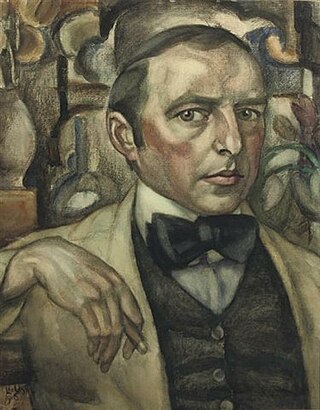 13
Leo Gestel was a Dutch painter. His father Willem Gestel was also an artist. Leo Gestel experimented with cubism, expressionism, futurism and postimpressionism. Along with Piet Mondrian and Jan...
13
Leo Gestel was a Dutch painter. His father Willem Gestel was also an artist. Leo Gestel experimented with cubism, expressionism, futurism and postimpressionism. Along with Piet Mondrian and Jan...
Domenico Scarlatti
 13
Giuseppe Domenico Scarlatti, also known as Domingo or Doménico Scarlatti, was an Italian composer. He is classified primarily as a Baroque composer chronologically, although his music was influential...
13
Giuseppe Domenico Scarlatti, also known as Domingo or Doménico Scarlatti, was an Italian composer. He is classified primarily as a Baroque composer chronologically, although his music was influential...
Vincenzo Bellini
 13
Vincenzo Salvatore Carmelo Francesco Bellini was an Italian opera composer, who was known for his long-flowing melodic lines for which he was named "the Swan of Catania".
Many years later, in 1898,...
13
Vincenzo Salvatore Carmelo Francesco Bellini was an Italian opera composer, who was known for his long-flowing melodic lines for which he was named "the Swan of Catania".
Many years later, in 1898,...
Paulus Buys
 13
Paulus Buys, heer van Zevenhoven and Capelle ter Vliet was Land's Advocate of Holland between 1572 and 1584.
13
Paulus Buys, heer van Zevenhoven and Capelle ter Vliet was Land's Advocate of Holland between 1572 and 1584.
Lodewijk van Deyssel
 13
Lodewijk van Deyssel was the pseudonym of Karel Joan Lodewijk Alberdingk Thijm, a Dutch novelist, prose-poet and literary critic and a leading member of the Tachtigers. He was a son of Joseph...
13
Lodewijk van Deyssel was the pseudonym of Karel Joan Lodewijk Alberdingk Thijm, a Dutch novelist, prose-poet and literary critic and a leading member of the Tachtigers. He was a son of Joseph...
E. du Perron
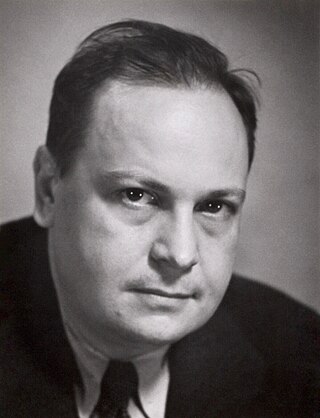 13
Charles Edgar du Perron, more commonly known as E. du Perron, was a Dutch poet and author. He is best known for his literary acclaimed masterpiece Land van herkomst of 1935. Together with Menno ter...
13
Charles Edgar du Perron, more commonly known as E. du Perron, was a Dutch poet and author. He is best known for his literary acclaimed masterpiece Land van herkomst of 1935. Together with Menno ter...
Johannes Tak van Poortvliet
 13
Johannes Pieter Roetert Tak van Poortvliet, lord of the manor of Poortvliet and Cleverskerke, was a Dutch politician.
13
Johannes Pieter Roetert Tak van Poortvliet, lord of the manor of Poortvliet and Cleverskerke, was a Dutch politician.
Princess Alexia of the Netherlands
 13
Princess Alexia of the Netherlands, Princess of Orange-Nassau is the second daughter of Willem-Alexander of the Netherlands and Queen Máxima of the Netherlands. Princess Alexia is a member of the...
13
Princess Alexia of the Netherlands, Princess of Orange-Nassau is the second daughter of Willem-Alexander of the Netherlands and Queen Máxima of the Netherlands. Princess Alexia is a member of the...
Nienke van Hichtum
 13
Sjoukje Maria Diderika Troelstra-Bokma de Boer, better known under her pseudonym Nienke van Hichtum, was a well-known Frisian Dutch children's author and translator. Van Hichtum wrote books and...
13
Sjoukje Maria Diderika Troelstra-Bokma de Boer, better known under her pseudonym Nienke van Hichtum, was a well-known Frisian Dutch children's author and translator. Van Hichtum wrote books and...
Helena Kuipers-Rietberg
 13
Helena Theodora Kuipers-Rietberg was a Dutch resistance member who played an important role during World War II, when she was one of the driving forces of a national underground organization that...
13
Helena Theodora Kuipers-Rietberg was a Dutch resistance member who played an important role during World War II, when she was one of the driving forces of a national underground organization that...
Ida Gerhardt
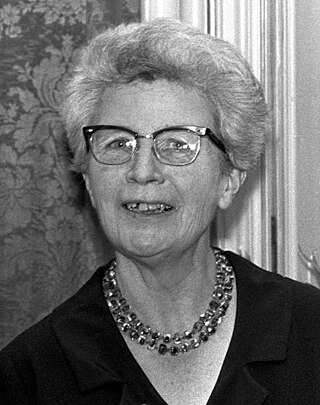 13
Ida Gerhardt was a classicist and Dutch poet of a post-symbolist tradition.
13
Ida Gerhardt was a classicist and Dutch poet of a post-symbolist tradition.
Willem Landré
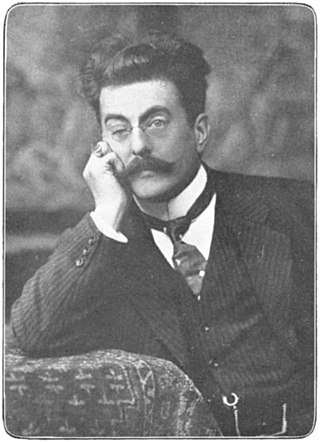 13
Guillaume Louis Frédéric (Willem) Landré was een Nederlands componist.
13
Guillaume Louis Frédéric (Willem) Landré was een Nederlands componist.
Tacitus
 13
Publius Cornelius Tacitus, known simply as Tacitus, was a Roman historian and politician. Tacitus is widely regarded as one of the greatest Roman historians by modern scholars.
13
Publius Cornelius Tacitus, known simply as Tacitus, was a Roman historian and politician. Tacitus is widely regarded as one of the greatest Roman historians by modern scholars.
Wim Sonneveld
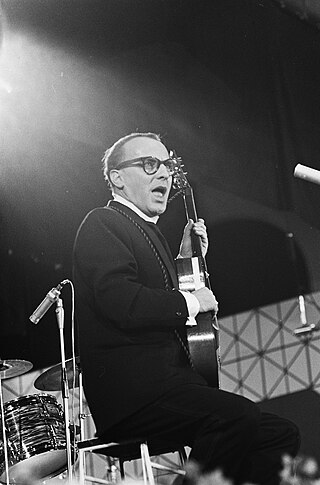 13
Willem "Wim" Sonneveld was a Dutch cabaret artist and singer. Together with Toon Hermans and Wim Kan, he is considered to be one of the 'Great Three' of Dutch cabaret. Sonneveld is generally viewed...
13
Willem "Wim" Sonneveld was a Dutch cabaret artist and singer. Together with Toon Hermans and Wim Kan, he is considered to be one of the 'Great Three' of Dutch cabaret. Sonneveld is generally viewed...
Cornelis Dopper
 13
Cornelis 'Kees' Dopper was a Dutch composer, conductor and teacher.
13
Cornelis 'Kees' Dopper was a Dutch composer, conductor and teacher.
Niels Bohr
 13
Niels Henrik David Bohr was a Danish physicist who made foundational contributions to understanding atomic structure and quantum theory, for which he received the Nobel Prize in Physics in 1922. Bohr...
13
Niels Henrik David Bohr was a Danish physicist who made foundational contributions to understanding atomic structure and quantum theory, for which he received the Nobel Prize in Physics in 1922. Bohr...
Theo van Doesburg
 13
Theo van Doesburg was a Dutch artist, who practiced painting, writing, poetry and architecture. He is best known as the founder and leader of De Stijl. He was married to artist, pianist and...
13
Theo van Doesburg was a Dutch artist, who practiced painting, writing, poetry and architecture. He is best known as the founder and leader of De Stijl. He was married to artist, pianist and...
Roald Amundsen
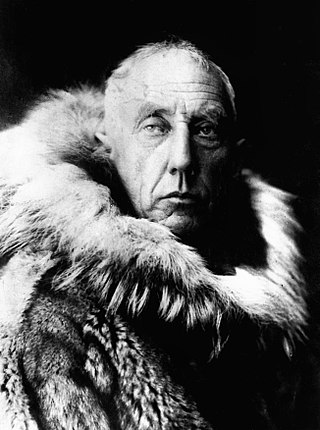 13
Roald Engelbregt Gravning Amundsen was a Norwegian explorer of polar regions. He was a key figure of the period known as the Heroic Age of Antarctic Exploration.
13
Roald Engelbregt Gravning Amundsen was a Norwegian explorer of polar regions. He was a key figure of the period known as the Heroic Age of Antarctic Exploration.
Pieter Post
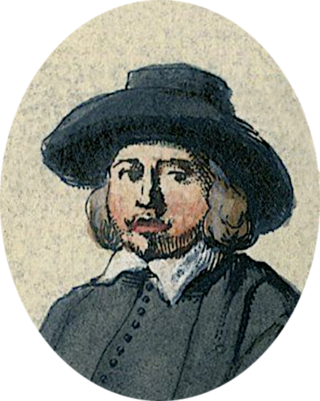 13
Pieter Jansz Post was a Dutch Golden Age architect, painter and printmaker.
13
Pieter Jansz Post was a Dutch Golden Age architect, painter and printmaker.
De Vos van Steenwijk
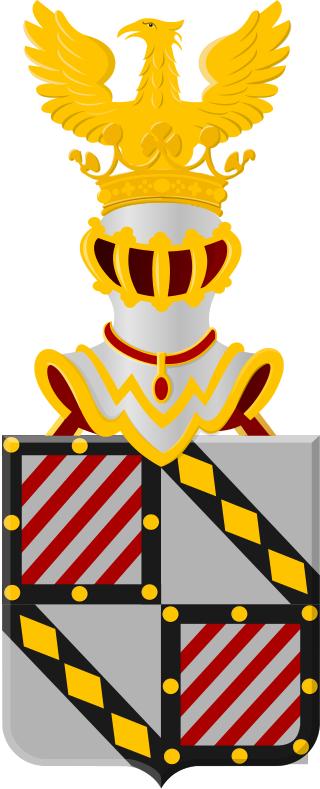 13
De Vos van Steenwijk is an old Dutch noble family from the Dutch province of Overijssel.
13
De Vos van Steenwijk is an old Dutch noble family from the Dutch province of Overijssel.
Beelaerts van Blokland
 13
Beelaerts van Blokland is an old Dutch patrician family.
13
Beelaerts van Blokland is an old Dutch patrician family.
Charles the Bold
 13
Charles Martin called The Bold, was the last Duke of Burgundy from the Burgundian cadet branch of House of Valois from 1467 to 1477. He was the only legitimate son of Philip the Good and his third...
13
Charles Martin called The Bold, was the last Duke of Burgundy from the Burgundian cadet branch of House of Valois from 1467 to 1477. He was the only legitimate son of Philip the Good and his third...
Jacob van Campen
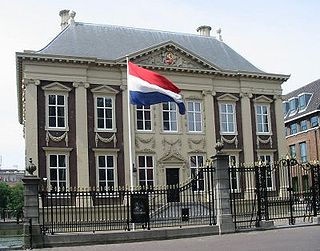 13
Jacob van Campen was a Dutch artist and architect of the Golden Age.
13
Jacob van Campen was a Dutch artist and architect of the Golden Age.
Johannes Linthorst Homan
 13
Johannes (Hans) Linthorst Homan was a Dutch politician and diplomat.
13
Johannes (Hans) Linthorst Homan was a Dutch politician and diplomat.
Mary Zeldenrust-Noordanus
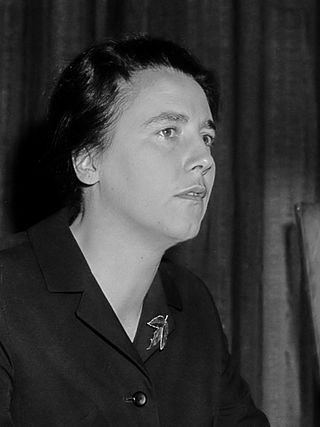 13
Mary Noordanus, beter bekend als Mary Zeldenrust-Noordanus was psycholoog-psychotherapeut en voorzitter van de NVSH.
13
Mary Noordanus, beter bekend als Mary Zeldenrust-Noordanus was psycholoog-psychotherapeut en voorzitter van de NVSH.
Luke the Evangelist
 13
Luke the Evangelist is one of the Four Evangelists—the four traditionally ascribed authors of the canonical gospels. The Early Church Fathers ascribed to him authorship of both the Gospel of Luke and...
13
Luke the Evangelist is one of the Four Evangelists—the four traditionally ascribed authors of the canonical gospels. The Early Church Fathers ascribed to him authorship of both the Gospel of Luke and...
William I of the Netherlands
 13
William I was king of the Netherlands and grand duke of Luxembourg from 1815 until his abdication in 1840.
13
William I was king of the Netherlands and grand duke of Luxembourg from 1815 until his abdication in 1840.
Henry I van Vianden
 12
Henry van Vianden was a bishop of Utrecht from 1249 to 1267.
12
Henry van Vianden was a bishop of Utrecht from 1249 to 1267.
Augustine of Hippo
 12
Augustine of Hippo, also known as Saint Augustine, was a theologian and philosopher of Berber origin and the bishop of Hippo Regius in Numidia, Roman North Africa. His writings influenced the...
12
Augustine of Hippo, also known as Saint Augustine, was a theologian and philosopher of Berber origin and the bishop of Hippo Regius in Numidia, Roman North Africa. His writings influenced the...
Simon van Slingelandt
 12
Simon van Slingelandt, lord of the manor of Patijnenburg was an influential Dutch politician and diplomat during the 18th century. He served as the Grand Pensionary of Holland, the most important...
12
Simon van Slingelandt, lord of the manor of Patijnenburg was an influential Dutch politician and diplomat during the 18th century. He served as the Grand Pensionary of Holland, the most important...
Catherine of Alexandria
 12
Catherine of Alexandria, also spelled Katherine is, according to tradition, a Christian saint and virgin, who was martyred in the early fourth century at the hands of the emperor Maxentius. According...
12
Catherine of Alexandria, also spelled Katherine is, according to tradition, a Christian saint and virgin, who was martyred in the early fourth century at the hands of the emperor Maxentius. According...
Fie Carelsen
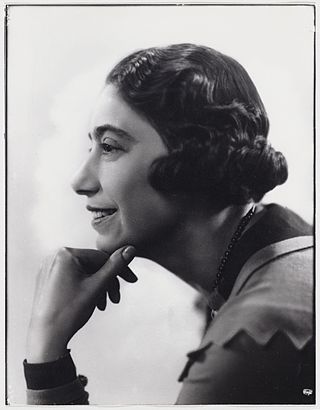 12
Fie Carelsen, artiestennaam van Sophia de Jong, was een Nederlandse actrice.
12
Fie Carelsen, artiestennaam van Sophia de Jong, was een Nederlandse actrice.
Petrus Plancius
 12
Petrus Plancius was a Dutch-Flemish astronomer, cartographer and clergyman. He was born as Pieter Platevoet in Dranouter, now in Heuvelland, West Flanders. He studied theology in Germany and England....
12
Petrus Plancius was a Dutch-Flemish astronomer, cartographer and clergyman. He was born as Pieter Platevoet in Dranouter, now in Heuvelland, West Flanders. He studied theology in Germany and England....
Vasco da Gama
 12
Vasco da Gama, 1st Count of Vidigueira, was a Portuguese explorer and the first European to reach India by sea.
12
Vasco da Gama, 1st Count of Vidigueira, was a Portuguese explorer and the first European to reach India by sea.
Roosje Vos
 12
Roosje Vos was a Dutch seamstress who became an activist in the push for labor protections of working women. Founding trade unions and editing journals, she advocated for suffrage, women's economic...
12
Roosje Vos was a Dutch seamstress who became an activist in the push for labor protections of working women. Founding trade unions and editing journals, she advocated for suffrage, women's economic...
L. L. Zamenhof
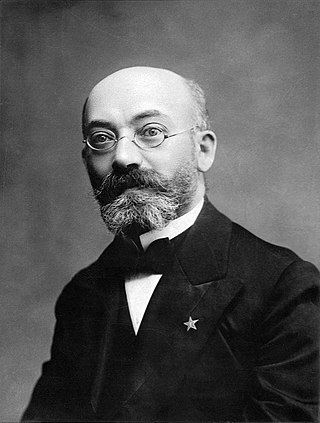 12
L. L. Zamenhof was the creator of Esperanto, the most widely used constructed international auxiliary language.
12
L. L. Zamenhof was the creator of Esperanto, the most widely used constructed international auxiliary language.
Van Karnebeek
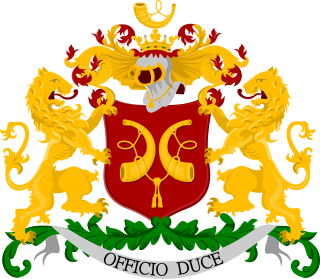 12
Van Karnebeek is een uit Vreden afkomstig geslacht waarvan leden sinds 1847 tot de Nederlandse adel behoren.
12
Van Karnebeek is een uit Vreden afkomstig geslacht waarvan leden sinds 1847 tot de Nederlandse adel behoren.
Anna Maria van Schurman
 12
Anna Maria van Schurman was a Dutch painter, engraver, poet, classical scholar, philosopher, and feminist writer who is best known for her exceptional learning and her defence of female education....
12
Anna Maria van Schurman was a Dutch painter, engraver, poet, classical scholar, philosopher, and feminist writer who is best known for her exceptional learning and her defence of female education....
Hendrick Avercamp
 12
Hendrick Avercamp was a Dutch painter during the Dutch Golden Age of painting. He was one of the earliest landscape painters of the 17th-century Dutch school, he specialized in painting the...
12
Hendrick Avercamp was a Dutch painter during the Dutch Golden Age of painting. He was one of the earliest landscape painters of the 17th-century Dutch school, he specialized in painting the...
A.M. de Jong
 12
Adrianus Michiel de Jong was een Nederlandse schrijver. Hij publiceerde zijn meeste werk onder eigen naam, maar enkele werken werden onder pseudoniem uitgegeven.
12
Adrianus Michiel de Jong was een Nederlandse schrijver. Hij publiceerde zijn meeste werk onder eigen naam, maar enkele werken werden onder pseudoniem uitgegeven.
Glenn Miller
 12
Alton Glen "Glenn" Miller was an American big band conductor, arranger, composer, trombone player, and recording artist before and during World War II, when he was an officer in the US Army Air...
12
Alton Glen "Glenn" Miller was an American big band conductor, arranger, composer, trombone player, and recording artist before and during World War II, when he was an officer in the US Army Air...
Fanny Blankers-Koen
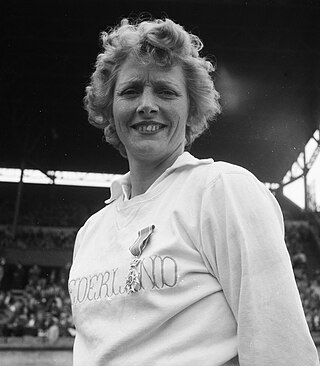 12
Francina Elsje "Fanny" Blankers-Koen was a Dutch track and field athlete, best known for winning four gold medals at the 1948 Summer Olympics in London. She competed there as a 30-year-old mother of...
12
Francina Elsje "Fanny" Blankers-Koen was a Dutch track and field athlete, best known for winning four gold medals at the 1948 Summer Olympics in London. She competed there as a 30-year-old mother of...
Isidore of Seville
 12
Isidore of Seville was a Hispano-Roman scholar, theologian, and archbishop of Seville. He is widely regarded, in the words of 19th-century historian Montalembert, as "the last scholar of the ancient...
12
Isidore of Seville was a Hispano-Roman scholar, theologian, and archbishop of Seville. He is widely regarded, in the words of 19th-century historian Montalembert, as "the last scholar of the ancient...
Mathilde Berdenis van Berlekom
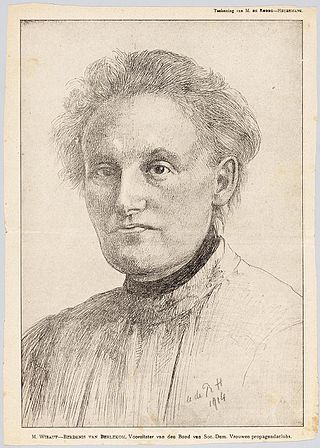 12
Mathilde Berdenis van Berlekom, ook wel bekend als Mathilde Wibaut, was politica en feministe. Ze was getrouwd met Floor Wibaut, de bekende Amsterdamse wethouder. Zelf is ze vooral bekend als...
12
Mathilde Berdenis van Berlekom, ook wel bekend als Mathilde Wibaut, was politica en feministe. Ze was getrouwd met Floor Wibaut, de bekende Amsterdamse wethouder. Zelf is ze vooral bekend als...
Andreas Schelfhout
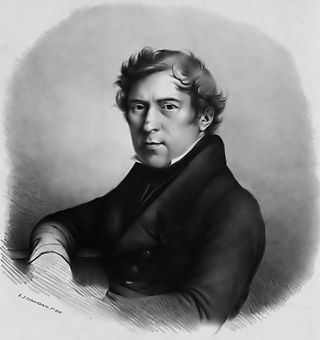 12
Andreas Schelfhout (1787–1870) was a Dutch painter, etcher and lithographer, known for his landscape paintings.
12
Andreas Schelfhout (1787–1870) was a Dutch painter, etcher and lithographer, known for his landscape paintings.
Jan Huyghen van Linschoten
 12
Jan Huygen van Linschoten was a Dutch merchant, traveller and writer.
12
Jan Huygen van Linschoten was a Dutch merchant, traveller and writer.
Philip William, Prince of Orange
 12
Philip William, Prince of Orange was the eldest son of William the Silent by his first wife Anna van Egmont. He became Prince of Orange in 1584 and Knight of the Golden Fleece in 1599.
12
Philip William, Prince of Orange was the eldest son of William the Silent by his first wife Anna van Egmont. He became Prince of Orange in 1584 and Knight of the Golden Fleece in 1599.
Princess Marianne of the Netherlands
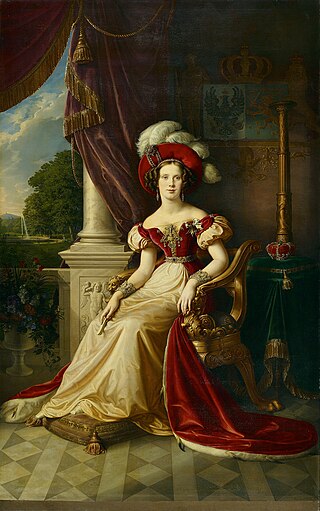 12
Princess Marianne of the Netherlands, Princess of Orange-Nassau was the youngest child of King William I of the Netherlands and Princess Wilhelmine of Prussia.
12
Princess Marianne of the Netherlands, Princess of Orange-Nassau was the youngest child of King William I of the Netherlands and Princess Wilhelmine of Prussia.
Albrecht Rodenbach
 12
Albertus "Albrecht" Petrus Josephus Mansuetus Ferdinandus Rodenbach was a Flemish poet, and a leader in the revival of Flemish literature that occurred in the late 19th century. He is more noteworthy...
12
Albertus "Albrecht" Petrus Josephus Mansuetus Ferdinandus Rodenbach was a Flemish poet, and a leader in the revival of Flemish literature that occurred in the late 19th century. He is more noteworthy...
Willem Maris
 12
Willem Maris was a Dutch landscape painter of the Hague School.
12
Willem Maris was a Dutch landscape painter of the Hague School.
Hélène Swarth
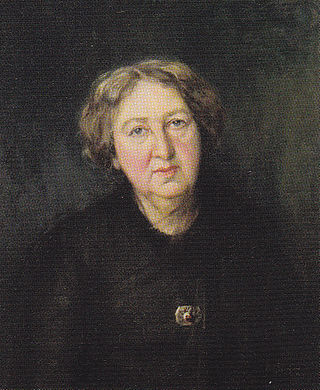 12
Stéphanie Hélène Swarth was a prolific Dutch poet active from 1879 to 1938. She is considered one of the Tachtigers and acquired a reputation as a sonneteer.
12
Stéphanie Hélène Swarth was a prolific Dutch poet active from 1879 to 1938. She is considered one of the Tachtigers and acquired a reputation as a sonneteer.
Johanna Westerdijk
 12
Johanna Westerdijk was a Dutch plant pathologist and the first female professor in the Netherlands.
12
Johanna Westerdijk was a Dutch plant pathologist and the first female professor in the Netherlands.
Jacob Jordaens
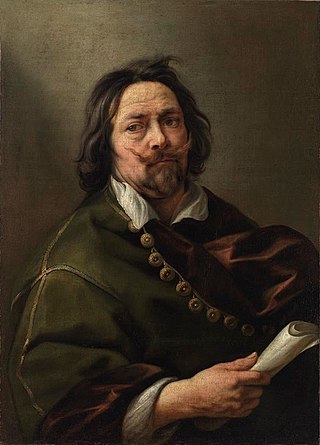 12
Jacob (Jacques) Jordaens was a Flemish painter, draughtsman and a designer of tapestries and prints. He was a prolific artist who created biblical, mythological, and allegorical compositions, genre...
12
Jacob (Jacques) Jordaens was a Flemish painter, draughtsman and a designer of tapestries and prints. He was a prolific artist who created biblical, mythological, and allegorical compositions, genre...
Stijn Streuvels
 12
Stijn Streuvels, born Franciscus (Frank) Petrus Maria Lateur, was a Flemish Belgian writer.
12
Stijn Streuvels, born Franciscus (Frank) Petrus Maria Lateur, was a Flemish Belgian writer.
Albertine Agnes of Nassau
 12
Albertine Agnes of Nassau, was the regent of Friesland, Groningen and Drenthe during the minority of her son Henry Casimir II, Count of Nassau-Dietz, between 1664 and 1679. She was the sixth child...
12
Albertine Agnes of Nassau, was the regent of Friesland, Groningen and Drenthe during the minority of her son Henry Casimir II, Count of Nassau-Dietz, between 1664 and 1679. She was the sixth child...
Jan Wolkers
 11
Jan Hendrik Wolkers was a Dutch author, sculptor and painter. Wolkers is considered by some to be one of the "Great Four" writers of post-World War II Dutch literature, alongside Willem Frederik...
11
Jan Hendrik Wolkers was a Dutch author, sculptor and painter. Wolkers is considered by some to be one of the "Great Four" writers of post-World War II Dutch literature, alongside Willem Frederik...
Immanuel Kant
 11
Immanuel Kant was a German philosopher and one of the central Enlightenment thinkers. Born in Königsberg, Kant's comprehensive and systematic works in epistemology, metaphysics, ethics, and...
11
Immanuel Kant was a German philosopher and one of the central Enlightenment thinkers. Born in Königsberg, Kant's comprehensive and systematic works in epistemology, metaphysics, ethics, and...
Johan Huizinga
 11
Johan Huizinga was a Dutch historian and one of the founders of modern cultural history.
11
Johan Huizinga was a Dutch historian and one of the founders of modern cultural history.
Willem Roelofs
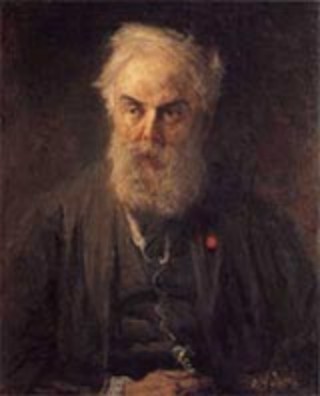 11
Willem Roelofs was a Dutch painter, water-colourist, etcher, lithographer and draughtsman. Roelofs was one of the forerunners of the Dutch Revival art, after the Romantic Classicism of the beginning...
11
Willem Roelofs was a Dutch painter, water-colourist, etcher, lithographer and draughtsman. Roelofs was one of the forerunners of the Dutch Revival art, after the Romantic Classicism of the beginning...
Jac. P. Thijsse
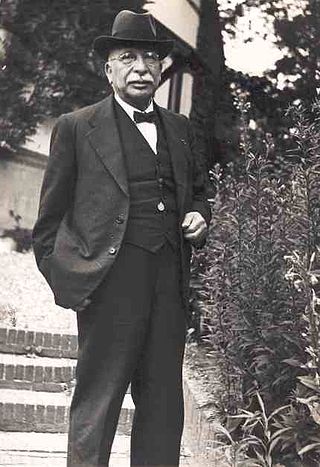 11
Jacobus Pieter Thijsse was a Dutch conservationist and botanist. He founded the
Society for Preservation of Nature Monuments in the Netherlands.
11
Jacobus Pieter Thijsse was a Dutch conservationist and botanist. He founded the
Society for Preservation of Nature Monuments in the Netherlands.
Pieter Lastman
 11
Pieter Lastman (1583–1633) was a Dutch painter. Lastman is considered important because of his work as a painter of history pieces and because his pupils included Rembrandt and Jan Lievens. In his...
11
Pieter Lastman (1583–1633) was a Dutch painter. Lastman is considered important because of his work as a painter of history pieces and because his pupils included Rembrandt and Jan Lievens. In his...
Heinrich Hertz
 11
Heinrich Rudolf Hertz was a German physicist who first conclusively proved the existence of the electromagnetic waves predicted by James Clerk Maxwell's equations of electromagnetism. The unit of...
11
Heinrich Rudolf Hertz was a German physicist who first conclusively proved the existence of the electromagnetic waves predicted by James Clerk Maxwell's equations of electromagnetism. The unit of...
J. H. Leopold
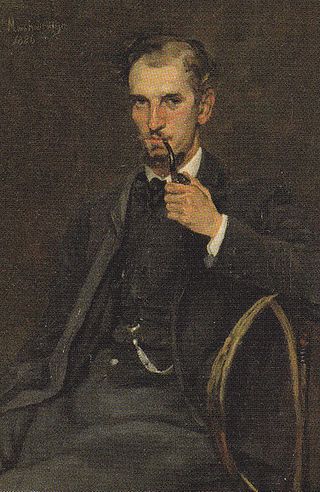 11
Jan Hendrik Leopold was a Dutch poet and classicist.
11
Jan Hendrik Leopold was a Dutch poet and classicist.
Hendrik Casimir
 11
Hendrik Brugt Gerhard Casimir was a Dutch physicist who made significant contributions to the field of quantum mechanics and quantum electrodynamics. He is best known for his work on the Casimir...
11
Hendrik Brugt Gerhard Casimir was a Dutch physicist who made significant contributions to the field of quantum mechanics and quantum electrodynamics. He is best known for his work on the Casimir...
Charles Lindbergh
 11
Charles Augustus Lindbergh was an American aviator and military officer. On May 20–21, 1927, he made the first nonstop flight from New York City to Paris, a distance of 3,600 miles (5,800 km), flying...
11
Charles Augustus Lindbergh was an American aviator and military officer. On May 20–21, 1927, he made the first nonstop flight from New York City to Paris, a distance of 3,600 miles (5,800 km), flying...
Cicero
 11
Marcus Tullius Cicero was a Roman statesman, lawyer, scholar, philosopher, writer and Academic skeptic, who tried to uphold optimate principles during the political crises that led to the...
11
Marcus Tullius Cicero was a Roman statesman, lawyer, scholar, philosopher, writer and Academic skeptic, who tried to uphold optimate principles during the political crises that led to the...
Seneca the Younger
 11
Lucius Annaeus Seneca the Younger, usually known mononymously as Seneca, was a Stoic philosopher of Ancient Rome, a statesman, dramatist, and in one work, satirist, from the post-Augustan age of...
11
Lucius Annaeus Seneca the Younger, usually known mononymously as Seneca, was a Stoic philosopher of Ancient Rome, a statesman, dramatist, and in one work, satirist, from the post-Augustan age of...
Willem Joseph van Ghent
 11
Willem Joseph baron van Ghent tot Drakenburgh was a 17th-century Dutch admiral. His surname is also sometimes rendered Gendt or Gent; he was the first commander of the Dutch marines.
11
Willem Joseph baron van Ghent tot Drakenburgh was a 17th-century Dutch admiral. His surname is also sometimes rendered Gendt or Gent; he was the first commander of the Dutch marines.
William of Jülich
 11
William of Jülich, called the Younger, was one of the Flemish noblemen that opposed the annexation policies of the French king Philip IV, together with Pieter de Coninck.
11
William of Jülich, called the Younger, was one of the Flemish noblemen that opposed the annexation policies of the French king Philip IV, together with Pieter de Coninck.
Harry Bannink
 11
Harry Bannink was a Dutch composer, arranger and pianist. He wrote over 3,000 songs.
11
Harry Bannink was a Dutch composer, arranger and pianist. He wrote over 3,000 songs.
Rosa Spier
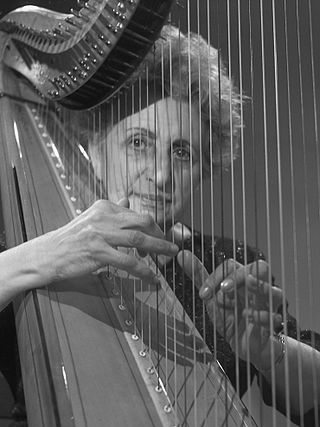 11
Rozalie (Rosa) Spier was een Nederlands harpiste.
11
Rozalie (Rosa) Spier was een Nederlands harpiste.
Gerard Majella
 11
Gerard Majella was an Italian lay brother of the Congregation of the Redeemer, better known as the Redemptorists, who is honored as a saint by the Catholic Church.
11
Gerard Majella was an Italian lay brother of the Congregation of the Redeemer, better known as the Redemptorists, who is honored as a saint by the Catholic Church.
Eduard van Beinum
 11
Eduard Alexander van Beinum was a Dutch conductor.
11
Eduard Alexander van Beinum was a Dutch conductor.
Bart van der Leck
 11
Bart van der Leck was a Dutch painter, designer, and ceramicist. With Theo van Doesburg and Piet Mondrian he founded the De Stijl art movement.
11
Bart van der Leck was a Dutch painter, designer, and ceramicist. With Theo van Doesburg and Piet Mondrian he founded the De Stijl art movement.
Iman Jacob van den Bosch
 11
Iman Jacob van den Bosch was een Nederlandse verzetsstrijder tijdens de Tweede Wereldoorlog.
11
Iman Jacob van den Bosch was een Nederlandse verzetsstrijder tijdens de Tweede Wereldoorlog.
Ignaz Semmelweis
 11
Ignaz Philipp Semmelweis was a Hungarian physician and scientist of German descent, who was an early pioneer of antiseptic procedures, and was described as the "saviour of mothers". Postpartum...
11
Ignaz Philipp Semmelweis was a Hungarian physician and scientist of German descent, who was an early pioneer of antiseptic procedures, and was described as the "saviour of mothers". Postpartum...
Frans Erens
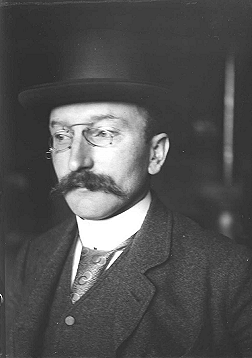 11
Maria Joseph Franciscus Peter Hubertus Erens was een Nederlandse criticus en prozaschrijver. Hij behoort tot de stroming van de Tachtigers.
11
Maria Joseph Franciscus Peter Hubertus Erens was een Nederlandse criticus en prozaschrijver. Hij behoort tot de stroming van de Tachtigers.
Cornelis Jacobus Snijders
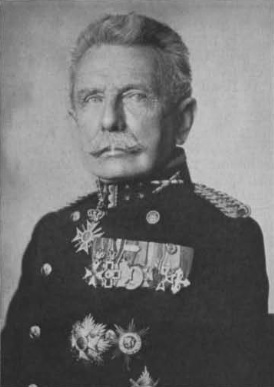 11
Cornelis Jacobus Snijders was a Dutch military leader. He was Commander-in-Chief of the Armed Forces of the Netherlands during World War I.
11
Cornelis Jacobus Snijders was a Dutch military leader. He was Commander-in-Chief of the Armed Forces of the Netherlands during World War I.
Suze Robertson
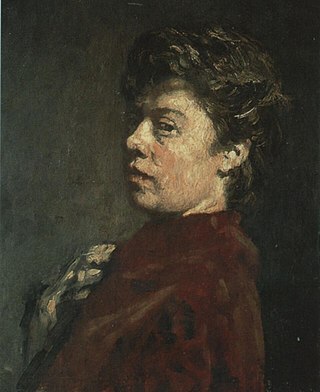 11
Suze Robertson was a Dutch painter. She belonged to a group of artists known as the Amsterdamse Joffers.
11
Suze Robertson was a Dutch painter. She belonged to a group of artists known as the Amsterdamse Joffers.
Lucas van Leyden
 11
Lucas van Leyden, also named either Lucas Hugensz or Lucas Jacobsz, was a Dutch painter and printmaker in engraving and woodcut. Lucas van Leyden was among the first Dutch exponents of genre painting...
11
Lucas van Leyden, also named either Lucas Hugensz or Lucas Jacobsz, was a Dutch painter and printmaker in engraving and woodcut. Lucas van Leyden was among the first Dutch exponents of genre painting...
Andrei Sakharov
 11
Andrei Dmitrievich Sakharov was a Soviet physicist and a Nobel Peace Prize laureate, which he was awarded in 1975 for emphasizing human rights around the world.
11
Andrei Dmitrievich Sakharov was a Soviet physicist and a Nobel Peace Prize laureate, which he was awarded in 1975 for emphasizing human rights around the world.
Jan Wiegers
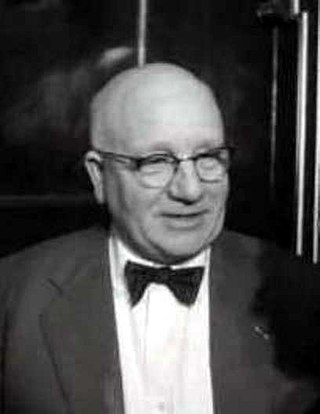 11
Jan Wiegers was a Dutch expressionist painter.Wiegers was educated as a sculptor at the Academie Minerva in Groningen, but he also studied painting at the Academies of Rotterdam under A. H. R. Van...
11
Jan Wiegers was a Dutch expressionist painter.Wiegers was educated as a sculptor at the Academie Minerva in Groningen, but he also studied painting at the Academies of Rotterdam under A. H. R. Van...
Willem Vliegen
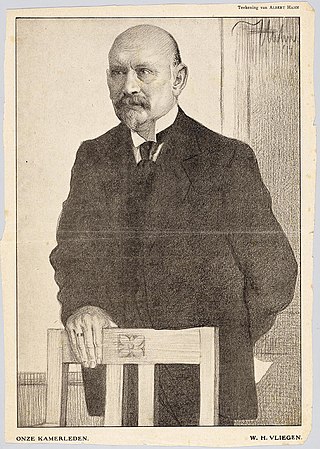 11
Wilhelmus Hubertus Vliegen was een Nederlandse journalist en politicus.
11
Wilhelmus Hubertus Vliegen was een Nederlandse journalist en politicus.
Leonard Bernstein
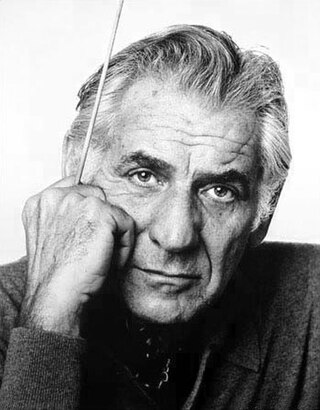 11
Leonard Bernstein was an American conductor, composer, pianist, music educator, author, and humanitarian. Considered to be one of the most important conductors of his time, he was the first...
11
Leonard Bernstein was an American conductor, composer, pianist, music educator, author, and humanitarian. Considered to be one of the most important conductors of his time, he was the first...
Willem de Mérode
 10
Willem de Mérode was the pseudonym of the Dutch poet, Willem Eduard Keuning.
10
Willem de Mérode was the pseudonym of the Dutch poet, Willem Eduard Keuning.
Achilles
 10
In Greek mythology, Achilles or Achilleus was a hero of the Trojan War who was known as being the greatest of all the Greek warriors. A central character in Homer's Iliad, he was the son of the...
10
In Greek mythology, Achilles or Achilleus was a hero of the Trojan War who was known as being the greatest of all the Greek warriors. A central character in Homer's Iliad, he was the son of the...
Agatha of Sicily
 10
Agatha of Sicily is a Christian saint. Her feast is on 5 February. Agatha was born in Catania, part of the Roman Province of Sicily, and was martyred c. 251. She is one of several virgin martyrs who...
10
Agatha of Sicily is a Christian saint. Her feast is on 5 February. Agatha was born in Catania, part of the Roman Province of Sicily, and was martyred c. 251. She is one of several virgin martyrs who...
Cornelis Troost
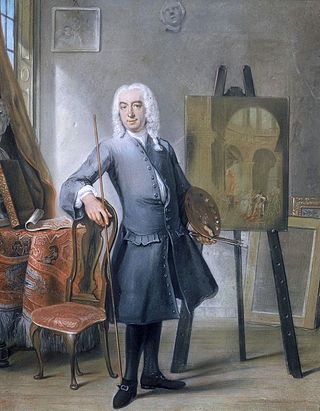 10
Cornelis Troost was an 18th-century actor and painter from Amsterdam.
10
Cornelis Troost was an 18th-century actor and painter from Amsterdam.
Folke Bernadotte
 10
Folke Bernadotte, Count of Wisborg was a Swedish nobleman and diplomat. In World War II he negotiated the release of about 450 Danish Jews and 30,550 non-Jewish prisoners from many nations from the...
10
Folke Bernadotte, Count of Wisborg was a Swedish nobleman and diplomat. In World War II he negotiated the release of about 450 Danish Jews and 30,550 non-Jewish prisoners from many nations from the...
Gerardus Vossius
 10
Gerrit Janszoon Vos, often known by his Latin name Gerardus Vossius, was a Dutch classical scholar and theologian.
10
Gerrit Janszoon Vos, often known by his Latin name Gerardus Vossius, was a Dutch classical scholar and theologian.
David Teniers the Younger
 10
David Teniers the Younger or David Teniers II was a Flemish Baroque painter, printmaker, draughtsman, miniaturist painter, staffage painter, copyist and art curator. He was an extremely versatile...
10
David Teniers the Younger or David Teniers II was a Flemish Baroque painter, printmaker, draughtsman, miniaturist painter, staffage painter, copyist and art curator. He was an extremely versatile...
William I, Count of Nassau-Siegen
 10
William I of Nassau-Siegen, nicknamed the Elder or the Rich, was Count of Nassau-Siegen and of half Diez from 1516. He descended from the Ottonian Line of the House of Nassau.
10
William I of Nassau-Siegen, nicknamed the Elder or the Rich, was Count of Nassau-Siegen and of half Diez from 1516. He descended from the Ottonian Line of the House of Nassau.
Homer
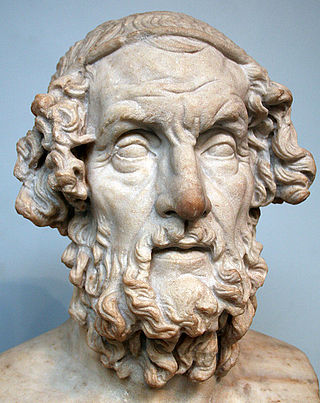 10
Homer was a Greek poet who is credited as the author of the Iliad and the Odyssey, two epic poems that are foundational works of ancient Greek literature. Homer is considered one of the most revered...
10
Homer was a Greek poet who is credited as the author of the Iliad and the Odyssey, two epic poems that are foundational works of ancient Greek literature. Homer is considered one of the most revered...
Rie Mastenbroek
 10
Hendrika "Rie" Wilhelmina Mastenbroek was a Dutch swimmer and a triple Olympic champion.
10
Hendrika "Rie" Wilhelmina Mastenbroek was a Dutch swimmer and a triple Olympic champion.
Leonardo da Vinci
 10
Leonardo di ser Piero da Vinci was an Italian polymath of the High Renaissance who was active as a painter, draughtsman, engineer, scientist, theorist, sculptor, and architect. While his fame...
10
Leonardo di ser Piero da Vinci was an Italian polymath of the High Renaissance who was active as a painter, draughtsman, engineer, scientist, theorist, sculptor, and architect. While his fame...
Dirk Stork
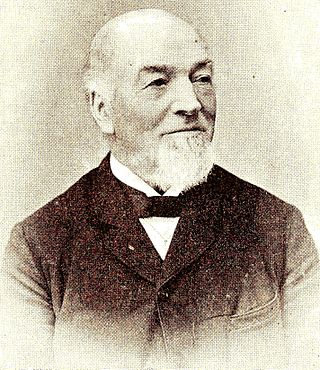 10
Charles Theodorus (Dirk) Stork was de oprichter van het Nederlandse bedrijf Stork.
10
Charles Theodorus (Dirk) Stork was de oprichter van het Nederlandse bedrijf Stork.
Anne de Vries
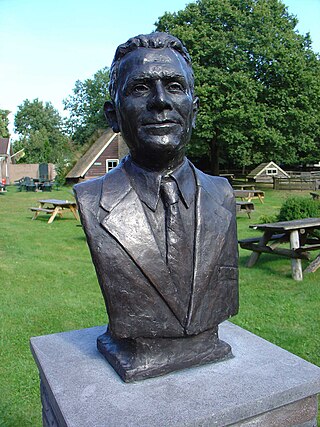 10
Anne de Vries was a Dutch teacher and writer, particularly famous in the Netherlands for his novels of regional life.
10
Anne de Vries was a Dutch teacher and writer, particularly famous in the Netherlands for his novels of regional life.
Jan Fabricius
 10
Jan Fabricius was a Dutch playwright and journalist. He was the father of Johan Fabricius, a writer. Although he wrote continuously from the 1890s to his death, his greatest period of success was...
10
Jan Fabricius was a Dutch playwright and journalist. He was the father of Johan Fabricius, a writer. Although he wrote continuously from the 1890s to his death, his greatest period of success was...
Johan de Meester (schrijver)
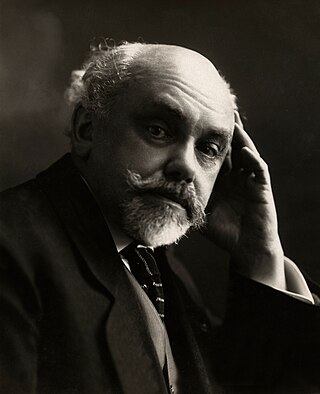 10
Eliza Johannes (Johan) de Meester,, was een Nederlandse journalist, literatuurcriticus en auteur.
10
Eliza Johannes (Johan) de Meester,, was een Nederlandse journalist, literatuurcriticus en auteur.
Matthijs Vermeulen
 10
Matthijs Vermeulen, was a Dutch composer and music journalist.
10
Matthijs Vermeulen, was a Dutch composer and music journalist.
Pythagoras
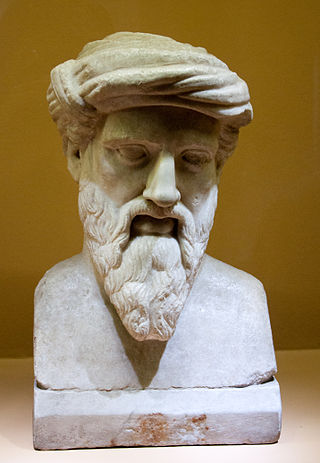 10
Pythagoras of Samos was an ancient Ionian Greek philosopher, polymath and the eponymous founder of Pythagoreanism. His political and religious teachings were well known in Magna Graecia and...
10
Pythagoras of Samos was an ancient Ionian Greek philosopher, polymath and the eponymous founder of Pythagoreanism. His political and religious teachings were well known in Magna Graecia and...
Crispin and Crispinian
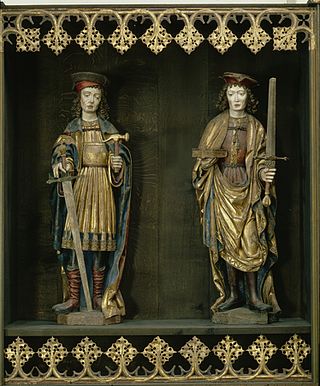 10
Saints Crispin and Crispinian are the Christian patron saints of cobblers, curriers, tanners, and leather workers. They were beheaded during the reign of Diocletian; the date of their execution is...
10
Saints Crispin and Crispinian are the Christian patron saints of cobblers, curriers, tanners, and leather workers. They were beheaded during the reign of Diocletian; the date of their execution is...
Ary Scheffer
 10
Ary Scheffer was a Dutch-French Romantic painter. He was known mostly for his works based on literature, with paintings based on the works of Dante, Goethe, Lord Byron and Walter Scott, as well as...
10
Ary Scheffer was a Dutch-French Romantic painter. He was known mostly for his works based on literature, with paintings based on the works of Dante, Goethe, Lord Byron and Walter Scott, as well as...
Hans Memling
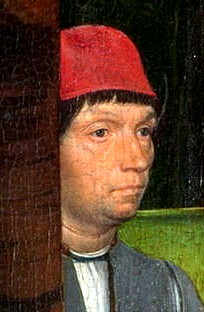 10
Hans Memling was a German-Flemish painter who worked in the tradition of Early Netherlandish painting. Born in the Middle Rhine region, he probably spent his childhood in Mainz. During his...
10
Hans Memling was a German-Flemish painter who worked in the tradition of Early Netherlandish painting. Born in the Middle Rhine region, he probably spent his childhood in Mainz. During his...
Pieter Oud
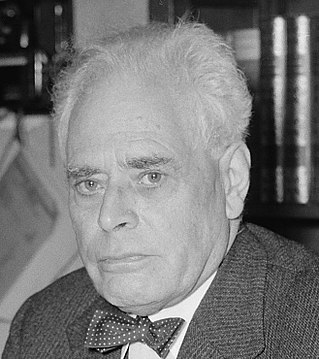 10
Pieter Jacobus Oud was a Dutch politician of the defunct Free-thinking Democratic League (VDB) party and later co-founder of the Labour Party (PvdA) and the People's Party for Freedom and Democracy...
10
Pieter Jacobus Oud was a Dutch politician of the defunct Free-thinking Democratic League (VDB) party and later co-founder of the Labour Party (PvdA) and the People's Party for Freedom and Democracy...
Caro van Eyck
 10
Caro van Eyck, pseudoniem van Gerarda Jacoba Everdina Taytelbaum was een Nederlands actrice.
10
Caro van Eyck, pseudoniem van Gerarda Jacoba Everdina Taytelbaum was een Nederlands actrice.
René Descartes
 10
René Descartes was a French philosopher, scientist, and mathematician, widely considered a seminal figure in the emergence of modern philosophy and science. Mathematics was paramount to his method of...
10
René Descartes was a French philosopher, scientist, and mathematician, widely considered a seminal figure in the emergence of modern philosophy and science. Mathematics was paramount to his method of...
Ovid
 10
Publius Ovidius Naso, known in English as Ovid, was a Roman poet who lived during the reign of Augustus. He was a younger contemporary of Virgil and Horace, with whom he is often ranked as one of the...
10
Publius Ovidius Naso, known in English as Ovid, was a Roman poet who lived during the reign of Augustus. He was a younger contemporary of Virgil and Horace, with whom he is often ranked as one of the...
Virgil
 10
Publius Vergilius Maro, usually called Virgil or Vergil in English, was an ancient Roman poet of the Augustan period. He composed three of the most famous poems in Latin literature: the Eclogues, the...
10
Publius Vergilius Maro, usually called Virgil or Vergil in English, was an ancient Roman poet of the Augustan period. He composed three of the most famous poems in Latin literature: the Eclogues, the...
Livy
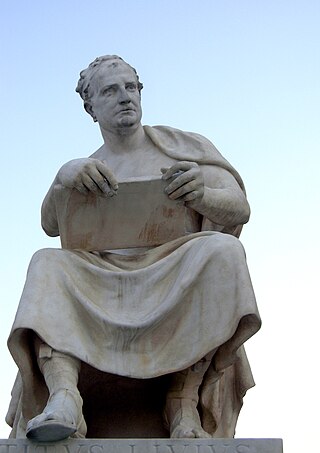 10
Titus Livius, known in English as Livy, was a Roman historian. He wrote a monumental history of Rome and the Roman people, titled Ab Urbe Condita, ''From the Founding of the City'', covering the...
10
Titus Livius, known in English as Livy, was a Roman historian. He wrote a monumental history of Rome and the Roman people, titled Ab Urbe Condita, ''From the Founding of the City'', covering the...
Louis Armstrong
 10
Louis Daniel Armstrong, nicknamed "Satchmo", "Satch", and "Pops", was an American trumpeter and vocalist. He was among the most influential figures in jazz. His career spanned five decades and...
10
Louis Daniel Armstrong, nicknamed "Satchmo", "Satch", and "Pops", was an American trumpeter and vocalist. He was among the most influential figures in jazz. His career spanned five decades and...
Abraham Crijnssen
 10
Abraham Crijnssen was a Dutch naval commander, notable for capturing the English colony in Suriname in 1667 during the Second Anglo-Dutch War, resulting in the establishment of a long-term colony...
10
Abraham Crijnssen was a Dutch naval commander, notable for capturing the English colony in Suriname in 1667 during the Second Anglo-Dutch War, resulting in the establishment of a long-term colony...
Evangelista Torricelli
 10
Evangelista Torricelli was an Italian physicist and mathematician, and a student of Galileo. He is best known for his invention of the barometer, but is also known for his advances in optics and work...
10
Evangelista Torricelli was an Italian physicist and mathematician, and a student of Galileo. He is best known for his invention of the barometer, but is also known for his advances in optics and work...
Jean Monnet
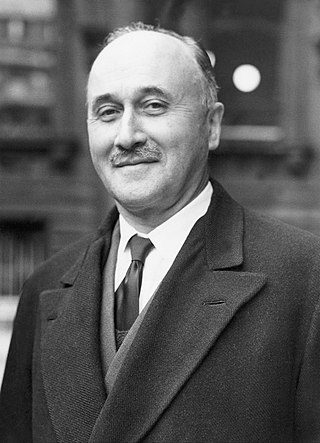 10
Jean Omer Marie Gabriel Monnet was a French civil servant, entrepreneur, diplomat, financier, administrator, and political visionary. An influential supporter of European unity, he is considered one...
10
Jean Omer Marie Gabriel Monnet was a French civil servant, entrepreneur, diplomat, financier, administrator, and political visionary. An influential supporter of European unity, he is considered one...
Friedrich Wilhelm Raiffeisen
 10
Friedrich Wilhelm Raiffeisen was a German mayor and cooperative pioneer. Several credit union systems and cooperative banks have been named after Raiffeisen, who pioneered rural credit unions.
10
Friedrich Wilhelm Raiffeisen was a German mayor and cooperative pioneer. Several credit union systems and cooperative banks have been named after Raiffeisen, who pioneered rural credit unions.
James Clerk Maxwell
 10
James Clerk Maxwell was a Scottish physicist with broad interests who was responsible for the classical theory of electromagnetic radiation, which was the first theory to describe electricity,...
10
James Clerk Maxwell was a Scottish physicist with broad interests who was responsible for the classical theory of electromagnetic radiation, which was the first theory to describe electricity,...
Karel van Mander
 10
Karel van Mander (I) or Carel van Mander I (May 1548 – 2 September 1606) was a Flemish painter, playwright, poet, art historian and art theoretician, who established himself in the Dutch Republic in...
10
Karel van Mander (I) or Carel van Mander I (May 1548 – 2 September 1606) was a Flemish painter, playwright, poet, art historian and art theoretician, who established himself in the Dutch Republic in...
Salvador Allende
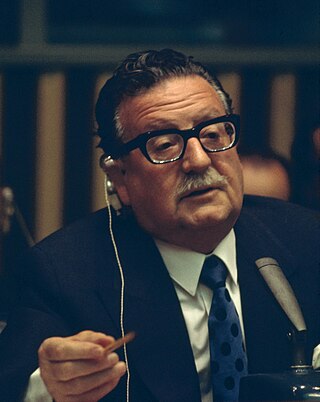 10
Salvador Guillermo Allende Gossens was a Chilean socialist politician who served as the 28th president of Chile from 1970 until his death in 1973. As a democratic socialist committed to democracy, he...
10
Salvador Guillermo Allende Gossens was a Chilean socialist politician who served as the 28th president of Chile from 1970 until his death in 1973. As a democratic socialist committed to democracy, he...
Anthony Modderman
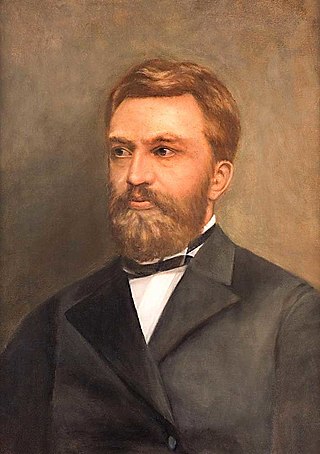 10
Anthony Ewoud Jan Modderman was a Dutch liberal politician.
10
Anthony Ewoud Jan Modderman was a Dutch liberal politician.
Klaas Kater
 10
Klaas Kater was een Nederlands vakbondsleider. Hij richtte in 1877 het Nederlandsch Werkliedenverbond Patrimonium op.
10
Klaas Kater was een Nederlands vakbondsleider. Hij richtte in 1877 het Nederlandsch Werkliedenverbond Patrimonium op.
Koos de la Rey
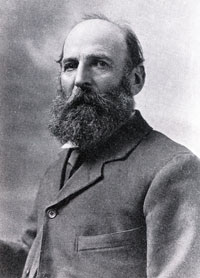 10
Jacobus Herculaas de la Rey, better known as Koos de la Rey, was a South African military officer who served as a Boer general during the Second Boer War. De la Rey also had a political career and...
10
Jacobus Herculaas de la Rey, better known as Koos de la Rey, was a South African military officer who served as a Boer general during the Second Boer War. De la Rey also had a political career and...
Lieven de Key
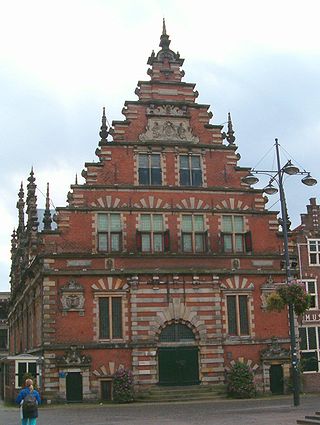 10
Lieven de Key was a Flemish renaissance architect who after working in his native Flanders moved to work in the Dutch Republic. He is mostly known today for his works in Haarlem. His style is...
10
Lieven de Key was a Flemish renaissance architect who after working in his native Flanders moved to work in the Dutch Republic. He is mostly known today for his works in Haarlem. His style is...
Van Rijckevorsel
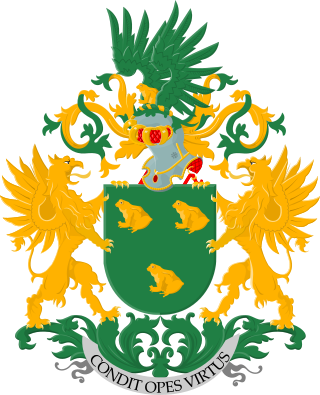 10
Van Rijckevorsel is een Nederlandse en Belgische familie waarvan leden vanaf 1829 tot de Nederlandse adel en vanaf 1976 tot de Belgische adel behoren.
10
Van Rijckevorsel is een Nederlandse en Belgische familie waarvan leden vanaf 1829 tot de Nederlandse adel en vanaf 1976 tot de Belgische adel behoren.
Philip the Good
 10
Philip III the Good ruled as Duke of Burgundy from 1419 until his death in 1467. He was a member of a cadet line of the Valois dynasty, to which all 15th-century kings of France belonged. During his...
10
Philip III the Good ruled as Duke of Burgundy from 1419 until his death in 1467. He was a member of a cadet line of the Valois dynasty, to which all 15th-century kings of France belonged. During his...
Friedrich Paulus
 10
Friedrich Wilhelm Ernst Paulus was a German Generalfeldmarschall during World War II who is best known for his surrender of the German 6th Army during the Battle of Stalingrad. The battle ended in...
10
Friedrich Wilhelm Ernst Paulus was a German Generalfeldmarschall during World War II who is best known for his surrender of the German 6th Army during the Battle of Stalingrad. The battle ended in...
Piet Lieftinck
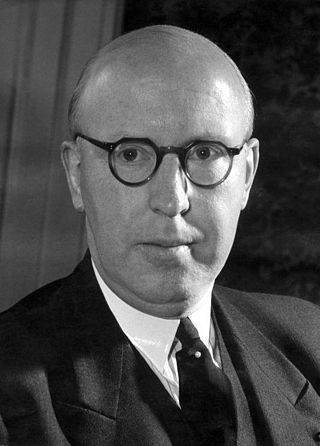 10
Pieter "Piet" Lieftinck (30 September 1902 – 9 July 1989) was a Dutch politician of the Christian Historical Union (CHU) party and later the Labour Party (PvdA) and economist.
10
Pieter "Piet" Lieftinck (30 September 1902 – 9 July 1989) was a Dutch politician of the Christian Historical Union (CHU) party and later the Labour Party (PvdA) and economist.
Frans Naerebout
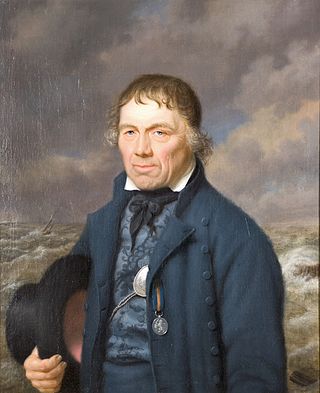 10
Frans Naerebout was een vermaarde Nederlandse loods en mensenredder.
10
Frans Naerebout was een vermaarde Nederlandse loods en mensenredder.
Odile of Alsace
 10
Odile of Alsace, also known as Odilia and Ottilia, born c. 662 - c. 720 at Mont Sainte-Odile), is a saint venerated in the Catholic Church and the Eastern Orthodox Church. She is a patroness saint of...
10
Odile of Alsace, also known as Odilia and Ottilia, born c. 662 - c. 720 at Mont Sainte-Odile), is a saint venerated in the Catholic Church and the Eastern Orthodox Church. She is a patroness saint of...
Floris Verster
 10
Floris Hendrik Verster was a Dutch painter.
10
Floris Hendrik Verster was a Dutch painter.
Carel Goseling
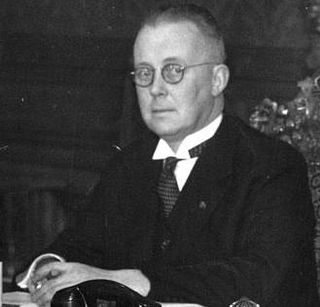 10
Carolus Maria Joannes Franciscus (Carel) Goseling was a Dutch lawyer and politician for the Roman Catholic State Party (RKSP).
10
Carolus Maria Joannes Franciscus (Carel) Goseling was a Dutch lawyer and politician for the Roman Catholic State Party (RKSP).
Adriaen van Bergen
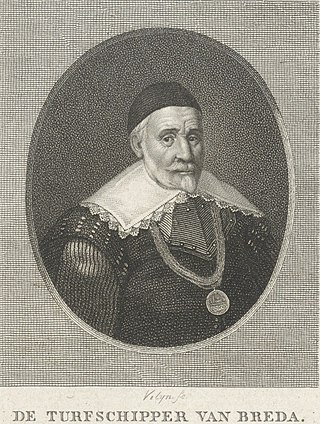 9
A Dutch skipper from Leur, Adriaen van Bergen devised the plot to recapture the city of Breda from the Spanish during the Eighty Years' War. In February 1590, he approached Prince Maurice with a...
9
A Dutch skipper from Leur, Adriaen van Bergen devised the plot to recapture the city of Breda from the Spanish during the Eighty Years' War. In February 1590, he approached Prince Maurice with a...
Willem de Clercq
 9
Willem de Clercq was a poet and leader of the Réveil, the Protestant Church Revival in the Netherlands. He is known for his diary entries, which contain extensive reports of the events he witnessed....
9
Willem de Clercq was a poet and leader of the Réveil, the Protestant Church Revival in the Netherlands. He is known for his diary entries, which contain extensive reports of the events he witnessed....
Jan van de Cappelle
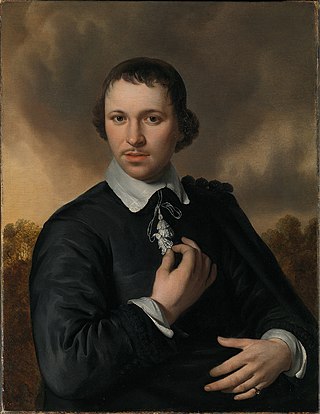 9
Jan van de Cappelle was a Dutch Golden Age painter of seascapes and winter landscapes, also notable as an industrialist and art collector. He is "now considered the outstanding marine painter of 17th...
9
Jan van de Cappelle was a Dutch Golden Age painter of seascapes and winter landscapes, also notable as an industrialist and art collector. He is "now considered the outstanding marine painter of 17th...
Willem Marinus van Rossum
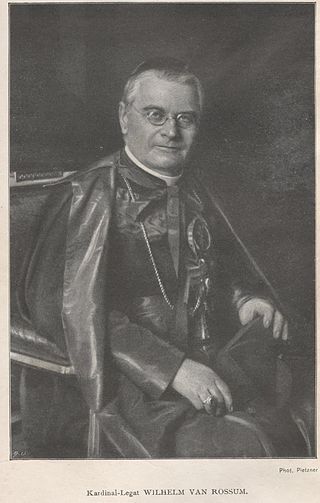 9
Willem Marinus van Rossum, C.Ss.R. was a Dutch prelate of the Roman Catholic Church. He was made a cardinal in 1911, led the Apostolic Penitentiary from 1915 to 1918, and served as Prefect of the...
9
Willem Marinus van Rossum, C.Ss.R. was a Dutch prelate of the Roman Catholic Church. He was made a cardinal in 1911, led the Apostolic Penitentiary from 1915 to 1918, and served as Prefect of the...
M. Vasalis
 9
M. Vasalis, was a Dutch poet and psychiatrist.
9
M. Vasalis, was a Dutch poet and psychiatrist.
Jan Thijssen (verzetsstrijder)
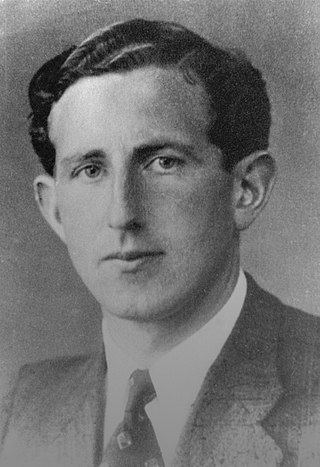 9
Jan Thijssen was een Nederlandse verzetsstrijder tijdens de Tweede Wereldoorlog. Zijn schuilnamen waren Lange Jan en Karel. Hij werkte bij de Ordedienst (OD) als hoofd van de Radiodienst. Op 31...
9
Jan Thijssen was een Nederlandse verzetsstrijder tijdens de Tweede Wereldoorlog. Zijn schuilnamen waren Lange Jan en Karel. Hij werkte bij de Ordedienst (OD) als hoofd van de Radiodienst. Op 31...
Van Foreest
 9
Van Foreest is the name of an aristocratic family that most probably originates from the region of Aachen, Germany, but is already found in the County of Holland in the 13th century. The family was...
9
Van Foreest is the name of an aristocratic family that most probably originates from the region of Aachen, Germany, but is already found in the County of Holland in the 13th century. The family was...
Martinus Theunis Steyn
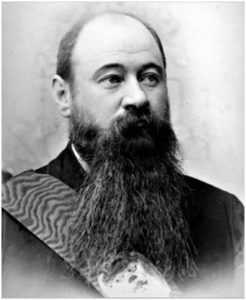 9
Martinus Theunis Steyn was a South African lawyer, politician, and statesman. He was the sixth and last president of the independent Orange Free State from 1896 to 1902.
9
Martinus Theunis Steyn was a South African lawyer, politician, and statesman. He was the sixth and last president of the independent Orange Free State from 1896 to 1902.
Martijn Smit
 9
Martijn Erasmus Smit is een Nederlands PvdA-politicus en bestuurder. Sinds 18 mei 2017 is hij burgemeester van Beverwijk.
9
Martijn Erasmus Smit is een Nederlands PvdA-politicus en bestuurder. Sinds 18 mei 2017 is hij burgemeester van Beverwijk.
Jacques van Marken
 9
Jacob Cornelis (Jacques) van Marken was een vooruitstrevend ondernemer. Hij was de eerste sociaal-ondernemer die tal van op de arbeiders gerichte verbeteringen doorvoerde, zoals een...
9
Jacob Cornelis (Jacques) van Marken was een vooruitstrevend ondernemer. Hij was de eerste sociaal-ondernemer die tal van op de arbeiders gerichte verbeteringen doorvoerde, zoals een...
Petrus Augustus de Génestet
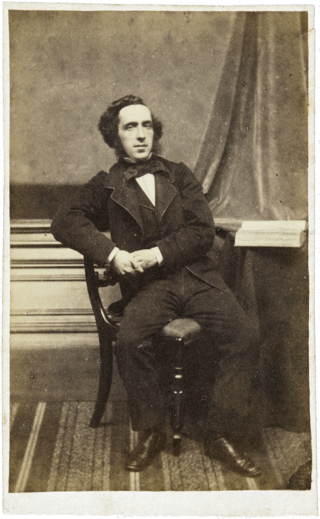 9
Petrus Augustus de Génestet was a Dutch poet and theologian.
9
Petrus Augustus de Génestet was a Dutch poet and theologian.
Giovanni Battista Pergolesi
 9
Giovanni Battista Draghi, usually referred to as Giovanni Battista Pergolesi, was an Italian Baroque composer, violinist, and organist, leading exponent of the Baroque; he is considered one of the...
9
Giovanni Battista Draghi, usually referred to as Giovanni Battista Pergolesi, was an Italian Baroque composer, violinist, and organist, leading exponent of the Baroque; he is considered one of the...
Claudio Monteverdi
 9
Claudio Giovanni Antonio Monteverdi was an Italian composer, choirmaster and string player. A composer of both secular and sacred music, and a pioneer in the development of opera, he is considered a...
9
Claudio Giovanni Antonio Monteverdi was an Italian composer, choirmaster and string player. A composer of both secular and sacred music, and a pioneer in the development of opera, he is considered a...
Theo Thijssen
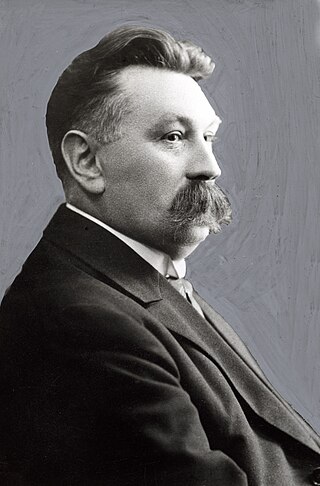 9
Theodorus Johannes Thijssen was a Dutch writer, teacher and socialist politician. He is best known for the book Kees de Jongen.
9
Theodorus Johannes Thijssen was a Dutch writer, teacher and socialist politician. He is best known for the book Kees de Jongen.
Thea Beckman
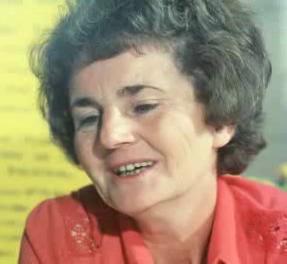 9
Theodora Beckmann, better known by her pen name Thea Beckman, was a Dutch author of children's books.
9
Theodora Beckmann, better known by her pen name Thea Beckman, was a Dutch author of children's books.
Hendrikus Chabot
 9
Hendrikus "Henk" Chabot was a Dutch painter and sculptor.
9
Hendrikus "Henk" Chabot was a Dutch painter and sculptor.
Jan Kappeyne van de Coppello
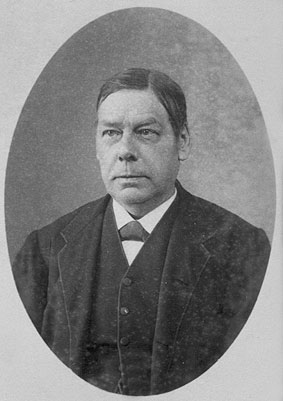 9
Joannes "Jan" Kappeyne van de Coppello was a Dutch liberal politician who served as Prime Minister of the Netherlands from 1877 to 1879.
9
Joannes "Jan" Kappeyne van de Coppello was a Dutch liberal politician who served as Prime Minister of the Netherlands from 1877 to 1879.
William Booth
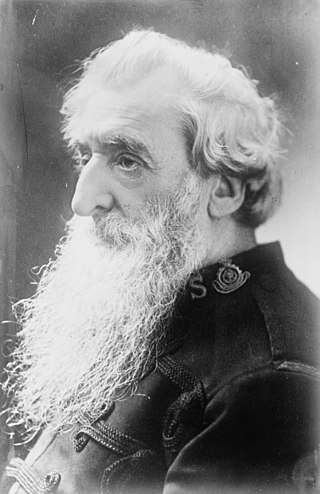 9
William Booth was an English Methodist preacher who, along with his wife, Catherine, founded the Salvation Army and became its first General (1878–1912). The Christian movement with a quasi-military...
9
William Booth was an English Methodist preacher who, along with his wife, Catherine, founded the Salvation Army and became its first General (1878–1912). The Christian movement with a quasi-military...
Coba Ritsema
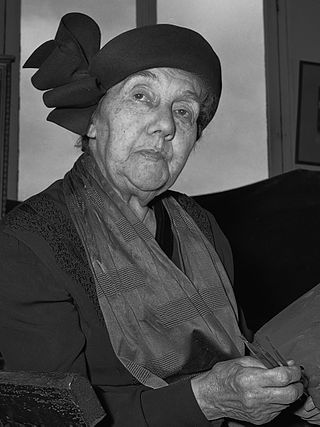 9
Jacoba Johanna (Coba) Ritsema, was a portrait painter from the Netherlands.
9
Jacoba Johanna (Coba) Ritsema, was a portrait painter from the Netherlands.
Etty Hillesum
 9
Esther (Etty) Hillesum was a Dutch Jewish author of confessional letters and diaries which describe both her religious awakening and the persecutions of Jewish people in Amsterdam during the German...
9
Esther (Etty) Hillesum was a Dutch Jewish author of confessional letters and diaries which describe both her religious awakening and the persecutions of Jewish people in Amsterdam during the German...
Jan van Schaffelaar
 9
Jan van Schaffelaar was a cavalry officer in the duchy of Guelders, the Netherlands. Born in the region of Barneveld in the Veluwe Quarter about 1445, he was in the military service of David of...
9
Jan van Schaffelaar was a cavalry officer in the duchy of Guelders, the Netherlands. Born in the region of Barneveld in the Veluwe Quarter about 1445, he was in the military service of David of...
Frederik Hendrik van Oranje
 9
Frederik Hendrik, prins van Oranje en graaf van Nassau, was stadhouder, kapitein-generaal en admiraal-generaal van de Republiek der Zeven Verenigde Nederlanden. Vanwege zijn succesvolle belegeringen...
9
Frederik Hendrik, prins van Oranje en graaf van Nassau, was stadhouder, kapitein-generaal en admiraal-generaal van de Republiek der Zeven Verenigde Nederlanden. Vanwege zijn succesvolle belegeringen...
George S. Patton
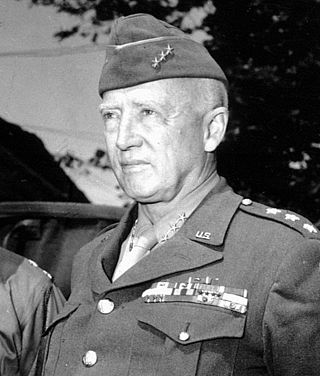 9
George Smith Patton Jr. was a general in the United States Army who commanded the Seventh Army in the Mediterranean Theater of World War II, and the Third Army in France and Germany after the Allied...
9
George Smith Patton Jr. was a general in the United States Army who commanded the Seventh Army in the Mediterranean Theater of World War II, and the Third Army in France and Germany after the Allied...
Horatius Cocles
 9
Publius Horatius Cocles was an officer in the army of the early Roman Republic who famously defended the Pons Sublicius from the invading army of Etruscan King Lars Porsena of Clusium in the late 6th...
9
Publius Horatius Cocles was an officer in the army of the early Roman Republic who famously defended the Pons Sublicius from the invading army of Etruscan King Lars Porsena of Clusium in the late 6th...
Johan Buziau
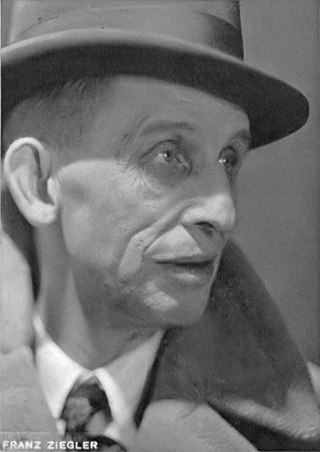 9
Johannes Franciscus Buziau was een Nederlandse clowneske komiek en revue-artiest.
9
Johannes Franciscus Buziau was een Nederlandse clowneske komiek en revue-artiest.
Alcide De Gasperi
 9
Alcide Amedeo Francesco De Gasperi was an Italian politician who founded the Christian Democracy party and served as prime minister of Italy in eight successive coalition governments from 1945 to...
9
Alcide Amedeo Francesco De Gasperi was an Italian politician who founded the Christian Democracy party and served as prime minister of Italy in eight successive coalition governments from 1945 to...
Faust
 9
Faust is the protagonist of a classic German legend based on the historical Johann Georg Faust.
9
Faust is the protagonist of a classic German legend based on the historical Johann Georg Faust.
Max Planck
 9
Max Karl Ernst Ludwig Planck was a German theoretical physicist whose discovery of energy quanta won him the Nobel Prize in Physics in 1918.
9
Max Karl Ernst Ludwig Planck was a German theoretical physicist whose discovery of energy quanta won him the Nobel Prize in Physics in 1918.
Charlotte van Pallandt
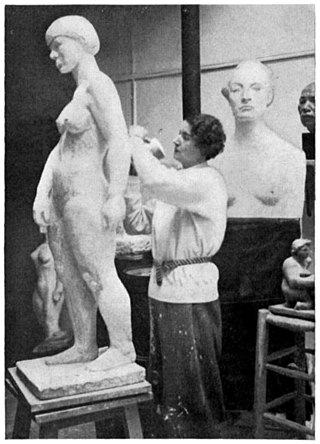 9
Charlotte van Pallandt was a Dutch painter and sculptor.
9
Charlotte van Pallandt was a Dutch painter and sculptor.
Willem Witsen
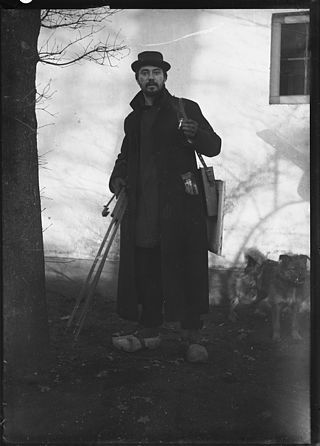 9
Willem Arnoldus Witsen was a Dutch painter and photographer associated with the Amsterdam Impressionism movement.
Witsen's work, influenced by James McNeill Whistler, often portrayed calm urban...
9
Willem Arnoldus Witsen was a Dutch painter and photographer associated with the Amsterdam Impressionism movement.
Witsen's work, influenced by James McNeill Whistler, often portrayed calm urban...
Hercules Seghers
 9
Hercules Pieterszoon Seghers or Segers was a Dutch painter and printmaker of the Dutch Golden Age. He has been called "the most inspired, experimental and original landscapist" of his period and an...
9
Hercules Pieterszoon Seghers or Segers was a Dutch painter and printmaker of the Dutch Golden Age. He has been called "the most inspired, experimental and original landscapist" of his period and an...
Gregor Mendel
 9
Gregor Johann Mendel OSA was an Austrian-Czech biologist, meteorologist, mathematician, Augustinian friar and abbot of St. Thomas' Abbey in Brno (Brünn), Margraviate of Moravia. Mendel was born in a...
9
Gregor Johann Mendel OSA was an Austrian-Czech biologist, meteorologist, mathematician, Augustinian friar and abbot of St. Thomas' Abbey in Brno (Brünn), Margraviate of Moravia. Mendel was born in a...
Paul the Apostle
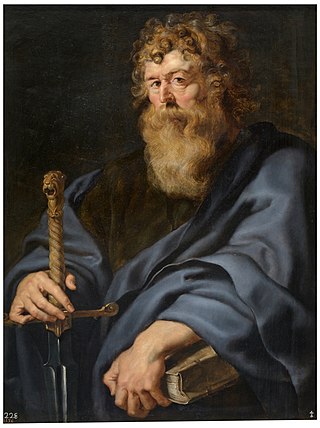 9
Paul, commonly known as Paul the Apostle and Saint Paul, was a Christian apostle who spread the teachings of Jesus in the first-century world. For his contributions towards the New Testament, he is...
9
Paul, commonly known as Paul the Apostle and Saint Paul, was a Christian apostle who spread the teachings of Jesus in the first-century world. For his contributions towards the New Testament, he is...
Edward Jenner
 9
Edward Jenner was an English physician and scientist who pioneered the concept of vaccines and created the smallpox vaccine, the world's first vaccine. The terms vaccine and vaccination are derived...
9
Edward Jenner was an English physician and scientist who pioneered the concept of vaccines and created the smallpox vaccine, the world's first vaccine. The terms vaccine and vaccination are derived...
Pim Mulier
 9
Willem Johan Herman Mulier, known as Pim Mulier was one of the leading figures in the sporting history of the Netherlands.
9
Willem Johan Herman Mulier, known as Pim Mulier was one of the leading figures in the sporting history of the Netherlands.
Perseus
 9
In Greek mythology, Perseus is the legendary founder of the Perseid dynasty. He was, alongside Cadmus and Bellerophon, the greatest Greek hero and slayer of monsters before the days of Heracles. He...
9
In Greek mythology, Perseus is the legendary founder of the Perseid dynasty. He was, alongside Cadmus and Bellerophon, the greatest Greek hero and slayer of monsters before the days of Heracles. He...
Gerrit Jan van Heuven Goedhart
 9
Gerrit Jan van Heuven Goedhart was a Dutch politician, diplomat and journalist. A member of the Labour Party (PvdA), he was Minister of Justice from 1944 to 1945 under Prime Minister Pieter Sjoerds...
9
Gerrit Jan van Heuven Goedhart was a Dutch politician, diplomat and journalist. A member of the Labour Party (PvdA), he was Minister of Justice from 1944 to 1945 under Prime Minister Pieter Sjoerds...
Robert Stolz
 9
Robert Elisabeth Stolz was an Austrian songwriter and conductor as well as a composer of operettas and film music.
9
Robert Elisabeth Stolz was an Austrian songwriter and conductor as well as a composer of operettas and film music.
Jodocus Hondius
 9
Jodocus Hondius was a Flemish and Dutch engraver and cartographer. He is sometimes called Jodocus Hondius the Elder to distinguish him from his son Jodocus Hondius II. Hondius is best known for his...
9
Jodocus Hondius was a Flemish and Dutch engraver and cartographer. He is sometimes called Jodocus Hondius the Elder to distinguish him from his son Jodocus Hondius II. Hondius is best known for his...
Harry S. Truman
 9
Harry S. Truman was the 33rd president of the United States, serving from 1945 to 1953. A member of the Democratic Party, he previously served as a United States senator from Missouri from 1935 to...
9
Harry S. Truman was the 33rd president of the United States, serving from 1945 to 1953. A member of the Democratic Party, he previously served as a United States senator from Missouri from 1935 to...
Clara Wichmann
 9
Clara Gertrud Wichmann was a German–Dutch lawyer and anarchist feminist activist, who became a leading advocate of criminal justice reform and prison abolition in the Netherlands.
9
Clara Gertrud Wichmann was a German–Dutch lawyer and anarchist feminist activist, who became a leading advocate of criminal justice reform and prison abolition in the Netherlands.
John Brugman
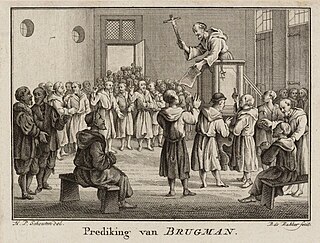 9
John Brugman, was a 15th-century Franciscan friar who became a renowned preacher in the Netherlands.
9
John Brugman, was a 15th-century Franciscan friar who became a renowned preacher in the Netherlands.
Rob Graafland
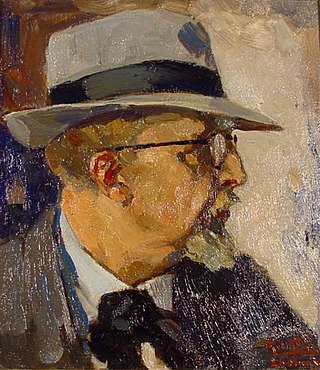 9
Rob Graafland was a Dutch painter. His work was part of the painting event in the art competition at the 1936 Summer Olympics.
9
Rob Graafland was a Dutch painter. His work was part of the painting event in the art competition at the 1936 Summer Olympics.
Óscar Romero
 9
Óscar Arnulfo Romero y Galdámez was a prelate of the Catholic Church in El Salvador. He served as Auxiliary Bishop of the Archdiocese of San Salvador, the Titular Bishop of Tambeae, as Bishop of...
9
Óscar Arnulfo Romero y Galdámez was a prelate of the Catholic Church in El Salvador. He served as Auxiliary Bishop of the Archdiocese of San Salvador, the Titular Bishop of Tambeae, as Bishop of...
Woodrow Wilson
 9
Thomas Woodrow Wilson was an American politician and academic who served as the 28th president of the United States from 1913 to 1921. A member of the Democratic Party, Wilson served as the president...
9
Thomas Woodrow Wilson was an American politician and academic who served as the 28th president of the United States from 1913 to 1921. A member of the Democratic Party, Wilson served as the president...
Henri Jonas
 9
Henri Charles Jonas was een Nederlandse beeldend kunstenaar. Jonas was een representant van de zogenoemde Limburgse School.
9
Henri Charles Jonas was een Nederlandse beeldend kunstenaar. Jonas was een representant van de zogenoemde Limburgse School.
Kees van Dongen
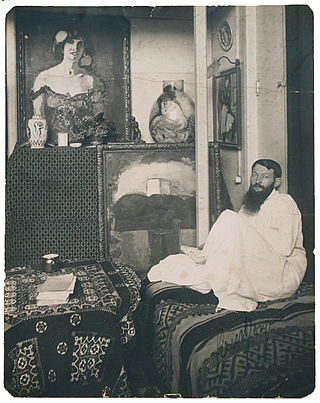 9
Cornelis Theodorus Maria "Kees" van Dongen was a Dutch-French painter who was one of the leading Fauves. Van Dongen's early work was influenced by the Hague School and symbolism and it evolved...
9
Cornelis Theodorus Maria "Kees" van Dongen was a Dutch-French painter who was one of the leading Fauves. Van Dongen's early work was influenced by the Hague School and symbolism and it evolved...
Carolus Clusius
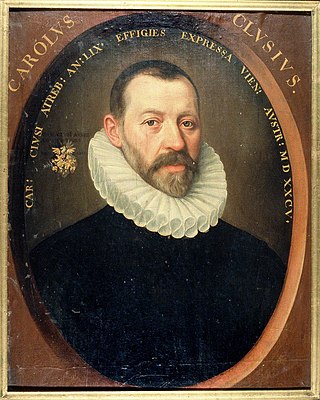 9
Charles de l'Écluse, L'Escluse, or Carolus Clusius, seigneur de Watènes, was an Artois doctor and pioneering botanist, perhaps the most influential of all 16th-century scientific horticulturists.
9
Charles de l'Écluse, L'Escluse, or Carolus Clusius, seigneur de Watènes, was an Artois doctor and pioneering botanist, perhaps the most influential of all 16th-century scientific horticulturists.
Dieric Bouts
 9
Dieric Bouts was an Early Netherlandish painter. Bouts may have studied under Rogier van der Weyden, and his work was influenced by van der Weyden and Jan van Eyck. He worked in Leuven from 1457...
9
Dieric Bouts was an Early Netherlandish painter. Bouts may have studied under Rogier van der Weyden, and his work was influenced by van der Weyden and Jan van Eyck. He worked in Leuven from 1457...
Ambrose
 9
Ambrose of Milan, venerated as Saint Ambrose, was a theologian and statesman who served as Bishop of Milan from 374 to 397. He expressed himself prominently as a public figure, fiercely promoting...
9
Ambrose of Milan, venerated as Saint Ambrose, was a theologian and statesman who served as Bishop of Milan from 374 to 397. He expressed himself prominently as a public figure, fiercely promoting...
Hildo Krop
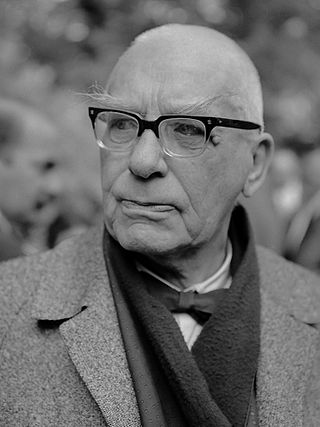 8
Hildebrand Lucien (Hildo) Krop was a prolific Dutch sculptor and furniture designer, widely known as the city sculptor of Amsterdam, where his work is well represented.
8
Hildebrand Lucien (Hildo) Krop was a prolific Dutch sculptor and furniture designer, widely known as the city sculptor of Amsterdam, where his work is well represented.
Lizzy Ansingh
 8
Maria Elisabeth Georgina Ansingh was a Dutch painter.
8
Maria Elisabeth Georgina Ansingh was a Dutch painter.
Gijsbrecht IV of Amstel
 8
Gijsbrecht IV of Amstel or Gijsbrecht IV van Amstel was a powerful lord in the medieval County of Holland and a member of the Van Aemstel family. His territory was Amstelland, and his son was Jan I...
8
Gijsbrecht IV of Amstel or Gijsbrecht IV van Amstel was a powerful lord in the medieval County of Holland and a member of the Van Aemstel family. His territory was Amstelland, and his son was Jan I...
Jan van Zutphen
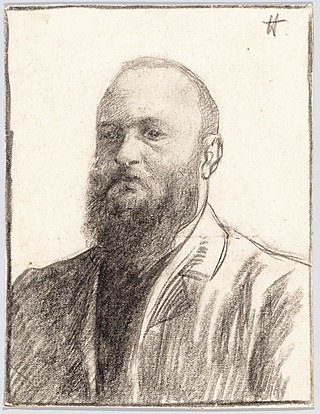 8
Johannes Andries van Zutphen was een Nederlands vakbondsbestuurder van de diamantbewerkersbond en oprichter en voorzitter van sanatorium Zonnestraal in Hilversum. Hij is erkend als een inspirerend...
8
Johannes Andries van Zutphen was een Nederlands vakbondsbestuurder van de diamantbewerkersbond en oprichter en voorzitter van sanatorium Zonnestraal in Hilversum. Hij is erkend als een inspirerend...
August Snieders
 8
August Snieders was a Flemish journalist and writer. He started his career in 's-Hertogenbosch, but later moved to Antwerp. In 1845, he became editor of the newspaper Het Handelsblad, of which he was...
8
August Snieders was a Flemish journalist and writer. He started his career in 's-Hertogenbosch, but later moved to Antwerp. In 1845, he became editor of the newspaper Het Handelsblad, of which he was...
Marius Bauer
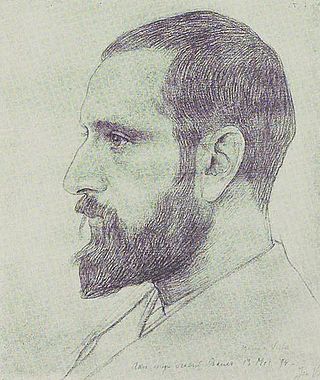 8
Marius Alexander Jacques Bauer was a Dutch painter, etcher and lithographer, best known for his Oriental scenes. His style was largely Impressionistic, although it also derived to some extent from...
8
Marius Alexander Jacques Bauer was a Dutch painter, etcher and lithographer, best known for his Oriental scenes. His style was largely Impressionistic, although it also derived to some extent from...
Clara Eggink
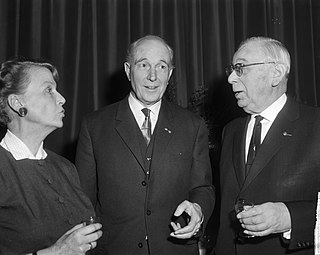 8
Clara Hendrika Catharina Clementine Helène Eggink, was een Nederlands dichteres, prozaschrijfster en vertaalster.
8
Clara Hendrika Catharina Clementine Helène Eggink, was een Nederlands dichteres, prozaschrijfster en vertaalster.
Pliny the Elder
 8
Gaius Plinius Secundus, called Pliny the Elder, was a Roman author, naturalist, natural philosopher, naval and army commander of the early Roman Empire, and a friend of the emperor Vespasian. He...
8
Gaius Plinius Secundus, called Pliny the Elder, was a Roman author, naturalist, natural philosopher, naval and army commander of the early Roman Empire, and a friend of the emperor Vespasian. He...
Jan Rudolph Slotemaker de Bruïne
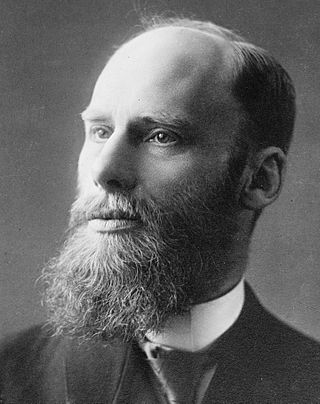 8
Jan Rudolph Slotemaker de Bruïne was a Dutch politician of the defunct Christian Historical Union (CHU) party now merged into the Christian Democratic Appeal (CDA) party and theologian.
8
Jan Rudolph Slotemaker de Bruïne was a Dutch politician of the defunct Christian Historical Union (CHU) party now merged into the Christian Democratic Appeal (CDA) party and theologian.
Saint Ursula
 8
Ursula was a Romano-British virgin and martyr possibly of royal origin. She is venerated as a saint in the Roman Catholic Church and the Anglican Communion. Her feast day in the pre-1970 General...
8
Ursula was a Romano-British virgin and martyr possibly of royal origin. She is venerated as a saint in the Roman Catholic Church and the Anglican Communion. Her feast day in the pre-1970 General...
Raoul Wallenberg
 8
Raoul Gustaf Wallenberg was a Swedish architect, businessman, diplomat, and humanitarian. He saved thousands of Jews in German-occupied Hungary during the Holocaust from German Nazis and Hungarian...
8
Raoul Gustaf Wallenberg was a Swedish architect, businessman, diplomat, and humanitarian. He saved thousands of Jews in German-occupied Hungary during the Holocaust from German Nazis and Hungarian...
Clément van Maasdijk
 8
Clément Guillaume Jean van Maasdijk was een Nederlandse vliegenier en luchtvaartpionier. Hij was de eerste Nederlander die omkwam bij een vliegtuigongeluk.
8
Clément Guillaume Jean van Maasdijk was een Nederlandse vliegenier en luchtvaartpionier. Hij was de eerste Nederlander die omkwam bij een vliegtuigongeluk.
Henry Purcell
 8
Henry Purcell was an English composer of Baroque music.
8
Henry Purcell was an English composer of Baroque music.
Herman Willem Daendels
 8
Herman Willem Daendels was a Dutch revolutionary, military leader, and statesman. He was 36th Governor General of the Dutch East Indies, a position he held from 1808 to 1811.
8
Herman Willem Daendels was a Dutch revolutionary, military leader, and statesman. He was 36th Governor General of the Dutch East Indies, a position he held from 1808 to 1811.
Cissy van Marxveldt
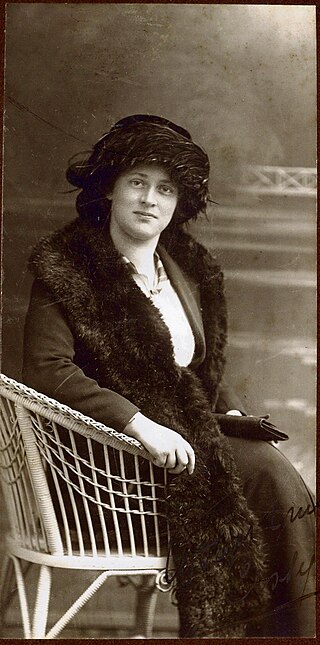 8
Sietske de Haan, better known by her pen name Cissy van Marxveldt, was a Dutch writer of children's books. She is best known for her series of Joop ter Heul novels.
8
Sietske de Haan, better known by her pen name Cissy van Marxveldt, was a Dutch writer of children's books. She is best known for her series of Joop ter Heul novels.
Willem Frederik Hermans
 8
Willem Frederik Hermans was a Dutch author of poetry, novels, short stories, plays, as well as book-length studies, essays, and literary criticism. His most famous works are The House of Refuge, The...
8
Willem Frederik Hermans was a Dutch author of poetry, novels, short stories, plays, as well as book-length studies, essays, and literary criticism. His most famous works are The House of Refuge, The...
Van Aerssen
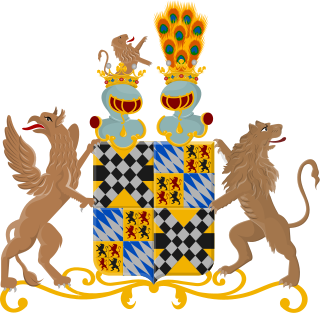 8
Het geslacht Van Aerssen was een van oorsprong uit de Zuidelijke Nederlanden komend geslacht waarvan leden in 1814 tot de adel van het Koninkrijk der Nederlanden ging behoren. Een tak behoort tot de...
8
Het geslacht Van Aerssen was een van oorsprong uit de Zuidelijke Nederlanden komend geslacht waarvan leden in 1814 tot de adel van het Koninkrijk der Nederlanden ging behoren. Een tak behoort tot de...
Louis Paul Boon
 8
Lodewijk Paul Aalbrecht Boon was a Belgian writer of novels, poetry, pornography, columns and art criticism. He was also a painter. He is best known for the novels My Little War (1947), the diptych...
8
Lodewijk Paul Aalbrecht Boon was a Belgian writer of novels, poetry, pornography, columns and art criticism. He was also a painter. He is best known for the novels My Little War (1947), the diptych...
Jan Wils
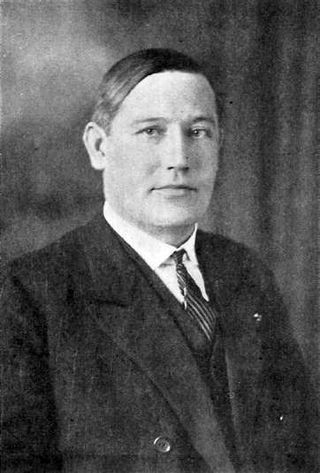 8
Jan Wils was a Dutch architect. He was born in Alkmaar and died in Voorburg.
8
Jan Wils was a Dutch architect. He was born in Alkmaar and died in Voorburg.
Hendrick de Keyser
 8
Hendrick de Keyser was a Dutch sculptor, merchant in Belgium bluestone, and architect who was instrumental in establishing a late Renaissance form of Mannerism changing into Baroque. Most of his...
8
Hendrick de Keyser was a Dutch sculptor, merchant in Belgium bluestone, and architect who was instrumental in establishing a late Renaissance form of Mannerism changing into Baroque. Most of his...
Saint Eustace
 8
Saint Eustace is revered as a Christian martyr. According to legend, he was martyred in AD 118, at the command of emperor Hadrian. Eustace was a pagan Roman general, who converted to Christianity...
8
Saint Eustace is revered as a Christian martyr. According to legend, he was martyred in AD 118, at the command of emperor Hadrian. Eustace was a pagan Roman general, who converted to Christianity...
Olof Palme
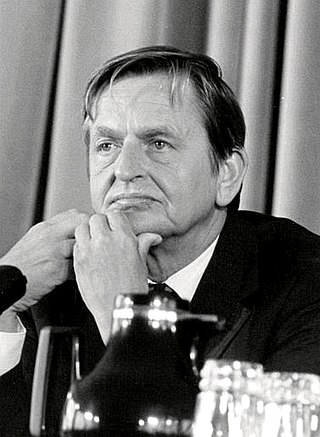 8
Sven Olof Joachim Palme was a Swedish politician and statesman who served as Prime Minister of Sweden from 1969 to 1976 and 1982 to 1986. Palme led the Swedish Social Democratic Party from 1969 until...
8
Sven Olof Joachim Palme was a Swedish politician and statesman who served as Prime Minister of Sweden from 1969 to 1976 and 1982 to 1986. Palme led the Swedish Social Democratic Party from 1969 until...
Isaäc Dignus Fransen van de Putte
 8
Isaäc Dignus Fransen van de Putte was a Dutch politician who briefly served as Prime Minister of the Netherlands in 1866, and as Minister of Colonial Affairs from 1863 to 1866 and 1872 to 1874.
8
Isaäc Dignus Fransen van de Putte was a Dutch politician who briefly served as Prime Minister of the Netherlands in 1866, and as Minister of Colonial Affairs from 1863 to 1866 and 1872 to 1874.
Sophie of Württemberg
 8
Sophie of Württemberg was Queen of the Netherlands as the first wife of King William III. Sophie separated from William in 1855 but continued to perform her duties as queen in public. She was known...
8
Sophie of Württemberg was Queen of the Netherlands as the first wife of King William III. Sophie separated from William in 1855 but continued to perform her duties as queen in public. She was known...
René Antoine Ferchault de Réaumur
 8
René Antoine Ferchault de Réaumur was a French entomologist and writer who contributed to many different fields, especially the study of insects. He introduced the Réaumur temperature scale.
8
René Antoine Ferchault de Réaumur was a French entomologist and writer who contributed to many different fields, especially the study of insects. He introduced the Réaumur temperature scale.
Carry Pothuis-Smit
 8
Wilhelmina Carolina Benjamina "Carry" Pothuis-Smit was a politician and feminist in the Netherlands. She was the first woman elected to the Senate of the Netherlands on 23 March 1920.
8
Wilhelmina Carolina Benjamina "Carry" Pothuis-Smit was a politician and feminist in the Netherlands. She was the first woman elected to the Senate of the Netherlands on 23 March 1920.
Count Basie
 8
William James "Count" Basie was an American jazz pianist, organist, bandleader, and composer. In 1935, he formed the Count Basie Orchestra, and in 1936 took them to Chicago for a long engagement and...
8
William James "Count" Basie was an American jazz pianist, organist, bandleader, and composer. In 1935, he formed the Count Basie Orchestra, and in 1936 took them to Chicago for a long engagement and...
Sibrand Gratama
 8
Sibrand Gratama was een Nederlandse jurist en burgemeester.
8
Sibrand Gratama was een Nederlandse jurist en burgemeester.
Jan Blanken
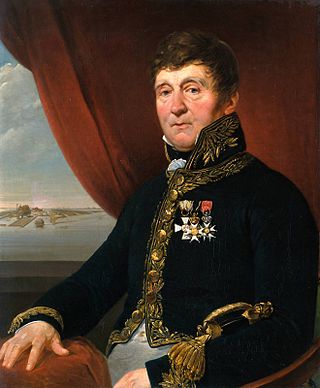 8
Jan Blanken was een Nederlands waterbouwkundig ingenieur.
8
Jan Blanken was een Nederlands waterbouwkundig ingenieur.
Leonard Springer
 8
Leonard Antony Springer was een Nederlands tuin- en landschapsarchitect.
8
Leonard Antony Springer was een Nederlands tuin- en landschapsarchitect.
Jacques Schreurs
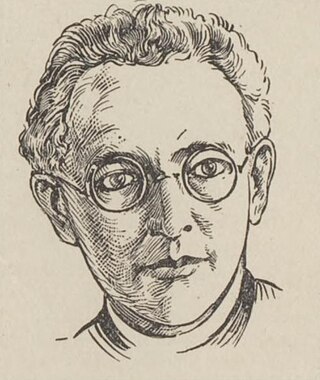 8
Jacobus Hubertus (Jacques) Schreurs was een Nederlands priester, dichter en schrijver. Hij dankte zijn bekendheid vooral aan zijn deels autobiografische, driedelige roman Kroniek eener parochie,...
8
Jacobus Hubertus (Jacques) Schreurs was een Nederlands priester, dichter en schrijver. Hij dankte zijn bekendheid vooral aan zijn deels autobiografische, driedelige roman Kroniek eener parochie,...
James Cook
 8
Captain James Cook was a British explorer, cartographer and naval officer famous for his three voyages between 1768 and 1779 in the Pacific Ocean and to New Zealand and Australia in particular. He...
8
Captain James Cook was a British explorer, cartographer and naval officer famous for his three voyages between 1768 and 1779 in the Pacific Ocean and to New Zealand and Australia in particular. He...
Joris van Spilbergen
 8
Joris van Spilbergen was a Dutch naval officer.
Joris van Spilbergen was born in Antwerp in 1568.
8
Joris van Spilbergen was a Dutch naval officer.
Joris van Spilbergen was born in Antwerp in 1568.
Peter Canisius
 8
Peter Canisius was a Dutch Jesuit priest. He became known for his strong support for the Catholic faith during the Protestant Reformation in Germany, Austria, Bohemia, Moravia, Switzerland and the...
8
Peter Canisius was a Dutch Jesuit priest. He became known for his strong support for the Catholic faith during the Protestant Reformation in Germany, Austria, Bohemia, Moravia, Switzerland and the...
Louise van Panhuys
 8
Louise van Panhuys née von Barckhaus of Wiesenhütten was a German botanical artist and landscape painter.
8
Louise van Panhuys née von Barckhaus of Wiesenhütten was a German botanical artist and landscape painter.
Max Havelaar
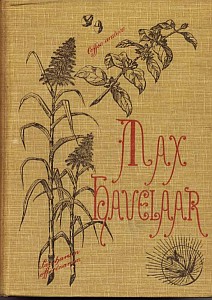 8
Max Havelaar; or, The Coffee Auctions of the Dutch Trading Company is an 1860 novel by Multatuli, which played a key role in shaping and modifying Dutch colonial policy in the Dutch East Indies in...
8
Max Havelaar; or, The Coffee Auctions of the Dutch Trading Company is an 1860 novel by Multatuli, which played a key role in shaping and modifying Dutch colonial policy in the Dutch East Indies in...
Jan Palach
Bertha von Suttner
 8
Bertha Sophie Felicitas Freifrau von Suttner was an Austro-Bohemian noblewoman, pacifist and novelist. In 1905, she became the second female Nobel laureate, the first woman to be awarded the Nobel...
8
Bertha Sophie Felicitas Freifrau von Suttner was an Austro-Bohemian noblewoman, pacifist and novelist. In 1905, she became the second female Nobel laureate, the first woman to be awarded the Nobel...
Van Teylingen (I)
 8
Van Teylingen was de naam van een adellijk geslacht uit Holland, dat in de middeleeuwen een grote rol speelde in de omgeving van de graven van Holland.
8
Van Teylingen was de naam van een adellijk geslacht uit Holland, dat in de middeleeuwen een grote rol speelde in de omgeving van de graven van Holland.
Claudius
 8
Tiberius Claudius Caesar Augustus Germanicus was a Roman emperor, ruling from AD 41 to 54. A member of the Julio-Claudian dynasty, Claudius was born to Drusus and Antonia Minor at Lugdunum in Roman...
8
Tiberius Claudius Caesar Augustus Germanicus was a Roman emperor, ruling from AD 41 to 54. A member of the Julio-Claudian dynasty, Claudius was born to Drusus and Antonia Minor at Lugdunum in Roman...
Louis Davids
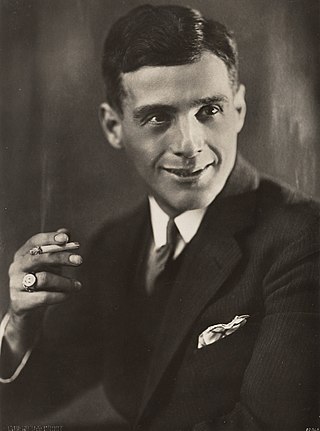 8
Louis Davids was a Dutch actor, singer, comedian and revue artist. He is widely considered one of the biggest names in Dutch performing arts.
8
Louis Davids was a Dutch actor, singer, comedian and revue artist. He is widely considered one of the biggest names in Dutch performing arts.
Abraham van der Hulst
 8
Abraham van der Hulst was a Dutch admiral in the 17th century.
8
Abraham van der Hulst was a Dutch admiral in the 17th century.
Billie Holiday
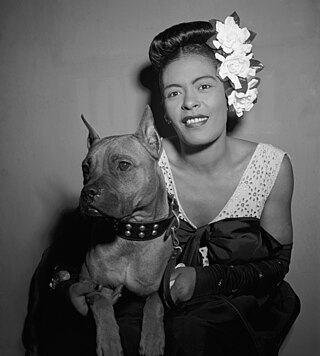 8
Billie Holiday was an American jazz and swing music singer. Nicknamed "Lady Day" by her friend and music partner, Lester Young, Holiday made a significant contribution to jazz music and pop singing....
8
Billie Holiday was an American jazz and swing music singer. Nicknamed "Lady Day" by her friend and music partner, Lester Young, Holiday made a significant contribution to jazz music and pop singing....
Simone de Beauvoir
 8
Simone Lucie Ernestine Marie Bertrand de Beauvoir was a French existentialist philosopher, writer, social theorist, and feminist activist. Though she did not consider herself a philosopher, nor was...
8
Simone Lucie Ernestine Marie Bertrand de Beauvoir was a French existentialist philosopher, writer, social theorist, and feminist activist. Though she did not consider herself a philosopher, nor was...
Jan Smuts
 8
Field Marshal Jan Christian Smuts, was a South African statesman, military leader and philosopher. In addition to holding various military and cabinet posts, he served as prime minister of the Union...
8
Field Marshal Jan Christian Smuts, was a South African statesman, military leader and philosopher. In addition to holding various military and cabinet posts, he served as prime minister of the Union...
Joanna, Duchess of Brabant
 8
Joanna, Duchess of Brabant, also known as Jeanne, was a ruling Duchess (Duke) of Brabant from 1355 until her death. She was duchess of Brabant until the occupation of the duchy by her brother-in-law...
8
Joanna, Duchess of Brabant, also known as Jeanne, was a ruling Duchess (Duke) of Brabant from 1355 until her death. She was duchess of Brabant until the occupation of the duchy by her brother-in-law...
Robert Boyle
 8
Robert Boyle was an Anglo-Irish natural philosopher, chemist, physicist, alchemist and inventor. Boyle is largely regarded today as the first modern chemist, and therefore one of the founders of...
8
Robert Boyle was an Anglo-Irish natural philosopher, chemist, physicist, alchemist and inventor. Boyle is largely regarded today as the first modern chemist, and therefore one of the founders of...
Ferdinand Huyck
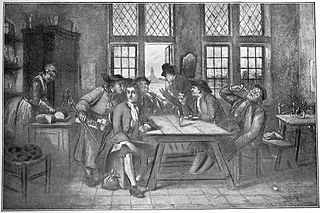 8
Ferdinand Huyck is een historische avonturenroman uit 1840 van Jacob van Lennep. Het speelt zich af vlak voor 1740. Het boek wordt beschouwd als het meesterwerk van de schrijver en kende in de...
8
Ferdinand Huyck is een historische avonturenroman uit 1840 van Jacob van Lennep. Het speelt zich af vlak voor 1740. Het boek wordt beschouwd als het meesterwerk van de schrijver en kende in de...
Ferdinand von Zeppelin
 8
Count Ferdinand von Zeppelin was a German general and later inventor of the Zeppelin rigid airships. His name became synonymous with airships and dominated long-distance flight until the 1930s. He...
8
Count Ferdinand von Zeppelin was a German general and later inventor of the Zeppelin rigid airships. His name became synonymous with airships and dominated long-distance flight until the 1930s. He...
Pablo Picasso
 8
Pablo Ruiz Picasso was a Spanish painter, sculptor, printmaker, ceramicist, and theatre designer who spent most of his adult life in France. One of the most influential artists of the 20th century,...
8
Pablo Ruiz Picasso was a Spanish painter, sculptor, printmaker, ceramicist, and theatre designer who spent most of his adult life in France. One of the most influential artists of the 20th century,...
Jan van Amstel
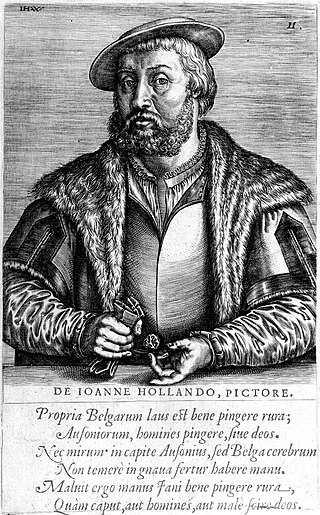 8
Jan van Amstel, or Jan de Hollander, was a Dutch Northern Renaissance painter.
8
Jan van Amstel, or Jan de Hollander, was a Dutch Northern Renaissance painter.
Werner von Siemens
 8
Ernst Werner Siemens was a German electrical engineer, inventor and industrialist. Siemens's name has been adopted as the SI unit of electrical conductance, the siemens. He founded the electrical and...
8
Ernst Werner Siemens was a German electrical engineer, inventor and industrialist. Siemens's name has been adopted as the SI unit of electrical conductance, the siemens. He founded the electrical and...
Hendrik Conscience
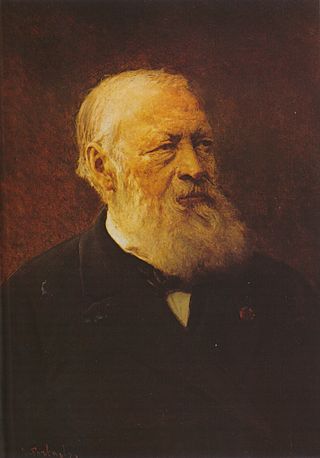 8
Henri (Hendrik) Conscience was a Belgian author. He is considered the pioneer of Dutch-language literature in Flanders, writing at a time when Belgium was dominated by the French language among the...
8
Henri (Hendrik) Conscience was a Belgian author. He is considered the pioneer of Dutch-language literature in Flanders, writing at a time when Belgium was dominated by the French language among the...
Robert Fruin
 8
Robert Jacobus Fruin was a Dutch historian. A follower of Leopold von Ranke, he introduced the scientific study of history in the Netherlands when he was professor of Dutch national history at Leiden...
8
Robert Jacobus Fruin was a Dutch historian. A follower of Leopold von Ranke, he introduced the scientific study of history in the Netherlands when he was professor of Dutch national history at Leiden...
Joachim le Sage ten Broek
 8
Joachim George le Sage ten Broek was een Nederlands notaris, schrijver, historicus en journalist. Hij was een belangrijke rooms-katholieke emancipator, polemist en apologeet. Voorts schreef hij...
8
Joachim George le Sage ten Broek was een Nederlands notaris, schrijver, historicus en journalist. Hij was een belangrijke rooms-katholieke emancipator, polemist en apologeet. Voorts schreef hij...
Bertus Aafjes
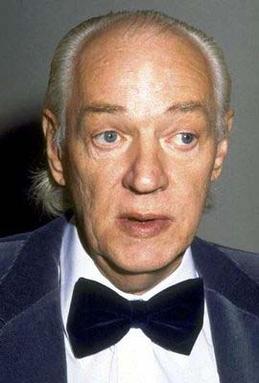 8
Lambertus Jacobus Johannes "Bertus" Aafjes was a Dutch poet noteworthy for his poems about resistance to German occupation during World War II.
8
Lambertus Jacobus Johannes "Bertus" Aafjes was a Dutch poet noteworthy for his poems about resistance to German occupation during World War II.
Ko Suurhoff
 8
Jacobus Gerardus "Ko" Suurhoff was a Dutch politician of the defunct Social Democratic Workers' Party (SDAP) and co-founder of the Labour Party (PvdA) and trade union leader.
8
Jacobus Gerardus "Ko" Suurhoff was a Dutch politician of the defunct Social Democratic Workers' Party (SDAP) and co-founder of the Labour Party (PvdA) and trade union leader.
Jelle Zijlstra
 8
Jelle Zijlstra was a Dutch politician of the defunct Anti-Revolutionary Party (ARP) now the Christian Democratic Appeal (CDA) party and economist who served as Prime Minister of the Netherlands from...
8
Jelle Zijlstra was a Dutch politician of the defunct Anti-Revolutionary Party (ARP) now the Christian Democratic Appeal (CDA) party and economist who served as Prime Minister of the Netherlands from...
Maria Louise Baldwin
 8
Maria Louise Baldwin was an American educator and civic leader born and raised in Cambridge, Massachusetts. She lived all her life in Cambridge and Boston. Writing in 1917, W. E. B. Du Bois claimed...
8
Maria Louise Baldwin was an American educator and civic leader born and raised in Cambridge, Massachusetts. She lived all her life in Cambridge and Boston. Writing in 1917, W. E. B. Du Bois claimed...
Simon Spoor
 7
General Simon Hendrik Spoor was the Chief of Staff of the Royal Netherlands East Indies Army and the Royal Dutch Army in the Dutch East Indies, from 1946 to 1949, during the Indonesian National...
7
General Simon Hendrik Spoor was the Chief of Staff of the Royal Netherlands East Indies Army and the Royal Dutch Army in the Dutch East Indies, from 1946 to 1949, during the Indonesian National...
Jan Pieter Heije
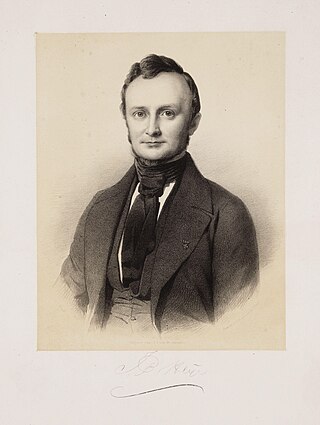 7
Jan Pieter Heije was een Nederlandse arts, die vooral bekend is geworden om zijn inzet voor dichtkunst en muziek. Liederen van zijn hand, zoals 'Daar zaten zeven kikkertjes' en het sinterklaaslied...
7
Jan Pieter Heije was een Nederlandse arts, die vooral bekend is geworden om zijn inzet voor dichtkunst en muziek. Liederen van zijn hand, zoals 'Daar zaten zeven kikkertjes' en het sinterklaaslied...
Gregorius
 7
Gregorius or The Good Sinner is a Middle High German narrative poem by Hartmann von Aue. Written around 1190 in rhyming couplets, it tells the story of a child born of the incestuous union of a...
7
Gregorius or The Good Sinner is a Middle High German narrative poem by Hartmann von Aue. Written around 1190 in rhyming couplets, it tells the story of a child born of the incestuous union of a...
Van Hardenbroek
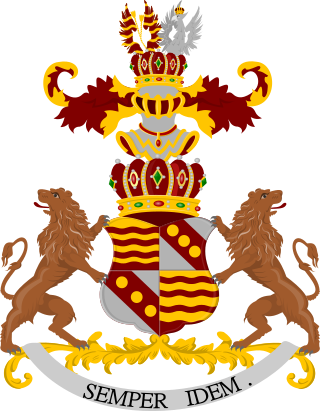 7
Van Hardenbroek is een van de oudste adellijke geslachten van Nederland en leden ervan behoren sinds 1814 tot de Nederlandse adel van het koninkrijk.
7
Van Hardenbroek is een van de oudste adellijke geslachten van Nederland en leden ervan behoren sinds 1814 tot de Nederlandse adel van het koninkrijk.
Gerard Heymans
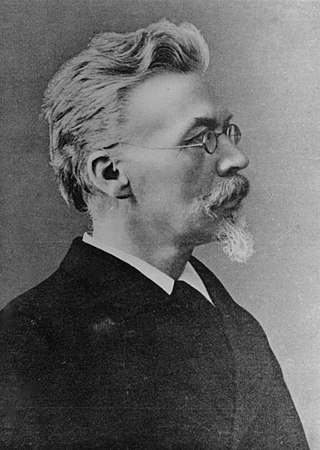 7
Gerardus Heymans was a Dutch philosopher and psychologist. From 1890 to 1927, he worked as a professor of philosophy at the University of Groningen (UG). He also served as rector magnificus...
7
Gerardus Heymans was a Dutch philosopher and psychologist. From 1890 to 1927, he worked as a professor of philosophy at the University of Groningen (UG). He also served as rector magnificus...
Bavo of Ghent
 7
Saint Bavo of Ghent is a Roman Catholic and Eastern Orthodox saint. He was the son of Pepin of Landen and the brother of saints Begga and Gertrude of Nivelles.
7
Saint Bavo of Ghent is a Roman Catholic and Eastern Orthodox saint. He was the son of Pepin of Landen and the brother of saints Begga and Gertrude of Nivelles.
Abraham Rademaker
 7
Abraham Rademaker was an 18th-century painter and printmaker from the Northern Netherlands.
7
Abraham Rademaker was an 18th-century painter and printmaker from the Northern Netherlands.
Saint Stephen
 7
Stephen is traditionally venerated as the protomartyr or first martyr of Christianity. According to the Acts of the Apostles, he was a deacon in the early church at Jerusalem who angered members of...
7
Stephen is traditionally venerated as the protomartyr or first martyr of Christianity. According to the Acts of the Apostles, he was a deacon in the early church at Jerusalem who angered members of...
Paul Steenbergen
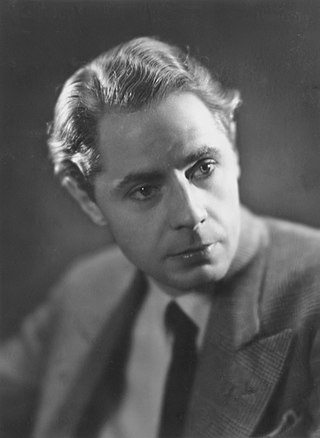 7
Paul Jozef Steenbergen was een Nederlands acteur en toneelregisseur.
7
Paul Jozef Steenbergen was een Nederlands acteur en toneelregisseur.
Alexander Graham Bell
 7
Alexander Graham Bell was a Scottish-born Canadian-American inventor, scientist and engineer who is credited with patenting the first practical telephone. He also co-founded the American Telephone...
7
Alexander Graham Bell was a Scottish-born Canadian-American inventor, scientist and engineer who is credited with patenting the first practical telephone. He also co-founded the American Telephone...
Nikola Tesla
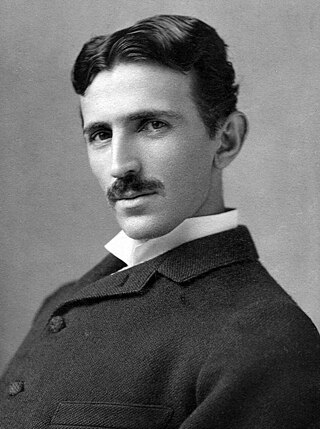 7
Nikola Tesla was a Serbian-American inventor, electrical engineer, mechanical engineer, and futurist. He is known for his contributions to the design of the modern alternating current (AC)...
7
Nikola Tesla was a Serbian-American inventor, electrical engineer, mechanical engineer, and futurist. He is known for his contributions to the design of the modern alternating current (AC)...
Marcellus Emants
 7
Marcellus Emants was a Dutch novelist whose work is considered one of the few examples of Dutch Naturalism. His writing is seen as a first step towards the renewing force of the Tachtigers towards...
7
Marcellus Emants was a Dutch novelist whose work is considered one of the few examples of Dutch Naturalism. His writing is seen as a first step towards the renewing force of the Tachtigers towards...
Johannes Stalpaert van der Wiele
 7
Johannes Stalpaert van der Wiele studeerde in Rome en Leuven en werd priester in Delft. Naast het priesterschap was hij schrijver. Hij schreef lofzangen op heiligen. Daarnaast was hij een belangrijke...
7
Johannes Stalpaert van der Wiele studeerde in Rome en Leuven en werd priester in Delft. Naast het priesterschap was hij schrijver. Hij schreef lofzangen op heiligen. Daarnaast was hij een belangrijke...
Teding van Berkhout
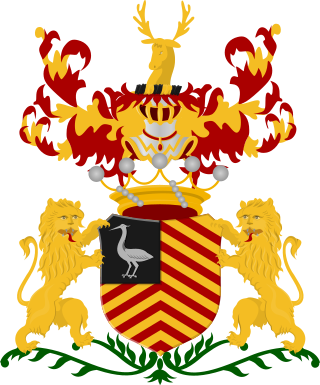 7
Teding van Berkhout is een Nederlands geslacht, waarvan leden vanaf 1815 behoren tot de Nederlandse adel.
7
Teding van Berkhout is een Nederlands geslacht, waarvan leden vanaf 1815 behoren tot de Nederlandse adel.
Cornelis van Tienhoven
 7
Cornelis van Tienhoven was an official of New Amsterdam from 1638 to 1656, and one of the more prominent people in New Netherland. He served in the administrations of three governors: Wouter van...
7
Cornelis van Tienhoven was an official of New Amsterdam from 1638 to 1656, and one of the more prominent people in New Netherland. He served in the administrations of three governors: Wouter van...
Marcus Aurelius
 7
Marcus Aurelius Antoninus was Roman emperor from 161 to 180 and a Stoic philosopher. He was a member of the Nerva–Antonine dynasty, the last of the rulers later known as the Five Good Emperors and...
7
Marcus Aurelius Antoninus was Roman emperor from 161 to 180 and a Stoic philosopher. He was a member of the Nerva–Antonine dynasty, the last of the rulers later known as the Five Good Emperors and...
Julius Caesar
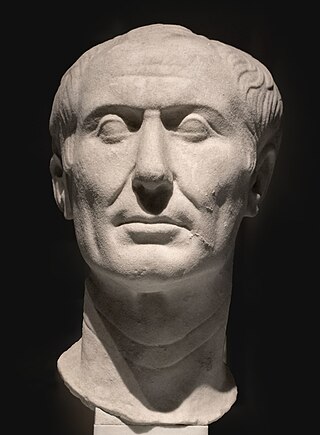 7
Gaius Julius Caesar was a Roman general and statesman. A member of the First Triumvirate, Caesar led the Roman armies in the Gallic Wars before defeating his political rival Pompey in a civil war,...
7
Gaius Julius Caesar was a Roman general and statesman. A member of the First Triumvirate, Caesar led the Roman armies in the Gallic Wars before defeating his political rival Pompey in a civil war,...
Anna Reijnvaan
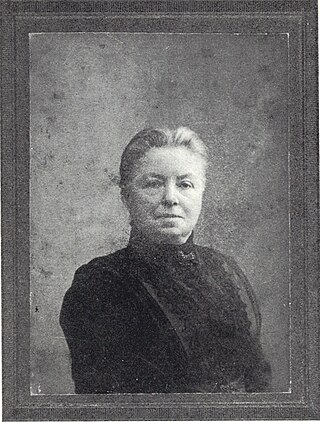 7
Johanna Paulina (Anna) Reijnvaan, ook gespeld met een Y als Reynvaan, was een Nederlandse verpleegster en adjunct-directrice in het Buitengasthuis en in het Wilhelmina Gasthuis in Amsterdam, de...
7
Johanna Paulina (Anna) Reijnvaan, ook gespeld met een Y als Reynvaan, was een Nederlandse verpleegster en adjunct-directrice in het Buitengasthuis en in het Wilhelmina Gasthuis in Amsterdam, de...
Charlie Parker
 7
Charles Parker Jr., nicknamed "Bird" or "Yardbird", was an American jazz saxophonist, band leader, and composer. Parker was a highly influential soloist and leading figure in the development of...
7
Charles Parker Jr., nicknamed "Bird" or "Yardbird", was an American jazz saxophonist, band leader, and composer. Parker was a highly influential soloist and leading figure in the development of...
Jan van Ravesteyn
 7
Jan Anthonisz van Ravesteyn was a successful portrait painter to the Dutch court in The Hague.
7
Jan Anthonisz van Ravesteyn was a successful portrait painter to the Dutch court in The Hague.
Ko van Dijk jr.
 7
Ko van Dijk (junior) (Amsterdam, 25 juli 1916 – Den Haag, 6 mei 1978) was een Nederlands toneel-, televisie-, film- en hoorspelacteur en daarnaast toneelregisseur. Hij speelde in 46 jaar ruim 300...
7
Ko van Dijk (junior) (Amsterdam, 25 juli 1916 – Den Haag, 6 mei 1978) was een Nederlands toneel-, televisie-, film- en hoorspelacteur en daarnaast toneelregisseur. Hij speelde in 46 jaar ruim 300...
Gerard Reve
 7
Gerard Kornelis van het Reve was a Dutch writer. He started writing as Simon Gerard van het Reve and adopted the shorter Gerard Reve in 1973. Together with Willem Frederik Hermans and Harry Mulisch,...
7
Gerard Kornelis van het Reve was a Dutch writer. He started writing as Simon Gerard van het Reve and adopted the shorter Gerard Reve in 1973. Together with Willem Frederik Hermans and Harry Mulisch,...
Syb Talma
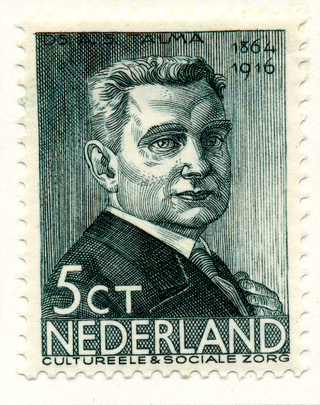 7
Aritius Sybrandus (Syb) Talma was a Dutch politician.
7
Aritius Sybrandus (Syb) Talma was a Dutch politician.
Charles Dickens
 7
Charles John Huffam Dickens was an English novelist and social critic who created some of the world's best-known fictional characters, and is regarded by many as the greatest novelist of the...
7
Charles John Huffam Dickens was an English novelist and social critic who created some of the world's best-known fictional characters, and is regarded by many as the greatest novelist of the...
David Bles
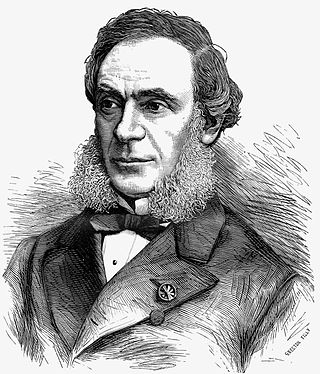 7
David Bles, was a 19th-century painter from the Northern Netherlands.
7
David Bles, was a 19th-century painter from the Northern Netherlands.
Jan Greshoff
 7
Jan Greshoff was a Dutch journalist, poet, and literary critic. He was the 1967 recipient of the Constantijn Huygens Prize.
7
Jan Greshoff was a Dutch journalist, poet, and literary critic. He was the 1967 recipient of the Constantijn Huygens Prize.
Neil Armstrong
 7
Neil Alden Armstrong was an American astronaut and aeronautical engineer who in 1969 became the first person to walk on the Moon. He was also a naval aviator, test pilot, and university professor.
7
Neil Alden Armstrong was an American astronaut and aeronautical engineer who in 1969 became the first person to walk on the Moon. He was also a naval aviator, test pilot, and university professor.
François de Casembroot
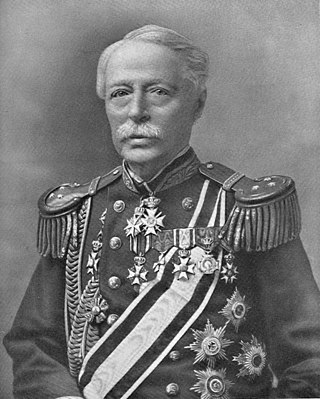 7
François de Casembroot was an officer of the Royal Netherlands Navy.
7
François de Casembroot was an officer of the Royal Netherlands Navy.
Albertus Jacobus Duymaer van Twist
 7
Albertus Jacobus Duymaer van Twist was the Governor-General of the Dutch East Indies from 1851 to 1856.
7
Albertus Jacobus Duymaer van Twist was the Governor-General of the Dutch East Indies from 1851 to 1856.
Mary of Burgundy
 7
Mary of Burgundy, nicknamed the Rich, was a member of the House of Valois-Burgundy who ruled a collection of states that included the duchies of Limburg, Brabant, Luxembourg, the counties of Namur,...
7
Mary of Burgundy, nicknamed the Rich, was a member of the House of Valois-Burgundy who ruled a collection of states that included the duchies of Limburg, Brabant, Luxembourg, the counties of Namur,...
Willem van Abcoude
 7
Willem van Abcoude en Duurstede was een edelman uit het Sticht. Hij was heer van Abcoude, Wijk bij Duurstede, Gaasbeek, Putten en Strijen.
7
Willem van Abcoude en Duurstede was een edelman uit het Sticht. Hij was heer van Abcoude, Wijk bij Duurstede, Gaasbeek, Putten en Strijen.
Gerard Bruning (beeldhouwer)
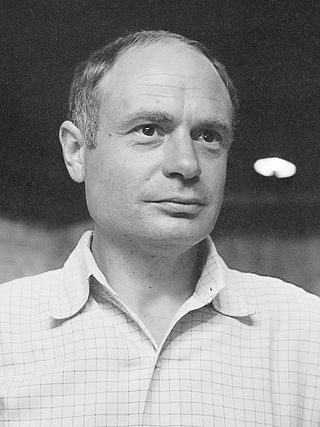 7
Gerard Marie (Gerard) Bruning was een Nederlandse beeldhouwer, schrijver, graficus, fotograaf en schilder.
7
Gerard Marie (Gerard) Bruning was een Nederlandse beeldhouwer, schrijver, graficus, fotograaf en schilder.
George Martens
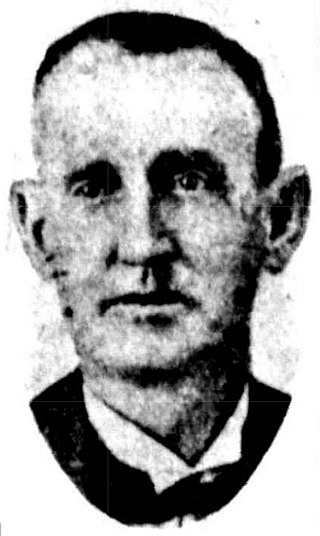 7
George William Martens was an Australian politician. He was an Australian Labor Party member of the Australian House of Representatives from 1928 to 1946, representing the electorate of Herbert.
7
George William Martens was an Australian politician. He was an Australian Labor Party member of the Australian House of Representatives from 1928 to 1946, representing the electorate of Herbert.
Elizabeth (biblical figure)
 7
Elizabeth was the mother of John the Baptist, the wife of Zechariah, and maternal aunt of Mary, mother of Jesus, according to the Gospel of Luke and in Islamic tradition. She was past normal...
7
Elizabeth was the mother of John the Baptist, the wife of Zechariah, and maternal aunt of Mary, mother of Jesus, according to the Gospel of Luke and in Islamic tradition. She was past normal...
Gerard David
 7
Gerard David was an Early Netherlandish painter and manuscript illuminator known for his brilliant use of color. Only a bare outline of his life survives, although some facts are known. He may have...
7
Gerard David was an Early Netherlandish painter and manuscript illuminator known for his brilliant use of color. Only a bare outline of his life survives, although some facts are known. He may have...
Anne Vondeling
 7
Anne Vondeling was a Dutch politician of the Labour Party (PvdA) and agronomist.
7
Anne Vondeling was a Dutch politician of the Labour Party (PvdA) and agronomist.
Saint Cecilia
 7
Saint Cecilia, also spelled Cecelia, was a Roman virgin martyr and is venerated in Catholic, Orthodox, Anglican, and some Lutheran churches, such as the Church of Sweden. She became the patroness of...
7
Saint Cecilia, also spelled Cecelia, was a Roman virgin martyr and is venerated in Catholic, Orthodox, Anglican, and some Lutheran churches, such as the Church of Sweden. She became the patroness of...
Charles II, Duke of Guelders
Hector
 7
In Greek mythology, Hector is a Trojan prince, and one of four sons to the King of Troy, he was a hero and the greatest warrior for Troy during the Trojan War. He is a major character in Homer's...
7
In Greek mythology, Hector is a Trojan prince, and one of four sons to the King of Troy, he was a hero and the greatest warrior for Troy during the Trojan War. He is a major character in Homer's...
Karel Appel
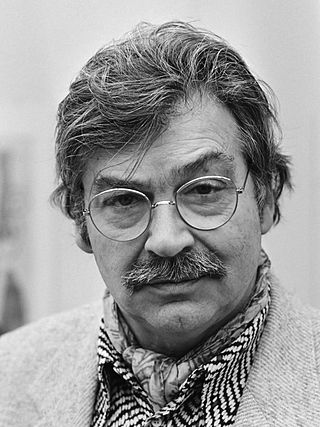 7
Christiaan Karel Appel was a Dutch painter, sculptor, and poet. He started painting at the age of fourteen and studied at the Rijksakademie in Amsterdam in the 1940s. He was one of the founders of...
7
Christiaan Karel Appel was a Dutch painter, sculptor, and poet. He started painting at the age of fourteen and studied at the Rijksakademie in Amsterdam in the 1940s. He was one of the founders of...
Augusta de Wit
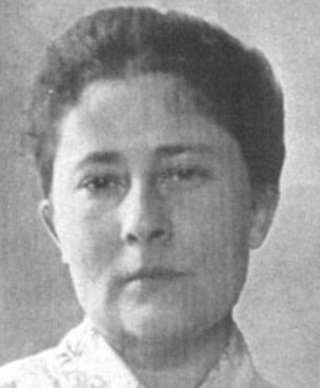 7
Augusta de Wit was a Dutch writer, born in the Dutch East Indies and best known for writing about Java.
7
Augusta de Wit was a Dutch writer, born in the Dutch East Indies and best known for writing about Java.
Tom Manders (Dutch artist)
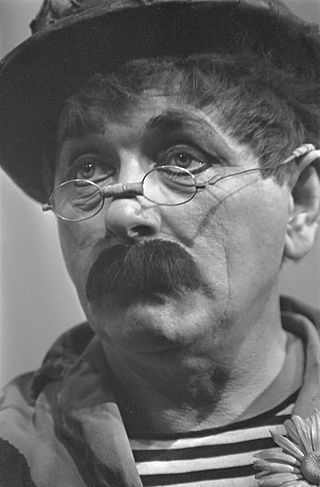 7
Antoon (Tom) Manders was a Dutch artist, comedian and cabaret performer. In later role, he became better known as Dorus.
7
Antoon (Tom) Manders was a Dutch artist, comedian and cabaret performer. In later role, he became better known as Dorus.
John Amos Comenius
 7
John Amos Comenius was a Moravian philosopher, pedagogue and theologian who is considered the father of modern education. He served as the last bishop of the Unity of the Brethren before becoming a...
7
John Amos Comenius was a Moravian philosopher, pedagogue and theologian who is considered the father of modern education. He served as the last bishop of the Unity of the Brethren before becoming a...
Saint Vitus
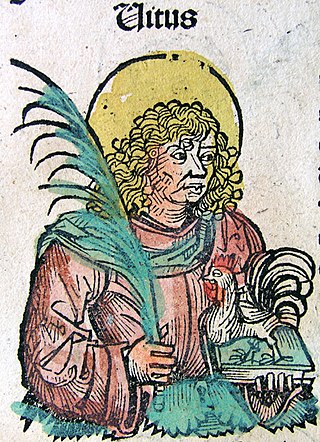 7
Vitus, whose name is sometimes rendered Guy or Guido, was a Christian martyr from Sicily. His surviving hagiography is pure legend. The dates of his actual life are unknown. He has for long been tied...
7
Vitus, whose name is sometimes rendered Guy or Guido, was a Christian martyr from Sicily. His surviving hagiography is pure legend. The dates of his actual life are unknown. He has for long been tied...
Andries Pretorius
 6
Andries Wilhelmus Jacobus Pretorius was a leader of the Boers who was instrumental in the creation of the South African Republic, as well as the earlier but short-lived Natalia Republic, in...
6
Andries Wilhelmus Jacobus Pretorius was a leader of the Boers who was instrumental in the creation of the South African Republic, as well as the earlier but short-lived Natalia Republic, in...
Albert Hahn
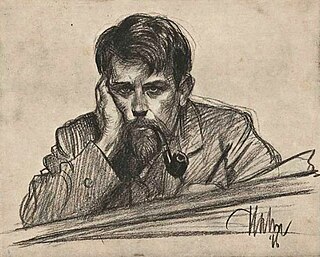 6
Albert Pieter Hahn was a Dutch political cartoonist, caricaturist, poster artist and book cover designer; well known for his socialist and antimilitaristic viewpoints. Some of his drawings,...
6
Albert Pieter Hahn was a Dutch political cartoonist, caricaturist, poster artist and book cover designer; well known for his socialist and antimilitaristic viewpoints. Some of his drawings,...
Maarten van Rossum
 6
Maarten van Rossum was a military tactician of the duchy of Guelders who became field marshal in the service of Charles, Duke of Guelders. He was greatly feared outside his home country for the...
6
Maarten van Rossum was a military tactician of the duchy of Guelders who became field marshal in the service of Charles, Duke of Guelders. He was greatly feared outside his home country for the...
John Lennon
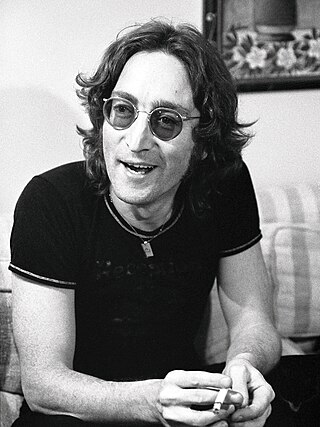 6
John Winston Ono Lennon was an English singer, songwriter and musician. He gained worldwide fame as the founder, co-songwriter, co-lead vocalist and rhythm guitarist of the Beatles. His work included...
6
John Winston Ono Lennon was an English singer, songwriter and musician. He gained worldwide fame as the founder, co-songwriter, co-lead vocalist and rhythm guitarist of the Beatles. His work included...
Augustus
 6
Gaius Julius Caesar Augustus, also known as Octavian, was the founder of the Roman Empire. He reigned as the first Roman emperor from 27 BC until his death in AD 14. The reign of Augustus initiated...
6
Gaius Julius Caesar Augustus, also known as Octavian, was the founder of the Roman Empire. He reigned as the first Roman emperor from 27 BC until his death in AD 14. The reign of Augustus initiated...
Van Boetzelaer
 6
Van Boetzelaer is an old aristocratic family that stems from the region of Kalkar, Germany.
6
Van Boetzelaer is an old aristocratic family that stems from the region of Kalkar, Germany.
Michiel Jansz. van Mierevelt
 6
Michiel Janszoon van Mierevelt was a Dutch painter and draftsman of the Dutch Golden Age.
6
Michiel Janszoon van Mierevelt was a Dutch painter and draftsman of the Dutch Golden Age.
Joannes van der Brugghen
 6
Joannes van der Brugghen, known in France as Jean vander Bruggen, was a Flemish painter, engraver, art dealer and publisher who was active in Antwerp and Paris.
6
Joannes van der Brugghen, known in France as Jean vander Bruggen, was a Flemish painter, engraver, art dealer and publisher who was active in Antwerp and Paris.
Willem Bloys van Treslong
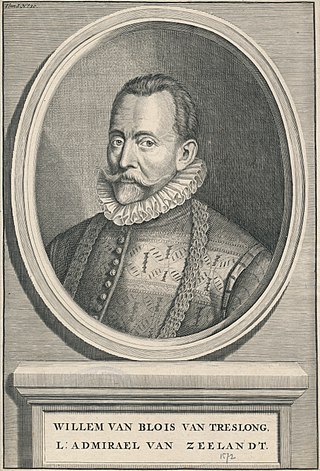 6
Willem Bloys van Treslong was a nobleman from the Southern Netherlands and military leader during the Dutch war of Independence. He was best known as one of the leaders of the Sea Beggars who...
6
Willem Bloys van Treslong was a nobleman from the Southern Netherlands and military leader during the Dutch war of Independence. He was best known as one of the leaders of the Sea Beggars who...
Cornelis de Witt
 6
Cornelis de Witt was a Dutch politician and naval commander of the Golden Age. During the First Stadtholderless Period De Witt was an influential member of the Dutch States Party, and was in...
6
Cornelis de Witt was a Dutch politician and naval commander of the Golden Age. During the First Stadtholderless Period De Witt was an influential member of the Dutch States Party, and was in...
Cornelis Tromp
 6
Cornelis Maartenszoon Tromp, Count of Sølvesborg was a Dutch naval officer who served as lieutenant-admiral general in the Dutch Navy, and briefly as a general admiral in the Royal Danish-Norwegian...
6
Cornelis Maartenszoon Tromp, Count of Sølvesborg was a Dutch naval officer who served as lieutenant-admiral general in the Dutch Navy, and briefly as a general admiral in the Royal Danish-Norwegian...
Hadrian
 6
Hadrian was Roman emperor from 117 to 138. Hadrian was born in Italica, close to modern Seville in Spain, an Italic settlement in Hispania Baetica; his branch of the Aelia gens, the Aeli Hadriani,...
6
Hadrian was Roman emperor from 117 to 138. Hadrian was born in Italica, close to modern Seville in Spain, an Italic settlement in Hispania Baetica; his branch of the Aelia gens, the Aeli Hadriani,...
Mother Teresa
 6
Mary Teresa Bojaxhiu MC, better known as Mother Teresa, was an Albanian-Indian Catholic nun and the founder of the Missionaries of Charity. Born in Skopje, then part of the Ottoman Empire, at the age...
6
Mary Teresa Bojaxhiu MC, better known as Mother Teresa, was an Albanian-Indian Catholic nun and the founder of the Missionaries of Charity. Born in Skopje, then part of the Ottoman Empire, at the age...
J. L. C. Pompe van Meerdervoort
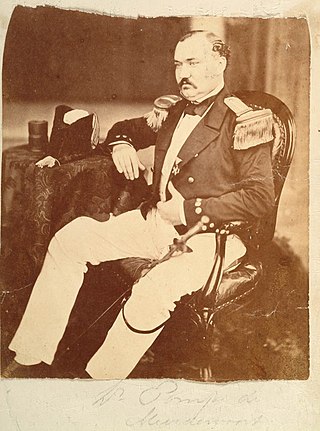 6
Johannes Lijdius Catharinus Pompe van Meerdervoort was a Dutch physician based at Nagasaki, in Bakumatsu period Japan. While in Japan, he briefly taught medicine, chemistry and photography at the...
6
Johannes Lijdius Catharinus Pompe van Meerdervoort was a Dutch physician based at Nagasaki, in Bakumatsu period Japan. While in Japan, he briefly taught medicine, chemistry and photography at the...
Rogier van der Weyden
 6
Rogier van der Weyden or Roger de la Pasture was an early Netherlandish painter whose surviving works consist mainly of religious triptychs, altarpieces, and commissioned single and diptych...
6
Rogier van der Weyden or Roger de la Pasture was an early Netherlandish painter whose surviving works consist mainly of religious triptychs, altarpieces, and commissioned single and diptych...
Jan Arnoldus Schouten
 6
Jan Arnoldus Schouten was a Dutch mathematician and Professor at the Delft University of Technology. He was an important contributor to the development of tensor calculus and Ricci calculus, and was...
6
Jan Arnoldus Schouten was a Dutch mathematician and Professor at the Delft University of Technology. He was an important contributor to the development of tensor calculus and Ricci calculus, and was...
Jan III van Montfoort
 6
Jan III van Montfoort, was Viscount of Montfoort, Free Lord of Zuid-Polsbroek, Free Lord of Purmerend-Purmerland, and a leader of the Hook Party in the Bishopric of Utrecht.
6
Jan III van Montfoort, was Viscount of Montfoort, Free Lord of Zuid-Polsbroek, Free Lord of Purmerend-Purmerland, and a leader of the Hook Party in the Bishopric of Utrecht.
Johann Wolfgang von Goethe
 6
Johann Wolfgang von Goethe was a German polymath and writer, who is widely regarded as the greatest and most influential writer in the German language. His work has had a profound and wide-ranging...
6
Johann Wolfgang von Goethe was a German polymath and writer, who is widely regarded as the greatest and most influential writer in the German language. His work has had a profound and wide-ranging...
Albert van Dalsum
 6
Albertus Wilhelmus van Dalsum was een Nederlands toneelspeler, toneelleider, decorontwerper en kunstschilder.
6
Albertus Wilhelmus van Dalsum was een Nederlands toneelspeler, toneelleider, decorontwerper en kunstschilder.
Iseult
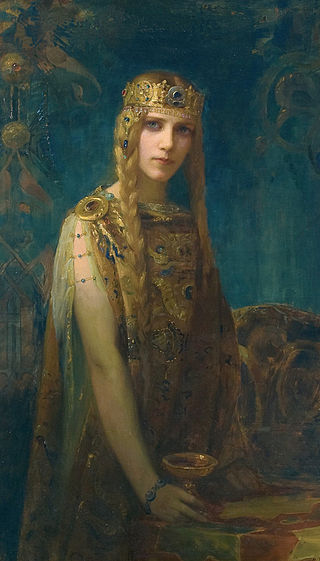 6
Iseult, alternatively Isolde and other spellings, is the name of several characters in the legend of Tristan and Iseult. The most prominent is Iseult of Ireland, the wife of Mark of Cornwall and the...
6
Iseult, alternatively Isolde and other spellings, is the name of several characters in the legend of Tristan and Iseult. The most prominent is Iseult of Ireland, the wife of Mark of Cornwall and the...
Orpheus and Eurydice
 6
The ancient legend of Orpheus and Eurydice concerns the fateful love of Orpheus of Thrace for the beautiful Eurydice. Orpheus was the son of Oeagrus and the muse Calliope. It may be a late addition...
6
The ancient legend of Orpheus and Eurydice concerns the fateful love of Orpheus of Thrace for the beautiful Eurydice. Orpheus was the son of Oeagrus and the muse Calliope. It may be a late addition...
Leendert van der Vlugt
 6
Leendert Cornelis van der Vlugt was a Dutch architect in Rotterdam. In the architects office Brinkman & Van der Vlugt he was responsible for the architecture of the Van Nelle Factory, a listed...
6
Leendert Cornelis van der Vlugt was a Dutch architect in Rotterdam. In the architects office Brinkman & Van der Vlugt he was responsible for the architecture of the Van Nelle Factory, a listed...
Othello
 6
Othello is a tragedy written by William Shakespeare, around 1603. The story revolves around two characters, Othello and Iago.
6
Othello is a tragedy written by William Shakespeare, around 1603. The story revolves around two characters, Othello and Iago.
Franz Lehár
 6
Franz Lehár was an Austro-Hungarian composer. He is mainly known for his operettas, of which the most successful and best known is The Merry Widow.
6
Franz Lehár was an Austro-Hungarian composer. He is mainly known for his operettas, of which the most successful and best known is The Merry Widow.
Mien Ruys
 6
Wilhelmina Jacoba Moussault-Ruys, was a Dutch landscape and garden architect. Her gardening legacy is maintained in the Dutch town of Dedemsvaart, which is home to the Tuinen Mien Ruys. With people...
6
Wilhelmina Jacoba Moussault-Ruys, was a Dutch landscape and garden architect. Her gardening legacy is maintained in the Dutch town of Dedemsvaart, which is home to the Tuinen Mien Ruys. With people...
Ernest Rutherford
 6
Ernest Rutherford, 1st Baron Rutherford of Nelson, was a New Zealand physicist who was a pioneering researcher in both atomic and nuclear physics. Rutherford has been described as "the father of...
6
Ernest Rutherford, 1st Baron Rutherford of Nelson, was a New Zealand physicist who was a pioneering researcher in both atomic and nuclear physics. Rutherford has been described as "the father of...
Henri Winkelman
 6
Henri Gerard Winkelman was a Dutch military officer who served as Commander-in-chief of the Armed forces of the Netherlands during the German invasion of the Netherlands.
6
Henri Gerard Winkelman was a Dutch military officer who served as Commander-in-chief of the Armed forces of the Netherlands during the German invasion of the Netherlands.
Piet Paaltjens
 6
François Haverschmidt, also written as HaverSchmidt, was a Dutch minister and writer, who wrote prose under his own name but remains best known for the poetry published under the pen name of Piet...
6
François Haverschmidt, also written as HaverSchmidt, was a Dutch minister and writer, who wrote prose under his own name but remains best known for the poetry published under the pen name of Piet...
Thérèse Schwartze
 6
Thérèse Schwartze was a Dutch portrait painter.
6
Thérèse Schwartze was a Dutch portrait painter.
Hugo Verriest
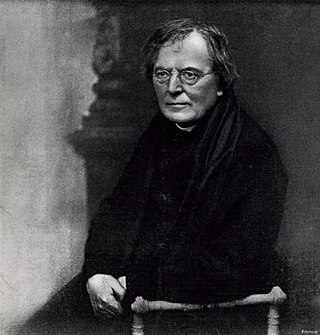 6
Hugo Nestor Verriest was een Vlaams priester, dichter, schrijver en redenaar. Hij was een van de belangrijkste exponenten van het cultuurflamingantisme alsook bevorderaar van de politieke Vlaamse...
6
Hugo Nestor Verriest was een Vlaams priester, dichter, schrijver en redenaar. Hij was een van de belangrijkste exponenten van het cultuurflamingantisme alsook bevorderaar van de politieke Vlaamse...
Cornelia Catharina de Lange
 6
Cornelia Catharina de Lange was a Dutch pediatrician and neuropathologist who along with Winfried Brachmann first described the genetic disorder named after her, the Cornelia de Lange syndrome.
6
Cornelia Catharina de Lange was a Dutch pediatrician and neuropathologist who along with Winfried Brachmann first described the genetic disorder named after her, the Cornelia de Lange syndrome.
Ralph Bunche
 6
Ralph Johnson Bunche was an American political scientist, diplomat, and leading actor in the mid-20th-century decolonization process and US civil rights movement, who received the 1950 Nobel Peace...
6
Ralph Johnson Bunche was an American political scientist, diplomat, and leading actor in the mid-20th-century decolonization process and US civil rights movement, who received the 1950 Nobel Peace...
Selma Lagerlöf
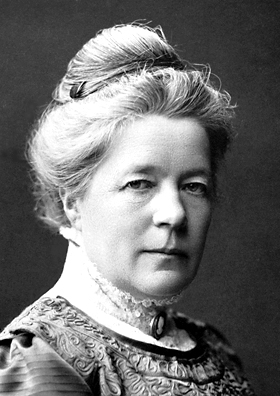 6
Selma Ottilia Lovisa Lagerlöf was a Swedish writer. She published her first novel, Gösta Berling's Saga, at the age of 33. She was the first woman to win the Nobel Prize in Literature, which she was...
6
Selma Ottilia Lovisa Lagerlöf was a Swedish writer. She published her first novel, Gösta Berling's Saga, at the age of 33. She was the first woman to win the Nobel Prize in Literature, which she was...
House of La Marck
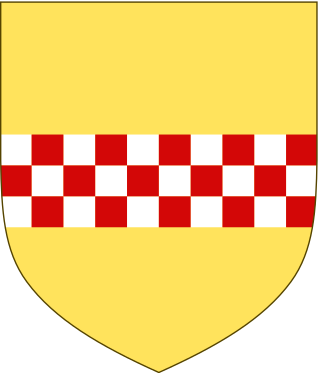 6
The House of La Marck was a noble family, which from about 1200 appeared as the counts of Mark.
6
The House of La Marck was a noble family, which from about 1200 appeared as the counts of Mark.
Adriaan Roland Holst
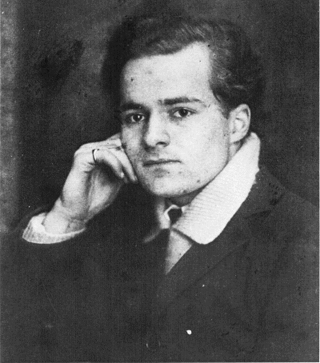 6
Adriaan Roland Holst was a Dutch writer, nicknamed the "Prince of Dutch Poets". He was the second winner, in 1948, of the Constantijn Huygens Prize.
He was nominated for the Nobel Prize in...
6
Adriaan Roland Holst was a Dutch writer, nicknamed the "Prince of Dutch Poets". He was the second winner, in 1948, of the Constantijn Huygens Prize.
He was nominated for the Nobel Prize in...
Alexander Gogel
 6
Isaac Jan Alexander Gogel was a Dutch politician, who was the first minister of finance of the Batavian Republic and the Kingdom of Holland. He married Catharina van Hasselt in 1800, and had three...
6
Isaac Jan Alexander Gogel was a Dutch politician, who was the first minister of finance of the Batavian Republic and the Kingdom of Holland. He married Catharina van Hasselt in 1800, and had three...
Abe Lenstra
 6
Abe Minderts Lenstra was a Dutch footballer and national football icon in the 1950s who played as a forward. He is regarded as one of the greatest players ever to hail from the Netherlands. He was...
6
Abe Minderts Lenstra was a Dutch footballer and national football icon in the 1950s who played as a forward. He is regarded as one of the greatest players ever to hail from the Netherlands. He was...
Melchior (magus)
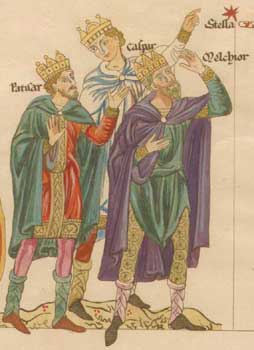 6
Melchior, or Melichior, was purportedly one of the Biblical Magi who visited the infant Jesus after he was born. Melchior was often referred to as the oldest member of the Magi. He was traditionally...
6
Melchior, or Melichior, was purportedly one of the Biblical Magi who visited the infant Jesus after he was born. Melchior was often referred to as the oldest member of the Magi. He was traditionally...
Benny Goodman
 6
Benjamin David Goodman was an American clarinetist and bandleader known as the "King of Swing".
6
Benjamin David Goodman was an American clarinetist and bandleader known as the "King of Swing".
Rosa Luxemburg
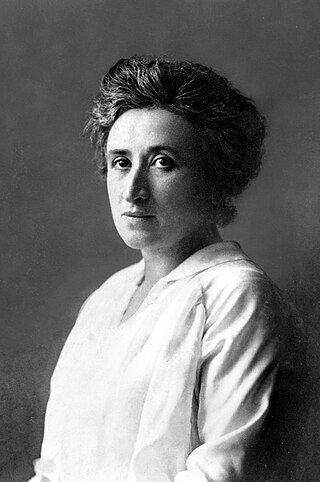 6
Rosa Luxemburg was a Polish and naturalised-German revolutionary socialist, orthodox Marxist, and anti-War activist during the First World War. She became a key figure of the revolutionary socialist...
6
Rosa Luxemburg was a Polish and naturalised-German revolutionary socialist, orthodox Marxist, and anti-War activist during the First World War. She became a key figure of the revolutionary socialist...
Philips Vingboons
 6
Philips Vingboons was a Dutch architect. He was part of the school of Jacob van Campen, that is, Dutch Classicism. Vingboons was especially highly regarded in his native city of Amsterdam.
6
Philips Vingboons was a Dutch architect. He was part of the school of Jacob van Campen, that is, Dutch Classicism. Vingboons was especially highly regarded in his native city of Amsterdam.
Cornelis Outshoorn
 6
Cornelis Outshoorn was een Nederlandse ingenieur en architect.
6
Cornelis Outshoorn was een Nederlandse ingenieur en architect.
Hendrik Andriessen
 6
Hendrik Franciscus Andriessen was a Dutch composer and organist. He is remembered most of all for his improvisation at the organ and for the renewal of Catholic liturgical music in the Netherlands....
6
Hendrik Franciscus Andriessen was a Dutch composer and organist. He is remembered most of all for his improvisation at the organ and for the renewal of Catholic liturgical music in the Netherlands....
Aert de Gelder
 6
Aert de Gelder was a Dutch painter. He was the only Dutch artist to paint in the tradition of Rembrandt's late style into the 18th century.
6
Aert de Gelder was a Dutch painter. He was the only Dutch artist to paint in the tradition of Rembrandt's late style into the 18th century.
Jan de Quay
 6
Jan Eduard de Quay was a Dutch politician of the defunct Catholic People's Party (KVP) now the Christian Democratic Appeal (CDA) party and psychologist who served as Prime Minister of the Netherlands...
6
Jan Eduard de Quay was a Dutch politician of the defunct Catholic People's Party (KVP) now the Christian Democratic Appeal (CDA) party and psychologist who served as Prime Minister of the Netherlands...
Adriaan Poirters
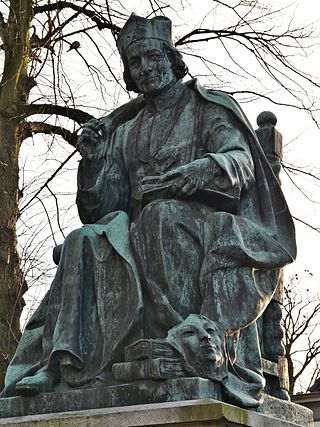 6
Adriaan Poirters was a Brabantian Jesuit poet and prose writer who was active in the Counter Reformation.
6
Adriaan Poirters was a Brabantian Jesuit poet and prose writer who was active in the Counter Reformation.
Nellie van Kol
 6
Nellie van Kol was a Dutch feminist, educator, and children's author also active in Belgium. She contributed to the cause of women and had a great influence on the development of children's...
6
Nellie van Kol was a Dutch feminist, educator, and children's author also active in Belgium. She contributed to the cause of women and had a great influence on the development of children's...
Ed. Hoornik
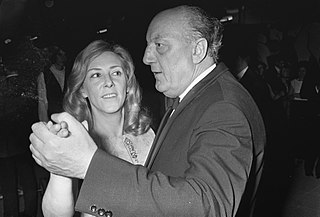 6
Eduard (Ed) Jozef Antonie Marie Hoornik was een Nederlandse dichter, behorend tot de Amsterdamse school. Aanvankelijk was zijn werk sociaal-kritisch. Zijn latere werk is sterk getekend door zijn...
6
Eduard (Ed) Jozef Antonie Marie Hoornik was een Nederlandse dichter, behorend tot de Amsterdamse school. Aanvankelijk was zijn werk sociaal-kritisch. Zijn latere werk is sterk getekend door zijn...
Jan Voerman
 6
Jan Voerman, also known as Jan Voerman Sr., was a Dutch painter.
6
Jan Voerman, also known as Jan Voerman Sr., was a Dutch painter.
Ernest Claes
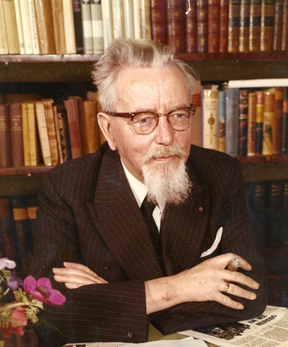 6
Andreas Ernestus Josephus Claes was a Belgian author. He is best known for his regional novels, including De Witte ("Whitey"), which was the source material for the first Flemish movie: De Witte...
6
Andreas Ernestus Josephus Claes was a Belgian author. He is best known for his regional novels, including De Witte ("Whitey"), which was the source material for the first Flemish movie: De Witte...
Paul van Ostaijen
 6
Paul van Ostaijen was a Belgian Dutch-language poet and writer.
6
Paul van Ostaijen was a Belgian Dutch-language poet and writer.
Johan Evertsen
 6
Johan Evertsen was a Dutch admiral who was born in the 17th century.
6
Johan Evertsen was a Dutch admiral who was born in the 17th century.
Arnold, Duke of Guelders
 6
Arnold of Egmond was Duke of Guelders, Count of Zutphen.
6
Arnold of Egmond was Duke of Guelders, Count of Zutphen.
Ludger
 6
Ludger was a missionary among the Frisians and Saxons, founder of Werden Abbey and the first Bishop of Münster in Westphalia. He has been called the "Apostle of Saxony".
6
Ludger was a missionary among the Frisians and Saxons, founder of Werden Abbey and the first Bishop of Münster in Westphalia. He has been called the "Apostle of Saxony".
Toon Hermans
 6
Antoine Gerard Theodore "Toon" Hermans was a noted Dutch comedian, singer and writer.
6
Antoine Gerard Theodore "Toon" Hermans was a noted Dutch comedian, singer and writer.
Steven Jacobsz Vennekool
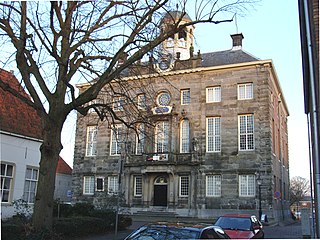 6
Steven Jacobsz Vennekool (1656/57–1719) was an 18th-century architect from the Northern Netherlands. He was born and died in Amsterdam.
6
Steven Jacobsz Vennekool (1656/57–1719) was an 18th-century architect from the Northern Netherlands. He was born and died in Amsterdam.
Hans Vredeman de Vries
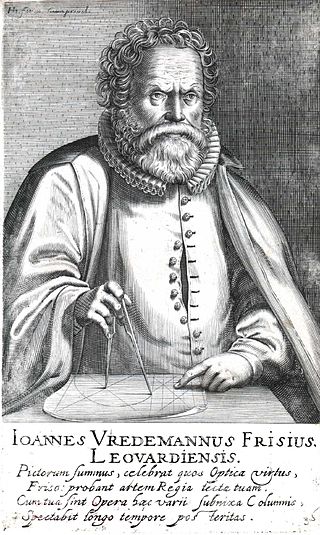 6
Hans Vredeman de Vries was a Dutch Renaissance architect, painter, and engineer. Vredeman de Vries is known for his publication in 1583 on garden design and his books with many examples on ornaments...
6
Hans Vredeman de Vries was a Dutch Renaissance architect, painter, and engineer. Vredeman de Vries is known for his publication in 1583 on garden design and his books with many examples on ornaments...
René Daniëls
 6
René Daniëls is a Dutch artist.
6
René Daniëls is a Dutch artist.
Karl Marx
 6
Karl Marx was a German-born philosopher, economist, political theorist, historian, sociologist, journalist, and revolutionary socialist. His best-known works are the 1848 pamphlet The Communist...
6
Karl Marx was a German-born philosopher, economist, political theorist, historian, sociologist, journalist, and revolutionary socialist. His best-known works are the 1848 pamphlet The Communist...
Pancras of Rome
 6
Pancras was a Roman citizen who converted to Christianity and was beheaded for his faith at the age of fourteen, around the year 304. His name is Greek (Πανκράτιος) and means "the one that holds...
6
Pancras was a Roman citizen who converted to Christianity and was beheaded for his faith at the age of fourteen, around the year 304. His name is Greek (Πανκράτιος) and means "the one that holds...
Buzz Aldrin
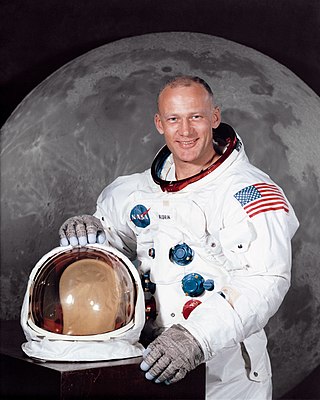 6
Buzz Aldrin is an American former astronaut, engineer and fighter pilot. He made three spacewalks as pilot of the 1966 Gemini 12 mission, and was the Lunar Module Eagle pilot on the 1969 Apollo 11...
6
Buzz Aldrin is an American former astronaut, engineer and fighter pilot. He made three spacewalks as pilot of the 1966 Gemini 12 mission, and was the Lunar Module Eagle pilot on the 1969 Apollo 11...
Yuri Gagarin
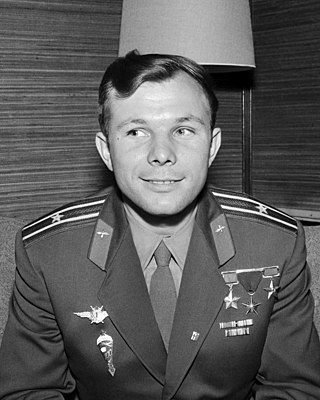 6
Yuri Alekseyevich Gagarin was a Soviet pilot and cosmonaut who, aboard the first successful crewed spaceflight, became the first human to journey into outer space. Travelling on Vostok 1, Gagarin...
6
Yuri Alekseyevich Gagarin was a Soviet pilot and cosmonaut who, aboard the first successful crewed spaceflight, became the first human to journey into outer space. Travelling on Vostok 1, Gagarin...
William Damasus Lindanus
Henri Polak
 5
Henri Polak was a Dutch trade unionist and politician. Polak is best remembered as a longtime president of the General Diamond Workers' Union of the Netherlands (ANDB) and as a founder of the Dutch...
5
Henri Polak was a Dutch trade unionist and politician. Polak is best remembered as a longtime president of the General Diamond Workers' Union of the Netherlands (ANDB) and as a founder of the Dutch...
Jane Addams
 5
Laura Jane Addams was an American settlement activist, reformer, social worker, sociologist, public administrator, philosopher, and author. She was a very important leader in the history of social...
5
Laura Jane Addams was an American settlement activist, reformer, social worker, sociologist, public administrator, philosopher, and author. She was a very important leader in the history of social...
Ank van der Moer
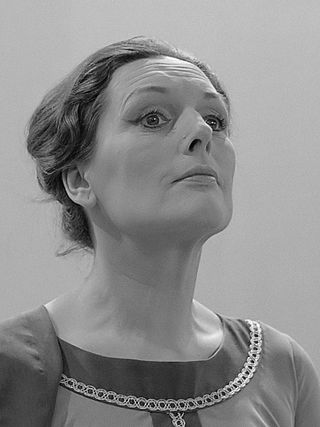 5
Anna Maria (Ank) van der Moer was een Nederlands actrice.
5
Anna Maria (Ank) van der Moer was een Nederlands actrice.
Tristan
 5
Tristan, also known as Tristram, Tristyn or Tristain and similar names, is the hero of the legend of Tristan and Iseult. In the legend, he is tasked with escorting the Irish princess Iseult to wed...
5
Tristan, also known as Tristram, Tristyn or Tristain and similar names, is the hero of the legend of Tristan and Iseult. In the legend, he is tasked with escorting the Irish princess Iseult to wed...
Jan Mankes
 5
Jan Mankes was a Dutch painter. He produced around 200 paintings, 100 drawings and 50 prints before dying of tuberculosis at the age of 30. His restrained, detailed work ranged from self-portraits to...
5
Jan Mankes was a Dutch painter. He produced around 200 paintings, 100 drawings and 50 prints before dying of tuberculosis at the age of 30. His restrained, detailed work ranged from self-portraits to...
Johanna van Buren
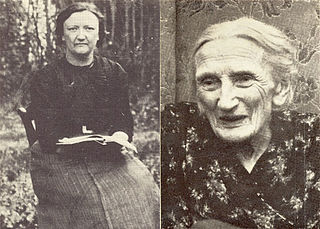 5
Johanna Frederika van Buren was een dichteres die schreef in het Hellendoorns, een overgangsdialect tussen het Sallands en Twents.
5
Johanna Frederika van Buren was een dichteres die schreef in het Hellendoorns, een overgangsdialect tussen het Sallands en Twents.
Jacob Gilles
 5
Jacob Gilles was Grand Pensionary of Holland from 23 September 1746 to 18 June 1749.
5
Jacob Gilles was Grand Pensionary of Holland from 23 September 1746 to 18 June 1749.
Marnix Gijsen
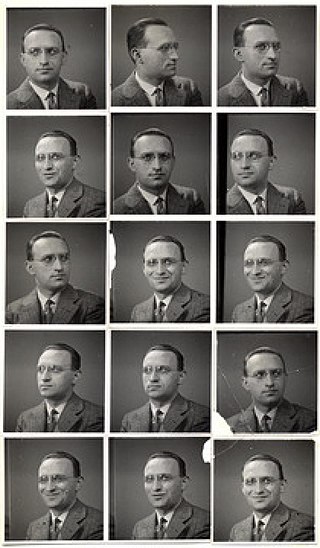 5
Marnix Gijsen was a Belgian writer. His real name was Joannes Alphonsius Albertus Goris; his pseudonym relates to Marnix van Sint Aldegonde and the surname of his mother (Gijsen).
5
Marnix Gijsen was a Belgian writer. His real name was Joannes Alphonsius Albertus Goris; his pseudonym relates to Marnix van Sint Aldegonde and the surname of his mother (Gijsen).
David Ben-Gurion
 5
David Ben-Gurion was the primary national founder of the State of Israel as well as its first prime minister. As head of the Jewish Agency from 1935, and later president of the Jewish Agency...
5
David Ben-Gurion was the primary national founder of the State of Israel as well as its first prime minister. As head of the Jewish Agency from 1935, and later president of the Jewish Agency...
Cole Porter
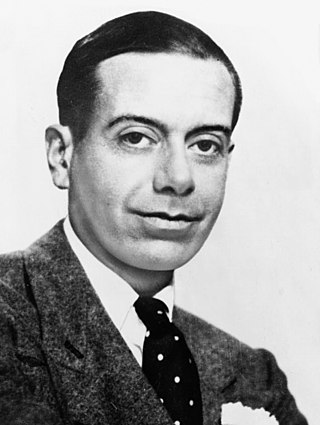 5
Cole Albert Porter was an American composer and songwriter. Many of his songs became standards noted for their witty, urbane lyrics, and many of his scores found success on Broadway and in Hollywood...
5
Cole Albert Porter was an American composer and songwriter. Many of his songs became standards noted for their witty, urbane lyrics, and many of his scores found success on Broadway and in Hollywood...
Thomas More
 5
Sir Thomas More, venerated in the Catholic Church as Saint Thomas More, was an English lawyer, judge, social philosopher, author, statesman, amateur theologian, and noted Renaissance humanist. He...
5
Sir Thomas More, venerated in the Catholic Church as Saint Thomas More, was an English lawyer, judge, social philosopher, author, statesman, amateur theologian, and noted Renaissance humanist. He...
Epicurus
 5
Epicurus was an ancient Greek philosopher and sage who founded Epicureanism, a highly influential school of philosophy. He was born on the Greek island of Samos to Athenian parents. Influenced by...
5
Epicurus was an ancient Greek philosopher and sage who founded Epicureanism, a highly influential school of philosophy. He was born on the Greek island of Samos to Athenian parents. Influenced by...
William II of Holland
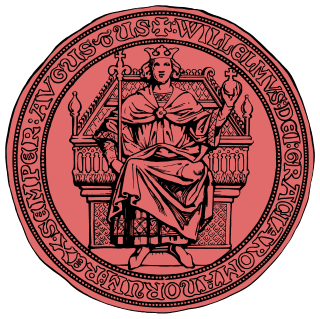 5
William II was the Count of Holland and Zeeland from 1234 until his death. He was elected anti-king of Germany in 1248 and ruled as sole king from 1254 onwards.
5
William II was the Count of Holland and Zeeland from 1234 until his death. He was elected anti-king of Germany in 1248 and ruled as sole king from 1254 onwards.
Pope Leo XIII
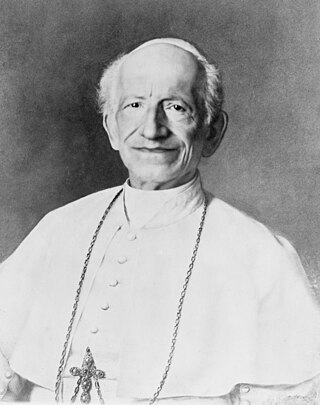 5
Pope Leo XIII was head of the Catholic Church from 20 February 1878 until his death in July 1903. Living until the age of 93, he was the oldest pope, whose age can be validated, holding office, and...
5
Pope Leo XIII was head of the Catholic Church from 20 February 1878 until his death in July 1903. Living until the age of 93, he was the oldest pope, whose age can be validated, holding office, and...
Quarles van Ufford
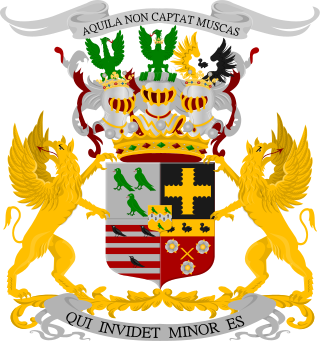 5
Quarles van Ufford is the name of a Dutch family of English descent whose members have belonged to Dutch nobility since 1815.
5
Quarles van Ufford is the name of a Dutch family of English descent whose members have belonged to Dutch nobility since 1815.
Paul Rodenko
 5
Paul Thomas Basilius Rodenko was een Nederlands dichter, criticus, essayist en vertaler. Hij was de zoon van een Russische vader en een Engelse moeder, en een broer van schrijfster Olga Rodenko....
5
Paul Thomas Basilius Rodenko was een Nederlands dichter, criticus, essayist en vertaler. Hij was de zoon van een Russische vader en een Engelse moeder, en een broer van schrijfster Olga Rodenko....
Marie Jungius
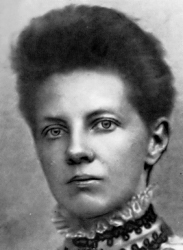 5
Hendrika Maria Aleida (Marie) Jungius was medeorganisator van de Nationale Tentoonstelling van Vrouwenarbeid en grondlegster en eerste directrice van het Nationaal Bureau voor Vrouwenarbeid. Zij was...
5
Hendrika Maria Aleida (Marie) Jungius was medeorganisator van de Nationale Tentoonstelling van Vrouwenarbeid en grondlegster en eerste directrice van het Nationaal Bureau voor Vrouwenarbeid. Zij was...
Boy Edgar
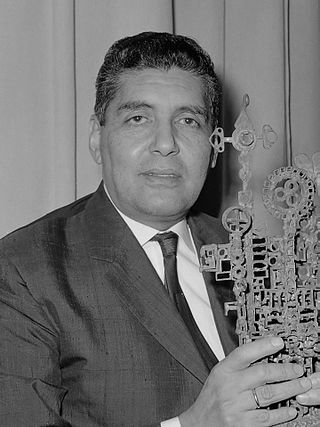 5
Boy Edgar, pseudonyms of George Willem Fred Edgar, was a Dutch jazz conductor, pianist and trumpeter. He was also a member of the resistance who saved Jewish children during WW2 and was promoted as a...
5
Boy Edgar, pseudonyms of George Willem Fred Edgar, was a Dutch jazz conductor, pianist and trumpeter. He was also a member of the resistance who saved Jewish children during WW2 and was promoted as a...
Wessel Ilcken
 5
Wessel Ilcken was a Dutch jazz drummer.
5
Wessel Ilcken was a Dutch jazz drummer.
Jaap Bakema
 5
Jacob Berend "Jaap" Bakema was a Dutch modernist architect, notable for design of public housing and involvement in the reconstruction of Rotterdam after the Second World War.
5
Jacob Berend "Jaap" Bakema was a Dutch modernist architect, notable for design of public housing and involvement in the reconstruction of Rotterdam after the Second World War.
Truus Schröder-Schräder
 5
Truus Schröder-Schräder (1889–1985) was a Dutch socialite and trained pharmacist who was closely involved with avant-garde artists and architects of the De Stijl movement. Together with Gerrit...
5
Truus Schröder-Schräder (1889–1985) was a Dutch socialite and trained pharmacist who was closely involved with avant-garde artists and architects of the De Stijl movement. Together with Gerrit...
Willem Kes
 5
Willem Kes (Dordrecht, 16 February 1856 – München, 22 February 1934, was a Dutch conductor, composer, violist, and violinist. He was the first principal conductor of the Concertgebouw Orchestra of...
5
Willem Kes (Dordrecht, 16 February 1856 – München, 22 February 1934, was a Dutch conductor, composer, violist, and violinist. He was the first principal conductor of the Concertgebouw Orchestra of...
Jean-Jacques Rousseau
 5
Jean-Jacques Rousseau was a Genevan philosopher (philosophe), writer, and composer. His political philosophy influenced the progress of the Age of Enlightenment throughout Europe, as well as aspects...
5
Jean-Jacques Rousseau was a Genevan philosopher (philosophe), writer, and composer. His political philosophy influenced the progress of the Age of Enlightenment throughout Europe, as well as aspects...
Philip de Montmorency, Count of Horn
 5
Philip de Montmorency, also known as Count of Horn, Horne, Hoorne or Hoorn, was a victim of the Inquisition in the Spanish Netherlands.
5
Philip de Montmorency, also known as Count of Horn, Horne, Hoorne or Hoorn, was a victim of the Inquisition in the Spanish Netherlands.
Wilhelmine of Prussia, Queen of the Netherlands
 5
Wilhelmine of Prussia was the first Queen consort of the Netherlands as the first wife of King William I of the Netherlands. She had a modest public role but acted as a patron of the arts.
5
Wilhelmine of Prussia was the first Queen consort of the Netherlands as the first wife of King William I of the Netherlands. She had a modest public role but acted as a patron of the arts.
Jan Ritzema Bos
 5
Jan Ritzema Bos was a Dutch plant pathologist and zoologist. He served as the first director of the Willie Commelin Scholten Foundation and founder of the Plant Protection Service in 1899 in...
5
Jan Ritzema Bos was a Dutch plant pathologist and zoologist. He served as the first director of the Willie Commelin Scholten Foundation and founder of the Plant Protection Service in 1899 in...
Elise van Calcar
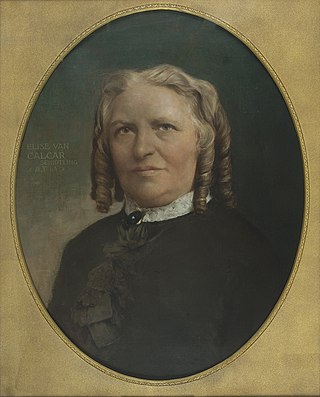 5
Elise van Calcar-Schiotling, geboren als Eliza Carolina Ferdinanda Fleischacker, was een Nederlandse schrijfster, publiciste, pedagoge en feministe. Ze kreeg bij haar geboorte de familienaam van haar...
5
Elise van Calcar-Schiotling, geboren als Eliza Carolina Ferdinanda Fleischacker, was een Nederlandse schrijfster, publiciste, pedagoge en feministe. Ze kreeg bij haar geboorte de familienaam van haar...
Theo Mann-Bouwmeester
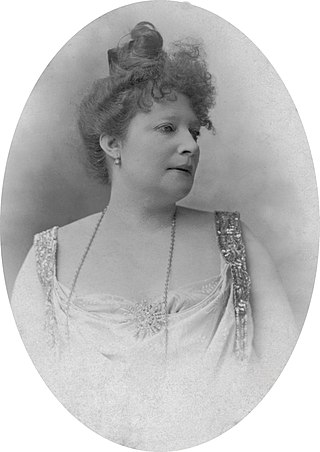 5
Theodora Antonia Louisa Cornelia Bouwmeester was een Nederlandse actrice in de periode 1880-1926. Zij was driemaal getrouwd en trad daardoor onder verschillende namen op. Dat was chronologisch als...
5
Theodora Antonia Louisa Cornelia Bouwmeester was een Nederlandse actrice in de periode 1880-1926. Zij was driemaal getrouwd en trad daardoor onder verschillende namen op. Dat was chronologisch als...
Christiaan Snouck Hurgronje
 5
Christiaan Snouck Hurgronje was a Dutch scholar of Oriental cultures and languages and advisor on native affairs to the colonial government of the Dutch East Indies.
5
Christiaan Snouck Hurgronje was a Dutch scholar of Oriental cultures and languages and advisor on native affairs to the colonial government of the Dutch East Indies.
Johannes Hendricus van der Palm
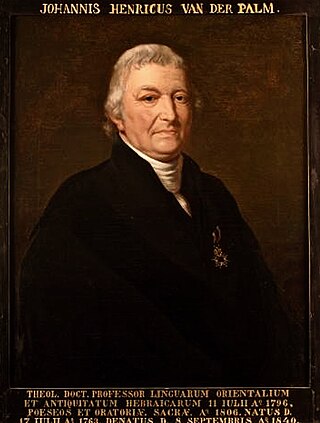 5
Johannes Hendricus van der Palm was a Dutch Assyriologist, linguist, professor of (i) oriental languages and Hebrew antiquities and (ii) sacred poetry and rhetoric at Leiden University, educationist,...
5
Johannes Hendricus van der Palm was a Dutch Assyriologist, linguist, professor of (i) oriental languages and Hebrew antiquities and (ii) sacred poetry and rhetoric at Leiden University, educationist,...
Bernardus Johannes Alfrink
 5
Bernardus Johannes Alfrink was a Dutch Cardinal of the Roman Catholic Church. He served as Archbishop of Utrecht from 1955 to 1975, and was elevated to the cardinalate in 1960.
5
Bernardus Johannes Alfrink was a Dutch Cardinal of the Roman Catholic Church. He served as Archbishop of Utrecht from 1955 to 1975, and was elevated to the cardinalate in 1960.
Johan Brouwer
 5
Johan Brouwer was een Nederlandse hispanoloog en auteur, actief als verzetsstrijder tijdens de Tweede Wereldoorlog.
5
Johan Brouwer was een Nederlandse hispanoloog en auteur, actief als verzetsstrijder tijdens de Tweede Wereldoorlog.
Victor de Stuers
 5
Victor Eugène Louis de Stuers was a Dutch art historian, lawyer, civil servant and politician. Widely regarded as the father of historic preservation in the Netherlands, he played a notable part in...
5
Victor Eugène Louis de Stuers was a Dutch art historian, lawyer, civil servant and politician. Widely regarded as the father of historic preservation in the Netherlands, he played a notable part in...
Pierre Corneille
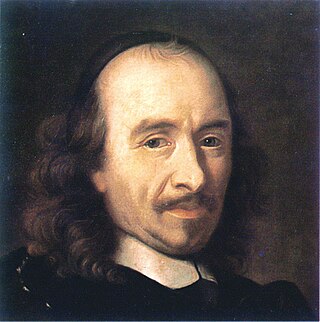 5
Pierre Corneille was a French tragedian. He is generally considered one of the three great seventeenth-century French dramatists, along with Molière and Racine.
5
Pierre Corneille was a French tragedian. He is generally considered one of the three great seventeenth-century French dramatists, along with Molière and Racine.
Jean de La Fontaine
 5
Jean de La Fontaine was a French fabulist and one of the most widely read French poets of the 17th century. He is known above all for his Fables, which provided a model for subsequent fabulists...
5
Jean de La Fontaine was a French fabulist and one of the most widely read French poets of the 17th century. He is known above all for his Fables, which provided a model for subsequent fabulists...
Kea Bouman
 5
Cornelia "Kea" Tiedemann-Bouman was a female tennis player from the Netherlands. She won the singles title at the 1927 French Championships, beating Irene Bowder Peacock of South Africa in the final....
5
Cornelia "Kea" Tiedemann-Bouman was a female tennis player from the Netherlands. She won the singles title at the 1927 French Championships, beating Irene Bowder Peacock of South Africa in the final....
Etta Palm d'Aelders
 5
Etta Lubina Johanna Palm d'Aelders, also known as the Baroness of Aelders, was a Dutch spy and feminist, outspoken during the French Revolution. She gave the address Discourse on the Injustice of the...
5
Etta Lubina Johanna Palm d'Aelders, also known as the Baroness of Aelders, was a Dutch spy and feminist, outspoken during the French Revolution. She gave the address Discourse on the Injustice of the...
Jules Verne
 5
Jules Gabriel Verne was a French novelist, poet, and playwright. His collaboration with the publisher Pierre-Jules Hetzel led to the creation of the Voyages extraordinaires, a series of bestselling...
5
Jules Gabriel Verne was a French novelist, poet, and playwright. His collaboration with the publisher Pierre-Jules Hetzel led to the creation of the Voyages extraordinaires, a series of bestselling...
Elvis Presley
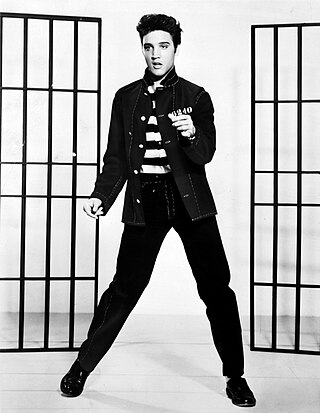 5
Elvis Aaron Presley, also known mononymously as Elvis, was an American singer and actor. Known as the "King of Rock and Roll", he is regarded as one of the most significant cultural figures of the...
5
Elvis Aaron Presley, also known mononymously as Elvis, was an American singer and actor. Known as the "King of Rock and Roll", he is regarded as one of the most significant cultural figures of the...
Renate Rubinstein
 5
Renate Ida Rubinstein was a German-Dutch writer, journalist and columnist.
5
Renate Ida Rubinstein was a German-Dutch writer, journalist and columnist.
Hans Lodeizen
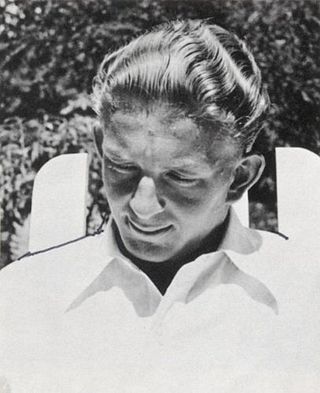 5
Hans Lodeizen, born Johannes August Frederik Lodeizen, was a Dutch poet. He was the author of one book of poems and a quantity of miscellaneous work. Despite his short life and modest output, his...
5
Hans Lodeizen, born Johannes August Frederik Lodeizen, was a Dutch poet. He was the author of one book of poems and a quantity of miscellaneous work. Despite his short life and modest output, his...
Jacques Urlus
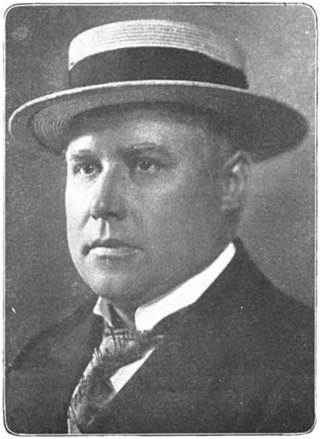 5
Jacques Urlus, was a Dutch dramatic tenor. He sang to great critical acclaim at major opera houses on both sides of the Atlantic, and his recordings of the music of Richard Wagner are considered to...
5
Jacques Urlus, was a Dutch dramatic tenor. He sang to great critical acclaim at major opera houses on both sides of the Atlantic, and his recordings of the music of Richard Wagner are considered to...
Anton Geesink
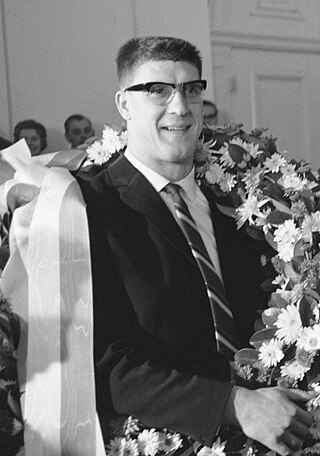 5
Antonius Johannes Geesink was a Dutch 10th dan judoka. He was the first non-Japanese judoka to win gold at the World Judo Championships, a feat he accomplished in 1961 and 1965. He was also an...
5
Antonius Johannes Geesink was a Dutch 10th dan judoka. He was the first non-Japanese judoka to win gold at the World Judo Championships, a feat he accomplished in 1961 and 1965. He was also an...
Pieter Vreede
 5
Pieter Vreede was a Dutch politician of the Batavian Republic in the 18th century. Vreede was born in Leiden and died in Heusden. He was a prominent critic of stadholderian misrule and of the urban...
5
Pieter Vreede was a Dutch politician of the Batavian Republic in the 18th century. Vreede was born in Leiden and died in Heusden. He was a prominent critic of stadholderian misrule and of the urban...
Father Damien
 5
Father Damien or Saint Damien of Molokai or Saint Damien De Veuster, born Jozef De Veuster, was a Roman Catholic priest from Belgium and member of the Congregation of the Sacred Hearts of Jesus and...
5
Father Damien or Saint Damien of Molokai or Saint Damien De Veuster, born Jozef De Veuster, was a Roman Catholic priest from Belgium and member of the Congregation of the Sacred Hearts of Jesus and...
Irene Vorrink
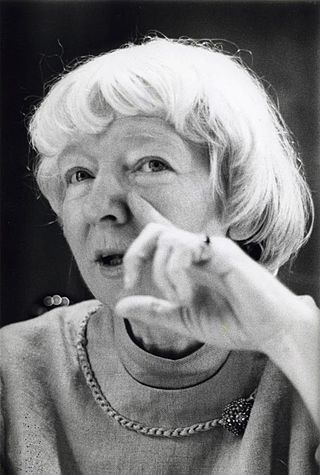 5
Irene Vorrink was a Dutch politician of the Labour Party (PvdA).
5
Irene Vorrink was a Dutch politician of the Labour Party (PvdA).
Rie Cramer
 5
Marie "Rie" Cramer was a Dutch writer and prolific illustrator of children's literature whose style is considered iconic for the interwar period. For many years, she was one of the two main...
5
Marie "Rie" Cramer was a Dutch writer and prolific illustrator of children's literature whose style is considered iconic for the interwar period. For many years, she was one of the two main...
Marten Toonder
 5
Marten Toonder was a Dutch comic strip creator, born in Rotterdam. He was probably the most successful comic artist in the Netherlands and had a great influence on the Dutch language by introducing...
5
Marten Toonder was a Dutch comic strip creator, born in Rotterdam. He was probably the most successful comic artist in the Netherlands and had a great influence on the Dutch language by introducing...
Stanisław Maczek
 5
Lieutenant General Stanisław Maczek was a Polish tank commander of World War II, whose division was instrumental in the Allied liberation of France, closing the Falaise pocket, resulting in the...
5
Lieutenant General Stanisław Maczek was a Polish tank commander of World War II, whose division was instrumental in the Allied liberation of France, closing the Falaise pocket, resulting in the...
Louis of Nassau
 5
Louis of Nassau was the third son of William I, Count of Nassau-Siegen and Juliana of Stolberg, and the younger brother of Prince William of Orange Nassau.
5
Louis of Nassau was the third son of William I, Count of Nassau-Siegen and Juliana of Stolberg, and the younger brother of Prince William of Orange Nassau.
Jan de Rooij
 5
Jan de Rooij of Jan de Rooy kan verwijzen naar:Jan de Rooy (verzetsstrijder) (1923-1945), Nederlands verzetsstrijder tijdens de Tweede Wereldoorlog
Jan de Rooij (bokser) (1932-2008), Nederlands...
5
Jan de Rooij of Jan de Rooy kan verwijzen naar:Jan de Rooy (verzetsstrijder) (1923-1945), Nederlands verzetsstrijder tijdens de Tweede Wereldoorlog
Jan de Rooij (bokser) (1932-2008), Nederlands...
Willem Passtoors (1856-1916)
 5
Willem Caspar Joseph Passtoors was een Nederlands vakbondsbestuurder en politicus van de Algemeene Bond van RK-kiesverenigingen.
5
Willem Caspar Joseph Passtoors was een Nederlands vakbondsbestuurder en politicus van de Algemeene Bond van RK-kiesverenigingen.
Anke Servaes
 5
Anke Servaes was een Nederlandse schrijfster.
5
Anke Servaes was een Nederlandse schrijfster.
Jo Vincent
 5
Johanna Maria Vincent was a Dutch soprano who appeared mostly in oratorio and concert, and is internationally known. She appeared regularly with Willem Mengelberg and the Royal Concertgebouw...
5
Johanna Maria Vincent was a Dutch soprano who appeared mostly in oratorio and concert, and is internationally known. She appeared regularly with Willem Mengelberg and the Royal Concertgebouw...
Clare Lennart
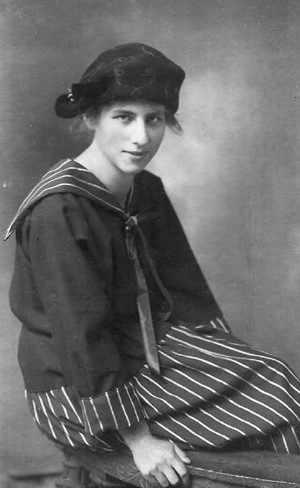 5
Clare Lennart, pseudoniem van Clara Helena Klaver, was een Nederlands romanschrijfster en vertaler.
5
Clare Lennart, pseudoniem van Clara Helena Klaver, was een Nederlands romanschrijfster en vertaler.
Willem Andriessen
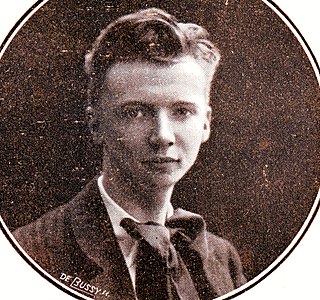 5
Willem Andriessen was a Dutch pianist and composer. His compositional output was small due to the demands of performance and teaching, but he was nonetheless awarded a number of compositional prizes...
5
Willem Andriessen was a Dutch pianist and composer. His compositional output was small due to the demands of performance and teaching, but he was nonetheless awarded a number of compositional prizes...
Haakon VII
 5
Haakon VII was King of Norway from November 1905 until his death in September 1957.
5
Haakon VII was King of Norway from November 1905 until his death in September 1957.
John Coltrane
 5
John William Coltrane was an African-American jazz saxophonist, bandleader and composer. He is among the most influential and acclaimed figures in the history of jazz and 20th-century music.
5
John William Coltrane was an African-American jazz saxophonist, bandleader and composer. He is among the most influential and acclaimed figures in the history of jazz and 20th-century music.
Menso Alting
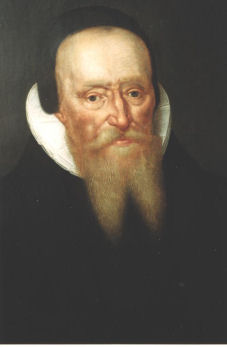 5
Menso Alting was a Dutch Reformed preacher and reformer.
5
Menso Alting was a Dutch Reformed preacher and reformer.
Lidwina
 5
Lidwina (1380–1433) was a Dutch mystic who is honored as a saint by the Catholic Church. She is the patroness saint of the town of Schiedam, of chronic pain, and of ice skating.
5
Lidwina (1380–1433) was a Dutch mystic who is honored as a saint by the Catholic Church. She is the patroness saint of the town of Schiedam, of chronic pain, and of ice skating.
Michelangelo
 5
Michelangelo di Lodovico Buonarroti Simoni, known mononymously as Michelangelo, was an Italian sculptor, painter, architect, and poet of the High Renaissance. Born in the Republic of Florence, his...
5
Michelangelo di Lodovico Buonarroti Simoni, known mononymously as Michelangelo, was an Italian sculptor, painter, architect, and poet of the High Renaissance. Born in the Republic of Florence, his...
Bertha van Heukelom
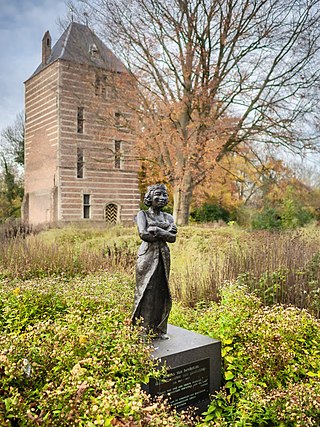 5
Bertha van Heukelom, was a Dutch noble, the legendary heroine of the Siege of IJsselstein Castle in 1296. She was the daughter of Otto I van Arkel lord of Heukelom and married around 1280 to...
5
Bertha van Heukelom, was a Dutch noble, the legendary heroine of the Siege of IJsselstein Castle in 1296. She was the daughter of Otto I van Arkel lord of Heukelom and married around 1280 to...
John I, Duke of Brabant
 5
John I, also called John the Victorious was Duke of Brabant (1267–1294), Lothier and Limburg (1288–1294). During the 13th century, John I was venerated as a folk hero. He has been painted as the...
5
John I, also called John the Victorious was Duke of Brabant (1267–1294), Lothier and Limburg (1288–1294). During the 13th century, John I was venerated as a folk hero. He has been painted as the...
Merijntje Gijzen
 5
Merijntje Gijzen is de hoofdfiguur uit een serie streekromans van de Brabantse schrijver A.M. de Jong. De Jong verwerkte veel eigen jeugdherinneringen in het verhaal rond Merijntje Gijzen. In totaal...
5
Merijntje Gijzen is de hoofdfiguur uit een serie streekromans van de Brabantse schrijver A.M. de Jong. De Jong verwerkte veel eigen jeugdherinneringen in het verhaal rond Merijntje Gijzen. In totaal...
Pope Pius X
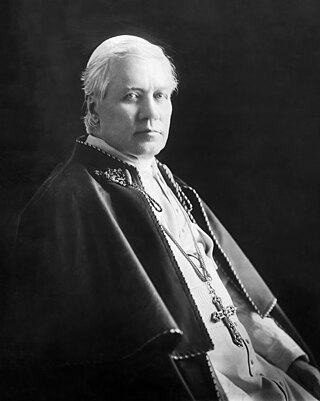 5
Pope Pius X was head of the Catholic Church from 4 August 1903 to his death in August 1914. Pius X is known for vigorously opposing modernist interpretations of Catholic doctrine, and for promoting...
5
Pope Pius X was head of the Catholic Church from 4 August 1903 to his death in August 1914. Pius X is known for vigorously opposing modernist interpretations of Catholic doctrine, and for promoting...
Felix Rutten
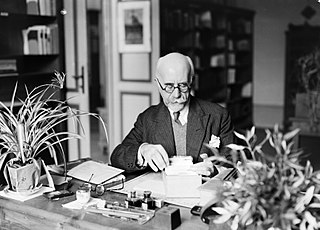 5
Felix Jean Joseph Hubert (Felix) Rutten was een Limburgse schrijver en dichter. Hij publiceerde zowel in het Nederlands als in het Sittards dialect. Hij stierf op dezelfde dag als zijn grote vriend,...
5
Felix Jean Joseph Hubert (Felix) Rutten was een Limburgse schrijver en dichter. Hij publiceerde zowel in het Nederlands als in het Sittards dialect. Hij stierf op dezelfde dag als zijn grote vriend,...
Rogier van Otterloo
 5
Willem Rogier van Otterloo was a Dutch composer and conductor.
5
Willem Rogier van Otterloo was a Dutch composer and conductor.
Hella Haasse
 5
Hélène "Hella" Serafia Haasse was a Dutch writer, often referred to as the "Grande Dame" of Dutch literature, and whose novel Oeroeg (1948) was a staple for generations of Dutch schoolchildren. Her...
5
Hélène "Hella" Serafia Haasse was a Dutch writer, often referred to as the "Grande Dame" of Dutch literature, and whose novel Oeroeg (1948) was a staple for generations of Dutch schoolchildren. Her...
Menno Simons
 5
Menno Simons was a Roman Catholic priest from the Friesland region of the Low Countries who was excommunicated from the Catholic Church and became an influential Anabaptist religious leader. Simons...
5
Menno Simons was a Roman Catholic priest from the Friesland region of the Low Countries who was excommunicated from the Catholic Church and became an influential Anabaptist religious leader. Simons...
Jo Smeets
 4
Jozef Gerard (Jo) Smeets was een Nederlands burgemeester en politicus van de KVP en later het CDA.
4
Jozef Gerard (Jo) Smeets was een Nederlands burgemeester en politicus van de KVP en later het CDA.
Trix Terwindt
 4
Beatrice Wilhelmina Marie Albertina (Trix) Terwindt was een Nederlands verzetsstrijdster en geheim agente voor de Britse inlichtingendienst tijdens de Tweede Wereldoorlog. Zij was een van de agenten...
4
Beatrice Wilhelmina Marie Albertina (Trix) Terwindt was een Nederlands verzetsstrijdster en geheim agente voor de Britse inlichtingendienst tijdens de Tweede Wereldoorlog. Zij was een van de agenten...
Alidius Tjarda van Starkenborgh Stachouwer
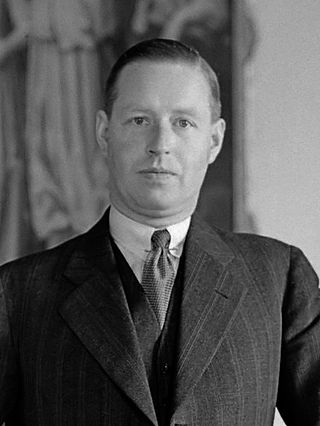 4
Jonkheer Alidius Warmoldus Lambertus Tjarda van Starkenborgh Stachouwer was a Dutch nobleman and statesman, primarily noted for being the last colonial Governor-General of the Dutch East Indies, now...
4
Jonkheer Alidius Warmoldus Lambertus Tjarda van Starkenborgh Stachouwer was a Dutch nobleman and statesman, primarily noted for being the last colonial Governor-General of the Dutch East Indies, now...
Ubbo Emmius
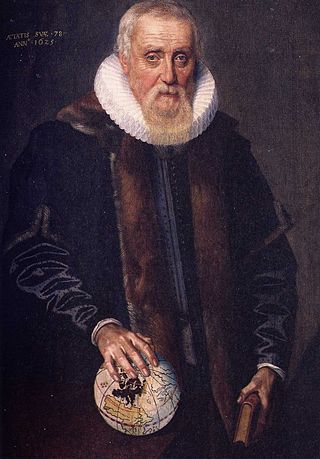 4
Ubbo Emmius was a German historian and geographer.
4
Ubbo Emmius was a German historian and geographer.
Regnier de Graaf
 4
Regnier de Graaf, original Dutch spelling Reinier de Graaf, or Latinized Reijnerus de Graeff, was a Dutch physician, physiologist and anatomist who made key discoveries in reproductive biology. He...
4
Regnier de Graaf, original Dutch spelling Reinier de Graaf, or Latinized Reijnerus de Graeff, was a Dutch physician, physiologist and anatomist who made key discoveries in reproductive biology. He...
Gerard I, Count of Guelders
 4
Gerard I, Count of Guelders was Count of Guelders. He was the son of Theodoric of Wassenberg.
4
Gerard I, Count of Guelders was Count of Guelders. He was the son of Theodoric of Wassenberg.
Willem van Otterloo
 4
Jan Willem van Otterloo was a Dutch conductor, cellist and composer.
4
Jan Willem van Otterloo was a Dutch conductor, cellist and composer.
Gerard Brandt
 4
Gerard Brandt was a Dutch preacher, playwright, poet, church historian, biographer and naval historian. A well-known writer in his own time, his works include a Life of Michiel de Ruyter and a...
4
Gerard Brandt was a Dutch preacher, playwright, poet, church historian, biographer and naval historian. A well-known writer in his own time, his works include a Life of Michiel de Ruyter and a...
Wessel Gansfort
 4
Wessel Harmensz Gansfort was a theologian and early humanist of the northern Low Countries. Many variations of his last name are seen and he is sometimes incorrectly called Johan Wessel.
4
Wessel Harmensz Gansfort was a theologian and early humanist of the northern Low Countries. Many variations of his last name are seen and he is sometimes incorrectly called Johan Wessel.
Cornelis Jol
 4
Cornelis Corneliszoon Jol, nicknamed Houtebeen ("pegleg"), was a 17th-century Dutch corsair and admiral in the Dutch West India Company during the Eighty Years' War between Spain and the Dutch...
4
Cornelis Corneliszoon Jol, nicknamed Houtebeen ("pegleg"), was a 17th-century Dutch corsair and admiral in the Dutch West India Company during the Eighty Years' War between Spain and the Dutch...
Jan Stuyt
 4
Jan Stuyt was a Dutch architect.
4
Jan Stuyt was a Dutch architect.
Maria van Oosterwijck
 4
Maria van Oosterwijck, also spelled Oosterwyck, (1630–1693) was a Dutch Golden Age painter, specializing in richly detailed flower paintings and other still lifes.
4
Maria van Oosterwijck, also spelled Oosterwyck, (1630–1693) was a Dutch Golden Age painter, specializing in richly detailed flower paintings and other still lifes.
Van Kinschot
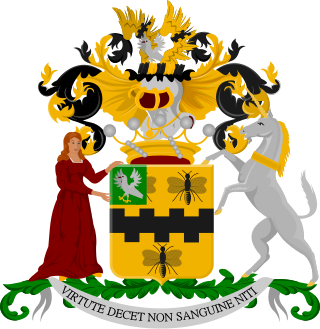 4
Van Kinschot is een uit Turnhout afkomstig geslacht waarvan leden sinds 1848 tot de Nederlandse adel behoren.
4
Van Kinschot is een uit Turnhout afkomstig geslacht waarvan leden sinds 1848 tot de Nederlandse adel behoren.
Gerda Brautigam
 4
Gerarda (Gerda) Brautigam was een Nederlands journaliste en politica. Van 1963 tot 1971 was ze namens de Partij van de Arbeid lid van de Tweede Kamer. Tevens was ze werkzaam als redacteur bij het...
4
Gerarda (Gerda) Brautigam was een Nederlands journaliste en politica. Van 1963 tot 1971 was ze namens de Partij van de Arbeid lid van de Tweede Kamer. Tevens was ze werkzaam als redacteur bij het...
Boris Pasternak
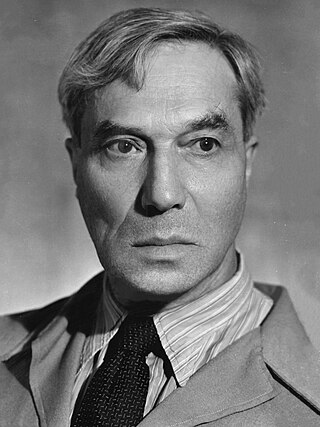 4
Boris Leonidovich Pasternak was a Russian poet, novelist, composer, and literary translator.
4
Boris Leonidovich Pasternak was a Russian poet, novelist, composer, and literary translator.
Willem van Duvenvoorde
 4
Willem van Duvenvoorde or van Duvoorde (1290–1353), also known as Willem Snikkerieme, was a 14th-century nobleman and financier who served as a financial and political adviser to four successive...
4
Willem van Duvenvoorde or van Duvoorde (1290–1353), also known as Willem Snikkerieme, was a 14th-century nobleman and financier who served as a financial and political adviser to four successive...
Chris Lebeau
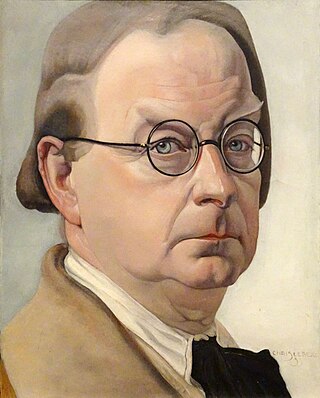 4
Joris Johannes Christiaan (Chris) Lebeau was een Nederlands veelzijdig ontwerper, kunstschilder, verzetsstrijder en anarchist.
4
Joris Johannes Christiaan (Chris) Lebeau was een Nederlands veelzijdig ontwerper, kunstschilder, verzetsstrijder en anarchist.
Harm Tiesing
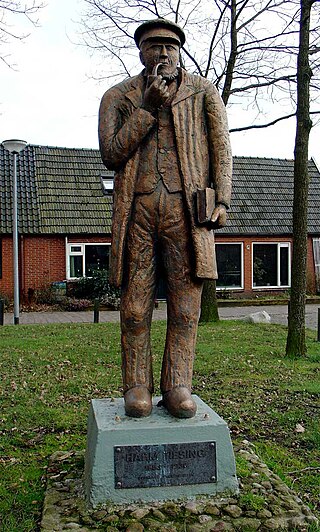 4
Harm Tiesing was een Drents volksschrijver. In Borger staat sinds 1976 een standbeeld van Harm Tiesing van de hand van Geert Santing.
4
Harm Tiesing was een Drents volksschrijver. In Borger staat sinds 1976 een standbeeld van Harm Tiesing van de hand van Geert Santing.
Maartje Offers
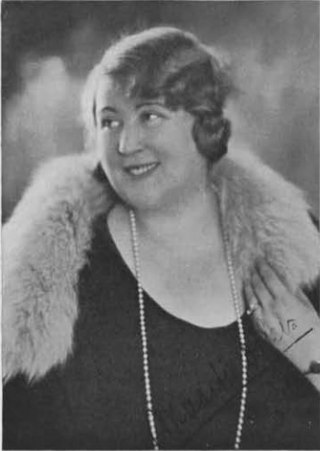 4
Maartje Offers was a Dutch contralto classical singer.
4
Maartje Offers was a Dutch contralto classical singer.
Reina Prinsen Geerligs
 4
Reina Prinsen Geerligs was a member of the Dutch Resistance during World War II. After the war the literary Reina Prinsen Geerligs Award was created in her memory.
4
Reina Prinsen Geerligs was a member of the Dutch Resistance during World War II. After the war the literary Reina Prinsen Geerligs Award was created in her memory.
Tuyll
 4
Tuyll is the name of a noble Dutch family, with familial and historical links to England, whose full name is Van Tuyll van Serooskerken. Several knights, members of various courts, literary figures,...
4
Tuyll is the name of a noble Dutch family, with familial and historical links to England, whose full name is Van Tuyll van Serooskerken. Several knights, members of various courts, literary figures,...
Heintje Davids
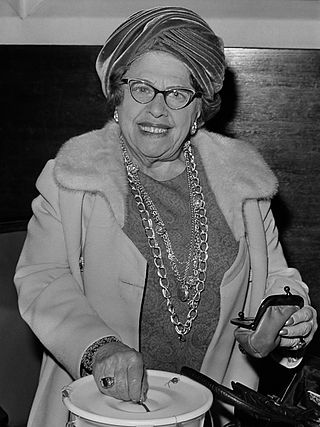 4
Hendrika David was een Nederlandse variétéartieste die vanaf 1907 tot aan haar dood onder de naam Henriëtte Davids carrière maakte als zangeres en bijdehante grappenmaakster. Ze was het bekendst...
4
Hendrika David was een Nederlandse variétéartieste die vanaf 1907 tot aan haar dood onder de naam Henriëtte Davids carrière maakte als zangeres en bijdehante grappenmaakster. Ze was het bekendst...
Anna de Waal
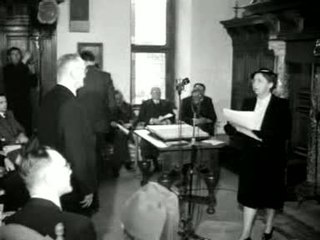 4
Anna de Waal, was a Dutch politician. She was state secretary of education in 1953–1957. De Waal was the first female government secretary or minister in the Netherlands.
4
Anna de Waal, was a Dutch politician. She was state secretary of education in 1953–1957. De Waal was the first female government secretary or minister in the Netherlands.
Mulier (geslacht)
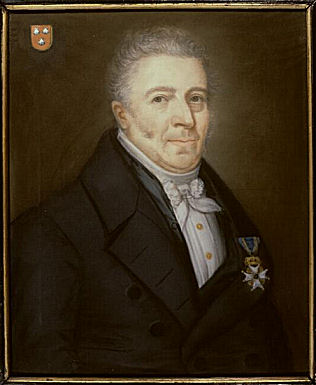 4
Mulier is een geslacht van Franse oorsprong waarvan leden zich in de eerste helft van de 18e eeuw in Nederland vestigden en tot het patriciaat gingen behoren. De familie werd in 1917 opgenomen in het...
4
Mulier is een geslacht van Franse oorsprong waarvan leden zich in de eerste helft van de 18e eeuw in Nederland vestigden en tot het patriciaat gingen behoren. De familie werd in 1917 opgenomen in het...
Prince Pieter-Christiaan of Orange-Nassau, van Vollenhoven
 4
Prince Pieter-Christiaan Michiel of Orange-Nassau, van Vollenhoven, is the third son of Princess Margriet of the Netherlands and Pieter van Vollenhoven.
4
Prince Pieter-Christiaan Michiel of Orange-Nassau, van Vollenhoven, is the third son of Princess Margriet of the Netherlands and Pieter van Vollenhoven.
Anthon van der Horst
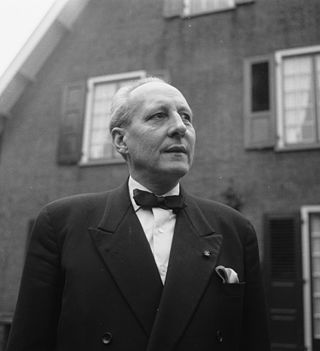 4
Anthon van der Horst was een Nederlands organist, dirigent en componist. Hij werd vooral bekend door zijn werk voor de Nederlandse Bachvereniging en de uitvoering van de Matthäus-Passion in Naarden....
4
Anthon van der Horst was een Nederlands organist, dirigent en componist. Hij werd vooral bekend door zijn werk voor de Nederlandse Bachvereniging en de uitvoering van de Matthäus-Passion in Naarden....
Lancelot
 4
Lancelot du Lac, also written as Launcelot and other variants, is a character in some versions of Arthurian legend where he is typically depicted as King Arthur's close companion and one of the...
4
Lancelot du Lac, also written as Launcelot and other variants, is a character in some versions of Arthurian legend where he is typically depicted as King Arthur's close companion and one of the...
Albertus Magnus
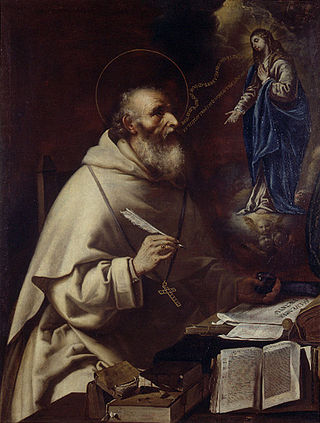 4
Albertus Magnus, also known as Saint Albert the Great, Albert of Swabia
or Albert of Cologne, was a German Dominican friar, philosopher, scientist, and bishop, considered one of the greatest medieval...
4
Albertus Magnus, also known as Saint Albert the Great, Albert of Swabia
or Albert of Cologne, was a German Dominican friar, philosopher, scientist, and bishop, considered one of the greatest medieval...
John Calvin
 4
John Calvin was a French theologian, pastor and reformer in Geneva during the Protestant Reformation. He was a principal figure in the development of the system of Christian theology later called...
4
John Calvin was a French theologian, pastor and reformer in Geneva during the Protestant Reformation. He was a principal figure in the development of the system of Christian theology later called...
Vitruvius
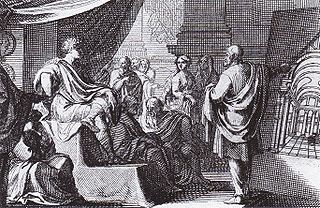 4
Vitruvius was a Roman architect and engineer during the 1st century BC, known for his multi-volume work titled De architectura. As the only treatise on architecture to survive from antiquity, it has...
4
Vitruvius was a Roman architect and engineer during the 1st century BC, known for his multi-volume work titled De architectura. As the only treatise on architecture to survive from antiquity, it has...
Confucius
 4
Confucius, born Kong Qiu (孔丘), was a Chinese philosopher of the Spring and Autumn period who is traditionally considered the paragon of Chinese sages, as well as the first teacher in China to...
4
Confucius, born Kong Qiu (孔丘), was a Chinese philosopher of the Spring and Autumn period who is traditionally considered the paragon of Chinese sages, as well as the first teacher in China to...
Andrea Palladio
 4
Andrea Palladio was an Italian Renaissance architect active in the Venetian Republic. Palladio, influenced by Roman and Greek architecture, primarily Vitruvius, is widely considered to be one of the...
4
Andrea Palladio was an Italian Renaissance architect active in the Venetian Republic. Palladio, influenced by Roman and Greek architecture, primarily Vitruvius, is widely considered to be one of the...
Kees van Baaren
 4
Kees van Baaren was a Dutch composer and teacher.
4
Kees van Baaren was a Dutch composer and teacher.
Philippus Rovenius
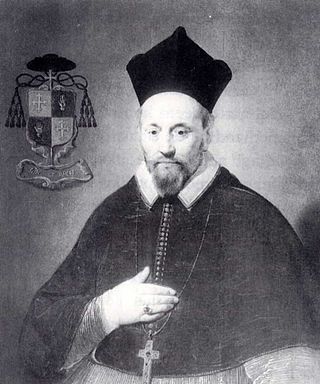 4
Philippus Rovenius was apostolic vicar of the Dutch Mission from 1614 to 1651.
4
Philippus Rovenius was apostolic vicar of the Dutch Mission from 1614 to 1651.
Duchy of Guelders
 4
The Duchy of Guelders is a historical duchy, previously county, of the Holy Roman Empire, located in the Low Countries.
4
The Duchy of Guelders is a historical duchy, previously county, of the Holy Roman Empire, located in the Low Countries.
Thomas Aquinas
 4
Thomas Aquinas was an Italian Dominican friar and priest, an influential philosopher and theologian, and a jurist in the tradition of scholasticism from the county of Aquino in the Kingdom of Sicily.
4
Thomas Aquinas was an Italian Dominican friar and priest, an influential philosopher and theologian, and a jurist in the tradition of scholasticism from the county of Aquino in the Kingdom of Sicily.
Voltaire
 4
François-Marie Arouet, known by his nom de plume M. de Voltaire, was a French Enlightenment writer, philosopher (philosophe), satirist, and historian. Famous for his wit and his criticism of...
4
François-Marie Arouet, known by his nom de plume M. de Voltaire, was a French Enlightenment writer, philosopher (philosophe), satirist, and historian. Famous for his wit and his criticism of...
Pedro Álvares Cabral
 4
Pedro Álvares Cabral was a Portuguese nobleman, military commander, navigator and explorer regarded as the European discoverer of Brazil. He was the first recorded human in history to ever be on four...
4
Pedro Álvares Cabral was a Portuguese nobleman, military commander, navigator and explorer regarded as the European discoverer of Brazil. He was the first recorded human in history to ever be on four...
Bernardus IJzerdraat
 4
Bernardus IJzerdraat was a Dutch resistance fighter in the Second World War.
4
Bernardus IJzerdraat was a Dutch resistance fighter in the Second World War.
Willem Royaards
 4
Dr. Willem Cornelis Royaards was een Nederlands acteur, regisseur en toneelleider.
4
Dr. Willem Cornelis Royaards was een Nederlands acteur, regisseur en toneelleider.
Lien Gisolf
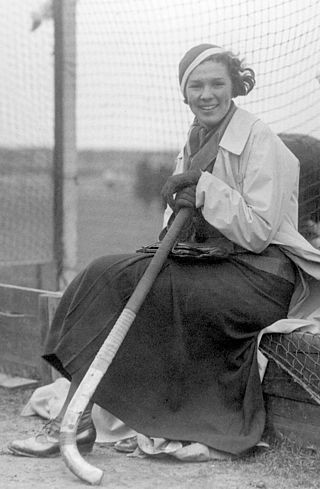 4
Carolina Anna "Lien" Gisolf was a Dutch high jumper. She won a silver medal at the 1928 Summer Olympics and finished fourth in 1932.
4
Carolina Anna "Lien" Gisolf was a Dutch high jumper. She won a silver medal at the 1928 Summer Olympics and finished fourth in 1932.
J. C. Bloem
 4
Jakobus Cornelis (Jacques) Bloem was a Dutch poet and essayist. Between 1921 and 1958 he published fourteen volumes of poetry. In 1949 he won the Constantijn Huygensprijs, one of the country's...
4
Jakobus Cornelis (Jacques) Bloem was a Dutch poet and essayist. Between 1921 and 1958 he published fourteen volumes of poetry. In 1949 he won the Constantijn Huygensprijs, one of the country's...
Reinier Cornelis Bakhuizen van den Brink
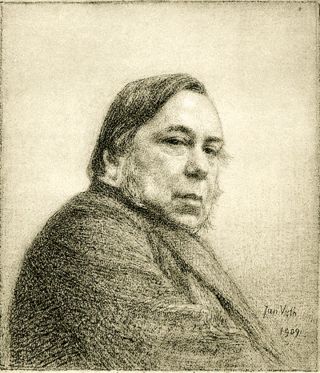 4
Reinier Cornelis Bakhuizen van den Brink was in zijn tijd een van de invloedrijkste intellectuelen in Nederland. Als literatuurcriticus, filosoof en historicus wierp hij zich op voor de moderne,...
4
Reinier Cornelis Bakhuizen van den Brink was in zijn tijd een van de invloedrijkste intellectuelen in Nederland. Als literatuurcriticus, filosoof en historicus wierp hij zich op voor de moderne,...
Jacobus van Looy
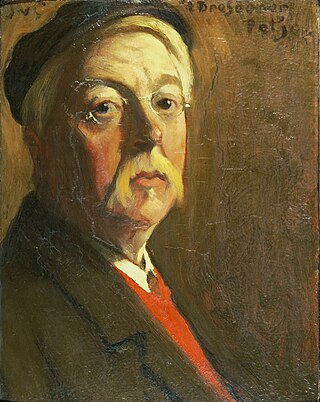 4
Jacobus (Jac) van Looy was a Dutch painter and writer.
4
Jacobus (Jac) van Looy was a Dutch painter and writer.
Justus van Maurik
 4
Justus van Maurik, was a Dutch author and cigar maker. He was the grandson of Justus van Maurik Sr.
4
Justus van Maurik, was a Dutch author and cigar maker. He was the grandson of Justus van Maurik Sr.
Theo Bunjes
 4
Pieter Theodorus (Theo) Bunjes was een Nederlands politicus van de CHU en later het CDA.
4
Pieter Theodorus (Theo) Bunjes was een Nederlands politicus van de CHU en later het CDA.
Hans Kolfschoten
 4
Henri Anthony Melchior Tieleman "Hans" Kolfschoten was a Dutch politician of the defunct Catholic People's Party (KVP) now merged into the Christian Democratic Appeal (CDA).
4
Henri Anthony Melchior Tieleman "Hans" Kolfschoten was a Dutch politician of the defunct Catholic People's Party (KVP) now merged into the Christian Democratic Appeal (CDA).
Catharine van Tussenbroek
 4
Catharine van Tussenbroek was a Dutch physician and feminist. She was the second woman to qualify as a physician in the Netherlands and the first physician to confirm evidence of the ovarian type of...
4
Catharine van Tussenbroek was a Dutch physician and feminist. She was the second woman to qualify as a physician in the Netherlands and the first physician to confirm evidence of the ovarian type of...
Emilie Knappert
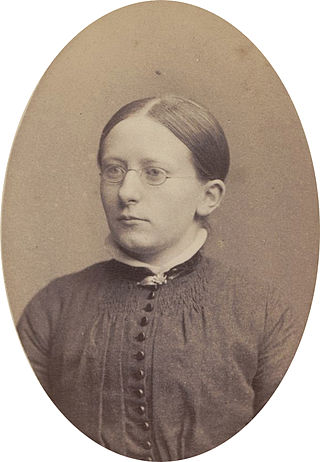 4
Emilie Knappert (1860–1952) was a Dutch social worker who founded several important social work organizations in the Netherlands, including the Leiden Volkshuis, and was the director of the Amsterdam...
4
Emilie Knappert (1860–1952) was a Dutch social worker who founded several important social work organizations in the Netherlands, including the Leiden Volkshuis, and was the director of the Amsterdam...
Gnaeus Domitius Corbulo
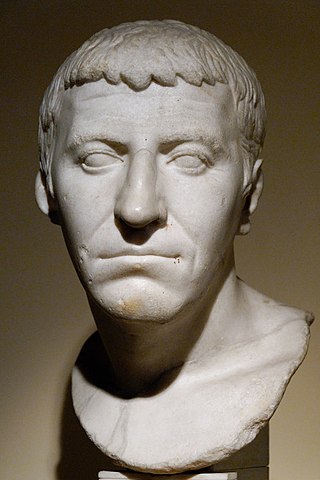 4
Gnaeus Domitius Corbulo was a popular Roman general, brother-in-law of the emperor Caligula and father-in-law of Domitian. The emperor Nero, highly fearful of Corbulo's reputation, ordered him to...
4
Gnaeus Domitius Corbulo was a popular Roman general, brother-in-law of the emperor Caligula and father-in-law of Domitian. The emperor Nero, highly fearful of Corbulo's reputation, ordered him to...
Herman Coster
 4
Hermanus 'Herman' Jacobus Coster was a Dutch lawyer and State Attorney of the Zuid-Afrikaansche Republiek.
4
Hermanus 'Herman' Jacobus Coster was a Dutch lawyer and State Attorney of the Zuid-Afrikaansche Republiek.
Anton Koolhaas
 4
Anthonie "Anton" Koolhaas was a Dutch journalist, novelist, and scenario writer.
4
Anthonie "Anton" Koolhaas was a Dutch journalist, novelist, and scenario writer.
Pyotr Ilyich Tchaikovsky
 4
Pyotr Ilyich Tchaikovsky was a Russian composer of the Romantic period. He was the first Russian composer whose music would make a lasting impression internationally. Tchaikovsky wrote some of the...
4
Pyotr Ilyich Tchaikovsky was a Russian composer of the Romantic period. He was the first Russian composer whose music would make a lasting impression internationally. Tchaikovsky wrote some of the...
Marianne Philips
 4
Marianne Philips was a Dutch writer and politician. In 1919, she became one of the first female municipal council members of the Netherlands. Philips wrote psychological novels. Philips survived...
4
Marianne Philips was a Dutch writer and politician. In 1919, she became one of the first female municipal council members of the Netherlands. Philips wrote psychological novels. Philips survived...
Molière
 4
Jean-Baptiste Poquelin, known by his stage name Molière, was a French playwright, actor, and poet, widely regarded as one of the great writers in the French language and world literature. His extant...
4
Jean-Baptiste Poquelin, known by his stage name Molière, was a French playwright, actor, and poet, widely regarded as one of the great writers in the French language and world literature. His extant...
Henriëtte Ronner-Knip
 4
Henriëtte Ronner-Knip was a Dutch-Belgian artist chiefly in the Romantic style who is best known for her animal paintings; especially cats.
4
Henriëtte Ronner-Knip was a Dutch-Belgian artist chiefly in the Romantic style who is best known for her animal paintings; especially cats.
Herman Brood
 4
Hermanus "Herman" Brood was a Dutch musician, painter, actor and poet. As a musician he achieved artistic and commercial success in the 1970s and 1980s, and was called "the greatest and only Dutch...
4
Hermanus "Herman" Brood was a Dutch musician, painter, actor and poet. As a musician he achieved artistic and commercial success in the 1970s and 1980s, and was called "the greatest and only Dutch...
Adriaan Kluit
 4
Adriaan Kluit was a Dutch scholar, important in Dutch linguistics. He was born in Dordrecht. He was rector of the Latin school in Alkmaar and Middelburg. In 1779 he became the professor of history at...
4
Adriaan Kluit was a Dutch scholar, important in Dutch linguistics. He was born in Dordrecht. He was rector of the Latin school in Alkmaar and Middelburg. In 1779 he became the professor of history at...
Ella Fitzgerald
 4
Ella Jane Fitzgerald was an American jazz singer, sometimes referred to as the "First Lady of Song", "Queen of Jazz", and "Lady Ella". She was noted for her purity of tone, impeccable diction,...
4
Ella Jane Fitzgerald was an American jazz singer, sometimes referred to as the "First Lady of Song", "Queen of Jazz", and "Lady Ella". She was noted for her purity of tone, impeccable diction,...
Friedrich Engels
 4
Friedrich Engels was a German philosopher, political theorist, historian, journalist, and revolutionary socialist. He was also a businessman and Karl Marx's closest friend and collaborator.
4
Friedrich Engels was a German philosopher, political theorist, historian, journalist, and revolutionary socialist. He was also a businessman and Karl Marx's closest friend and collaborator.
Aaltje Noordewier–Reddingius
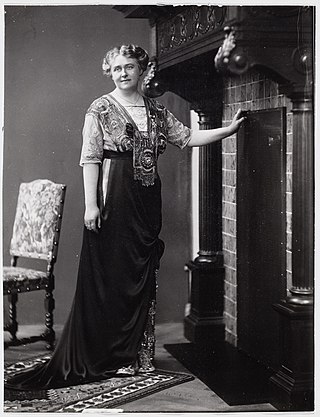 4
Aaltje Noordewier–Reddingius was a Dutch classical soprano who had an active performance career in the concert repertoire from 1888 through the 1930s. She was also a celebrated voice teacher.
4
Aaltje Noordewier–Reddingius was a Dutch classical soprano who had an active performance career in the concert repertoire from 1888 through the 1930s. She was also a celebrated voice teacher.
Stan Kenton
 4
Stanley Newcomb Kenton was an American popular music and jazz artist. As a pianist, composer, arranger and band leader, he led an innovative and influential jazz orchestra for almost four decades....
4
Stanley Newcomb Kenton was an American popular music and jazz artist. As a pianist, composer, arranger and band leader, he led an innovative and influential jazz orchestra for almost four decades....
Nico Engelschman
 4
Nico (Niek) Engelschman was een Nederlandse acteur, homo-activist en Nederlandse verzetsstrijder tijdens de Tweede Wereldoorlog.
4
Nico (Niek) Engelschman was een Nederlandse acteur, homo-activist en Nederlandse verzetsstrijder tijdens de Tweede Wereldoorlog.
Dirk Hartog
 4
Dirk Hartog was a 17th-century Dutch sailor and explorer. Dirk Hartog's expedition was the second European group to land in Australia and the first to leave behind an artefact to record his visit,...
4
Dirk Hartog was a 17th-century Dutch sailor and explorer. Dirk Hartog's expedition was the second European group to land in Australia and the first to leave behind an artefact to record his visit,...
Jacob van Oudenhoven
 4
Jacob van Oudenhoven was een Nederlands gereformeerd predikant en historicus. Hij behoorde tot de stroming van de Nadere Reformatie.
4
Jacob van Oudenhoven was een Nederlands gereformeerd predikant en historicus. Hij behoorde tot de stroming van de Nadere Reformatie.
Pieter de Swart
 4
Pieter de Swart was een Nederlands architect uit de 18e eeuw.
4
Pieter de Swart was een Nederlands architect uit de 18e eeuw.
Dirk I, Count of Holland
 4
Dirk I was count of West Frisia, later known as the County of Holland. He is thought to have been in office from c. 896 to c. 928 or 939.
4
Dirk I was count of West Frisia, later known as the County of Holland. He is thought to have been in office from c. 896 to c. 928 or 939.
Philip IV of France
 4
Philip IV, called Philip the Fair, was King of France from 1285 to 1314. By virtue of his marriage with Joan I of Navarre, he was also King of Navarre as Philip I from 1284 to 1305, as well as Count...
4
Philip IV, called Philip the Fair, was King of France from 1285 to 1314. By virtue of his marriage with Joan I of Navarre, he was also King of Navarre as Philip I from 1284 to 1305, as well as Count...
Ignatius of Loyola
 4
Ignatius of Loyola, venerated as Saint Ignatius of Loyola, was a Spanish Catholic priest and theologian, who, with six companions, founded the religious order of the Society of Jesus (Jesuits), and...
4
Ignatius of Loyola, venerated as Saint Ignatius of Loyola, was a Spanish Catholic priest and theologian, who, with six companions, founded the religious order of the Society of Jesus (Jesuits), and...
Taets van Amerongen
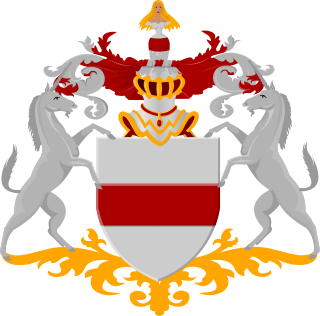 4
Taets van Amerongen is een oud adellijk, Stichts geslacht waarvan leden sinds 1814 tot de Nederlandse adel behoren.
4
Taets van Amerongen is een oud adellijk, Stichts geslacht waarvan leden sinds 1814 tot de Nederlandse adel behoren.
Geert van Wou
 4
Geert van Wou was a well-known Dutch bellfounder. He is best known today for the Maria Gloriosa (1497) of Erfurt Cathedral. The son of a bellfounder, he is considered one of the most important...
4
Geert van Wou was a well-known Dutch bellfounder. He is best known today for the Maria Gloriosa (1497) of Erfurt Cathedral. The son of a bellfounder, he is considered one of the most important...
Pieter Bor
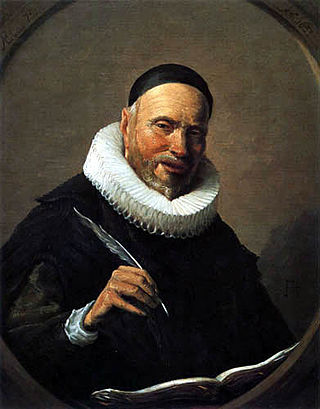 4
Pieter Bor, or Pieter Christiaensz Bor (1559-1635) was a Dutch Golden Age writer and historian. His portrait was painted by Frans Hals in 1634, and it was engraved for his book in 1637.
4
Pieter Bor, or Pieter Christiaensz Bor (1559-1635) was a Dutch Golden Age writer and historian. His portrait was painted by Frans Hals in 1634, and it was engraved for his book in 1637.
Wil Huygen
 4
Willibrord Joseph Huygen was a Dutch book author. He is best known for the picture books on gnomes, illustrated by Rien Poortvliet.
4
Willibrord Joseph Huygen was a Dutch book author. He is best known for the picture books on gnomes, illustrated by Rien Poortvliet.
Anna Dresden-Polak
 4
Anna "Ans" Dresden-Polak was a Jewish Dutch gymnast.
4
Anna "Ans" Dresden-Polak was a Jewish Dutch gymnast.
Otto Eerelman
 4
Otto Eerelman was a Dutch painter; best known for his depictions of dogs and horses. He was also a court painter and did several portraits of Wilhelmina, as Princess and Queen.
4
Otto Eerelman was a Dutch painter; best known for his depictions of dogs and horses. He was also a court painter and did several portraits of Wilhelmina, as Princess and Queen.
Petronella Moens
 4
Petronella Moens was a blind Dutch writer, editor, and feminist. She managed a paper in 1788–1797, in which she spoke for political issues such as slavery and women suffrage.
4
Petronella Moens was a blind Dutch writer, editor, and feminist. She managed a paper in 1788–1797, in which she spoke for political issues such as slavery and women suffrage.
Agatha Christie
 4
Dame Agatha Mary Clarissa Christie, Lady Mallowan, was an English writer known for her 66 detective novels and 14 short story collections, particularly those revolving around fictional detectives...
4
Dame Agatha Mary Clarissa Christie, Lady Mallowan, was an English writer known for her 66 detective novels and 14 short story collections, particularly those revolving around fictional detectives...
Pieter Pauw
 4
Pieter Pauw, was a Dutch botanist and anatomist. He was a student of Hieronymus Fabricius. He was the first Anatomy Professor at University of Leiden.
4
Pieter Pauw, was a Dutch botanist and anatomist. He was a student of Hieronymus Fabricius. He was the first Anatomy Professor at University of Leiden.
Pope Pius XII
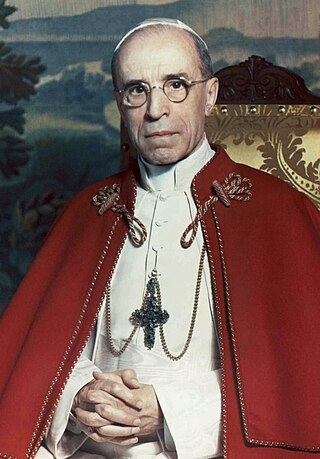 4
Pope Pius XII was head of the Catholic Church and sovereign of the Vatican City State from 2 March 1939 until his death in October 1958. Before his election to the papacy, he served as secretary of...
4
Pope Pius XII was head of the Catholic Church and sovereign of the Vatican City State from 2 March 1939 until his death in October 1958. Before his election to the papacy, he served as secretary of...
Hippocrates
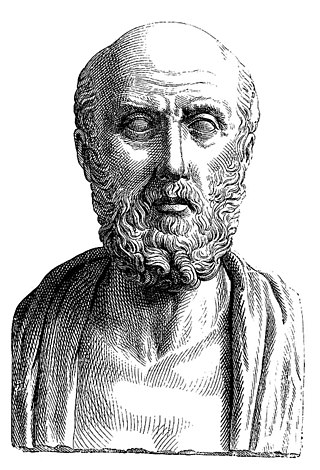 4
Hippocrates of Kos, also known as Hippocrates II, was a Greek physician of the classical period who is considered one of the most outstanding figures in the history of medicine. He is traditionally...
4
Hippocrates of Kos, also known as Hippocrates II, was a Greek physician of the classical period who is considered one of the most outstanding figures in the history of medicine. He is traditionally...
Willy Sluiter
 4
Jan Willem "Willy" Sluiter was a Dutch painter.
He was best known for his paintings of Dutch villages and its dwellers, and also did portraits of members of Dutch high society. His work was part of...
4
Jan Willem "Willy" Sluiter was a Dutch painter.
He was best known for his paintings of Dutch villages and its dwellers, and also did portraits of members of Dutch high society. His work was part of...
Waling Dykstra
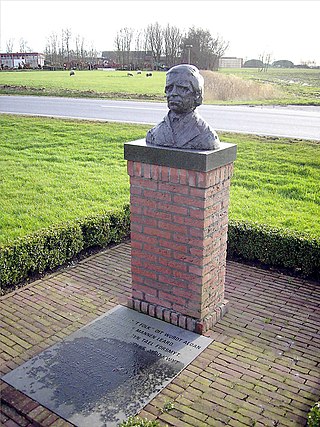 4
Waling Gerrits Dykstra of Dijkstra was een Fries schrijver, dichter en voordrachtskunstenaar.
4
Waling Gerrits Dykstra of Dijkstra was een Fries schrijver, dichter en voordrachtskunstenaar.
Anton Pieck
 4
Anton Franciscus Pieck was a Dutch painter, artist and graphic artist. His works are noted for their nostalgic or fairy tale-like character and are widely popular, appearing regularly on cards and...
4
Anton Franciscus Pieck was a Dutch painter, artist and graphic artist. His works are noted for their nostalgic or fairy tale-like character and are widely popular, appearing regularly on cards and...
Prince Floris of Orange-Nassau, van Vollenhoven
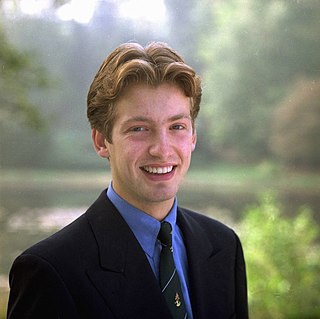 4
Prince Floris Frederik Martijn of Orange-Nassau, van Vollenhoven is the fourth and youngest son of Princess Margriet of the Netherlands and Pieter van Vollenhoven.
4
Prince Floris Frederik Martijn of Orange-Nassau, van Vollenhoven is the fourth and youngest son of Princess Margriet of the Netherlands and Pieter van Vollenhoven.
Indira Gandhi
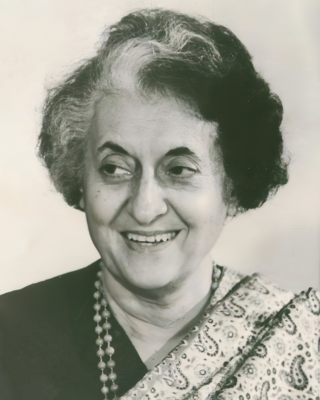 4
Indira Gandhi was an Indian politician who served as the third Prime Minister of India from 1966 to 1977 and again from 1980 until her assassination in 1984. She was India's first and, to date, only...
4
Indira Gandhi was an Indian politician who served as the third Prime Minister of India from 1966 to 1977 and again from 1980 until her assassination in 1984. She was India's first and, to date, only...
Mimi Boesnach
 4
Mimi Boesnach, pseudoniem van Maria Alida Pieters, was een Nederlandse actrice en zangeres. Haar carrière overspande meer dan zestig jaar. Ze won verschillende toneelprijzen.
4
Mimi Boesnach, pseudoniem van Maria Alida Pieters, was een Nederlandse actrice en zangeres. Haar carrière overspande meer dan zestig jaar. Ze won verschillende toneelprijzen.
Annie van Ees
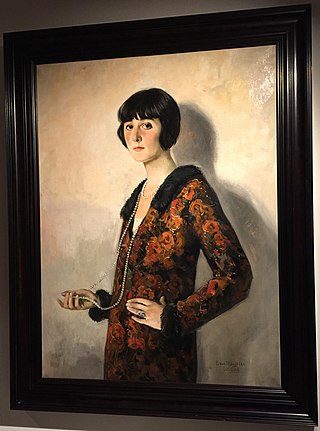 4
Johanna Martina (Annie) van Ees was een Nederlandse filmactrice. Door haar huwelijk met toneelleider Cor van der Lugt Melsert stond ze ook bekend als Annie van der Lugt Melsert-Van Ees.
4
Johanna Martina (Annie) van Ees was een Nederlandse filmactrice. Door haar huwelijk met toneelleider Cor van der Lugt Melsert stond ze ook bekend als Annie van der Lugt Melsert-Van Ees.
Mark the Evangelist
 4
Mark the Evangelist also known as John Mark or Saint Mark, is the person who is traditionally ascribed to be the author of the Gospel of Mark. Modern Bible scholars have concluded that the Gospel of...
4
Mark the Evangelist also known as John Mark or Saint Mark, is the person who is traditionally ascribed to be the author of the Gospel of Mark. Modern Bible scholars have concluded that the Gospel of...
Anton Philips
 4
Anton Frederik Philips co-founded Royal Philips Electronics N.V. in 1912 with his older brother Gerard Philips in Eindhoven, the Netherlands. His father and Gerard had founded the Philips Company in...
4
Anton Frederik Philips co-founded Royal Philips Electronics N.V. in 1912 with his older brother Gerard Philips in Eindhoven, the Netherlands. His father and Gerard had founded the Philips Company in...
Van Sasse van Ysselt
 4
Van Sasse van Ysselt is een geslacht waarvan leden sinds 1814 tot de Nederlandse adel behoren.
4
Van Sasse van Ysselt is een geslacht waarvan leden sinds 1814 tot de Nederlandse adel behoren.
Kees Boeke
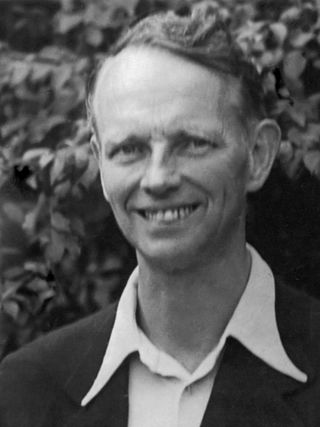 4
Cornelis "Kees" Boeke was a Dutch reformist educator, Quaker missionary and pacifist. He is best known for his popular essay/book Cosmic View (1957) which presents a seminal view of the universe,...
4
Cornelis "Kees" Boeke was a Dutch reformist educator, Quaker missionary and pacifist. He is best known for his popular essay/book Cosmic View (1957) which presents a seminal view of the universe,...
Gemma Frisius
 4
Gemma Frisius was a Dutch physician, mathematician, cartographer, philosopher, and instrument maker. He created important globes, improved the mathematical instruments of his day and applied...
4
Gemma Frisius was a Dutch physician, mathematician, cartographer, philosopher, and instrument maker. He created important globes, improved the mathematical instruments of his day and applied...
Adrie de Graaf
 4
Adriaan Cornelis (Adrie) de Graaf was een Nederlandse verzetsstrijder in West-Friesland. De Graaf overleed op 42-jarige leeftijd. De A.C. de Graafweg (N241) is vanwege zijn verdiensten in het verzet...
4
Adriaan Cornelis (Adrie) de Graaf was een Nederlandse verzetsstrijder in West-Friesland. De Graaf overleed op 42-jarige leeftijd. De A.C. de Graafweg (N241) is vanwege zijn verdiensten in het verzet...
Catharina Elderink
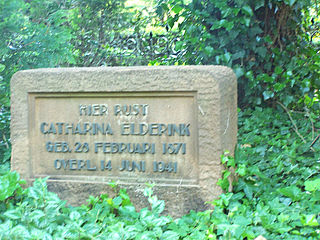 4
Catharina (Cato) Elderink was een Nederlandse schrijfster en dichteres in de Twentse streektaal.
4
Catharina (Cato) Elderink was een Nederlandse schrijfster en dichteres in de Twentse streektaal.
Peter Donders
 4
Petrus Norbertus Donders was a Dutch Roman Catholic priest and member of the Redemptorist Congregation. He served in various missions in the Dutch colony of Surinam. He started working in the capital...
4
Petrus Norbertus Donders was a Dutch Roman Catholic priest and member of the Redemptorist Congregation. He served in various missions in the Dutch colony of Surinam. He started working in the capital...
Demeter
 4
In ancient Greek religion and mythology, Demeter is the Olympian goddess of the harvest and agriculture, presiding over crops, grains, food, and the fertility of the earth. Although Demeter is mostly...
4
In ancient Greek religion and mythology, Demeter is the Olympian goddess of the harvest and agriculture, presiding over crops, grains, food, and the fertility of the earth. Although Demeter is mostly...
Pieter Nuyts
 4
Pieter Nuyts or Nuijts was a Dutch explorer, diplomat and politician.
4
Pieter Nuyts or Nuijts was a Dutch explorer, diplomat and politician.
Romulus and Remus
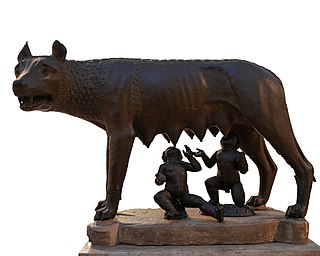 4
In Roman mythology, Romulus and Remus are twin brothers whose story tells of the events that led to the founding of the city of Rome and the Roman Kingdom by Romulus, following his fratricide of...
4
In Roman mythology, Romulus and Remus are twin brothers whose story tells of the events that led to the founding of the city of Rome and the Roman Kingdom by Romulus, following his fratricide of...
Romulus
 4
Romulus was the legendary founder and first king of Rome. Various traditions attribute the establishment of many of Rome's oldest legal, political, religious, and social institutions to Romulus and...
4
Romulus was the legendary founder and first king of Rome. Various traditions attribute the establishment of many of Rome's oldest legal, political, religious, and social institutions to Romulus and...
John IV of Glymes
 4
John IV of Glymes, 2nd Marquess of Berghes (1528–1567), Grand Huntsman of Brabant, was a noble from the Low Countries.
4
John IV of Glymes, 2nd Marquess of Berghes (1528–1567), Grand Huntsman of Brabant, was a noble from the Low Countries.
Nannie van Wehl
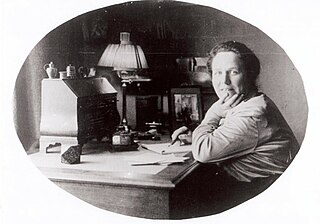 4
Susanna Jacoba Adriana Lugten-Reys, pseudoniem Nannie van Wehl, was Nederlandse onderwijzeres, jeugdboekenschrijfster en publiciste.
4
Susanna Jacoba Adriana Lugten-Reys, pseudoniem Nannie van Wehl, was Nederlandse onderwijzeres, jeugdboekenschrijfster en publiciste.
William I, Duke of Bavaria
 4
William I, Duke of Bavaria-Straubing, was the second son of Emperor Louis IV and Margaret II of Hainaut. He was also known as William V, Count of Holland, as William III, Count of Hainaut and as...
4
William I, Duke of Bavaria-Straubing, was the second son of Emperor Louis IV and Margaret II of Hainaut. He was also known as William V, Count of Holland, as William III, Count of Hainaut and as...
Karel van de Woestijne
 4
Carolus Petrus Eduardus Maria "Karel" van de Woestijne was a Flemish writer and brother of the painter Gustave van de Woestijne. He went to highschool at the Koninklijk Athenaeum at the Ottogracht in...
4
Carolus Petrus Eduardus Maria "Karel" van de Woestijne was a Flemish writer and brother of the painter Gustave van de Woestijne. He went to highschool at the Koninklijk Athenaeum at the Ottogracht in...
Karel Lotsy
 4
Karel Johannes Julianus Lotsij, bekend onder de naam Lotsy was een Nederlandse sportbestuurder.
4
Karel Johannes Julianus Lotsij, bekend onder de naam Lotsy was een Nederlandse sportbestuurder.
Søren Kierkegaard
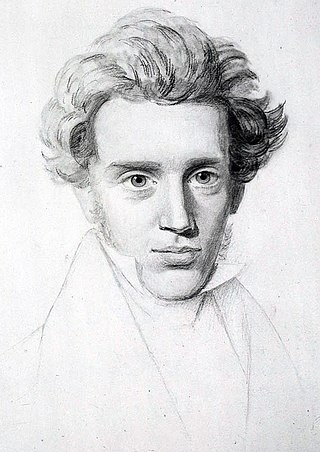 4
Søren Aabye Kierkegaard was a Danish theologian, philosopher, poet, social critic, and religious author who is widely considered to be the first existentialist philosopher. He wrote critical texts on...
4
Søren Aabye Kierkegaard was a Danish theologian, philosopher, poet, social critic, and religious author who is widely considered to be the first existentialist philosopher. He wrote critical texts on...
Reginald III, Duke of Guelders
 4
Reginald III was Duke of Guelders and Count of Zutphen from 1343 to 1361, and again in 1371. He was the son of Reginald II of Guelders and of Eleanor of Woodstock, daughter of Edward II of England.
4
Reginald III was Duke of Guelders and Count of Zutphen from 1343 to 1361, and again in 1371. He was the son of Reginald II of Guelders and of Eleanor of Woodstock, daughter of Edward II of England.
Saint Remigius
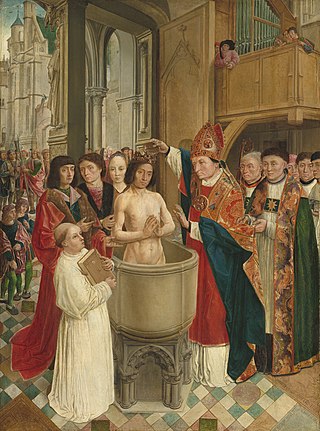 4
Remigius was the Bishop of Reims and "Apostle of the Franks". On 25 December 496, he baptised Clovis I, King of the Franks. The baptism, leading to about 3000 additional converts, was an important...
4
Remigius was the Bishop of Reims and "Apostle of the Franks". On 25 December 496, he baptised Clovis I, King of the Franks. The baptism, leading to about 3000 additional converts, was an important...
Harmen Sytstra
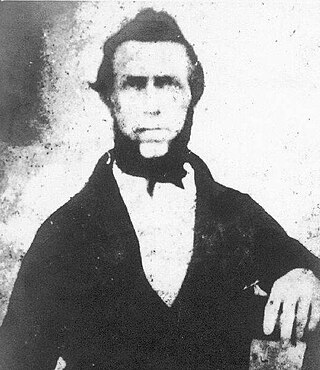 4
Harmen Sytses Sytstra wie in Fryske skriuwer en skoalmaster.
4
Harmen Sytses Sytstra wie in Fryske skriuwer en skoalmaster.
Gysbert Japiks
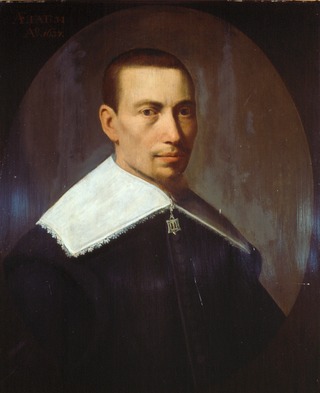 4
Gysbert Japiks Holckema, better known as simply Gysbert Japiks (1603–1666), was a West Frisian writer, poet, schoolmaster, and cantor.
4
Gysbert Japiks Holckema, better known as simply Gysbert Japiks (1603–1666), was a West Frisian writer, poet, schoolmaster, and cantor.
Van Citters
 4
Van Citters is een regentenfamilie waarvan telgen gedurende eeuwen bestuurlijke functies vervulden in met name de stad Middelburg en de provincie Zeeland. Enkele leden van de familie hadden een...
4
Van Citters is een regentenfamilie waarvan telgen gedurende eeuwen bestuurlijke functies vervulden in met name de stad Middelburg en de provincie Zeeland. Enkele leden van de familie hadden een...
Amandus
 4
Amandus, commonly called Saint Amand, was a bishop of Tongeren-Maastricht and one of the catholic missionaries of Flanders. He is venerated as a saint, particularly in France and Belgium.
4
Amandus, commonly called Saint Amand, was a bishop of Tongeren-Maastricht and one of the catholic missionaries of Flanders. He is venerated as a saint, particularly in France and Belgium.
Marie Baron
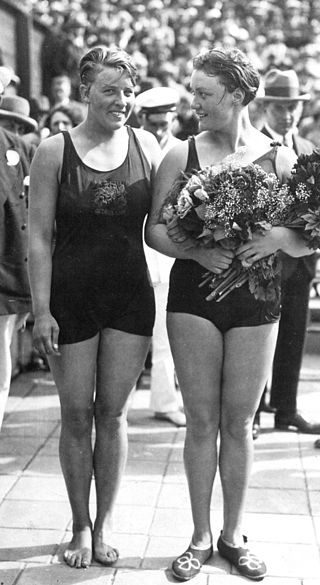 4
Mietje "Marie" Baron was a Dutch swimmer and diver who competed at the 1924 and 1928 Olympics. In 1924 she was sixth in the 4 × 100 m freestyle relay. She was disqualified in the first round of the...
4
Mietje "Marie" Baron was a Dutch swimmer and diver who competed at the 1924 and 1928 Olympics. In 1924 she was sixth in the 4 × 100 m freestyle relay. She was disqualified in the first round of the...
Agnes of Rome
 4
Agnes of Rome is a virgin martyr, venerated as a saint in the Catholic Church, Oriental Orthodox Church and the Eastern Orthodox Church, as well as the Anglican Communion and Lutheran Churches. She...
4
Agnes of Rome is a virgin martyr, venerated as a saint in the Catholic Church, Oriental Orthodox Church and the Eastern Orthodox Church, as well as the Anglican Communion and Lutheran Churches. She...
Henri Van der Noot
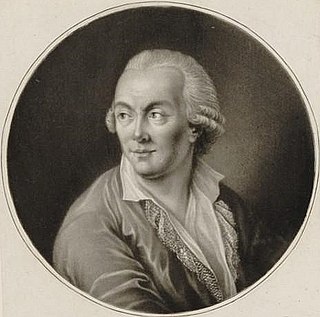 4
Henri van der Noot, in Dutch Hendrik van der Noot, and popularly called Heintje van der Noot or Vader Heintje, was a jurist, lawyer and politician from Brabant. He was one of the main figures of the...
4
Henri van der Noot, in Dutch Hendrik van der Noot, and popularly called Heintje van der Noot or Vader Heintje, was a jurist, lawyer and politician from Brabant. He was one of the main figures of the...
James Prescott Joule
 4
James Prescott Joule was an English physicist, mathematician and brewer, born in Salford, Lancashire. Joule studied the nature of heat, and discovered its relationship to mechanical work. This led to...
4
James Prescott Joule was an English physicist, mathematician and brewer, born in Salford, Lancashire. Joule studied the nature of heat, and discovered its relationship to mechanical work. This led to...
Pierre-Lambert Goossens
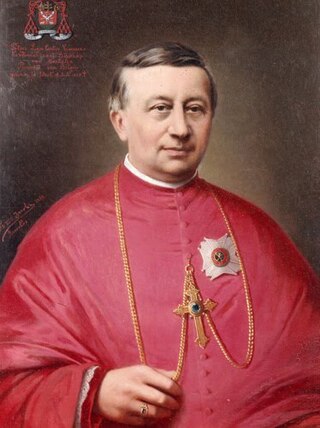 4
Pierre-Lambert Goossens was a Belgian Cardinal of the Roman Catholic Church. He served as Archbishop of Mechelen from 1884 until his death, and was elevated to the cardinalate in 1889.
4
Pierre-Lambert Goossens was a Belgian Cardinal of the Roman Catholic Church. He served as Archbishop of Mechelen from 1884 until his death, and was elevated to the cardinalate in 1889.
Herman Kruyder
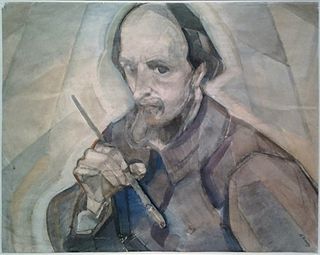 4
Herman Kruyder (1881–1935) was a Dutch painter.
4
Herman Kruyder (1881–1935) was a Dutch painter.
Vincent of Lérins
 4
Vincent of Lérins was a Gallic monk and author of early Christian writings. One example was the Commonitorium, c. 434, which offers guidance in the orthodox teaching of Christianity. Suspected of...
4
Vincent of Lérins was a Gallic monk and author of early Christian writings. One example was the Commonitorium, c. 434, which offers guidance in the orthodox teaching of Christianity. Suspected of...
René of Chalon
 4
René of Chalon, also known as Renatus of Chalon, was a Prince of Orange and stadtholder of Holland, Zeeland, Utrecht and Gelre.
4
René of Chalon, also known as Renatus of Chalon, was a Prince of Orange and stadtholder of Holland, Zeeland, Utrecht and Gelre.
Jan Willem Berix
 4
Jan Willem Berix, in het verzet Giel genoemd was een Nederlandse verzetsstrijder tijdens de Tweede Wereldoorlog.
4
Jan Willem Berix, in het verzet Giel genoemd was een Nederlandse verzetsstrijder tijdens de Tweede Wereldoorlog.
Boudewijn Büch
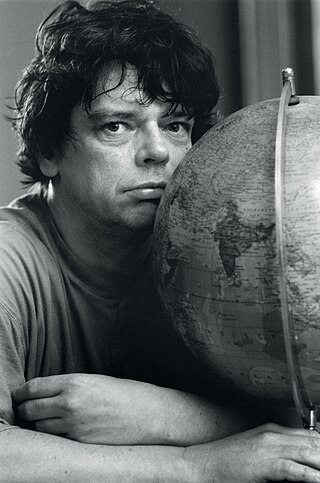 4
Boudewijn Maria Ignatius Büch was a Dutch writer, poet and television presenter.
4
Boudewijn Maria Ignatius Büch was a Dutch writer, poet and television presenter.
Lambert van der Burch
 3
Lambert van der Burch (1542–1617) was a clergyman and historian from the Habsburg Netherlands.
3
Lambert van der Burch (1542–1617) was a clergyman and historian from the Habsburg Netherlands.
Théophile de Bock
 3
Théophile Emile Achille de Bock was a Dutch painter belonging to the Hague School. Although many denigrate De Bock's work as too gray and too sketchy, Hague School champions love his work. Even Van...
3
Théophile Emile Achille de Bock was a Dutch painter belonging to the Hague School. Although many denigrate De Bock's work as too gray and too sketchy, Hague School champions love his work. Even Van...
Alexine Tinne
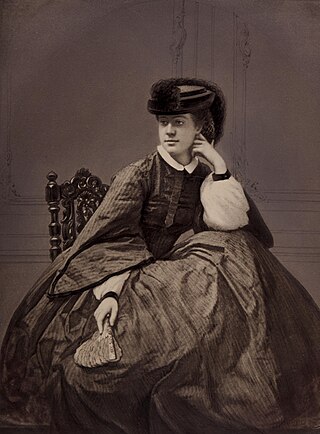 3
Alexandrine "Alexine" Pieternella Françoise Tinne was a Dutch explorer in Africa who was the first European woman to attempt to cross the Sahara. She was an early photographer.
3
Alexandrine "Alexine" Pieternella Françoise Tinne was a Dutch explorer in Africa who was the first European woman to attempt to cross the Sahara. She was an early photographer.
Anton de Kom
 3
Cornelis Gerhard Anton de Kom was a Surinamese resistance fighter and anti-colonialist author. He was arrested in Surinam and the protest against his arrest resulted in two deaths. De Kom was...
3
Cornelis Gerhard Anton de Kom was a Surinamese resistance fighter and anti-colonialist author. He was arrested in Surinam and the protest against his arrest resulted in two deaths. De Kom was...
Cornelis Schuyt
 3
Cornelis Floriszoon Schuyt was a Dutch organist and Renaissance composer.
3
Cornelis Floriszoon Schuyt was a Dutch organist and Renaissance composer.
George Washington
 3
George Washington was an American Founding Father, military officer, and politician who served as the first president of the United States from 1789 to 1797. Appointed by the Second Continental...
3
George Washington was an American Founding Father, military officer, and politician who served as the first president of the United States from 1789 to 1797. Appointed by the Second Continental...
Johan Thorn Prikker
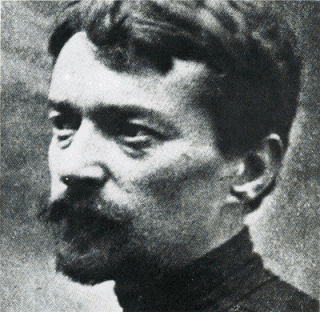 3
Johan Thorn Prikker was a Dutch artist who worked in Germany after 1904. His activities were very eclectic, including architecture, lithography, furniture, stained-glass windows, mosaics, tapestries...
3
Johan Thorn Prikker was a Dutch artist who worked in Germany after 1904. His activities were very eclectic, including architecture, lithography, furniture, stained-glass windows, mosaics, tapestries...
Peter the Great
 3
Peter I, commonly known as Peter the Great, was Tsar of all Russia from 1682, and the first Emperor of all Russia from 1721 until his death in 1725. He reigned jointly with his half-brother Ivan V...
3
Peter I, commonly known as Peter the Great, was Tsar of all Russia from 1682, and the first Emperor of all Russia from 1721 until his death in 1725. He reigned jointly with his half-brother Ivan V...
Anthony the Great
 3
Anthony the Great was a Christian monk from Egypt, revered since his death as a saint. He is distinguished from other saints named Anthony, such as Anthony of Padua, by various epithets: Anthony of...
3
Anthony the Great was a Christian monk from Egypt, revered since his death as a saint. He is distinguished from other saints named Anthony, such as Anthony of Padua, by various epithets: Anthony of...
Samuel Esmeijer
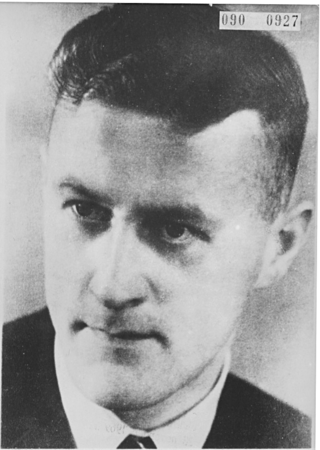 3
Samuel Esmeijer, was een Nederlandse verzetsstrijder tijdens de Tweede Wereldoorlog.
3
Samuel Esmeijer, was een Nederlandse verzetsstrijder tijdens de Tweede Wereldoorlog.
Amerigo Vespucci
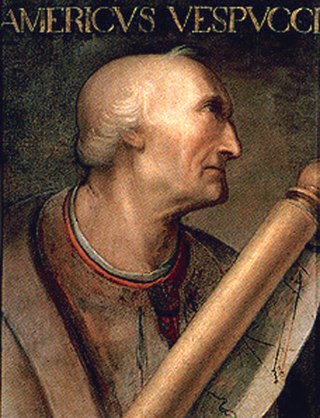 3
Amerigo Vespucci was an Italian explorer and navigator from the Republic of Florence, from whose name the term "America" is derived.
3
Amerigo Vespucci was an Italian explorer and navigator from the Republic of Florence, from whose name the term "America" is derived.
Catullus
 3
Gaius Valerius Catullus, known as Catullus, was a Latin neoteric poet of the late Roman Republic. His surviving works remain widely read due to their popularity as teaching tools and because of their...
3
Gaius Valerius Catullus, known as Catullus, was a Latin neoteric poet of the late Roman Republic. His surviving works remain widely read due to their popularity as teaching tools and because of their...
Emile Seipgens
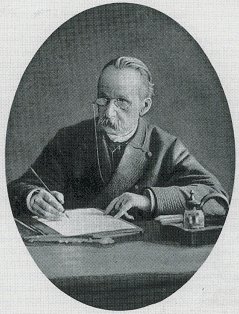 3
Emile Anton Hubert Seipgens was een Nederlandse schrijver van korte verhalen en toneelstukken. Doorgaans schreef hij over Limburg, de provincie waar hij opgroeide.
3
Emile Anton Hubert Seipgens was een Nederlandse schrijver van korte verhalen en toneelstukken. Doorgaans schreef hij over Limburg, de provincie waar hij opgroeide.
Zeno of Elea
 3
Zeno of Elea was a pre-Socratic Greek philosopher. He was a student of Parmenides and one of the Eleatics. Born in Elea, Zeno defended his instructor's belief in monism, the idea that only one single...
3
Zeno of Elea was a pre-Socratic Greek philosopher. He was a student of Parmenides and one of the Eleatics. Born in Elea, Zeno defended his instructor's belief in monism, the idea that only one single...
Odulf
 3
Odwulf of Evesham was a ninth century saint, monk and Frisian missionary.
3
Odwulf of Evesham was a ninth century saint, monk and Frisian missionary.
Arthur Schopenhauer
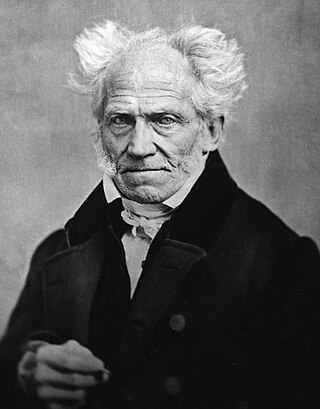 3
Arthur Schopenhauer was a German philosopher. He is known for his 1818 work The World as Will and Representation, which characterizes the phenomenal world as the manifestation of a blind and...
3
Arthur Schopenhauer was a German philosopher. He is known for his 1818 work The World as Will and Representation, which characterizes the phenomenal world as the manifestation of a blind and...
Gustave Van de Woestijne
 3
Gustave Van de Woestijne was a Belgian expressionist painter.
3
Gustave Van de Woestijne was a Belgian expressionist painter.
Gerhard Noodt
 3
Gerhard Noodt was a Dutch jurist, born in Nijmegen. Educated at Leiden, Utrecht, and Franeker, he became a professor of law at the Nijmegen and the Franeker. As a writer on jurisprudence he acquired...
3
Gerhard Noodt was a Dutch jurist, born in Nijmegen. Educated at Leiden, Utrecht, and Franeker, he became a professor of law at the Nijmegen and the Franeker. As a writer on jurisprudence he acquired...
Hendrik Mande
 3
Hendrik Mande was a Dutch mystical writer, an early member of the Brethren of the Common Life, and an Augustinian Canon.
3
Hendrik Mande was a Dutch mystical writer, an early member of the Brethren of the Common Life, and an Augustinian Canon.
Henri Vullinghs
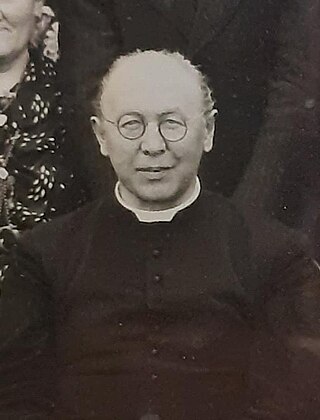 3
Henri Vullinghs was pastoor in Grashoek en Grubbenvorst in Limburg en Nederlands verzetsstrijder tijdens de Tweede Wereldoorlog. Hij was een van de grootste organisatoren van pilotenhulp en onderduik...
3
Henri Vullinghs was pastoor in Grashoek en Grubbenvorst in Limburg en Nederlands verzetsstrijder tijdens de Tweede Wereldoorlog. Hij was een van de grootste organisatoren van pilotenhulp en onderduik...
Thomas de Keyser
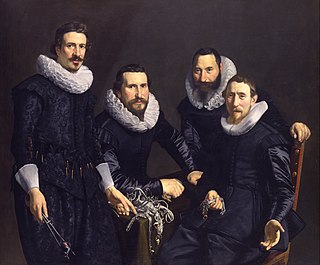 3
Thomas de Keyser was a Dutch portrait painter and a dealer in Belgium bluestone and stone mason. He was the most in-demand portrait painter in the Netherlands until the 1630s, when Rembrandt eclipsed...
3
Thomas de Keyser was a Dutch portrait painter and a dealer in Belgium bluestone and stone mason. He was the most in-demand portrait painter in the Netherlands until the 1630s, when Rembrandt eclipsed...
Lambertus Hortensius
 3
Lambertus Hortensius was een Nederlandse geschiedschrijver en humanist. Hij studeerde in Utrecht en aan de universiteit van Leuven. In 1527 kreeg hij de taak geschiedenisles te geven aan de...
3
Lambertus Hortensius was een Nederlandse geschiedschrijver en humanist. Hij studeerde in Utrecht en aan de universiteit van Leuven. In 1527 kreeg hij de taak geschiedenisles te geven aan de...
Dante Alighieri
 3
Dante Alighieri, most likely baptized Durante di Alighiero degli Alighieri and often referred to as Dante, was an Italian poet, writer, and philosopher. His Divine Comedy, originally called Comedìa...
3
Dante Alighieri, most likely baptized Durante di Alighiero degli Alighieri and often referred to as Dante, was an Italian poet, writer, and philosopher. His Divine Comedy, originally called Comedìa...
Countess Louise Henriette of Nassau
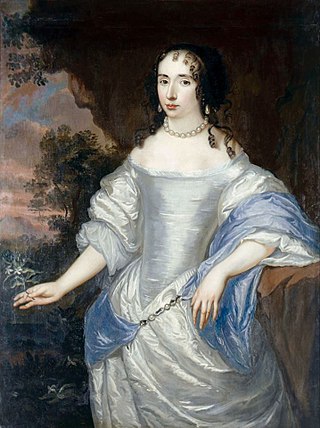 3
Louise Henriette of Nassau was a Countess of Nassau, granddaughter of William I, Prince of Orange, "William the Silent", and an Electress of Brandenburg.
3
Louise Henriette of Nassau was a Countess of Nassau, granddaughter of William I, Prince of Orange, "William the Silent", and an Electress of Brandenburg.
Alexandre Dumas
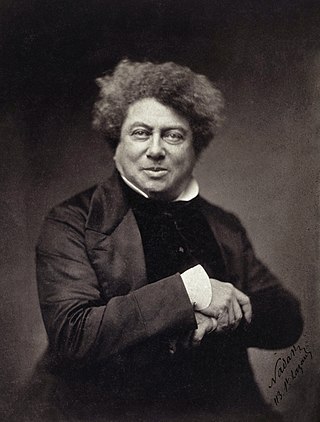 3
Alexandre Dumas, also known as Alexandre Dumas père, was a French novelist and playwright.
3
Alexandre Dumas, also known as Alexandre Dumas père, was a French novelist and playwright.
Jan Nieuwenhuyzen
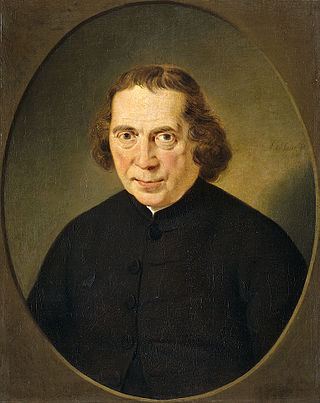 3
Jan Nieuwenhuijzen was a Dutch Mennonite teacher and minister.
3
Jan Nieuwenhuijzen was a Dutch Mennonite teacher and minister.
Herman Collenius
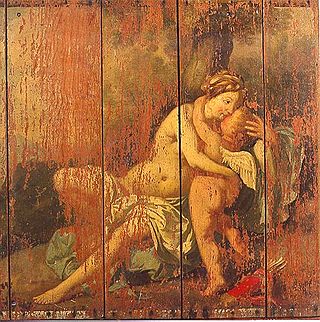 3
Herman Collenius was een Groninger portret- en historieschilder. Hij maakte portretten en doeken van historische gebeurtenissen en was daarnaast ook actief als interieurschilder. Zijn bekendste werk...
3
Herman Collenius was een Groninger portret- en historieschilder. Hij maakte portretten en doeken van historische gebeurtenissen en was daarnaast ook actief als interieurschilder. Zijn bekendste werk...
Theo Koomen
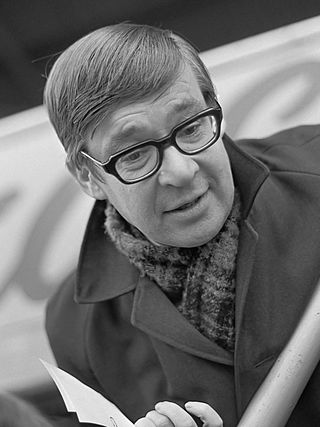 3
Theodorus Wilhelmus (Theo) Koomen was een Nederlands sportverslaggever.
3
Theodorus Wilhelmus (Theo) Koomen was een Nederlands sportverslaggever.
Joris Ivens
 3
Georg Henri Anton "Joris" Ivens was a Dutch documentary filmmaker. Among the notable films he directed or co-directed are A Tale of the Wind, The Spanish Earth, Rain, ...A Valparaiso, Misère au...
3
Georg Henri Anton "Joris" Ivens was a Dutch documentary filmmaker. Among the notable films he directed or co-directed are A Tale of the Wind, The Spanish Earth, Rain, ...A Valparaiso, Misère au...
David of Burgundy
 3
David of Burgundy was the bishop of Utrecht from 1456. The illegitimate son of Philip the Good, Duke of Burgundy, David was made bishop by his father in an attempt to enforce more centralised...
3
David of Burgundy was the bishop of Utrecht from 1456. The illegitimate son of Philip the Good, Duke of Burgundy, David was made bishop by his father in an attempt to enforce more centralised...
Vos de Wael
 3
De Wael is een geslacht van Vlaamse oorsprong waarvan leden sinds 1822 tot de Belgische adel behoren en waarvan een niet geadelde tak in 1933 en in 1984 werd opgenomen in het Nederland's Patriciaat.
3
De Wael is een geslacht van Vlaamse oorsprong waarvan leden sinds 1822 tot de Belgische adel behoren en waarvan een niet geadelde tak in 1933 en in 1984 werd opgenomen in het Nederland's Patriciaat.
Plechelm
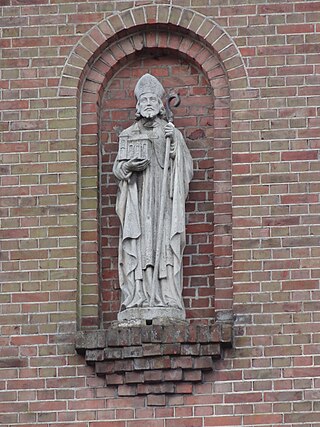 3
Plechelm, O.S.B., is honoured in both the Catholic Church and the Old Catholic Church as a patron saint of the Netherlands. He is also venerated as a saint in the Eastern Orthodox Church.
3
Plechelm, O.S.B., is honoured in both the Catholic Church and the Old Catholic Church as a patron saint of the Netherlands. He is also venerated as a saint in the Eastern Orthodox Church.
Gerrit Kastein
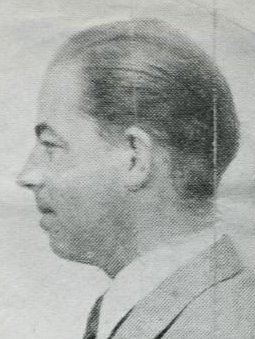 3
Dr. Gerrit Willem Kastein was a Dutch communist, neurologist and resistance fighter and leader during World War II.
3
Dr. Gerrit Willem Kastein was a Dutch communist, neurologist and resistance fighter and leader during World War II.
Willem Wilmink
 3
Willem Wilmink was a Dutch poet and writer. He was best known for the large number of songs he wrote for popular children programs and his accessible, straightforward poetry.
3
Willem Wilmink was a Dutch poet and writer. He was best known for the large number of songs he wrote for popular children programs and his accessible, straightforward poetry.
Han Stijkel
 3
Johan Aaldrik (Han) Stijkel was an academic and a Dutch Resistance activist.
3
Johan Aaldrik (Han) Stijkel was an academic and a Dutch Resistance activist.
Jan van Hout (stadssecretaris)
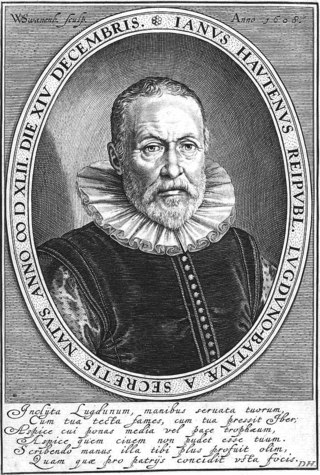 3
Jan van Hout was stadssecretaris van Leiden, secretaris van de universiteit, Nederlandstalig dichter en vernieuwer.
3
Jan van Hout was stadssecretaris van Leiden, secretaris van de universiteit, Nederlandstalig dichter en vernieuwer.
Anthonie van der Heim
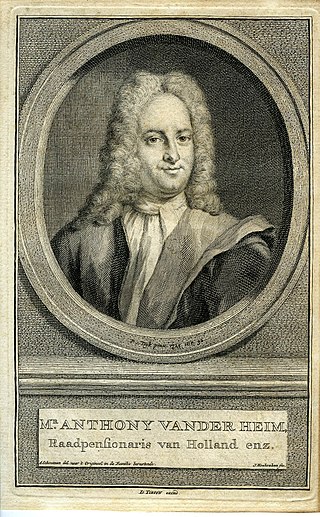 3
Anthonie van der Heim was Grand Pensionary of Holland from 4 April 1737 to 17 July 1746.
3
Anthonie van der Heim was Grand Pensionary of Holland from 4 April 1737 to 17 July 1746.
Charles de Gaulle
 3
Charles André Joseph Marie de Gaulle was a French army officer and statesman who led the Free French Forces against Nazi Germany in World War II and chaired the Provisional Government of the French...
3
Charles André Joseph Marie de Gaulle was a French army officer and statesman who led the Free French Forces against Nazi Germany in World War II and chaired the Provisional Government of the French...
Kurt Weill
 3
Kurt Julian Weill was a German-born American composer active from the 1920s in his native country, and in his later years in the United States. He was a leading composer for the stage who was best...
3
Kurt Julian Weill was a German-born American composer active from the 1920s in his native country, and in his later years in the United States. He was a leading composer for the stage who was best...
Arturo Toscanini
 3
Arturo Toscanini was an Italian conductor. He was one of the most acclaimed and influential musicians of the late 19th and early 20th century, renowned for his intensity, his perfectionism, his ear...
3
Arturo Toscanini was an Italian conductor. He was one of the most acclaimed and influential musicians of the late 19th and early 20th century, renowned for his intensity, his perfectionism, his ear...
Ada, Countess of Holland
 3
Ada was Countess regnant of Holland between 1203 and 1207, ruling jointly with her husband, Louis II of Loon. She was deposed and exiled by her paternal uncle, William I.
3
Ada was Countess regnant of Holland between 1203 and 1207, ruling jointly with her husband, Louis II of Loon. She was deposed and exiled by her paternal uncle, William I.
Maria van Reigersberch
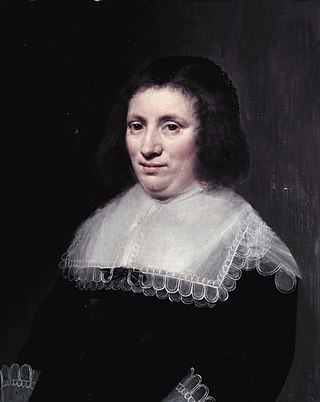 3
Maria van Reigersberch was the wife of Hugo Grotius, who helped him escape in 1621 from Loevestein Castle during his incarceration there after his 1619 trial.
3
Maria van Reigersberch was the wife of Hugo Grotius, who helped him escape in 1621 from Loevestein Castle during his incarceration there after his 1619 trial.
Pierre de Coubertin
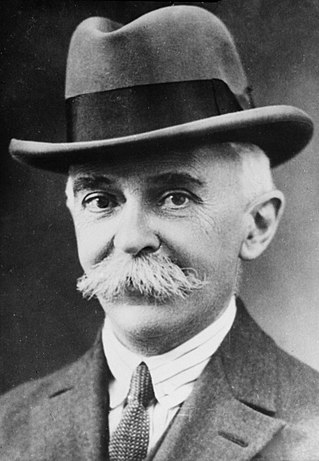 3
Charles Pierre de Frédy, Baron de Coubertin, also known as Pierre de Coubertin and Baron de Coubertin, was a French educator and historian, co-founder of the International Olympic Committee, and its...
3
Charles Pierre de Frédy, Baron de Coubertin, also known as Pierre de Coubertin and Baron de Coubertin, was a French educator and historian, co-founder of the International Olympic Committee, and its...
Helena, mother of Constantine I
 3
Flavia Julia Helena, also known as Helena of Constantinople and in Christianity as Saint Helena, was an Augusta of the Roman Empire and mother of Emperor Constantine the Great. She was born in the...
3
Flavia Julia Helena, also known as Helena of Constantinople and in Christianity as Saint Helena, was an Augusta of the Roman Empire and mother of Emperor Constantine the Great. She was born in the...
Pál Maléter
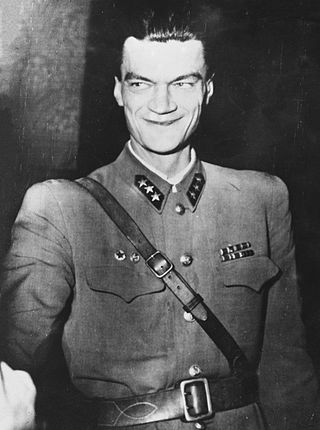 3
Pál Maléter was the military leader of the 1956 Hungarian Revolution.
3
Pál Maléter was the military leader of the 1956 Hungarian Revolution.
Schimmelpenninck family
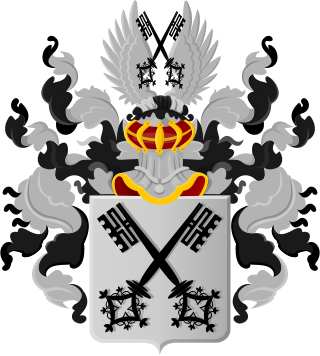 3
Schimmelpenninck is the name of the family belonging to the Dutch and German nobility, whose members played important political and military roles in the history of the Netherlands, Prussia and later...
3
Schimmelpenninck is the name of the family belonging to the Dutch and German nobility, whose members played important political and military roles in the history of the Netherlands, Prussia and later...
Adam Frans van der Meulen
 3
Adam Frans van der Meulen or Adam-François van der Meulen was a Flemish painter and draughtsman who was particularly known for his scenes of military campaigns and conquests. Van der Meulen also...
3
Adam Frans van der Meulen or Adam-François van der Meulen was a Flemish painter and draughtsman who was particularly known for his scenes of military campaigns and conquests. Van der Meulen also...
Gezina van der Molen
 3
Gezina Hermina Johanna van der Molen was a Dutch legal scholar and resistance fighter during the Second World War. From 1924 to 1929, she studied law at the Free University of Amsterdam — the first...
3
Gezina Hermina Johanna van der Molen was a Dutch legal scholar and resistance fighter during the Second World War. From 1924 to 1929, she studied law at the Free University of Amsterdam — the first...
Margaretha Roosenboom
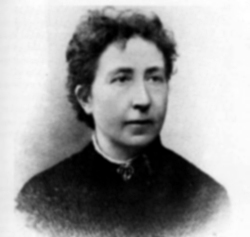 3
Margaretha Roosenboom, was a 19th-century Dutch flower painter.
3
Margaretha Roosenboom, was a 19th-century Dutch flower painter.
Van Haersolte
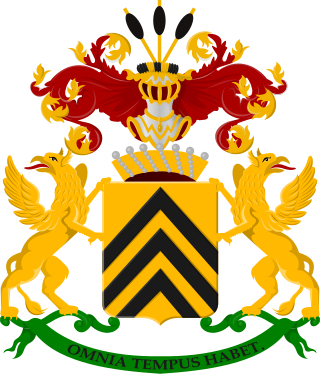 3
Van Haersolte is een oud adellijk geslacht uit Overijssel waarvan leden sinds 1814 behoren tot de Nederlandse adel van het koninkrijk.
3
Van Haersolte is een oud adellijk geslacht uit Overijssel waarvan leden sinds 1814 behoren tot de Nederlandse adel van het koninkrijk.
Jan III van Diest
 3
John or Jan van Diest served as Bishop of Utrecht from 1322 until his death in 1340.
3
John or Jan van Diest served as Bishop of Utrecht from 1322 until his death in 1340.
Laurens Janszoon Coster
 3
Laurens Janszoon Coster, or Laurens Jansz Koster, is the purported inventor of a printing press from Haarlem. He allegedly invented printing simultaneously with Johannes Gutenberg and was regarded by...
3
Laurens Janszoon Coster, or Laurens Jansz Koster, is the purported inventor of a printing press from Haarlem. He allegedly invented printing simultaneously with Johannes Gutenberg and was regarded by...
Rudolf Steiner
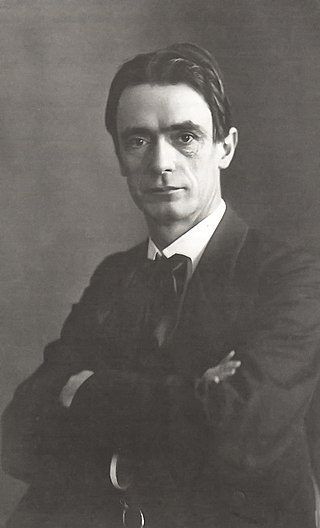 3
Rudolf Joseph Lorenz Steiner was an Austrian occultist, social reformer, architect, esotericist, and claimed clairvoyant. Steiner gained initial recognition at the end of the nineteenth century as a...
3
Rudolf Joseph Lorenz Steiner was an Austrian occultist, social reformer, architect, esotericist, and claimed clairvoyant. Steiner gained initial recognition at the end of the nineteenth century as a...
Van Raesfelt
 3
Van Raesfelt is een oud-adellijk geslacht uit Gemen waarvan een lid sinds 1814 tot de Nederlandse adel behoort en dat met hem in 1828 uitstierf.
3
Van Raesfelt is een oud-adellijk geslacht uit Gemen waarvan een lid sinds 1814 tot de Nederlandse adel behoort en dat met hem in 1828 uitstierf.
Eduard Verkade
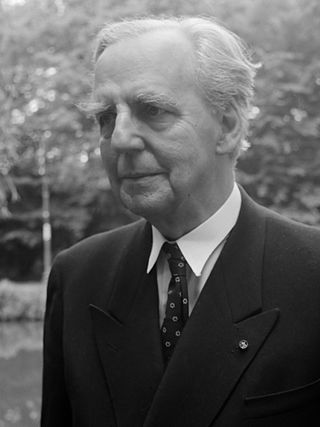 3
Eduard Rutger (Eduard) Verkade was een Nederlands toneelleider, acteur en regisseur.
3
Eduard Rutger (Eduard) Verkade was een Nederlands toneelleider, acteur en regisseur.
Terence
 3
Publius Terentius Afer, better known in English as Terence, was a playwright during the Roman Republic. He was the author of six comedies based on Greek originals by Menander or Apollodorus of...
3
Publius Terentius Afer, better known in English as Terence, was a playwright during the Roman Republic. He was the author of six comedies based on Greek originals by Menander or Apollodorus of...
Herodotus
 3
Herodotus was a Greek historian and geographer from the Greek city of Halicarnassus, part of the Persian Empire and a later citizen of Thurii in modern Calabria, Italy. He is known for having written...
3
Herodotus was a Greek historian and geographer from the Greek city of Halicarnassus, part of the Persian Empire and a later citizen of Thurii in modern Calabria, Italy. He is known for having written...
John the Baptist
 3
John the Baptist was a Jewish preacher active in the area of the Jordan River in the early 1st century AD. He is also known as Saint John the Forerunner in Eastern Orthodoxy, John the Immerser in...
3
John the Baptist was a Jewish preacher active in the area of the Jordan River in the early 1st century AD. He is also known as Saint John the Forerunner in Eastern Orthodoxy, John the Immerser in...
Heer Halewijn
 3
Heer Halewijn is a Dutch folk tale which survives in folk ballad. Although the first printed version of the song only appears in an anthology published in 1848, the ballad itself is first written...
3
Heer Halewijn is a Dutch folk tale which survives in folk ballad. Although the first printed version of the song only appears in an anthology published in 1848, the ballad itself is first written...
Gian Lorenzo Bernini
 3
Gian Lorenzo Bernini was an Italian sculptor and architect. While a major figure in the world of architecture, he was more prominently the leading sculptor of his age, credited with creating the...
3
Gian Lorenzo Bernini was an Italian sculptor and architect. While a major figure in the world of architecture, he was more prominently the leading sculptor of his age, credited with creating the...
Diogenes
 3
Diogenes, also known as Diogenes the Cynic or Diogenes of Sinope, was a Greek philosopher and one of the founders of Cynicism. He was born in Sinope, an Ionian colony on the Black Sea coast of...
3
Diogenes, also known as Diogenes the Cynic or Diogenes of Sinope, was a Greek philosopher and one of the founders of Cynicism. He was born in Sinope, an Ionian colony on the Black Sea coast of...
J. J. P. Oud
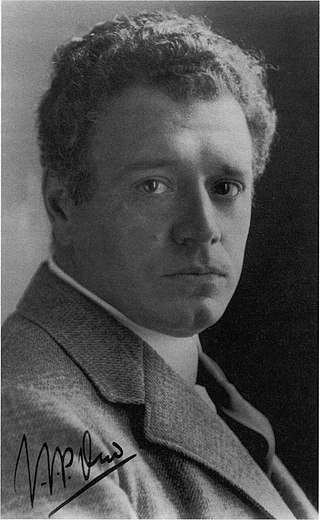 3
Jacobus Johannes Pieter Oud was a Dutch architect. His fame began as a follower of the De Stijl movement.
3
Jacobus Johannes Pieter Oud was a Dutch architect. His fame began as a follower of the De Stijl movement.
Johannes Bernardus van Loghem
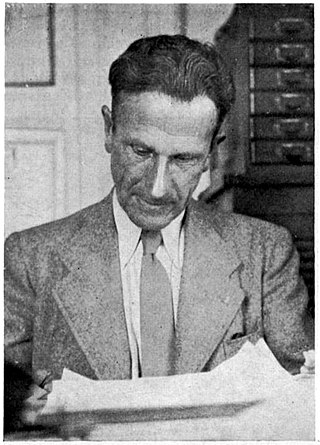 3
Johannes Bernardus (Han) van Loghem (1881–1940) was a Dutch architect, furniture designer and town planner.
3
Johannes Bernardus (Han) van Loghem (1881–1940) was a Dutch architect, furniture designer and town planner.
Hendrik Verhees
 3
Hendrik Verhees was een Nederlands politicus, architect, tekenaar, aquarellist, cartograaf en aannemer.
3
Hendrik Verhees was een Nederlands politicus, architect, tekenaar, aquarellist, cartograaf en aannemer.
M. C. Escher
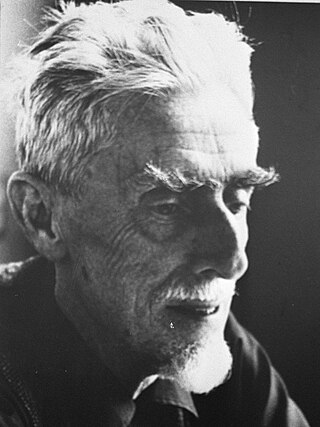 3
Maurits Cornelis Escher was a Dutch graphic artist who made woodcuts, lithographs, and mezzotints, many of which were inspired by mathematics.
Despite wide popular interest, for most of his life...
3
Maurits Cornelis Escher was a Dutch graphic artist who made woodcuts, lithographs, and mezzotints, many of which were inspired by mathematics.
Despite wide popular interest, for most of his life...
Paul Schuitema
 3
Geert Paul Hendrikus Schuitema was a Dutch graphic artist. He also designed furniture and expositions and worked as photographer, film director, and painter, and as a teacher of 'publicity design' at...
3
Geert Paul Hendrikus Schuitema was a Dutch graphic artist. He also designed furniture and expositions and worked as photographer, film director, and painter, and as a teacher of 'publicity design' at...
Toon Dupuis
 3
Antonius Stanislaus Nicolaas Ludovicus Dupuis was a Dutch sculptor and medallist of Belgian origin. He's the son of the sculptor Louis Dupuis (1842-1921).
3
Antonius Stanislaus Nicolaas Ludovicus Dupuis was a Dutch sculptor and medallist of Belgian origin. He's the son of the sculptor Louis Dupuis (1842-1921).
Fré Cohen
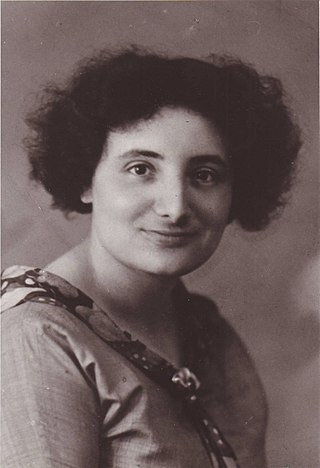 3
Frederika Sophia "Fré" Cohen was a Dutch artist and graphic designer.
3
Frederika Sophia "Fré" Cohen was a Dutch artist and graphic designer.
Van Asch van Wijck
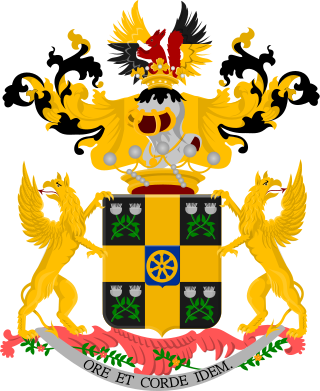 3
Van Asch van Wijck is een Nederlands geslacht waarvan leden sinds 1833 tot de Nederlandse adel behoren.
3
Van Asch van Wijck is een Nederlands geslacht waarvan leden sinds 1833 tot de Nederlandse adel behoren.
Calypso (mythology)
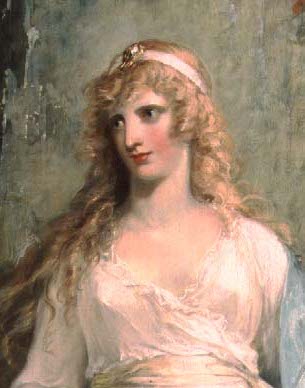 3
In Greek mythology, Calypso was a nymph who lived on the island of Ogygia, where, according to Homer's Odyssey, she detained Odysseus for seven years. She promised Odysseus immortality if he would...
3
In Greek mythology, Calypso was a nymph who lived on the island of Ogygia, where, according to Homer's Odyssey, she detained Odysseus for seven years. She promised Odysseus immortality if he would...
Georg Wilhelm Friedrich Hegel
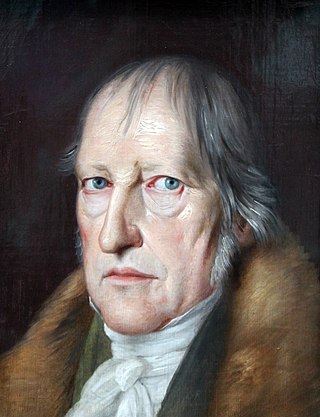 3
Georg Wilhelm Friedrich Hegel was a German philosopher and one of the most influential figures of German idealism and 19th-century philosophy. His influence extends across the entire range of...
3
Georg Wilhelm Friedrich Hegel was a German philosopher and one of the most influential figures of German idealism and 19th-century philosophy. His influence extends across the entire range of...
Ptolemy
 3
Claudius Ptolemy was an Alexandrian mathematician, astronomer, astrologer, geographer, and music theorist who wrote about a dozen scientific treatises, three of which were important to later...
3
Claudius Ptolemy was an Alexandrian mathematician, astronomer, astrologer, geographer, and music theorist who wrote about a dozen scientific treatises, three of which were important to later...
Joan Maetsuycker
 3
Joan Maetsuycker was the Governor of Zeylan during the Dutch period in Ceylon, and Governor-General of the Dutch East Indies from 1653 to 1678.
3
Joan Maetsuycker was the Governor of Zeylan during the Dutch period in Ceylon, and Governor-General of the Dutch East Indies from 1653 to 1678.
Isaac van Goudoever
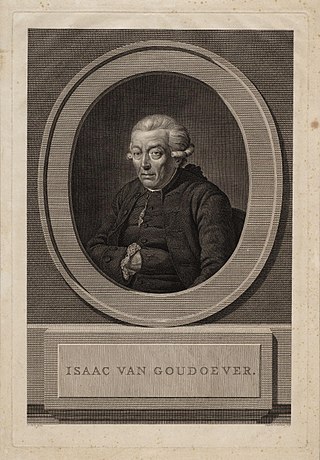 3
Isaac van Goudoever was a colonel of the Amsterdam schutterij who in April 1787 played a leading role in the conversion of the Amsterdam vroedschap to the cause of the Patriot faction in the...
3
Isaac van Goudoever was a colonel of the Amsterdam schutterij who in April 1787 played a leading role in the conversion of the Amsterdam vroedschap to the cause of the Patriot faction in the...
Josine Reuling
 3
Josine Reuling was the pen name of the Dutch writer, Gerardina Anna Reuling. Known for her psychological novels, her characters called into question conservative societal behaviors. Her novel Terug...
3
Josine Reuling was the pen name of the Dutch writer, Gerardina Anna Reuling. Known for her psychological novels, her characters called into question conservative societal behaviors. Her novel Terug...
Ietje Kooistra
 3
Ietje (Ytsje) Kooistra was directrice en pedagoge aan de Rijkskweekschool voor Onderwijzeressen. Ze was de dochter van Folkert Kooistra en Ymkjen Pieters Keuning.
3
Ietje (Ytsje) Kooistra was directrice en pedagoge aan de Rijkskweekschool voor Onderwijzeressen. Ze was de dochter van Folkert Kooistra en Ymkjen Pieters Keuning.
William of Nassau (1601–1627)
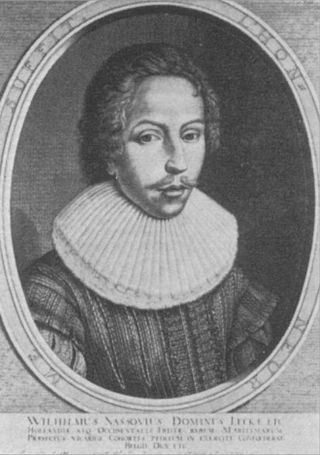 3
Willem van Nassau, Lord of De Lek was a Dutch soldier from 1620 until 1627. He was the illegitimate son of stadholder Maurice of Nassau, Prince of Orange and his mistress Margaretha van...
3
Willem van Nassau, Lord of De Lek was a Dutch soldier from 1620 until 1627. He was the illegitimate son of stadholder Maurice of Nassau, Prince of Orange and his mistress Margaretha van...
Anne, Princess Royal and Princess of Orange
 3
Anne, Princess Royal and Princess of Orange was the second child and eldest daughter of King George II of Great Britain and his consort Caroline of Ansbach. She was the wife of William IV, Prince of...
3
Anne, Princess Royal and Princess of Orange was the second child and eldest daughter of King George II of Great Britain and his consort Caroline of Ansbach. She was the wife of William IV, Prince of...
Zacharias Janssen
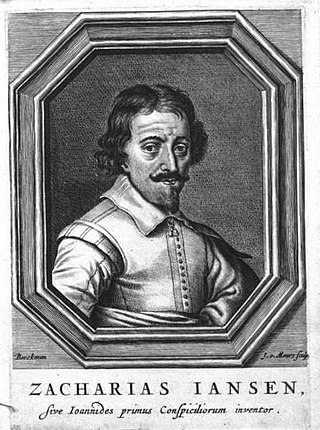 3
Zacharias Janssen; also Zacharias Jansen or Sacharias Jansen; 1585 – pre-1632) was a Dutch spectacle-maker who lived most of his life in Middelburg. He is associated with the invention of the first...
3
Zacharias Janssen; also Zacharias Jansen or Sacharias Jansen; 1585 – pre-1632) was a Dutch spectacle-maker who lived most of his life in Middelburg. He is associated with the invention of the first...
Johannes de Beke
 3
Johannes de Beke was a 14th-century Dutch priest and historian. He was probably a monk of Egmond Abbey. In 1346, he wrote a Latin Chronographia of the County of Holland and Diocese of Utrecht from...
3
Johannes de Beke was a 14th-century Dutch priest and historian. He was probably a monk of Egmond Abbey. In 1346, he wrote a Latin Chronographia of the County of Holland and Diocese of Utrecht from...
Samuel Pieter Bentinck
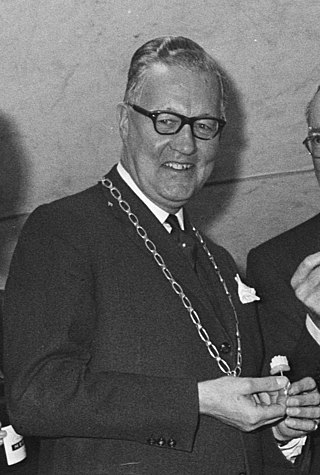 3
Samuel Pieter (Sam) baron Bentinck was een Nederlands burgemeester.
3
Samuel Pieter (Sam) baron Bentinck was een Nederlands burgemeester.
Peter Paludanus
 3
Peter Paludanus was a French theologian and archbishop.
3
Peter Paludanus was a French theologian and archbishop.
Josephus Jacobus van Geen
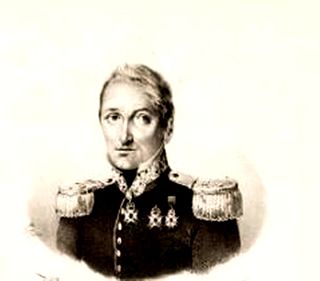 3
Josephus Jacobus baron van Geen was een Nederlands generaal, ridder en officier in het Legioen van Eer en ridder en commandeur in de Militaire Willems-Orde.
3
Josephus Jacobus baron van Geen was een Nederlands generaal, ridder en officier in het Legioen van Eer en ridder en commandeur in de Militaire Willems-Orde.
Jan Houtman
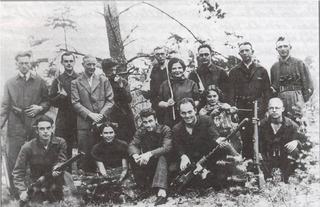 3
Jan Houtman was een Nederlands verzetsstrijder, die tijdens de Tweede Wereldoorlog werd vermoord.
3
Jan Houtman was een Nederlands verzetsstrijder, die tijdens de Tweede Wereldoorlog werd vermoord.
Ferdinand Hart Nibbrig
 3
Ferdinand Hart Nibbrig was a Dutch painter and Theosophist. He was one of the first artists who introduced luminism to the Netherlands. Hart was his mother's maiden name. He adopted it in 1884 when...
3
Ferdinand Hart Nibbrig was a Dutch painter and Theosophist. He was one of the first artists who introduced luminism to the Netherlands. Hart was his mother's maiden name. He adopted it in 1884 when...
Cornelis Pijnacker Hordijk
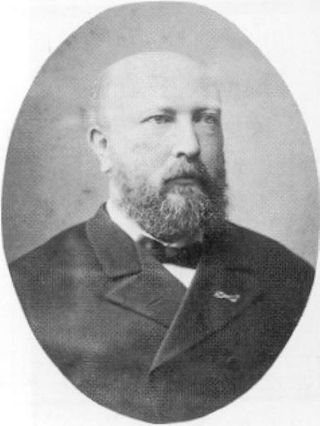 3
Cornelis Pijnacker Hordijk was a Dutch jurist and politician. He was Governor-General of the Dutch East Indies from 1888 until 1893.
3
Cornelis Pijnacker Hordijk was a Dutch jurist and politician. He was Governor-General of the Dutch East Indies from 1888 until 1893.
Wim van Est
 3
Willem "Wim" van Est was a Dutch racing cyclist. He is best known for being the first Dutch cyclist to wear the yellow jersey as leader of the general classification in the Tour de France of 1951,...
3
Willem "Wim" van Est was a Dutch racing cyclist. He is best known for being the first Dutch cyclist to wear the yellow jersey as leader of the general classification in the Tour de France of 1951,...
Mari Andriessen
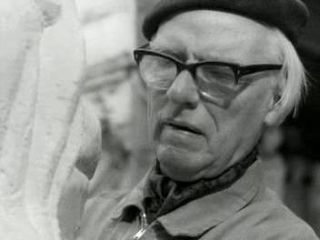 3
Mari Silvester Andriessen was a Dutch sculptor, best known for his work memorializing victims of the Holocaust. Born and died in Haarlem, Andriessen is buried at the RK Begraafplaats Sint Adelberts...
3
Mari Silvester Andriessen was a Dutch sculptor, best known for his work memorializing victims of the Holocaust. Born and died in Haarlem, Andriessen is buried at the RK Begraafplaats Sint Adelberts...
Anna van Gogh-Kaulbach
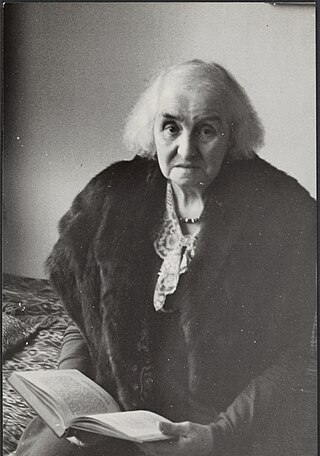 3
Anna Maria van Gogh-Kaulbach was a Dutch writer and translator. She published a number of works under the pen names Wilhelmina Reynbach, Erna, Mac Peter and Wata.
3
Anna Maria van Gogh-Kaulbach was a Dutch writer and translator. She published a number of works under the pen names Wilhelmina Reynbach, Erna, Mac Peter and Wata.
Jacob Geel
 3
Jacob Geel was a Dutch scholar, critic and librarian.
3
Jacob Geel was a Dutch scholar, critic and librarian.
Frederik Ruysch
 3
Frederik Ruysch was a Dutch botanist and anatomist. He is known for developing techniques for preserving anatomical specimens, which he used to create dioramas or scenes incorporating human parts....
3
Frederik Ruysch was a Dutch botanist and anatomist. He is known for developing techniques for preserving anatomical specimens, which he used to create dioramas or scenes incorporating human parts....
Johann Weyer
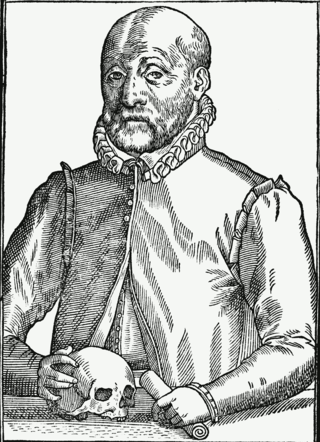 3
Johannes Wier was a Dutch physician who was among the first to publish a thorough treatise against the trials and persecution of people accused of witchcraft. His most influential work is De...
3
Johannes Wier was a Dutch physician who was among the first to publish a thorough treatise against the trials and persecution of people accused of witchcraft. His most influential work is De...
Heinrich Böll
 3
Heinrich Theodor Böll was a German writer. Considered one of Germany's foremost post-World War II writers, Böll is a recipient of the Georg Büchner Prize (1967) and the Nobel Prize for Literature...
3
Heinrich Theodor Böll was a German writer. Considered one of Germany's foremost post-World War II writers, Böll is a recipient of the Georg Büchner Prize (1967) and the Nobel Prize for Literature...
Alex Verrijn Stuart
 3
Adolf Alexander Verrijn Stuart was a Dutch computer scientist, and the first Professor in computer science at the Leiden University from 1969 tot 1991.
3
Adolf Alexander Verrijn Stuart was a Dutch computer scientist, and the first Professor in computer science at the Leiden University from 1969 tot 1991.
Gerardus Johannes Berenschot
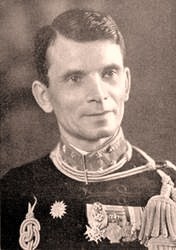 3
Lieutenant General Gerardus Johannes Berenschot was Commander-in-Chief of the Koninklijk Nederlands Indisch Leger. An Indo – as Eurasians of Indonesian and Dutch descent – Berenschot was the son of a...
3
Lieutenant General Gerardus Johannes Berenschot was Commander-in-Chief of the Koninklijk Nederlands Indisch Leger. An Indo – as Eurasians of Indonesian and Dutch descent – Berenschot was the son of a...
Lucie van Dam van Isselt
 3
Lucie van Dam van Isselt or Lucie Dam van Isselt later Lucie Ekker was a Dutch artist known for her floral paintings.
3
Lucie van Dam van Isselt or Lucie Dam van Isselt later Lucie Ekker was a Dutch artist known for her floral paintings.
Herman Robbers
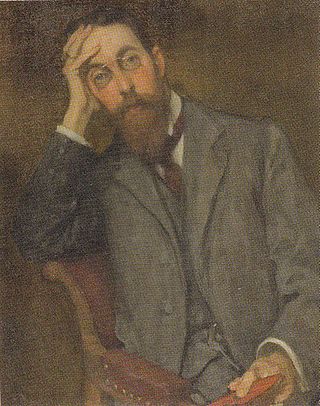 3
Herman Johan Robbers was een Nederlands romanschrijver, dichter en tijdschriftredacteur. Op 18 juli 1893 huwde hij te Amsterdam met Wilhelmina Henriëtte Liernur
3
Herman Johan Robbers was een Nederlands romanschrijver, dichter en tijdschriftredacteur. Op 18 juli 1893 huwde hij te Amsterdam met Wilhelmina Henriëtte Liernur
Johan Braakensiek
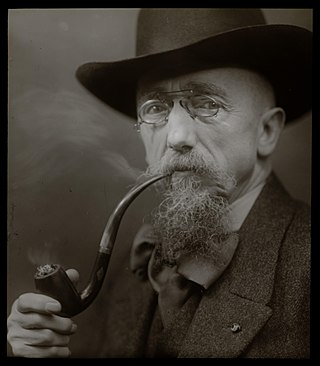 3
Johan Coenraad Braakensiek was a Dutch painter, illustrator, caricaturist and political cartoonist. He is the grandfather of Jan van Oort.
3
Johan Coenraad Braakensiek was a Dutch painter, illustrator, caricaturist and political cartoonist. He is the grandfather of Jan van Oort.
Johannes Graadt van Roggen
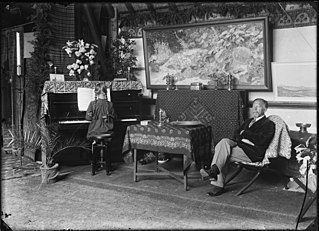 3
Johannes Mattheus Graadt van Roggen was een Nederlands tekenaar, schilder en grafisch kunstenaar. Hij wordt beschouwd als een voorloper van de Bergense School. Hij wordt ook wel Job Graadt van Roggen...
3
Johannes Mattheus Graadt van Roggen was een Nederlands tekenaar, schilder en grafisch kunstenaar. Hij wordt beschouwd als een voorloper van de Bergense School. Hij wordt ook wel Job Graadt van Roggen...
Harry Mulisch
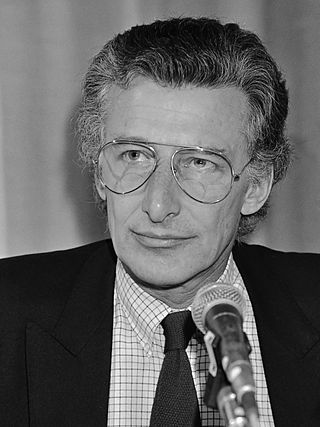 3
Harry Kurt Victor Mulisch was a Dutch writer. He wrote more than 80 novels, plays, essays, poems, and philosophical reflections. Mulisch's works have been translated into 38 languages so far.
3
Harry Kurt Victor Mulisch was a Dutch writer. He wrote more than 80 novels, plays, essays, poems, and philosophical reflections. Mulisch's works have been translated into 38 languages so far.
Hugo Claus
 3
Hugo Maurice Julien Claus was a leading Belgian author who published under his own name as well as various pseudonyms. Claus' literary contributions spanned the genres of drama, novels, and poetry;...
3
Hugo Maurice Julien Claus was a leading Belgian author who published under his own name as well as various pseudonyms. Claus' literary contributions spanned the genres of drama, novels, and poetry;...
Jan Goeverneur
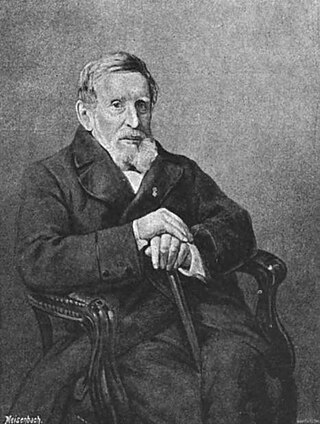 3
Jan Jacob Antonie Goeverneur, in de Groninger Volksalmanak van 1890 Jan Jacob Anthony genoemd was een Nederlandse letterkundige, dichter, (kinderboeken)schrijver en vertaler.
3
Jan Jacob Antonie Goeverneur, in de Groninger Volksalmanak van 1890 Jan Jacob Anthony genoemd was een Nederlandse letterkundige, dichter, (kinderboeken)schrijver en vertaler.
Nico van Suchtelen
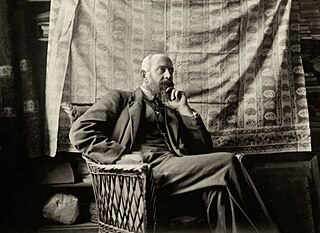 3
Nicolaas Johannes (Nico) van Suchtelen was een Nederlands schrijver, dichter, vertaler en uitgever.
3
Nicolaas Johannes (Nico) van Suchtelen was een Nederlands schrijver, dichter, vertaler en uitgever.
Jan van Hoof
 3
Jan Jozef Lambert van Hoof was a member of the Dutch resistance in World War II, who cooperated with Allied Forces during Operation Market Garden. He is credited with disabling explosives placed by...
3
Jan Jozef Lambert van Hoof was a member of the Dutch resistance in World War II, who cooperated with Allied Forces during Operation Market Garden. He is credited with disabling explosives placed by...
Girolamo Frescobaldi
 3
Girolamo Alessandro Frescobaldi was an Italian composer and virtuoso keyboard player. Born in the Duchy of Ferrara, he was one of the most important composers of keyboard music in the late...
3
Girolamo Alessandro Frescobaldi was an Italian composer and virtuoso keyboard player. Born in the Duchy of Ferrara, he was one of the most important composers of keyboard music in the late...
Evert Cornelis
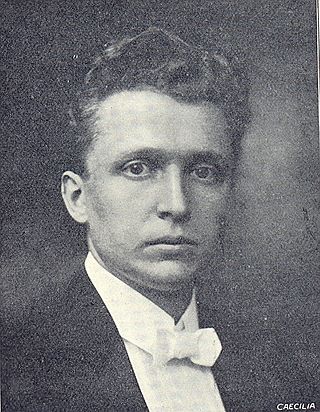 3
Evert Cornelis was een Nederlandse dirigent en organist.
3
Evert Cornelis was een Nederlandse dirigent en organist.
Hendrika van Tussenbroek
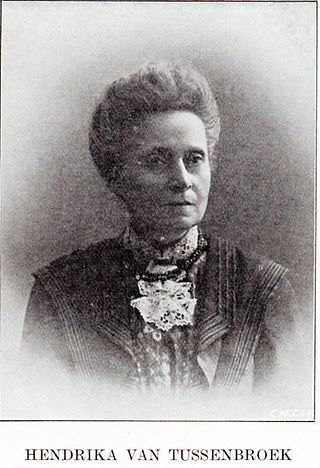 3
Hendrika Cornelia van Tussenbroek was a Dutch composer and teacher who is best remembered today for her music for children.
3
Hendrika Cornelia van Tussenbroek was a Dutch composer and teacher who is best remembered today for her music for children.
Victor Hugo
 3
Victor-Marie Hugo, vicomte Hugo, sometimes nicknamed the Ocean Man, was a French Romantic writer and politician. During a literary career that spanned more than sixty years, he wrote in a variety of...
3
Victor-Marie Hugo, vicomte Hugo, sometimes nicknamed the Ocean Man, was a French Romantic writer and politician. During a literary career that spanned more than sixty years, he wrote in a variety of...
William, Duke of Jülich-Cleves-Berg
 3
William of Jülich-Cleves-Berge was a Duke of Jülich-Cleves-Berg (1539–1592).
William was born in and died in Düsseldorf. He was the only son of John III, Duke of Jülich-Cleves-Berg, and Maria,...
3
William of Jülich-Cleves-Berge was a Duke of Jülich-Cleves-Berg (1539–1592).
William was born in and died in Düsseldorf. He was the only son of John III, Duke of Jülich-Cleves-Berg, and Maria,...
Willy den Ouden
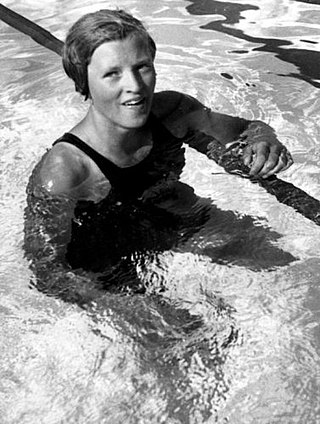 3
Willemijntje den Ouden was a competitive swimmer from the Netherlands, who held the 100-meter freestyle world record for nearly 23 years, from 1933 to 1956.
3
Willemijntje den Ouden was a competitive swimmer from the Netherlands, who held the 100-meter freestyle world record for nearly 23 years, from 1933 to 1956.
Cornelis Anthony Fannius Scholten
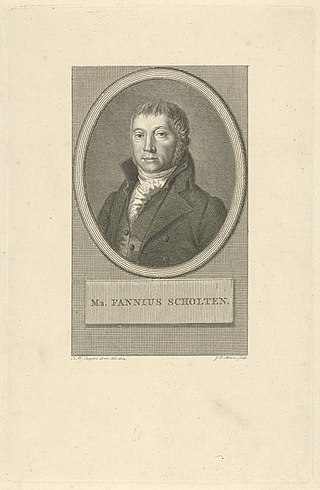 3
Cornelis Anthony Fannius Scholten was een advocaat en politicus in Den Haag.
3
Cornelis Anthony Fannius Scholten was een advocaat en politicus in Den Haag.
George Orwell
 3
Eric Arthur Blair was an English novelist, poet, essayist, journalist, and critic who wrote under the pen name of George Orwell. His work is characterised by lucid prose, social criticism, opposition...
3
Eric Arthur Blair was an English novelist, poet, essayist, journalist, and critic who wrote under the pen name of George Orwell. His work is characterised by lucid prose, social criticism, opposition...
Jan Mens
 3
Jan Mens was een Nederlandse schrijver.
3
Jan Mens was een Nederlandse schrijver.
Roald Dahl
 3
Roald Dahl was a British author of popular children's literature and short stories, a poet, screenwriter and a wartime fighter ace. His books have sold more than 300 million copies worldwide. Dahl...
3
Roald Dahl was a British author of popular children's literature and short stories, a poet, screenwriter and a wartime fighter ace. His books have sold more than 300 million copies worldwide. Dahl...
Wessel Couzijn
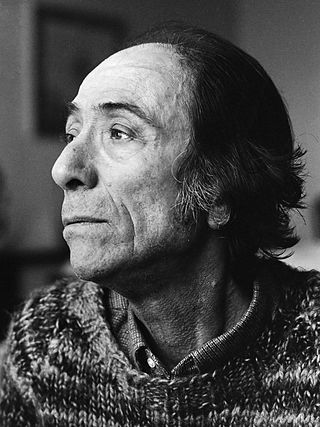 3
Wessel Couzijn was een Nederlandse expressionistisch beeldhouwer. Hij heeft zich tijdens zijn carrière met vele vormen van kunst beziggehouden; van schilderen en tekenen tot beeldhouwen.
3
Wessel Couzijn was een Nederlandse expressionistisch beeldhouwer. Hij heeft zich tijdens zijn carrière met vele vormen van kunst beziggehouden; van schilderen en tekenen tot beeldhouwen.
Bob Marley
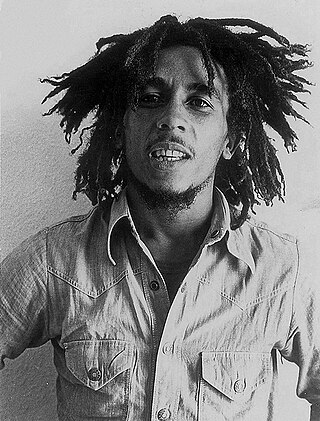 3
Robert Nesta Marley was a Jamaican reggae singer, guitarist, and songwriter. Considered one of the pioneers of the genre, Marley fused elements of reggae, ska, and rocksteady in his music and was...
3
Robert Nesta Marley was a Jamaican reggae singer, guitarist, and songwriter. Considered one of the pioneers of the genre, Marley fused elements of reggae, ska, and rocksteady in his music and was...
Jane Austen
 3
Jane Austen was an English novelist known primarily for her six novels, which implicitly interpret, critique, and comment upon the British landed gentry at the end of the 18th century. Austen's plots...
3
Jane Austen was an English novelist known primarily for her six novels, which implicitly interpret, critique, and comment upon the British landed gentry at the end of the 18th century. Austen's plots...
Jan Hilgers
 3
Johan Willem Emile Louis Hilgers, more commonly known as Jan Hilgers or John Hilgers, was an Indo (Eurasian) aviator and one of the leading pioneers of Dutch aviation. He was the first Dutch pilot to...
3
Johan Willem Emile Louis Hilgers, more commonly known as Jan Hilgers or John Hilgers, was an Indo (Eurasian) aviator and one of the leading pioneers of Dutch aviation. He was the first Dutch pilot to...
Orlando di Lasso
 3
Orlando di Lasso was a composer of the late Renaissance. The chief representative of the mature polyphonic style in the Franco-Flemish school, Lassus stands with William Byrd, Giovanni Pierluigi da...
3
Orlando di Lasso was a composer of the late Renaissance. The chief representative of the mature polyphonic style in the Franco-Flemish school, Lassus stands with William Byrd, Giovanni Pierluigi da...
Nicolaes Tulp
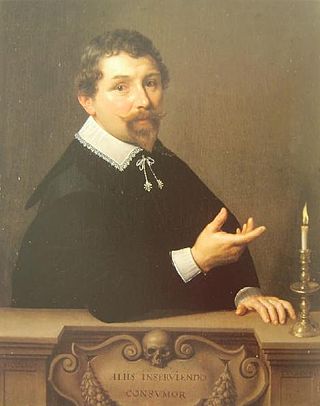 3
Nicolaes Tulp was a Dutch surgeon and mayor of Amsterdam. Tulp was well known for his upstanding moral character and as the subject of Rembrandt's famous painting The Anatomy Lesson of Dr. Nicolaes...
3
Nicolaes Tulp was a Dutch surgeon and mayor of Amsterdam. Tulp was well known for his upstanding moral character and as the subject of Rembrandt's famous painting The Anatomy Lesson of Dr. Nicolaes...
Michael Ophovius
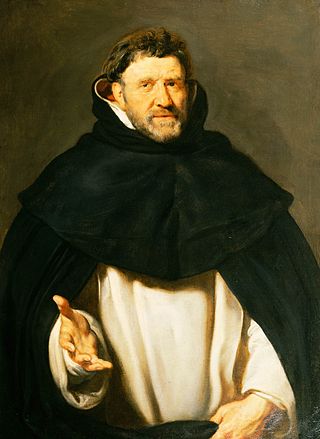 3
Michael van Ophoven O.P., ook Michael Ophovius genaamd, was een Nederlands geestelijke en een bisschop van de Rooms-Katholieke Kerk.
3
Michael van Ophoven O.P., ook Michael Ophovius genaamd, was een Nederlands geestelijke en een bisschop van de Rooms-Katholieke Kerk.
Arnulf I, Count of Flanders
 3
Arnulf I, called "the Great", was the first Count of Flanders.
3
Arnulf I, called "the Great", was the first Count of Flanders.
The Four Sons of Aymon
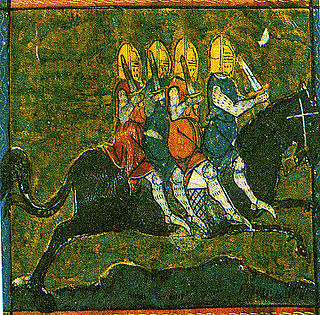 3
The Four Sons of Aymon, sometimes also referred to as Renaud de Montauban is a medieval tale spun around the four sons of Duke Aymon: the knight Renaud de Montauban, his brothers Guichard, Allard and...
3
The Four Sons of Aymon, sometimes also referred to as Renaud de Montauban is a medieval tale spun around the four sons of Duke Aymon: the knight Renaud de Montauban, his brothers Guichard, Allard and...
Pieter Paulus
 3
Pieter Paulus was a Dutch jurist, fiscal (prosecutor) of the Admiralty of the Maze and politician. He was one of the ideologues of the Dutch Patriot movement and is considered by many Dutch as the...
3
Pieter Paulus was a Dutch jurist, fiscal (prosecutor) of the Admiralty of the Maze and politician. He was one of the ideologues of the Dutch Patriot movement and is considered by many Dutch as the...
Joachimus Pieter Fockema Andreae
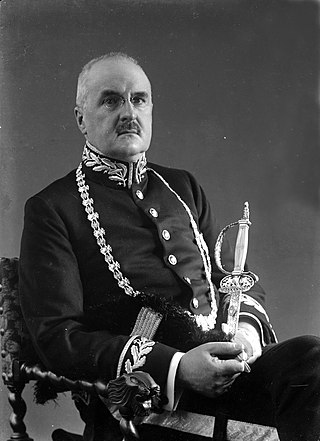 3
Joachimus Pieter Fockema Andreae was burgemeester van Utrecht en commissaris van de Koningin in Groningen.
3
Joachimus Pieter Fockema Andreae was burgemeester van Utrecht en commissaris van de Koningin in Groningen.
Nicholas Pieck
 3
Nicholas Pieck, O.F.M., "Nicolaas" or "Claes Pieck" in Dutch, was a Franciscan friar who was one of a group of Catholic clergy and lay brothers, the Martyrs of Gorkum, who were executed for refusal...
3
Nicholas Pieck, O.F.M., "Nicolaas" or "Claes Pieck" in Dutch, was a Franciscan friar who was one of a group of Catholic clergy and lay brothers, the Martyrs of Gorkum, who were executed for refusal...
Gerard van Spaendonck
 3
Gerard van Spaendonck was a Dutch painter.
3
Gerard van Spaendonck was a Dutch painter.
Lucas Gassel
 3
Lucas Gassel or Lucas van Gassel was a Flemish Renaissance painter and draughtsman known for his landscapes. He helped further develop and modernize the landscape tradition in Flanders. He also...
3
Lucas Gassel or Lucas van Gassel was a Flemish Renaissance painter and draughtsman known for his landscapes. He helped further develop and modernize the landscape tradition in Flanders. He also...
Saint Apollonia
 3
Saint Apollonia was one of a group of virgin martyrs who suffered in Alexandria during a local uprising against the Christians prior to the persecution of Decius. According to church tradition, her...
3
Saint Apollonia was one of a group of virgin martyrs who suffered in Alexandria during a local uprising against the Christians prior to the persecution of Decius. According to church tradition, her...
Helena Mercier
 3
Helena Mercier (1839–1910) was a Dutch social-liberal feminist, a social reformer, a writer, and one of the founders of the idea of social work in the Netherlands.
3
Helena Mercier (1839–1910) was a Dutch social-liberal feminist, a social reformer, a writer, and one of the founders of the idea of social work in the Netherlands.
Earl Van Dorn
 3
Earl Van Dorn was an American major-general who started his military career as a United States Army officer and became famous for successfully leading a defense of a Native American settlement from...
3
Earl Van Dorn was an American major-general who started his military career as a United States Army officer and became famous for successfully leading a defense of a Native American settlement from...
Rudyard Kipling
 3
Joseph Rudyard Kipling was an English novelist, short-story writer, poet, and journalist. He was born in British India, which inspired much of his work.
3
Joseph Rudyard Kipling was an English novelist, short-story writer, poet, and journalist. He was born in British India, which inspired much of his work.
Arminius
 3
Arminius was a chieftain of the Germanic Cherusci tribe who is best known for commanding an alliance of Germanic tribes at the Battle of the Teutoburg Forest in AD 9, in which three Roman legions...
3
Arminius was a chieftain of the Germanic Cherusci tribe who is best known for commanding an alliance of Germanic tribes at the Battle of the Teutoburg Forest in AD 9, in which three Roman legions...
Anna van Ewsum
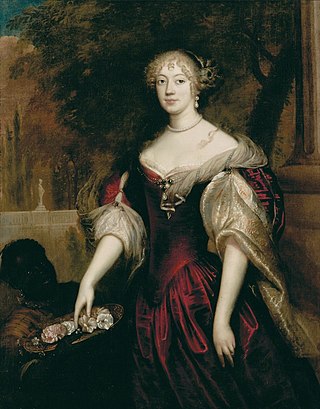 3
Anna van Ewsum was a rich Dutch noblewoman.
3
Anna van Ewsum was a rich Dutch noblewoman.
Bessie Smith
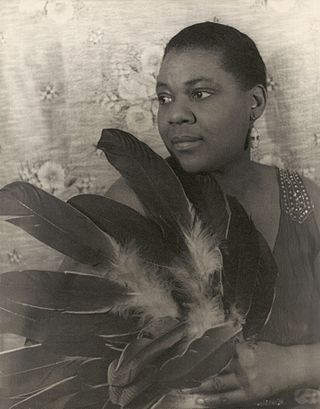 3
Bessie Smith was an African-American blues singer widely renowned during the Jazz Age. Nicknamed the "Empress of the Blues", she was the most popular female blues singer of the 1930s. Inducted into...
3
Bessie Smith was an African-American blues singer widely renowned during the Jazz Age. Nicknamed the "Empress of the Blues", she was the most popular female blues singer of the 1930s. Inducted into...
Miles Davis
 3
Miles Dewey Davis III was an American jazz trumpeter, bandleader, and composer. He is among the most influential and acclaimed figures in the history of jazz and 20th-century music. Davis adopted a...
3
Miles Dewey Davis III was an American jazz trumpeter, bandleader, and composer. He is among the most influential and acclaimed figures in the history of jazz and 20th-century music. Davis adopted a...
Henric Piccardt
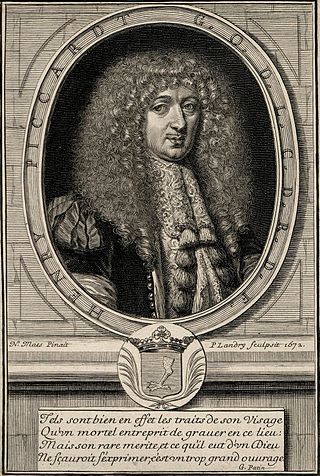 3
Henric Piccardt was an ambitious Dutch lawyer who made good at the court of young king Louis XIV of France in Paris where he became a published poet in French. Returning to the Netherlands, he rose...
3
Henric Piccardt was an ambitious Dutch lawyer who made good at the court of young king Louis XIV of France in Paris where he became a published poet in French. Returning to the Netherlands, he rose...
Galen
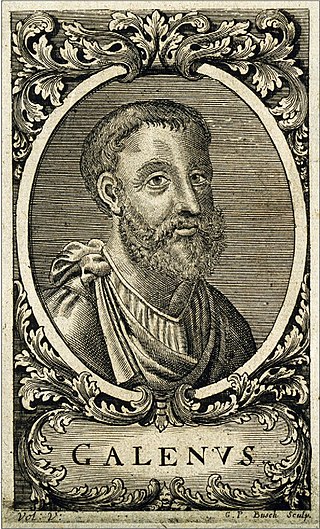 3
Aelius Galenus or Claudius Galenus, often anglicized as Galen or Galen of Pergamon, was a Roman and Greek physician, surgeon, and philosopher. Considered to be one of the most accomplished of all...
3
Aelius Galenus or Claudius Galenus, often anglicized as Galen or Galen of Pergamon, was a Roman and Greek physician, surgeon, and philosopher. Considered to be one of the most accomplished of all...
Carel Gerretson
 3
Doctor Frederik Carel Gerretson was a Dutch writer, essayist, historian, and politician.
3
Doctor Frederik Carel Gerretson was a Dutch writer, essayist, historian, and politician.
Martin Van Buren
 3
Martin Van Buren was an American lawyer, diplomat, and statesman who served as the eighth president of the United States from 1837 to 1841. A primary founder of the Democratic Party, he served as New...
3
Martin Van Buren was an American lawyer, diplomat, and statesman who served as the eighth president of the United States from 1837 to 1841. A primary founder of the Democratic Party, he served as New...
Simon Hoogenboom
 3
Simon Hoogenboom was een Nederlands politicus van de ARP.
3
Simon Hoogenboom was een Nederlands politicus van de ARP.
Nicolaas III van Putten
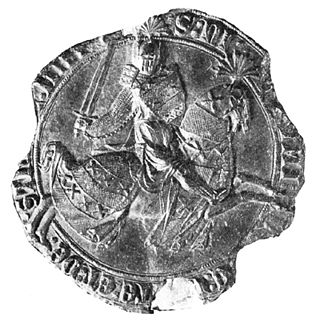 3
Nicolaas III van Putten was heer van Putten, veldheer van Holland (1299-1304) en het Sticht (1311). Hij komt ook wel voor als: Nikolaes, Nicolaus, Nicolaes, Clais, Claes, Clais, Niclays of Niclayse,...
3
Nicolaas III van Putten was heer van Putten, veldheer van Holland (1299-1304) en het Sticht (1311). Hij komt ook wel voor als: Nikolaes, Nicolaus, Nicolaes, Clais, Claes, Clais, Niclays of Niclayse,...
Jacob van Gaasbeek
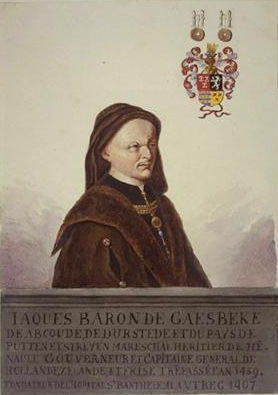 3
Jacob van Gaesbeek ook genaamd Jacob van Gaesbeke/Gaesbeeck en Jacob van Abcoude was heer (baron) van Gaasbeek, Abcoude, Putten, Strijen en Coelhorst. Tevens was hij stadhouder van Holland,...
3
Jacob van Gaesbeek ook genaamd Jacob van Gaesbeke/Gaesbeeck en Jacob van Abcoude was heer (baron) van Gaasbeek, Abcoude, Putten, Strijen en Coelhorst. Tevens was hij stadhouder van Holland,...
Erik the Red
 3
Erik Thorvaldsson, known as Erik the Red, was a Norse explorer, described in medieval and Icelandic saga sources as having founded the first European settlement in Greenland. Erik most likely earned...
3
Erik Thorvaldsson, known as Erik the Red, was a Norse explorer, described in medieval and Icelandic saga sources as having founded the first European settlement in Greenland. Erik most likely earned...
Francisco Pizarro
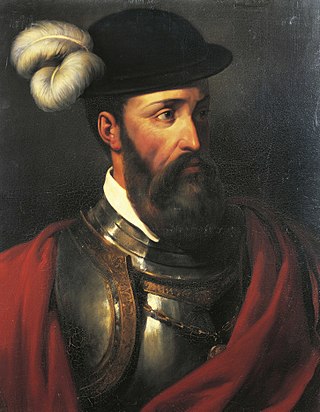 3
Francisco Pizarro, Marquess of the Atabillos was a Spanish conquistador, best known for his expeditions that led to the Spanish conquest of the Inca Empire.
3
Francisco Pizarro, Marquess of the Atabillos was a Spanish conquistador, best known for his expeditions that led to the Spanish conquest of the Inca Empire.
Bartolomeu Dias
 3
Bartolomeu Dias was a Portuguese mariner and explorer. In 1488, he became the first European navigator to round the southern tip of Africa and to demonstrate that the most effective southward route...
3
Bartolomeu Dias was a Portuguese mariner and explorer. In 1488, he became the first European navigator to round the southern tip of Africa and to demonstrate that the most effective southward route...
Godfried Schalcken
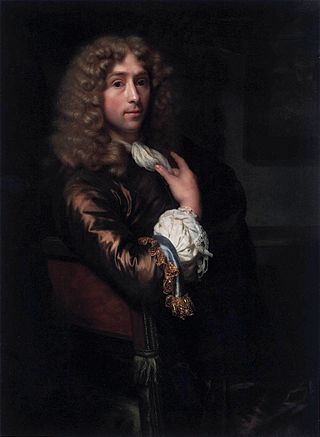 3
Godfried Schalcken was a Dutch artist who specialized in genre paintings and portraits. Schalcken was noted for his night scenes and mastery in reproducing the effect of candlelight. He painted in...
3
Godfried Schalcken was a Dutch artist who specialized in genre paintings and portraits. Schalcken was noted for his night scenes and mastery in reproducing the effect of candlelight. He painted in...
Lawrence Alma-Tadema
 3
Sir Lawrence Alma-Tadema was a Dutch painter who later settled in the United Kingdom, becoming the last officially recognised denizen in 1873. Born in Dronryp, the Netherlands, and trained at the...
3
Sir Lawrence Alma-Tadema was a Dutch painter who later settled in the United Kingdom, becoming the last officially recognised denizen in 1873. Born in Dronryp, the Netherlands, and trained at the...
Coba Pulskens
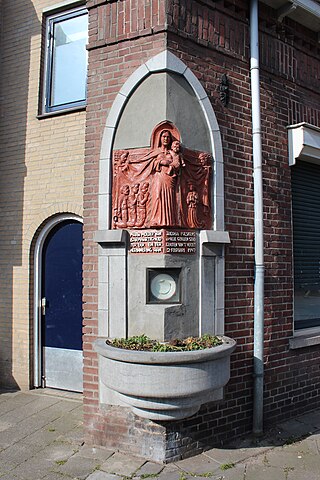 3
Jacoba Maria (Coba) Pulskens,, was een Tilburgse verzetsstrijder. Ze bood in de Tweede Wereldoorlog onderdak aan onderduikers: aan Joden, verzetslieden en piloten. Pulskens werd op 9 juli 1944 door...
3
Jacoba Maria (Coba) Pulskens,, was een Tilburgse verzetsstrijder. Ze bood in de Tweede Wereldoorlog onderdak aan onderduikers: aan Joden, verzetslieden en piloten. Pulskens werd op 9 juli 1944 door...
Emanuel de Witte
 3
Emanuel de Witte (1617–1692) was a Dutch perspective painter. In contrast to Pieter Jansz Saenredam, who emphasized architectural accuracy, De Witte was more concerned with the atmosphere of his...
3
Emanuel de Witte (1617–1692) was a Dutch perspective painter. In contrast to Pieter Jansz Saenredam, who emphasized architectural accuracy, De Witte was more concerned with the atmosphere of his...
Pierre-Auguste Renoir
 3
Pierre-Auguste Renoir was a French artist who was a leading painter in the development of the Impressionist style. As a celebrator of beauty and especially feminine sensuality, it has been said that...
3
Pierre-Auguste Renoir was a French artist who was a leading painter in the development of the Impressionist style. As a celebrator of beauty and especially feminine sensuality, it has been said that...
Salvador Dalí
 3
Salvador Domingo Felipe Jacinto Dalí i Domènech, Marquess of Dalí of Púbol, known as Salvador Dalí, was a Spanish surrealist artist renowned for his technical skill, precise draftsmanship, and the...
3
Salvador Domingo Felipe Jacinto Dalí i Domènech, Marquess of Dalí of Púbol, known as Salvador Dalí, was a Spanish surrealist artist renowned for his technical skill, precise draftsmanship, and the...
Pieter Aertsen
 3
Pieter Aertsen, called Lange Piet because of his height, was a Dutch painter in the style of Northern Mannerism. He is credited with the invention of the monumental genre scene, which combines still...
3
Pieter Aertsen, called Lange Piet because of his height, was a Dutch painter in the style of Northern Mannerism. He is credited with the invention of the monumental genre scene, which combines still...
Joos van Cleve
 3
Joos van Cleve was a leading painter active in Antwerp from his arrival there around 1511 until his death in 1540 or 1541. Within Dutch and Flemish Renaissance painting, he combines the traditional...
3
Joos van Cleve was a leading painter active in Antwerp from his arrival there around 1511 until his death in 1540 or 1541. Within Dutch and Flemish Renaissance painting, he combines the traditional...
Willem van Enckevoirt
 3
William of Enckevoirt, also spelled as Enckenvoirt was a Dutch Cardinal, bishop of Tortosa from 1524 to 1524, and bishop of Utrecht from 1529 to 1534.
3
William of Enckevoirt, also spelled as Enckenvoirt was a Dutch Cardinal, bishop of Tortosa from 1524 to 1524, and bishop of Utrecht from 1529 to 1534.
Van Coeverden
 3
Van Coevorden is one of the oldest aristocratic families in the Netherlands.
3
Van Coevorden is one of the oldest aristocratic families in the Netherlands.
Piet Wolters
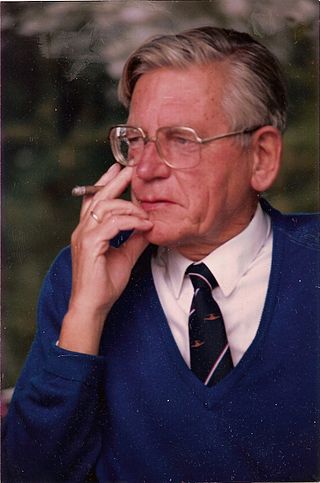 3
Pieter Abel Wolters was een Nederlands burgemeester.
3
Pieter Abel Wolters was een Nederlands burgemeester.
Willem Sluyter
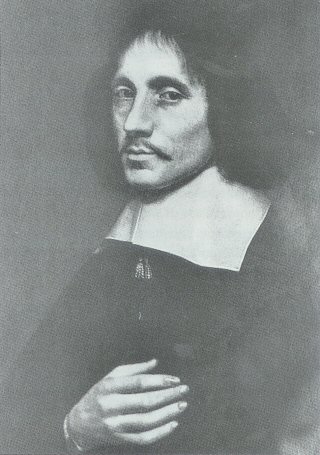 3
Willem Sluyter was een Nederlandse predikant en dichter.
3
Willem Sluyter was een Nederlandse predikant en dichter.
Gerard III van Heemskerk
 3
Gerard (III) van Heemskerk, Lord of Heemskerk was a leader of the Cod Alliance during the opening phases of the Hook and Cod wars
3
Gerard (III) van Heemskerk, Lord of Heemskerk was a leader of the Cod Alliance during the opening phases of the Hook and Cod wars
Simon van der Stel
 3
Simon van der Stel was the first Governor of the Dutch Cape Colony (1691), the settlement at the Cape of Good Hope. He was interested in botany, establishing vineyards Groot and Klein Constantia, and...
3
Simon van der Stel was the first Governor of the Dutch Cape Colony (1691), the settlement at the Cape of Good Hope. He was interested in botany, establishing vineyards Groot and Klein Constantia, and...
Jan Gossaert
 3
Jan Gossaert was a French-speaking painter from the Low Countries also known as Jan Mabuse or Jennyn van Hennegouwe (Hainaut), as he called himself when he matriculated in the Guild of Saint Luke, at...
3
Jan Gossaert was a French-speaking painter from the Low Countries also known as Jan Mabuse or Jennyn van Hennegouwe (Hainaut), as he called himself when he matriculated in the Guild of Saint Luke, at...
Cornelis Kruseman
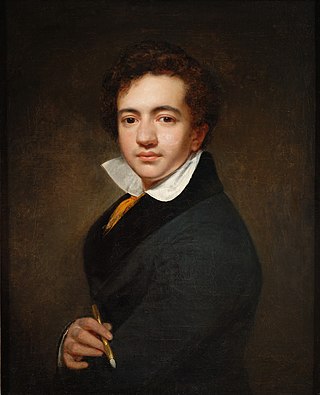 3
Cornelis Kruseman was a Dutch painter, draughtsman, etcher, lithographer, silhouettist, paper-cut artist, and art collector. His works included portraits, biblical scenes, and depictions of Italian...
3
Cornelis Kruseman was a Dutch painter, draughtsman, etcher, lithographer, silhouettist, paper-cut artist, and art collector. His works included portraits, biblical scenes, and depictions of Italian...
Henry de Nassau, Lord Overkirk
 3
Henry, Count of Nassau, Lord of Overkirk was a Dutch military general and second cousin of King William III of England. He would come to play a prominent role in the wars against Louis XIV of France,...
3
Henry, Count of Nassau, Lord of Overkirk was a Dutch military general and second cousin of King William III of England. He would come to play a prominent role in the wars against Louis XIV of France,...
Lotte Stam-Beese
 3
Charlotte Ida Anna "Lotte" Stam-Beese was a German-Dutch architect, photographer and urban planner who helped with the reconstruction of Rotterdam after World War II.
3
Charlotte Ida Anna "Lotte" Stam-Beese was a German-Dutch architect, photographer and urban planner who helped with the reconstruction of Rotterdam after World War II.
Lucretia Wilhelmina van Merken
 3
Lucretia Wilhelmina van Merken was a Dutch poet and playwright. Born in Amsterdam, she began writing occasional poetry and in her early twenties had published her first tragedy. Influenced by the...
3
Lucretia Wilhelmina van Merken was a Dutch poet and playwright. Born in Amsterdam, she began writing occasional poetry and in her early twenties had published her first tragedy. Influenced by the...
Maria Dermoût
 3
Maria Dermoût was an Indo-European novelist, considered one of the greats of Dutch literature and as such an important proponent of Dutch Indies literature. In December 1958 Time magazine praised the...
3
Maria Dermoût was an Indo-European novelist, considered one of the greats of Dutch literature and as such an important proponent of Dutch Indies literature. In December 1958 Time magazine praised the...
Wilhelmina Bladergroen
 3
Wilhelmina Johanna Bladergroen was een Nederlands hoogleraar in de orthopedagogiek.
3
Wilhelmina Johanna Bladergroen was een Nederlands hoogleraar in de orthopedagogiek.
Not found.
 3
3
Sigrid Undset
 3
Sigrid Undset was a Danish-born Norwegian novelist. She was awarded the Nobel Prize for Literature in 1928.
3
Sigrid Undset was a Danish-born Norwegian novelist. She was awarded the Nobel Prize for Literature in 1928.
Jan Altink
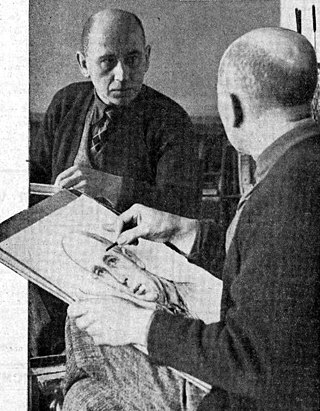 3
Jan Altink was a Dutch expressionist painter and cofounder of De Ploeg.
3
Jan Altink was a Dutch expressionist painter and cofounder of De Ploeg.
J.A.R. Bosma
 3
Jan Antonie Reinders Bosma (Ruinerwold, 20 december 1872 - Assen, 23 december 1948 was een Nederlands burgemeester.
3
Jan Antonie Reinders Bosma (Ruinerwold, 20 december 1872 - Assen, 23 december 1948 was een Nederlands burgemeester.
Trajan
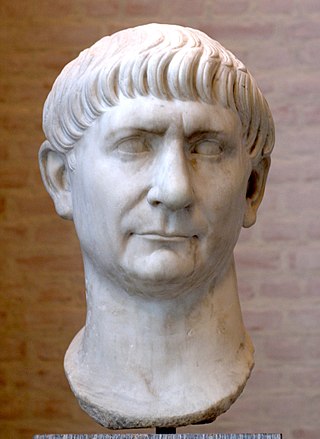 3
Trajan was a Roman emperor from AD 98 to 117, the second of the Five Good Emperors of the Nerva–Antonine dynasty. He was a philanthropic ruler and a successful soldier-emperor who led the Roman...
3
Trajan was a Roman emperor from AD 98 to 117, the second of the Five Good Emperors of the Nerva–Antonine dynasty. He was a philanthropic ruler and a successful soldier-emperor who led the Roman...
Godfrey the Hunchback
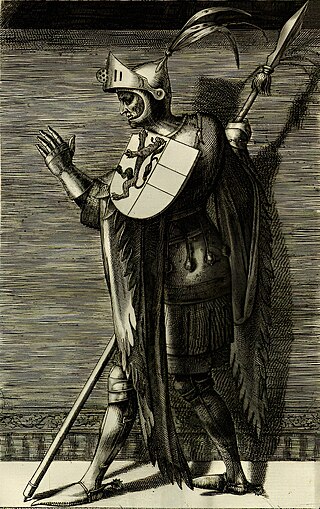 3
Godfrey IV, known as the Hunchback, was Duke of Lower Lorraine from 1069 until his death in 1076, succeeding his father Godfrey the Bearded.
3
Godfrey IV, known as the Hunchback, was Duke of Lower Lorraine from 1069 until his death in 1076, succeeding his father Godfrey the Bearded.
Albert Luthuli
 3
Albert John Luthuli was a South African anti-apartheid activist, traditional leader, and politician who served as the President-General of the African National Congress from 1952 until his death in...
3
Albert John Luthuli was a South African anti-apartheid activist, traditional leader, and politician who served as the President-General of the African National Congress from 1952 until his death in...
Willem Hubert Pijls
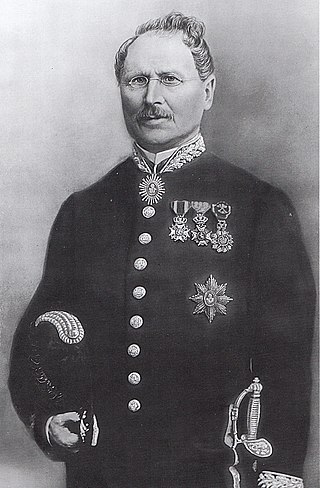 3
Willem Hubert Pijls was een Nederlandse ondernemer, politicus en bestuurder. Hij was onder meer burgemeester van Maastricht, lid van de Eerste en Tweede Kamer, voorzitter van de Kamer van Koophandel...
3
Willem Hubert Pijls was een Nederlandse ondernemer, politicus en bestuurder. Hij was onder meer burgemeester van Maastricht, lid van de Eerste en Tweede Kamer, voorzitter van de Kamer van Koophandel...
Jan Mostaert
 3
Jan Mostaert was a Dutch Renaissance painter who is known mainly for his religious subjects and portraits. One of his most famous creations was the Landscape with an Episode from the Conquest of...
3
Jan Mostaert was a Dutch Renaissance painter who is known mainly for his religious subjects and portraits. One of his most famous creations was the Landscape with an Episode from the Conquest of...
Jacobus Joännes van Deinse
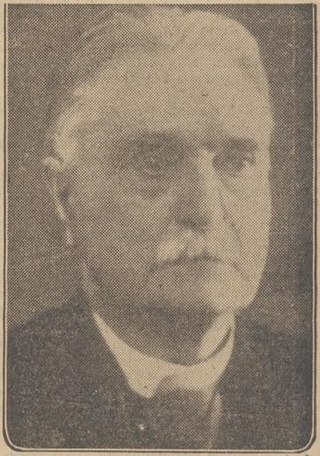 3
Jacobus Joännes van Deinse wordt wel de primus inter pares genoemd onder de Twentse regionalisten van voor de Tweede Wereldoorlog vanwege zijn onderzoek en publicaties maar vooral vanwege de vele...
3
Jacobus Joännes van Deinse wordt wel de primus inter pares genoemd onder de Twentse regionalisten van voor de Tweede Wereldoorlog vanwege zijn onderzoek en publicaties maar vooral vanwege de vele...
Charles-Augustin de Coulomb
 3
Charles-Augustin de Coulomb was a French officer, engineer, and physicist. He is best known as the eponymous discoverer of what is now called Coulomb's law, the description of the electrostatic force...
3
Charles-Augustin de Coulomb was a French officer, engineer, and physicist. He is best known as the eponymous discoverer of what is now called Coulomb's law, the description of the electrostatic force...
Lyndon B. Johnson
 3
Lyndon Baines Johnson, often referred to by his initials LBJ, was an American politician who served as the 36th president of the United States from 1963 to 1969. He became president after the...
3
Lyndon Baines Johnson, often referred to by his initials LBJ, was an American politician who served as the 36th president of the United States from 1963 to 1969. He became president after the...
Abraham Lincoln
 3
Abraham Lincoln was an American lawyer, politician, and statesman, who served as the 16th president of the United States, from 1861 until his assassination in 1865. Lincoln led the United States...
3
Abraham Lincoln was an American lawyer, politician, and statesman, who served as the 16th president of the United States, from 1861 until his assassination in 1865. Lincoln led the United States...
Kornelis ter Laan
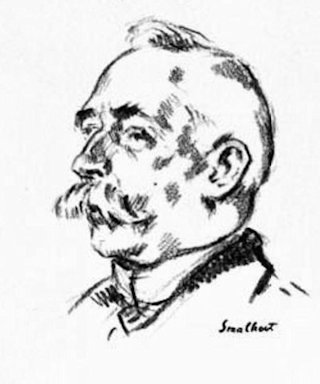 3
Kornelis ter Laan, also referred to as Kees ter Laan and Klaas ter Laan, was a Dutch politician and linguist.
He published as K. ter Laan.
3
Kornelis ter Laan, also referred to as Kees ter Laan and Klaas ter Laan, was a Dutch politician and linguist.
He published as K. ter Laan.
Robert Baelde
 3
Robert Baelde was een Nederlands jurist en maatschappelijk werker die als gijzelaar werd gefusilleerd.
3
Robert Baelde was een Nederlands jurist en maatschappelijk werker die als gijzelaar werd gefusilleerd.
Lamoral, Count of Egmont
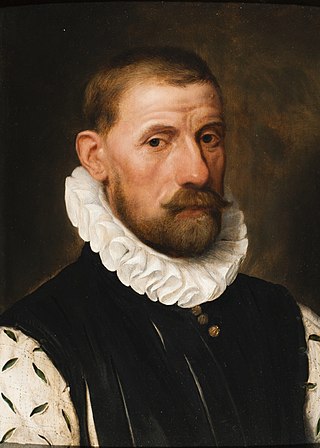 3
Lamoral, Count of Egmont, Prince of Gavere was a general and statesman in the Spanish Netherlands just before the start of the Eighty Years' War, whose execution helped spark the national uprising...
3
Lamoral, Count of Egmont, Prince of Gavere was a general and statesman in the Spanish Netherlands just before the start of the Eighty Years' War, whose execution helped spark the national uprising...
Willem van Konijnenburg
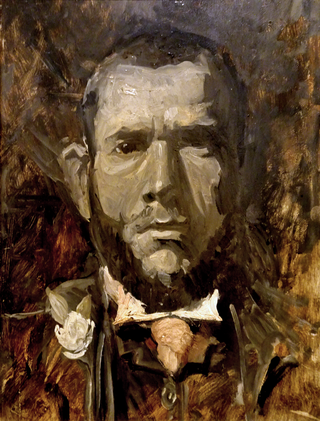 3
Willem Adriaan van Konijnenburg was een Nederlands beeldend kunstenaar. Hij behoorde tijdens het interbellum (1919-1939) samen met Jan Toorop en Jan Sluijters tot de nationale boegbeelden van de...
3
Willem Adriaan van Konijnenburg was een Nederlands beeldend kunstenaar. Hij behoorde tijdens het interbellum (1919-1939) samen met Jan Toorop en Jan Sluijters tot de nationale boegbeelden van de...
Lorenzo Perosi
 3
Monsignor Lorenzo Perosi was an Italian composer of sacred music and the only member of the Giovane Scuola who did not write opera. In the late 1890s, while he was still only in his twenties, Perosi...
3
Monsignor Lorenzo Perosi was an Italian composer of sacred music and the only member of the Giovane Scuola who did not write opera. In the late 1890s, while he was still only in his twenties, Perosi...
Altiero Spinelli
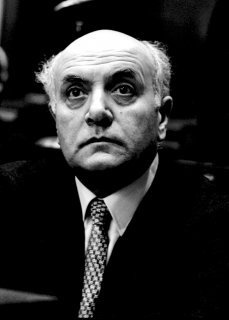 3
Altiero Spinelli was an Italian communist politician, political theorist and European federalist, referred to as one of the founding fathers of the European Union. A communist and militant...
3
Altiero Spinelli was an Italian communist politician, political theorist and European federalist, referred to as one of the founding fathers of the European Union. A communist and militant...
Adonis
 3
In Greek mythology, Adonis was the mortal lover of the goddesses Aphrodite and Persephone, who was famous for having achieved immortality. He was widely considered to be the ideal of male beauty in...
3
In Greek mythology, Adonis was the mortal lover of the goddesses Aphrodite and Persephone, who was famous for having achieved immortality. He was widely considered to be the ideal of male beauty in...
Jan Naarding
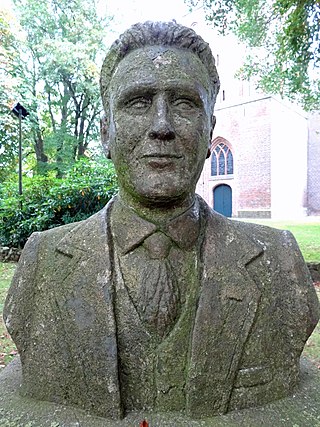 3
Jan Naarding was een neerlandicus. Daarnaast was hij een Drentse schrijver en taalkundige.
3
Jan Naarding was een neerlandicus. Daarnaast was hij een Drentse schrijver en taalkundige.
Erroll Garner
 3
Erroll Louis Garner was an American jazz pianist and composer known for his swing playing and ballads. His instrumental ballad "Misty", his best-known composition, has become a jazz standard. It was...
3
Erroll Louis Garner was an American jazz pianist and composer known for his swing playing and ballads. His instrumental ballad "Misty", his best-known composition, has become a jazz standard. It was...
John of Beaumont
 3
John of Beaumont was a younger brother of count William III of Holland. He was the lord of Beaumont and count of Soissons by virtue of his marriage.
3
John of Beaumont was a younger brother of count William III of Holland. He was the lord of Beaumont and count of Soissons by virtue of his marriage.
Van Hugenpoth
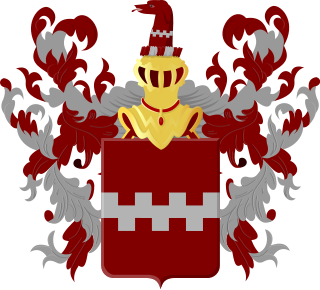 3
Van Hugenpoth is een Nederlandse, van oorsprong Duitse familie waarvan leden vanaf 1814 benoemd werden in de ridderschappen en dus tot de Nederlandse adel gingen behoren. Andere leden werden daarna...
3
Van Hugenpoth is een Nederlandse, van oorsprong Duitse familie waarvan leden vanaf 1814 benoemd werden in de ridderschappen en dus tot de Nederlandse adel gingen behoren. Andere leden werden daarna...
Jeremias van Riemsdijk
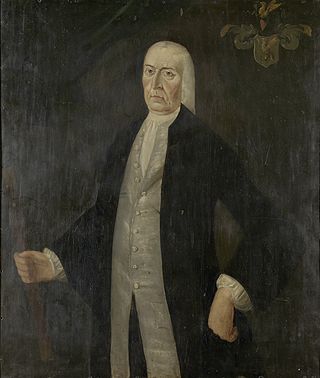 3
Jeremias van Riemsdijk was a Dutch colonial administrator who served as Governor-General of the Dutch East Indies from 1775 to 1777.
3
Jeremias van Riemsdijk was a Dutch colonial administrator who served as Governor-General of the Dutch East Indies from 1775 to 1777.
William Tell
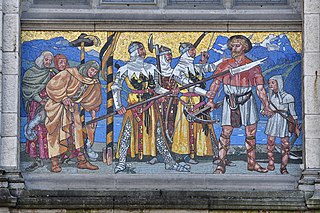 3
William Tell is a folk hero of Switzerland.
According to the legend, Tell was an expert mountain climber and marksman with a crossbow who assassinated Albrecht Gessler, a tyrannical reeve of the...
3
William Tell is a folk hero of Switzerland.
According to the legend, Tell was an expert mountain climber and marksman with a crossbow who assassinated Albrecht Gessler, a tyrannical reeve of the...
Jacques Gubbels
 3
J.M.W. (Jacques) Gubbels was een Nederlands politicus; eerst van de KVP en later partijloos.
3
J.M.W. (Jacques) Gubbels was een Nederlands politicus; eerst van de KVP en later partijloos.
Dominique Pire
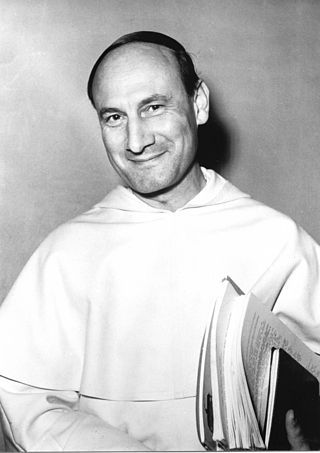 3
Dominique Pire, O.P. was a Belgian Dominican friar whose work helping refugees in post-World War II Europe saw him receive the Nobel Peace Prize in 1958. Pire delivered his Nobel lecture, entitled...
3
Dominique Pire, O.P. was a Belgian Dominican friar whose work helping refugees in post-World War II Europe saw him receive the Nobel Peace Prize in 1958. Pire delivered his Nobel lecture, entitled...
Nelly Bodenheim
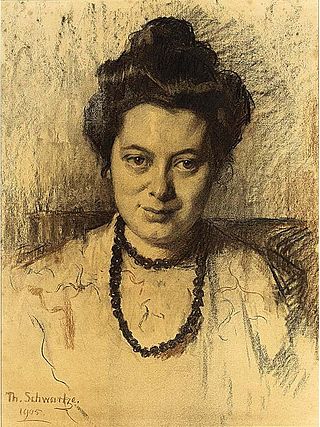 3
Nelly Bodenheim or Johanna Cornelia Hermana Van Bodenheim was a Dutch illustrator known for her silhouettes.
3
Nelly Bodenheim or Johanna Cornelia Hermana Van Bodenheim was a Dutch illustrator known for her silhouettes.
Gaius Julius Civilis
 3
Gaius Julius Civilis was the leader of the Batavian rebellion against the Romans in 69 AD. His nomen shows that he was made a Roman citizen by either Augustus or Caligula.
3
Gaius Julius Civilis was the leader of the Batavian rebellion against the Romans in 69 AD. His nomen shows that he was made a Roman citizen by either Augustus or Caligula.
Leendert Valstar
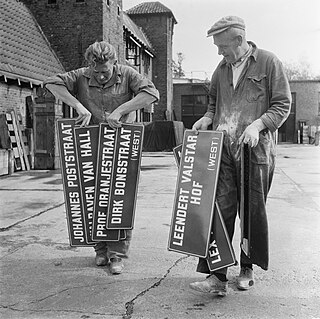 3
Leendert Marinus Valstar was een leidend Nederlands verzetsstrijder in de Tweede Wereldoorlog en pleegde tientallen succesvolle overvallen en was medeoprichter van de Landelijke Knokploegen.
3
Leendert Marinus Valstar was een leidend Nederlands verzetsstrijder in de Tweede Wereldoorlog en pleegde tientallen succesvolle overvallen en was medeoprichter van de Landelijke Knokploegen.
Adriaan Metius
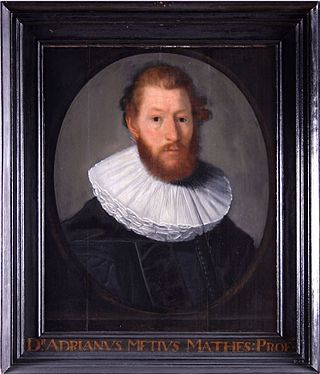 3
Adriaan Adriaanszoon, called Metius,, was a Dutch geometer and astronomer born in Alkmaar. The name "Metius" comes from the Dutch word meten ("measuring"), and therefore means something like...
3
Adriaan Adriaanszoon, called Metius,, was a Dutch geometer and astronomer born in Alkmaar. The name "Metius" comes from the Dutch word meten ("measuring"), and therefore means something like...
Claude Monet
 3
Oscar-Claude Monet was a French painter and founder of impressionist painting who is seen as a key precursor to modernism, especially in his attempts to paint nature as he perceived it. During his...
3
Oscar-Claude Monet was a French painter and founder of impressionist painting who is seen as a key precursor to modernism, especially in his attempts to paint nature as he perceived it. During his...
Frida Katz
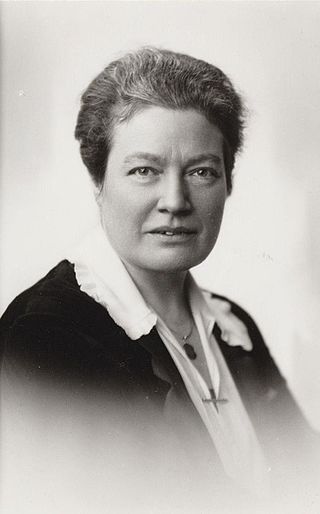 3
Cornelia Frida Katz, was a Dutch lawyer and Christian Historical Union politician. She was the first female member of Parliament to come from a Protestant Christian party (1922). She was also a...
3
Cornelia Frida Katz, was a Dutch lawyer and Christian Historical Union politician. She was the first female member of Parliament to come from a Protestant Christian party (1922). She was also a...
Hindericus Scheepstra
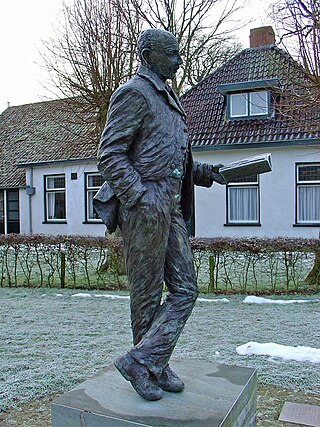 3
Hindericus Scheepstra was a Dutch writer best known for his children's book series Ot en Sien (1902).
3
Hindericus Scheepstra was a Dutch writer best known for his children's book series Ot en Sien (1902).
Titian
 3
Tiziano Vecelli or Vecellio, Latinized as Titianus, hence known in English as Titian, was an Italian (Venetian) Renaissance painter of Lombard origin, considered the most important member of the...
3
Tiziano Vecelli or Vecellio, Latinized as Titianus, hence known in English as Titian, was an Italian (Venetian) Renaissance painter of Lombard origin, considered the most important member of the...
Thomas Ainsworth
 3
Thomas Ainsworth (1795–1841) was an Englishman and the founding father of Nijverdal, a small town in the Netherlands, during the 19th century. He laid the basis for the Royal Steam Weaving Mill (KSW)...
3
Thomas Ainsworth (1795–1841) was an Englishman and the founding father of Nijverdal, a small town in the Netherlands, during the 19th century. He laid the basis for the Royal Steam Weaving Mill (KSW)...
Eduard Flipse
 3
Eduard Flipse was a Dutch conductor and composer, the son of Cornelis Flipse and Geertje Kruis. He was noted as a champion of the music of Dutch composers, such as Léon Orthel. He prepared the chorus...
3
Eduard Flipse was a Dutch conductor and composer, the son of Cornelis Flipse and Geertje Kruis. He was noted as a champion of the music of Dutch composers, such as Léon Orthel. He prepared the chorus...
Adam Smith
 3
Adam Smith was a Scottish economist and philosopher who was a pioneer in the thinking of political economy and key figure during the Scottish Enlightenment. Seen by some as "The Father of Economics"...
3
Adam Smith was a Scottish economist and philosopher who was a pioneer in the thinking of political economy and key figure during the Scottish Enlightenment. Seen by some as "The Father of Economics"...
Cornelis Floris de Vriendt
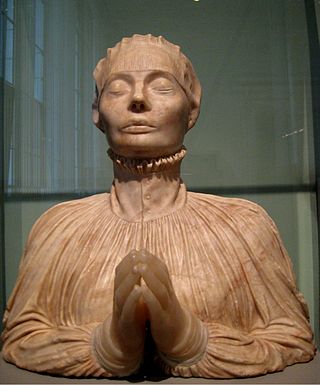 3
Cornelis Floris or Cornelis (II) Floris De Vriendt was a Flemish sculptor, architect, draughtsman, medallist and designer of prints and luxury. He operated a large workshop in Antwerp from which he...
3
Cornelis Floris or Cornelis (II) Floris De Vriendt was a Flemish sculptor, architect, draughtsman, medallist and designer of prints and luxury. He operated a large workshop in Antwerp from which he...
Chico Mendes
 3
Francisco Alves Mendes Filho, better known as Chico Mendes, was a Brazilian rubber tapper, trade union leader and environmentalist. He fought to preserve the Amazon rainforest, and advocated for the...
3
Francisco Alves Mendes Filho, better known as Chico Mendes, was a Brazilian rubber tapper, trade union leader and environmentalist. He fought to preserve the Amazon rainforest, and advocated for the...
Louis Raemaekers
 3
Louis Raemaekers was a Dutch painter, caricaturist and editorial cartoonist for the Amsterdam newspaper De Telegraaf during World War I, noted for his anti-German stance.
3
Louis Raemaekers was a Dutch painter, caricaturist and editorial cartoonist for the Amsterdam newspaper De Telegraaf during World War I, noted for his anti-German stance.
Hendrick van Berckenrode
 3
Hendrick van Berckenrode, was a Dutch Golden Age mayor of Haarlem.
3
Hendrick van Berckenrode, was a Dutch Golden Age mayor of Haarlem.
Plautus
 3
Titus Maccius Plautus was a Roman playwright of the Old Latin period. His comedies are the earliest Latin literary works to have survived in their entirety. He wrote Palliata comoedia, the genre...
3
Titus Maccius Plautus was a Roman playwright of the Old Latin period. His comedies are the earliest Latin literary works to have survived in their entirety. He wrote Palliata comoedia, the genre...
Willem Claesz. Heda
 3
Willem Claeszoon Heda was a Dutch Golden Age artist from the city of Haarlem devoted exclusively to the painting of still life. He is known for his innovation of the late breakfast genre of still...
3
Willem Claeszoon Heda was a Dutch Golden Age artist from the city of Haarlem devoted exclusively to the painting of still life. He is known for his innovation of the late breakfast genre of still...
Emanuel Mendes da Costa
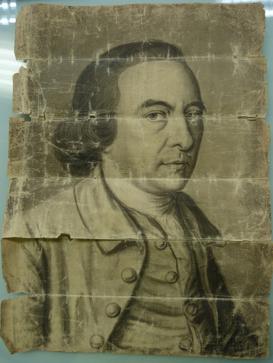 3
Emanuel Mendes da Costa was an English botanist, naturalist, philosopher, and collector of valuable notes and of manuscripts, and of anecdotes of the literati. Da Costa became infamous for embezzling...
3
Emanuel Mendes da Costa was an English botanist, naturalist, philosopher, and collector of valuable notes and of manuscripts, and of anecdotes of the literati. Da Costa became infamous for embezzling...
Job (biblical figure)
 3
Job is the central figure of the Book of Job in the Bible. In rabbinical literature, Job is called one of the prophets of the Gentiles. In Islam, Job is also considered a prophet.
3
Job is the central figure of the Book of Job in the Bible. In rabbinical literature, Job is called one of the prophets of the Gentiles. In Islam, Job is also considered a prophet.
Fritz Conijn
 3
Fritz Gerhard Marie Conijn was een Nederlands verzetsstrijder tijdens de Tweede Wereldoorlog.
3
Fritz Gerhard Marie Conijn was een Nederlands verzetsstrijder tijdens de Tweede Wereldoorlog.
Frans Duwaer
 3
Franciscus (Frans) Duwaer was directeur van een drukkerij in Amsterdam. Hij zat in het verzet tijdens de Tweede Wereldoorlog.
3
Franciscus (Frans) Duwaer was directeur van een drukkerij in Amsterdam. Hij zat in het verzet tijdens de Tweede Wereldoorlog.
Saint Eligius
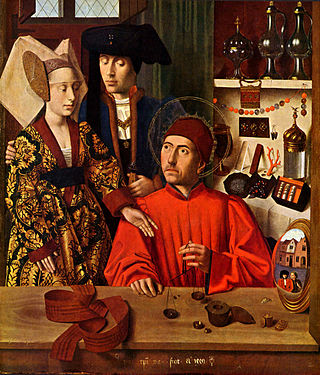 3
Eligius, venerated as Saint Eligius, was a Frankish goldsmith, courtier, and bishop who was chief counsellor to Dagobert I and later Bishop of Noyon–Tournai. His deeds were recorded in Vita Sancti...
3
Eligius, venerated as Saint Eligius, was a Frankish goldsmith, courtier, and bishop who was chief counsellor to Dagobert I and later Bishop of Noyon–Tournai. His deeds were recorded in Vita Sancti...
Quirinus
 3
In Roman mythology and religion, Quirinus is an early god of the Roman state. In Augustan Rome, Quirinus was also an epithet of Janus, as Janus Quirinus.
3
In Roman mythology and religion, Quirinus is an early god of the Roman state. In Augustan Rome, Quirinus was also an epithet of Janus, as Janus Quirinus.
August Vermeylen
 3
August Vermeylen was a Belgian writer and literature critic. In 1893 he founded the literary journal Van Nu en Straks. He studied history at the Free University of Brussels (ULB), and became a...
3
August Vermeylen was a Belgian writer and literature critic. In 1893 he founded the literary journal Van Nu en Straks. He studied history at the Free University of Brussels (ULB), and became a...
Schenck van Nijdeggen
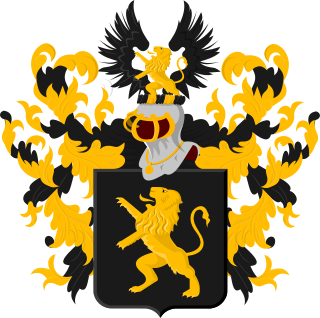 3
De familie Schenck van Nijdeggen was een adellijke familie in Blerick en bewoonde van 1569 tot 1674 het kasteel Boerlo, dat ongeveer stond op de plek waar nu het industrieterrein Groot Boller ligt.
3
De familie Schenck van Nijdeggen was een adellijke familie in Blerick en bewoonde van 1569 tot 1674 het kasteel Boerlo, dat ongeveer stond op de plek waar nu het industrieterrein Groot Boller ligt.
Anna Barbara van Meerten-Schilperoort
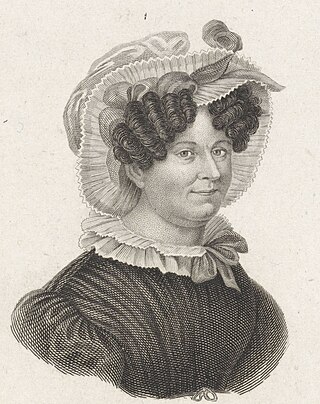 3
Anna Barbara van Meerten-Schilperoort, was a Dutch women's rights activist.
3
Anna Barbara van Meerten-Schilperoort, was a Dutch women's rights activist.
Audrey Hepburn
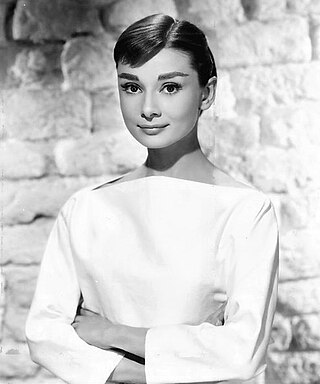 3
Audrey Kathleen Hepburn was a British actress. Recognised as a film and fashion icon, she was ranked by the American Film Institute as the third-greatest female screen legend from the Classical...
3
Audrey Kathleen Hepburn was a British actress. Recognised as a film and fashion icon, she was ranked by the American Film Institute as the third-greatest female screen legend from the Classical...
Alphonse Olterdissen
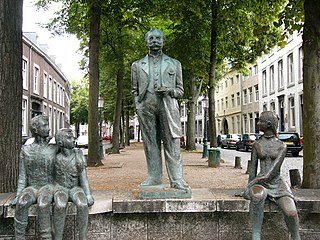 3
Alphonse (Alfons) Olterdissen was a Dutch writer, poet and composer who wrote extensively in the Maastrichtian dialect. The final stanza of his opera Trijn de Begijn eventually became the local...
3
Alphonse (Alfons) Olterdissen was a Dutch writer, poet and composer who wrote extensively in the Maastrichtian dialect. The final stanza of his opera Trijn de Begijn eventually became the local...
Gerard Boedijn
 3
Gerard (Gerardus) Hendrik Boedijn was een Nederlands componist, wiens grote verdienste was dat hij "authentieke" literatuur schreef voor harmonie- en fanfare-orkesten. Hij publiceerde zijn werken ook...
3
Gerard (Gerardus) Hendrik Boedijn was een Nederlands componist, wiens grote verdienste was dat hij "authentieke" literatuur schreef voor harmonie- en fanfare-orkesten. Hij publiceerde zijn werken ook...
Diederik Louis van Brakell tot den Brakell
 3
Diederik Louis baron van Brakell tot den Brakell, heer van Vredestein en Over- en Nederasselt was een Nederlandse advocaat, rechter en politicus voor de Liberalen.
3
Diederik Louis baron van Brakell tot den Brakell, heer van Vredestein en Over- en Nederasselt was een Nederlandse advocaat, rechter en politicus voor de Liberalen.
Jan de Beijer
 3
Jan de Beijer, also given as Jan de Beyer, was a Dutch draughtsman and painter known for this drawings of towns and buildings in the present-day countries of the Netherlands, Belgium and Germany. In...
3
Jan de Beijer, also given as Jan de Beyer, was a Dutch draughtsman and painter known for this drawings of towns and buildings in the present-day countries of the Netherlands, Belgium and Germany. In...
Tjerk Hiddes de Vries
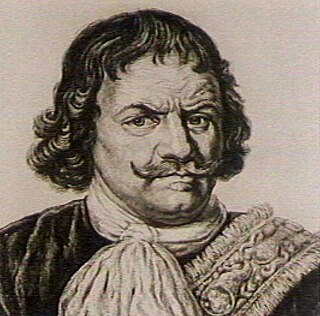 3
Tjerk Hiddes de Vries was a naval hero and Dutch admiral from the seventeenth century. The French, who could not pronounce his name, called him Kiërkides. His name was also given as Tsjerk, Tierck or...
3
Tjerk Hiddes de Vries was a naval hero and Dutch admiral from the seventeenth century. The French, who could not pronounce his name, called him Kiërkides. His name was also given as Tsjerk, Tierck or...
Duke of Brabant
 3
The Duke of Brabant was the ruler of the Duchy of Brabant since 1183/1184. The title was created by the Holy Roman Emperor Frederick Barbarossa in favor of Henry I of the House of Reginar, son of...
3
The Duke of Brabant was the ruler of the Duchy of Brabant since 1183/1184. The title was created by the Holy Roman Emperor Frederick Barbarossa in favor of Henry I of the House of Reginar, son of...
Edith Stein
 3
Edith Stein, OCD was a German Jewish philosopher who converted to Catholicism and became a Discalced Carmelite nun. She is canonized as a martyr and saint of the Catholic Church; she is also one of...
3
Edith Stein, OCD was a German Jewish philosopher who converted to Catholicism and became a Discalced Carmelite nun. She is canonized as a martyr and saint of the Catholic Church; she is also one of...
John Franklin
 3
Sir John Franklin was a British Royal Navy officer and Arctic explorer. After serving in wars against Napoleonic France and the United States, he led two expeditions into the Canadian Arctic and...
3
Sir John Franklin was a British Royal Navy officer and Arctic explorer. After serving in wars against Napoleonic France and the United States, he led two expeditions into the Canadian Arctic and...
Frans Frencken
 3
Monseigneur Franciscus Bernardus Josephus Frencken was een rooms-katholieke geestelijke. Als priester vergaarde hij bekendheid door zijn inspanningen om het kerkelijke en sociaal-maatschappelijke...
3
Monseigneur Franciscus Bernardus Josephus Frencken was een rooms-katholieke geestelijke. Als priester vergaarde hij bekendheid door zijn inspanningen om het kerkelijke en sociaal-maatschappelijke...
Cornelis Gerardus Roos
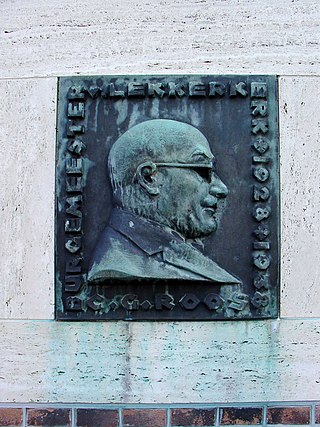 3
Cornelis Gerardus Roos was de burgemeester van Lekkerkerk van 1928 tot 1938. Zijn ambtsperiode werd gekenmerkt door levendigheid en veel activiteiten. Na zijn burgemeesterschap werd hij lid van...
3
Cornelis Gerardus Roos was de burgemeester van Lekkerkerk van 1928 tot 1938. Zijn ambtsperiode werd gekenmerkt door levendigheid en veel activiteiten. Na zijn burgemeesterschap werd hij lid van...
Bert Haanstra
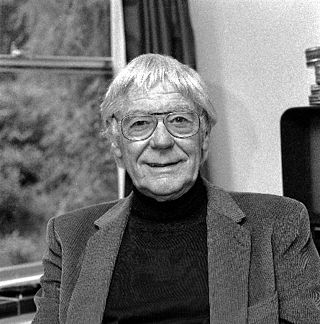 3
Albert Haanstra was a Dutch director of films and documentaries. His documentary Glass (1958) won the Academy Award for Documentary Short Subject in 1959. His feature film Fanfare (1958) was the most...
3
Albert Haanstra was a Dutch director of films and documentaries. His documentary Glass (1958) won the Academy Award for Documentary Short Subject in 1959. His feature film Fanfare (1958) was the most...
Vincent van den Heuvel
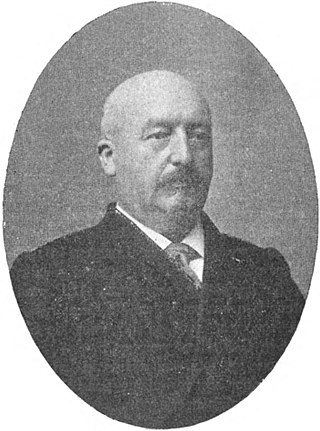 3
Vincentius Adrianus Maria (Vincent) van den Heuvel was een Nederlands fabrikant, politicus en bestuurder.
3
Vincentius Adrianus Maria (Vincent) van den Heuvel was een Nederlands fabrikant, politicus en bestuurder.
Michel de Klerk
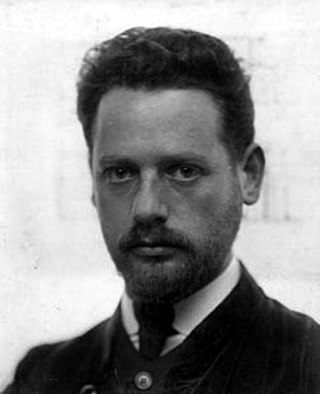 3
Michel de Klerk was a Dutch architect. Born to a Jewish family, he was one of the founding architects of the movement Amsterdam School
3
Michel de Klerk was a Dutch architect. Born to a Jewish family, he was one of the founding architects of the movement Amsterdam School
Philip Houben (politicus)
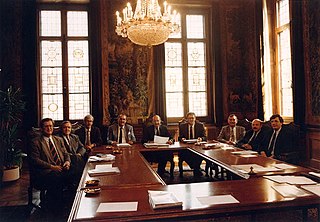 3
Philippus Josephus Ignatius Maria (Philip) Houben was een Nederlands burgemeester en bestuurder. Hij was onder andere burgemeester van Maastricht.
3
Philippus Josephus Ignatius Maria (Philip) Houben was een Nederlands burgemeester en bestuurder. Hij was onder andere burgemeester van Maastricht.
Jules de Corte
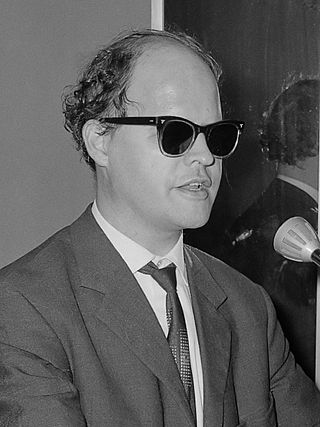 3
Julius "Jules" de Corte was probably one of the most famous blind singer-songwriters from the Netherlands.
3
Julius "Jules" de Corte was probably one of the most famous blind singer-songwriters from the Netherlands.
Doude van Troostwijk
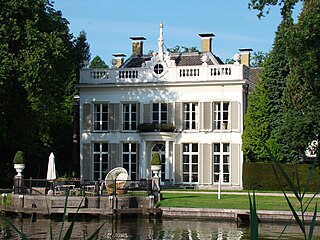 3
Doude van Troostwijk is een uitgestorven Nederlandse familie waarvan de familienaam nog voortleeft door naamswijziging in 1860 via matrimoniale lijn van een tak van de familie Van Beusekom; deze...
3
Doude van Troostwijk is een uitgestorven Nederlandse familie waarvan de familienaam nog voortleeft door naamswijziging in 1860 via matrimoniale lijn van een tak van de familie Van Beusekom; deze...
Jan Bijhouwer
 3
Jan Tijs Pieter Bijhouwer was een Nederlands plantensocioloog en tuin- en landschapsarchitect.
3
Jan Tijs Pieter Bijhouwer was een Nederlands plantensocioloog en tuin- en landschapsarchitect.
Pablo Neruda
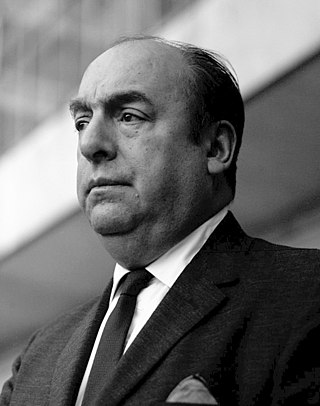 3
Pablo Neruda was a Chilean poet-diplomat and politician who won the 1971 Nobel Prize in Literature. Neruda became known as a poet when he was 13 years old and wrote in a variety of styles, including...
3
Pablo Neruda was a Chilean poet-diplomat and politician who won the 1971 Nobel Prize in Literature. Neruda became known as a poet when he was 13 years old and wrote in a variety of styles, including...
Rachel Ruysch
 3
Rachel Ruysch was a Dutch still-life painter from the Northern Netherlands. She specialized in flowers, inventing her own style and achieving international fame in her lifetime. Due to a long and...
3
Rachel Ruysch was a Dutch still-life painter from the Northern Netherlands. She specialized in flowers, inventing her own style and achieving international fame in her lifetime. Due to a long and...
Beatrix de Rijk
 3
Beatrix de Rijk (1883–1958) was a pioneering Dutch aviator. On receiving her pilot's licence from the Aéro-Club de France on 6 October 1911, she became the first Dutch woman pilot.
3
Beatrix de Rijk (1883–1958) was a pioneering Dutch aviator. On receiving her pilot's licence from the Aéro-Club de France on 6 October 1911, she became the first Dutch woman pilot.
Marius Antoon Reinalda
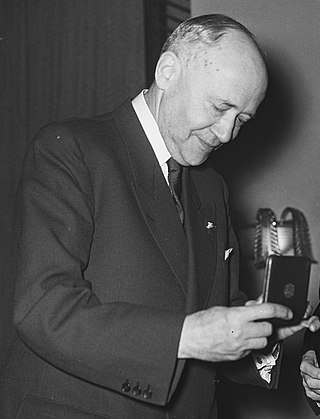 3
Marius Antoon Reinalda was een Nederlands politicus van de PvdA.
3
Marius Antoon Reinalda was een Nederlands politicus van de PvdA.
Rosalind Franklin
 3
Rosalind Elsie Franklin was a British chemist and X-ray crystallographer whose work was central to the understanding of the molecular structures of DNA, RNA, viruses, coal, and graphite. Although her...
3
Rosalind Elsie Franklin was a British chemist and X-ray crystallographer whose work was central to the understanding of the molecular structures of DNA, RNA, viruses, coal, and graphite. Although her...